












































We meet in a modernist house from the late 1940s and early 1950s. It is a family heirloom, full of unique items; every one of them remembers a time before World War II. Each could tell us fascinating stories that we rarely hear today.
The history of the house is no less turbulent than the fate of the BMWs gathered in the Bonaventura Classic Collection. Suffice it to say, because of a confluence of events, the family sold the house and the purchaser remodelled it, changing its shape completely and destroying its architectural style and beauty.
The founder of the Collection promised himself that the day would come when he would buy the house back. This is where his grandfather lived, this is where the BMW was once parked in the driveway, thanks to which you now hold this album in your hands. The promise he made has finally come through. Painstaking work undertaken to restore the previous form of the building has resulted in its present look – the same as its gifted architect intended in the 1940s. So, the house has once again become an elegant villa, worthy of having a conversation about dream cars in it.








Car collecting is a disease. It starts innocently enough with one thing - the fulfilment of a dream. The host-collector tells me a personal story about the rise of his fascination.
- In my case, first there was a specific idea: I wanted my grandfather’s car. It was a 1969 BMW 2000, which I liked very much. I was only a couple of years old in the early 1970s, but I remember that this car attracted so much attention, as if it were a space vehicle.
In early 1970s Poland, seeing a Fiat 125p was an event, and a new BMW caused a sensation wherever it appeared. I remember that it was a perfectly normal thing anywhere in Poland in that period.
- Wherever we stopped there were a high number of people gathering around the car. Today, cars do not attract such interest. I remember the questions: ‘Sir, what’s the speed it could reach?‘ and ‘Sir, how much does it pull?‘ People were convinced that if the speedometer was calibrated to 200 km/h, the car was really going that much. It was a 100-horsepower carburetted version that maxed out at 190 km/h.
Unfortunately, in 1973, Grandpa passed away, and his son, the Bonaventura Classic Collection owner’s uncle, inherited the BMW. A few years later, the uncle sold the BMW and bought a Fiat 126p. The BMW was too expensive to maintain especially as there were small children in the family - priorities had to change. Thus, all trace of that first BMW was inevitably lost.

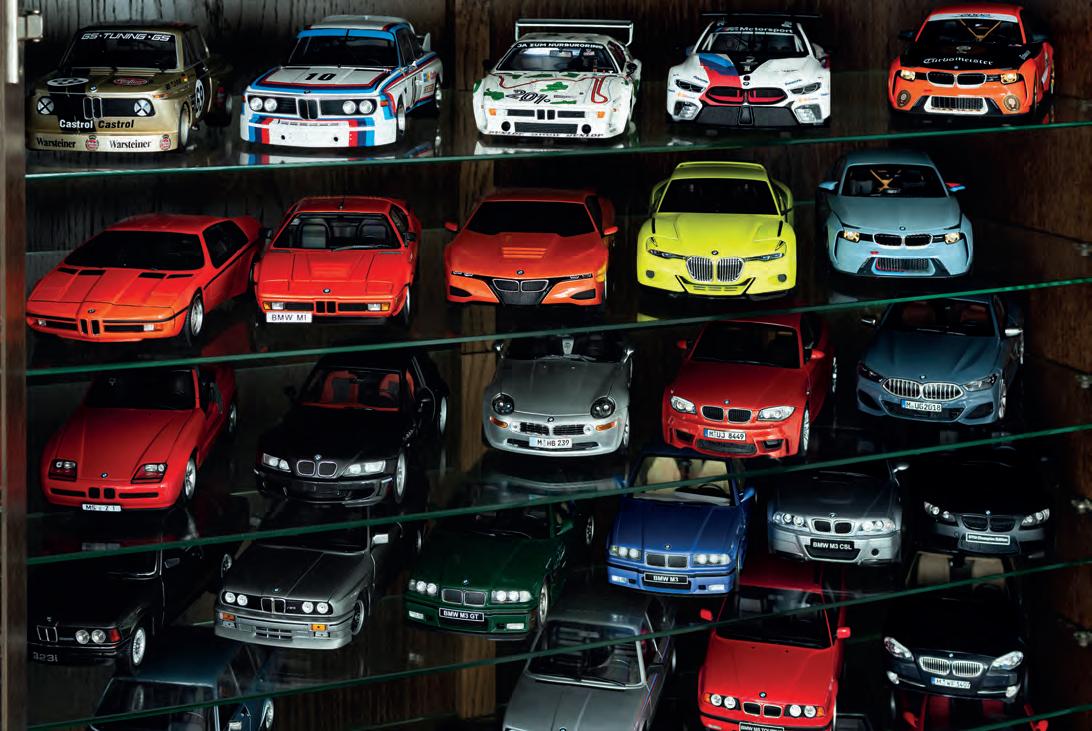
My grandfather was an enthusiastic car lover. A true pre-war self-driver. Before World War II, he used to ride a motorcycle from Warsaw to Vilnius on weekends. Five hundred kilometres on a pre-war motorcycle – it really is an achievement! Although he had a Fiat 518 company car, for private trips he used a motorcycle. In 1948 he bought a Lambretta, and then got his first BMW. It was a BMW 321 from 1938. In 1960, a law went into effect in Poland mandating the installation of turning lights. This model came from a time when they did not install such amenities. He said he would not chop his car and preferred to sell it. He sold the BMW and bought a five-year-old Fiat 1400 from an Italian embassy employee and drove it until he purchased the BMW 2000.
I remember a conversation with collector, Zbyszek Mikiciuk, who told me that the BMW 2000 is not that interesting. The BMW 6 Series, an E24 model, which would cost the same to maintain and repair, giving much more driving pleasure, is a much better choice. This convinced me. From the early 1990s I began to dream of getting a car of the BMW 6 Series. And after that there were further fascinations.
In 2014, however, I bought a 2000 BMW, just like the one my grandfather drove. The only difference is in the engine - here is a 130 hp unit, no longer carburetted, but injected. I imported it from France, it was in good condition, but I had to do the body work. After the overhaul, I took a picture with it next to the house. I have a framed photo of my grandfather standing next to his BMW parked in the same place. That is how the story came full circle and became the beginning of the Collection we present in this album.





It is not often in our life that we are successful in combining our passions with professional work. But Helmut Bannert succeeded in this feat.
In the past, motorsport drivers had to attain exceedingly elevated levels of technical and mechanical qualifications. Teams of mechanics and their assistants did not follow those taking part in rallies or car races (perhaps except for Formula 1). Nobody even thought of field repair services. The mobile workshops - equipped better than not just one of today’s authorised service stations were out of reach to them. In the 1980s, a driver and

his co-driver had to be skilled enough to prepare and service the vehicles they drove in competitions. One can hardly imagine a better school than start a race driving a car that you had constructed and then serviced yourself. If it is accompanied with passion and talent, the result means the heights of mechanical competence. Unique and increasingly rare knowledge in the modern world!
The Bannert family originates from Rattiborn in Lower Silesia (today’s Racibórz in Poland). The wheels of history forced the Bannerts to leave their centuries-old nest and move to distant Bavaria, where Helmut was born, long after World War II, in 1959.
He got acquainted with motorsport thanks to his instructor while learning the profession of a car mechatronics technician at a renowned Renault (!) showroom.
He then moved to the famous rally workshop of Peter Mattig in Hauzenberg. There, as a noticeably young man, he was solely responsible for the complete reconstruction of Opel models adapting them for rally sports. These were the legendary models: Ascona 400i Manta 400. Engines, gearboxes, chassis, and bodies –after years of practice he knew them all like the back of his hand.
So, no wonder that the Mattig’s rally cars, driven by internationally known stars, won so many victories. Their co-creator, Helmut Bannert was also behind the wheel.
Like other great drivers of that time, he himself achieved sporting successes, especially in rallies and mountain climbs. Beside the Opel cars mentioned, he was racing in a Renault Gordini, Alpine – this was his beginning and the first cars that enabled him to attain successes in motorsport. There were so many that listing them all exceeds the frame of this chapter and deserves a special study, but let us mention just a few:

RALLY

RALLY
It is also worth mentioning that also Helmut’s son, Patrick Bannert, continues the family tradition and has already won his first championships at local and allGerman rally competitions.
But despite the brilliantly developing sporting career, Helmut kept working professionally as a mechanical engineer. Such were those times; one could not make a living from motorsport alone. It was then that he started working for ZF Zahnradfabrik Passau, where he also had a possibility of further expanding his technical knowledge. As if that was not enough, after the working hours at ZF he provided car services in his own garage and under his own brand banner HB-Motorsport.de. He already lived in Neukirchen vorm Wald, near the beautiful Bavarian renaissance town of Passau. Within the framework of his own garage services he dealt with tuning, improving performance by retrofitting turbocharger installations, preparing cars for motorsport races, but also, with the lapse of time - he got involved in automotive classics repair work. And this is how the history of co-operation and friendship with the owner of the Bonaventura Classic Collection began in 2010. This co-operation is based on their common passion and love for the beautiful classic car designs, especially those with the white and blue chessboard sign. They both have profound respect for BMW engineers and strive to restore the jewels of the Collection to their original factory condition. So, willy-nilly, they compete with the quality of work of BMW Klassik Munich – and are at least equal to them. Anyway, BMW itself entrusted Helmut’s small garage workshop with production of cardan shafts made of light sinters used in BMW-Sauber Formula 1 racing cars... this proves the reputation of Helmut’s small workshop whose fame reached BMW AG itself. CASTROL










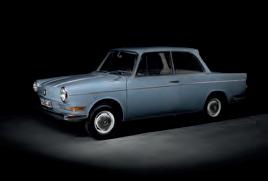

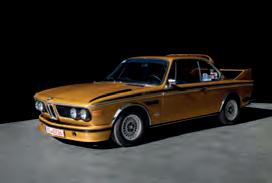
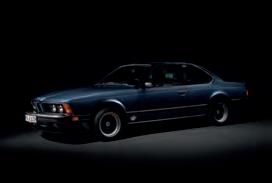
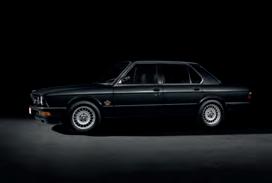




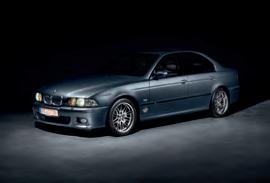

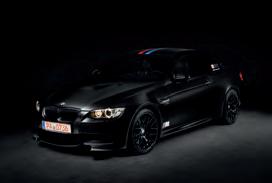

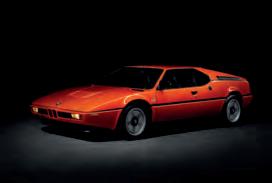

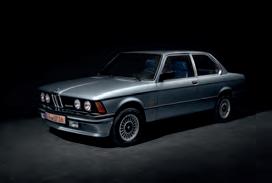




















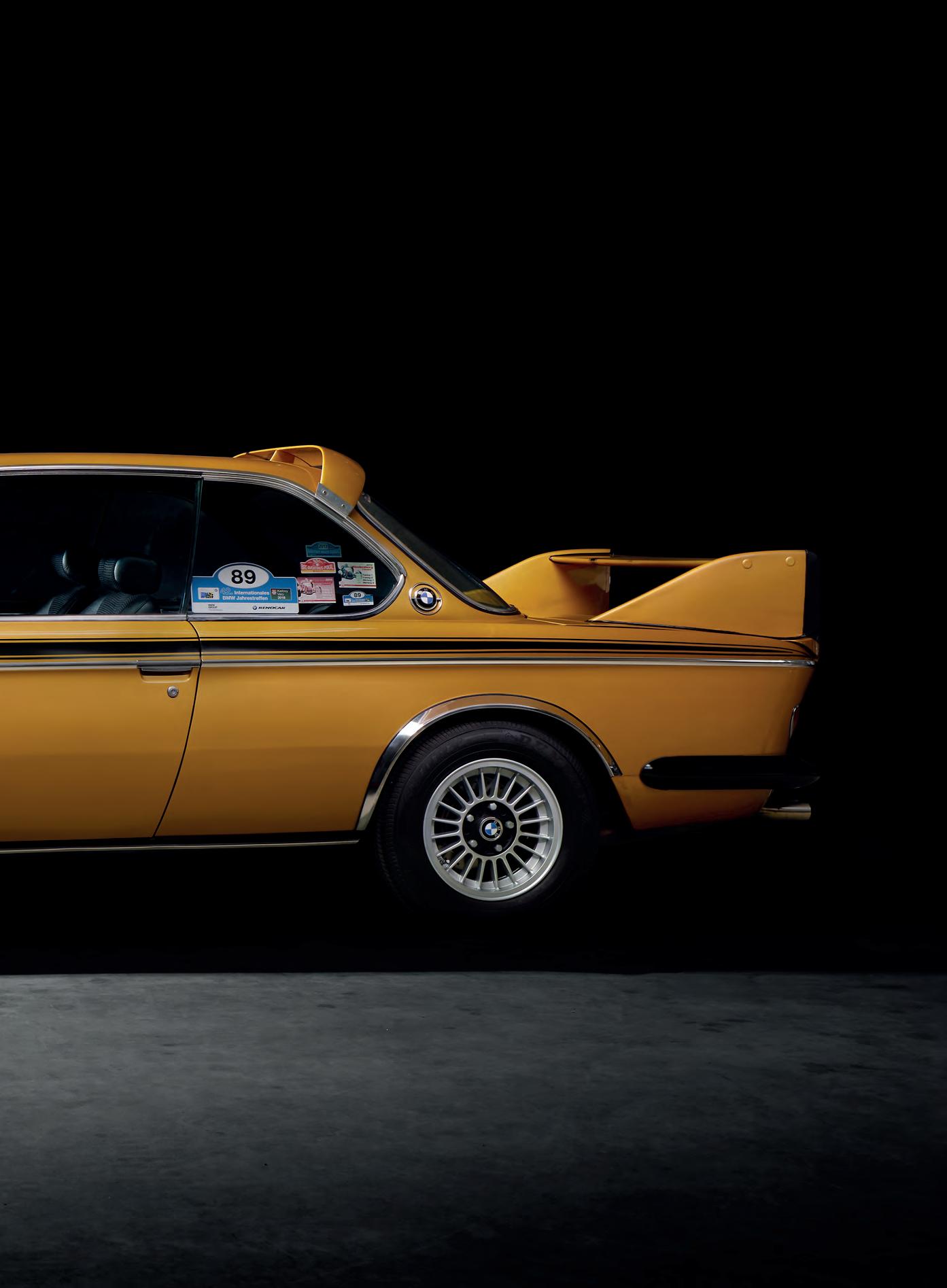





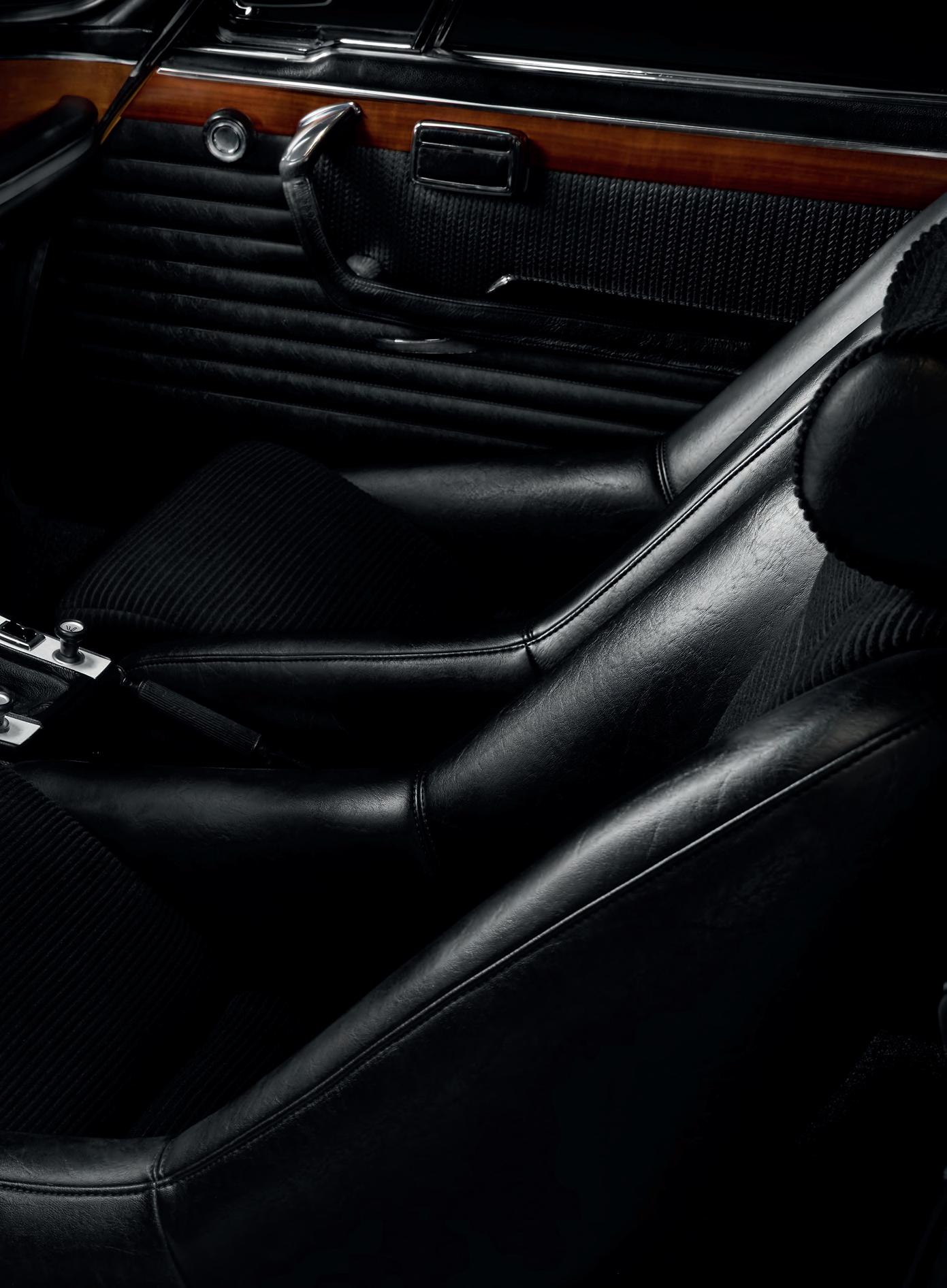





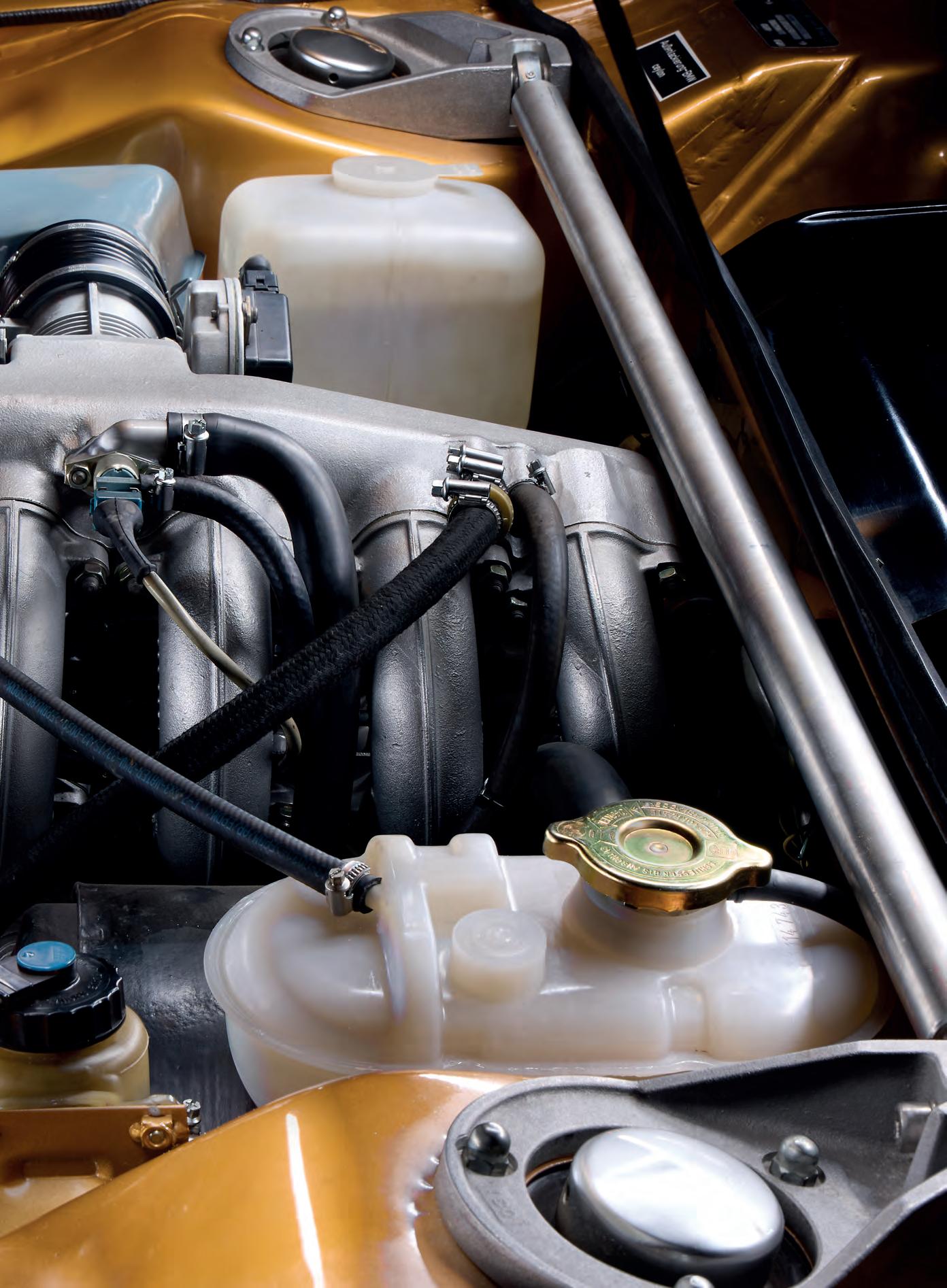




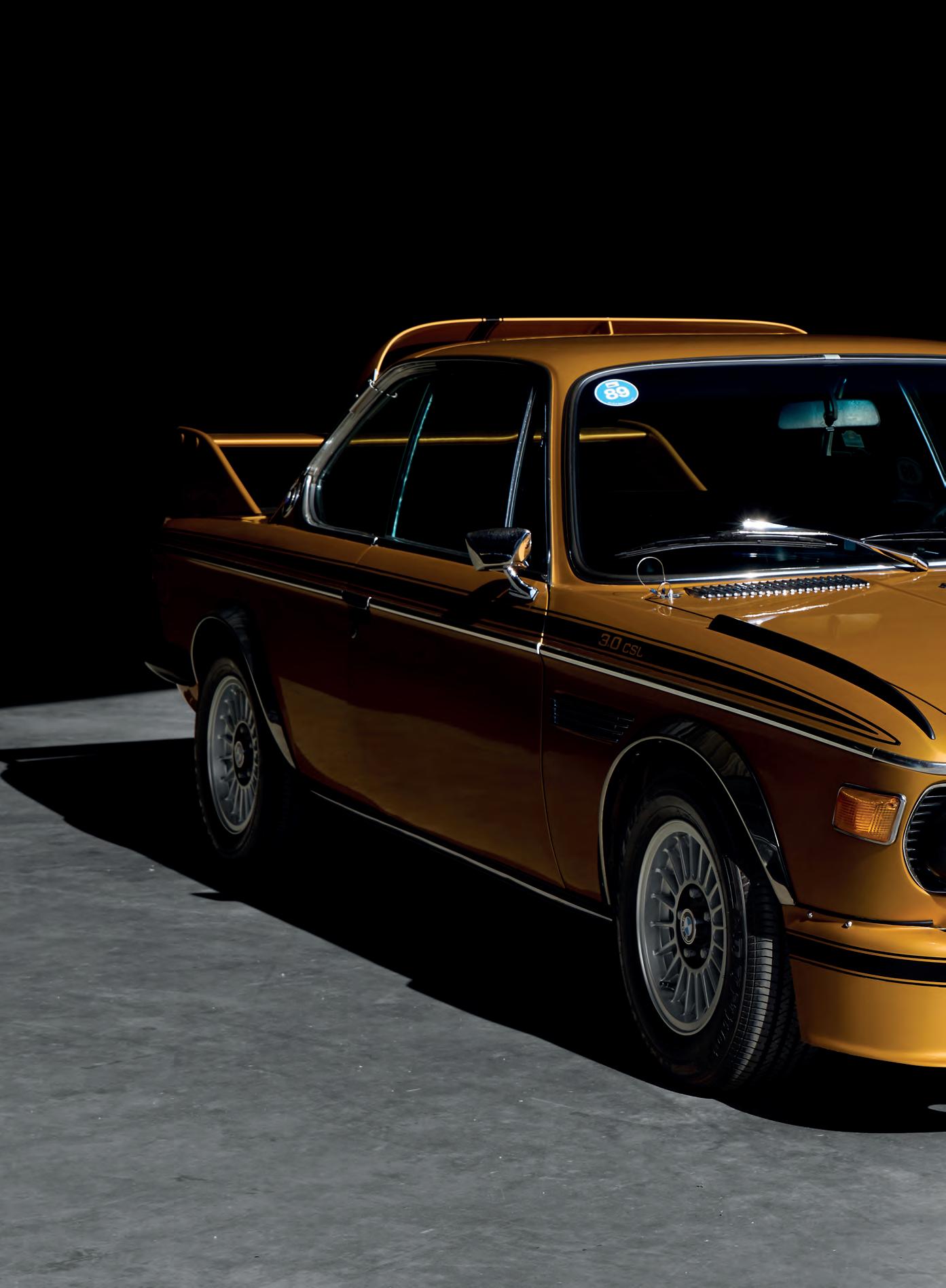
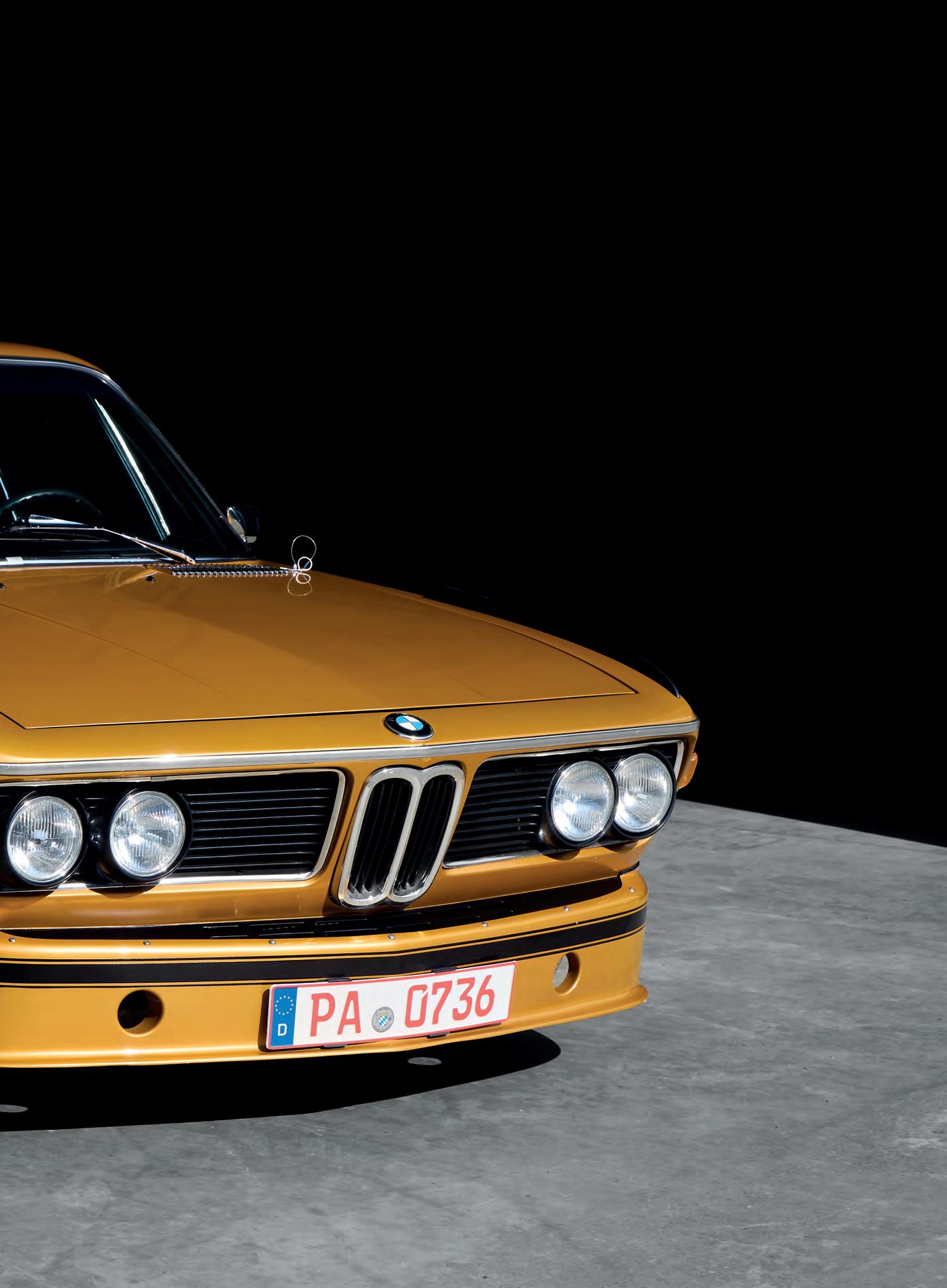
















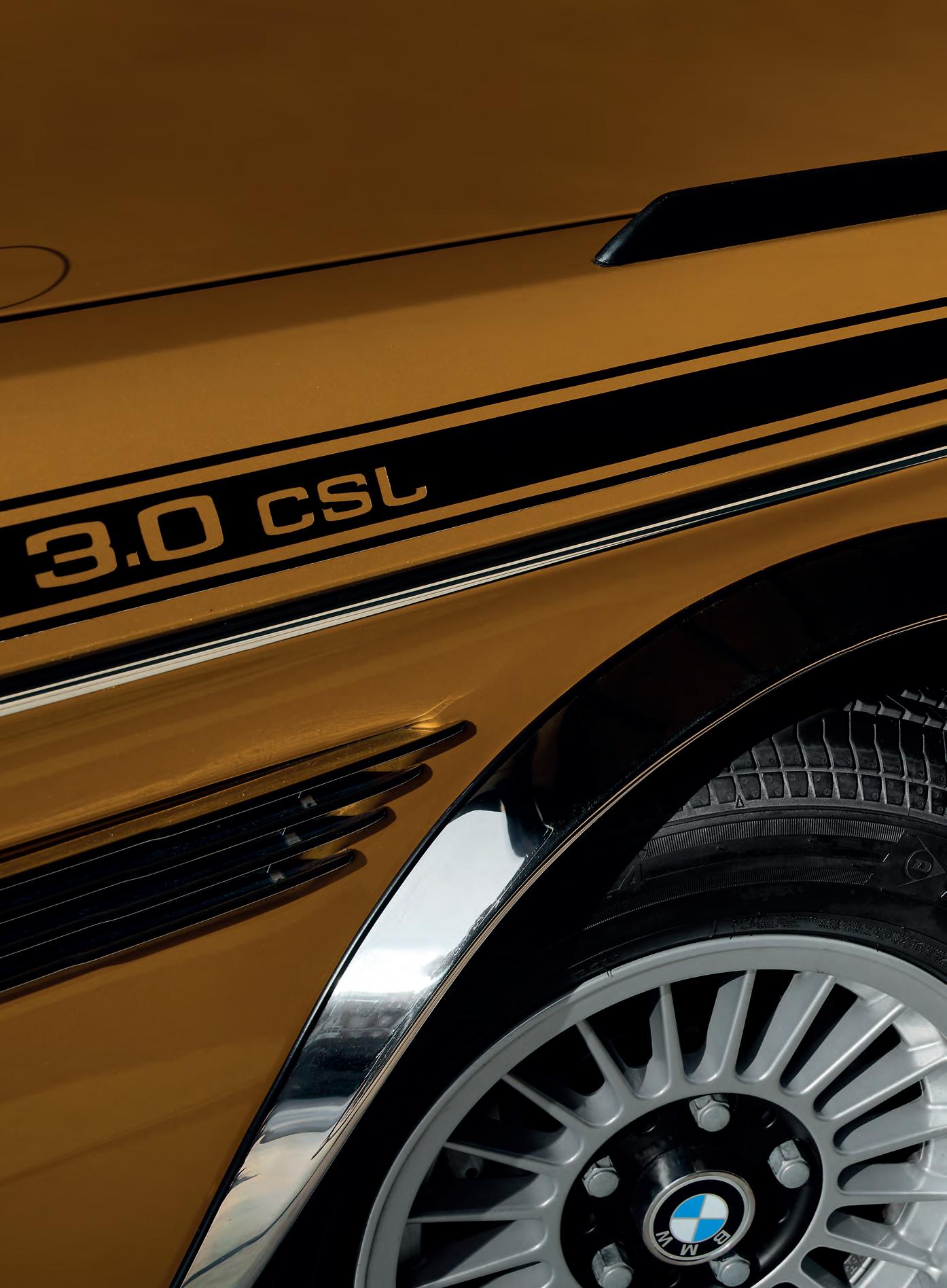
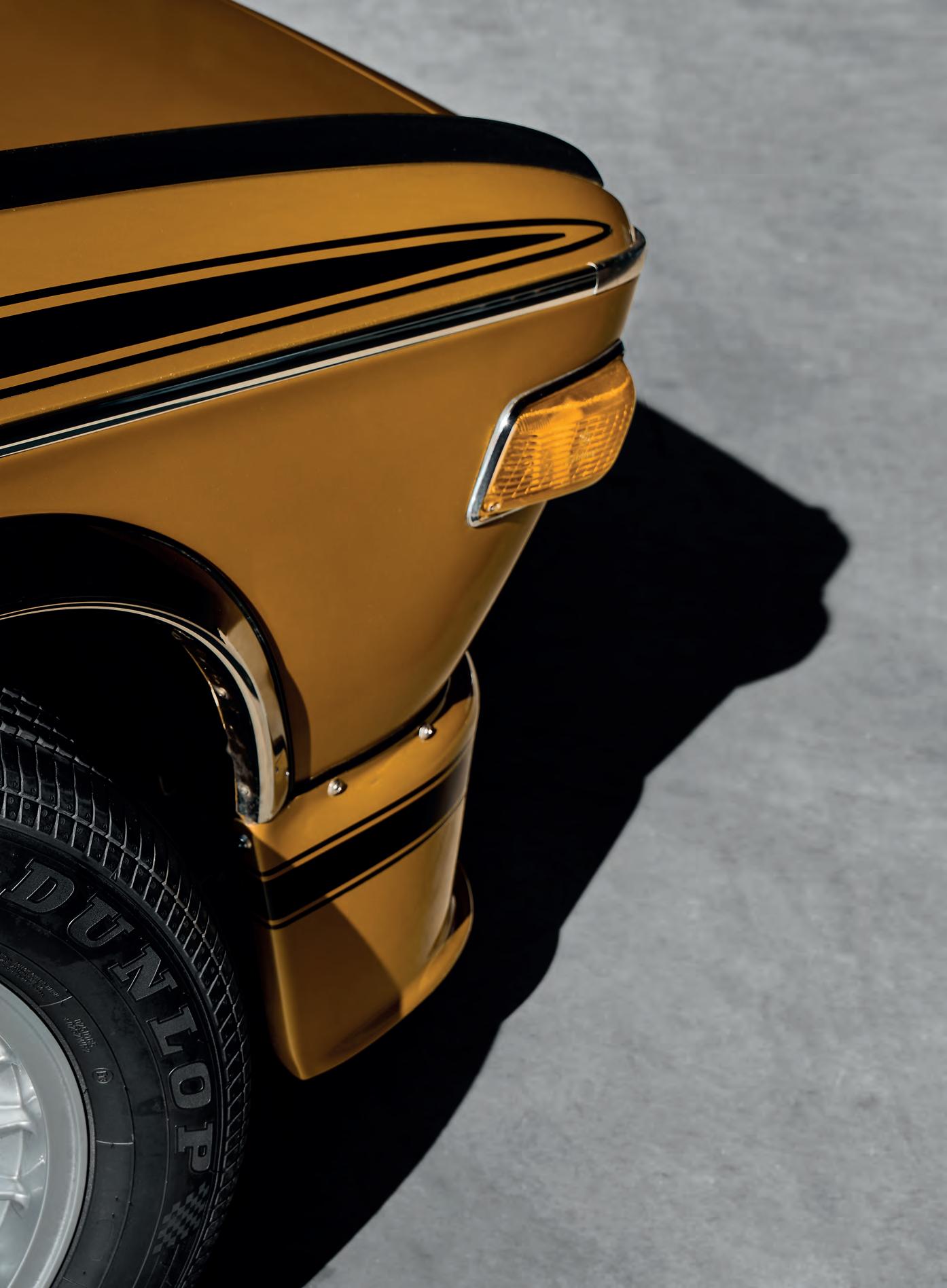




- It is an unbelievable car. I love driving it.
Is there anything better than the BMW 3.0 CSL? Yes!
A BMW 3.0 CSL adorned with a full sports package! It has everything we have come to expect from a car made for rolling tarmac. So, we have good acceleration, a manual gearbox and lightweight thin glass windows that crank open. We do not have interior soundproofing, because a car like this must be light, and if it is noisy inside on the way that is even better.
The phenomenal gold coupe is the first word of the now legendary BMW Motorsport. They created it before the M Series (or even the idea of it) had time to be born. ‘Slimming down’ everything superfluous helped improve acceleration to a speed of one hundred from 8.2 seconds to 7.3 seconds. A second, when hundredths of a second make all the difference, is a lot. Even more so if you want to have influence in the European Touring Car Championship (ETCC) and rub Ford’s nose in it. In the late 1960s and early 1970s it was the Ford Capri that dominated the ETCC, something BMW was unwilling (or even unable) to look at calmly. In response, an extreme version of the E9 model went on sale, and later - onto the track. Jochen Neerpasch and Martin Braungart, two of the most important creators of Ford’s sporting success, were responsible for its preparation. So, they created a BMW at the price of the Porsche 911. This was, however, not enough. The Capri was still powerful and easier to drive. A special aerodynamic package was a way to improve grip and performance. Armed with it, the 3.0 CSL earned the nickname ‘Batmobile’. The engineers’ efforts paid off and the Batmobile climbed to the top of the sporting charts. A little more about the car itself? This is the first M.
When talking about the three-litre CSL, it is impossible not to mention its roots. Before it appeared, the world saw the phenomenal 2800 CS model in 1968. The BMW 2800 CS owes its beauty to the designers, but also to Karmann, the company that undertook the body manufacturing. It was the bodywork we know from the BMW 2000 CS but modified and livened up by lengthening the bonnet and redesigning
the front apron. In 1971, the BMW 3.0 CS and BMW 3.0 CSi arrived at showrooms just months apart. Visually, they were almost identical to the 2800 CS, the distinguishing secret being a larger engine and all-wheel disc brakes.
The lightweight sports coupe that is the 3.0 CSL was, in simple terms, a development of the 3.0 CS. The CSL is short for Coupe Sport Leichtbau. It debuted in May 1971 and initially had the same 180-horsepower carburetted engine, followed by a 200-hp unit with injection 3003 cc and then the 3154 cc engine.
The golden BMW in the photos was built on the 25th April 1973 and is one of the last non-Batmobile BMW CSLs. At any rate, which is what the body numbers indicate, the VIN here is slightly lower than those that fell on the copies with the aerodynamics package. If it is not a Batmobile, why does it look like one? The solution to the mystery lies in the unusual turn of the car’s fate.
The golden CSL presented in the photograph, unsold after leaving the factory, ended up in Italy as the property of BMW. In the meantime, it took on the robes of a Batmobile, prepared not by a home-grown tuner, but by the parent company from Bavaria. Eye-catching not only for its crazed image, but also for its cosmic price, it worked perfectly well as a decoration for one of the BMW showrooms in Milan.
The car remained Milan’s mascot until 1977. At that time, the Batmobile caught the interest of a BMW engineer living in Munich. He bought the unsold Batmobile offered to BMW AG employees at a reduced price, with the addition of a city package. This explains why the first documents with the first registration were not issued until four years after the vehicle left the factory. The engineer drove the racer for nine years. In 1986 he sold it to his neighbour, and so, the BMW ended up on the other side of the fence, where it served until 2014, the year it joined the Bonaventura Classic Collection.
At the time of purchase, the car was in working order and ready to drive. And - one may add - when it comes to provocative
speed, this car is a masterpiece. The Bonaventura Classic Collection has a rule: until they bring a car to perfection, it can only be used for normal driving. In this way, the CSL’s odometer has added an extra 20000 km. Fans of rare BMWs may be tearing their hair out right now. What do you mean, such a specimen belongs in the garage? The current owner completely disagrees with this approach and says:
- When I bought it, it had about 200000 km on it, but that does not matter. There are so few Batmobiles - each one has its own history, and it is the history that is more important. Low mileage is what counts with mass-market cars. Then it is what makes it stand out.
Eventually, however, the time came to restore the car. The entire process took five years. It involved stripping the vehicle down to its smallest components, replacing worn parts and taking care of the details.
In 1986, the Batmobile had reached the end of its youth. The second owner decided to modernise it a little. He installed large speakers, a digital radio, new alloy wheels and replaced the wooden interior components with others from… Mercedes. Years later, when selling the CSL, he explained: ’I drove it to the disco, and I wanted to make it appealing to the girls!’
We do not know whether the girls appreciated the upgrades. Certainly, the Bonaventura Classic Collection team did not. It became clear - the Batmobile had to regain its lost image.
Getting the original radio and wooden interior accents seemed not too difficult, but it was! The steering wheel, for example, is unobtainable, So, they purchased authentic BMW wooden elements quite quickly. A workshop in Poland successfully undertook refreshing of the details.
Another element requiring intervention was the seats. Their origin was unquestionable (they were factory Scheel seats), but someone had covered them with leather in the meantime.
It was impossible to obtain the original striped cloth. The solution was to buy Scheel seats from Porsche, also from 1973. They looked a bit different, but they made the upholstery of the same material, which was a real pain. Once the upholstery had been repositioned, the interior of the BMW again looked as it did in the early 1970s.
Why did they decide to replace the radio instead of simply removing it? We are talking about a car originally not equipped with anything. To solve the riddle, we must go back to when the car went to its first owner. It was then that he enriched its equipment with, among other things, a radio and electric window opener, i.e. to suit the CSI variety. We can reassure orthodox collectors: every removed factory part has safely survived to this day. Both the manual window lifters and the windows themselves lie quietly in the garage. This is because they made the original ones of lightweight plastic to reduce weight. The thin windows were not the only element whose job it was to slim down the car. The others were the bonnet and boot lid - made of aluminium. We should emphasise that every added amenity was the result of BMW’s efforts and was based exclusively on the company’s components. Due to the poor sales of the Batmobile, BMW begrudgingly accepted similar treatments.
One can explain the poor sales of the truly sporty vehicle quite easily. The CSI variety, better equipped and noticeably cheaper, was tempting in the showrooms. The CSL defended itself with superior performance, but this was not necessarily enough for everyone, especially as the model’s legend did not yet exist. Wealthy lovers of truly sporting experience preferred to buy a car from one of the brands more strongly associated with adrenaline, at a comparable price. Fortunately, not everyone did. The car on display is the first one of the 1300 BMW CSL and, at the same time, assembled by original sports air package BMW’s Batmobile. According to the German BMW Coupe-Club e.V., this is exactly the car that appeared in an Italian film, which should come as no surprise. The only thing that comes as a surprise is that it did not play a starring role in it.










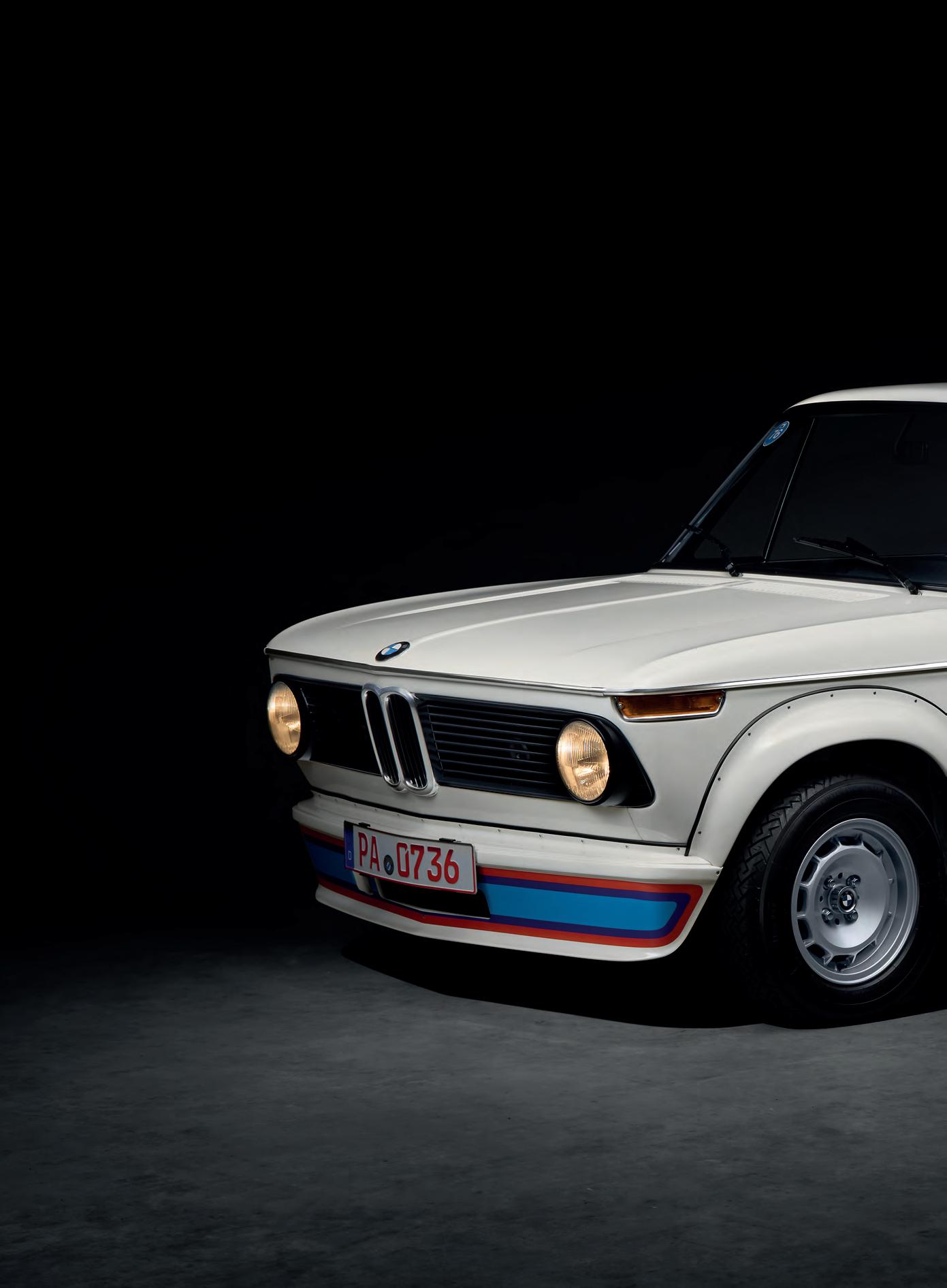
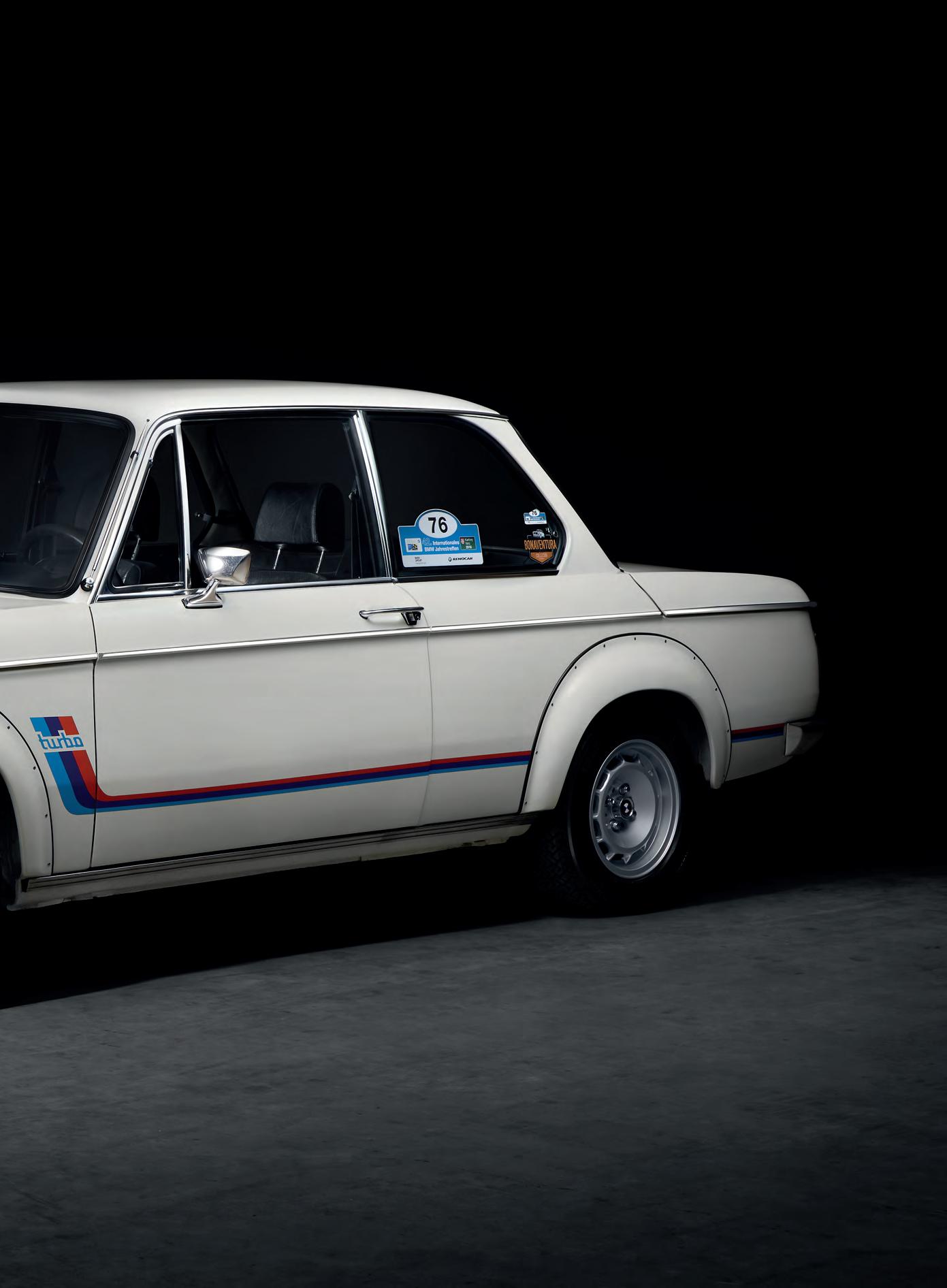











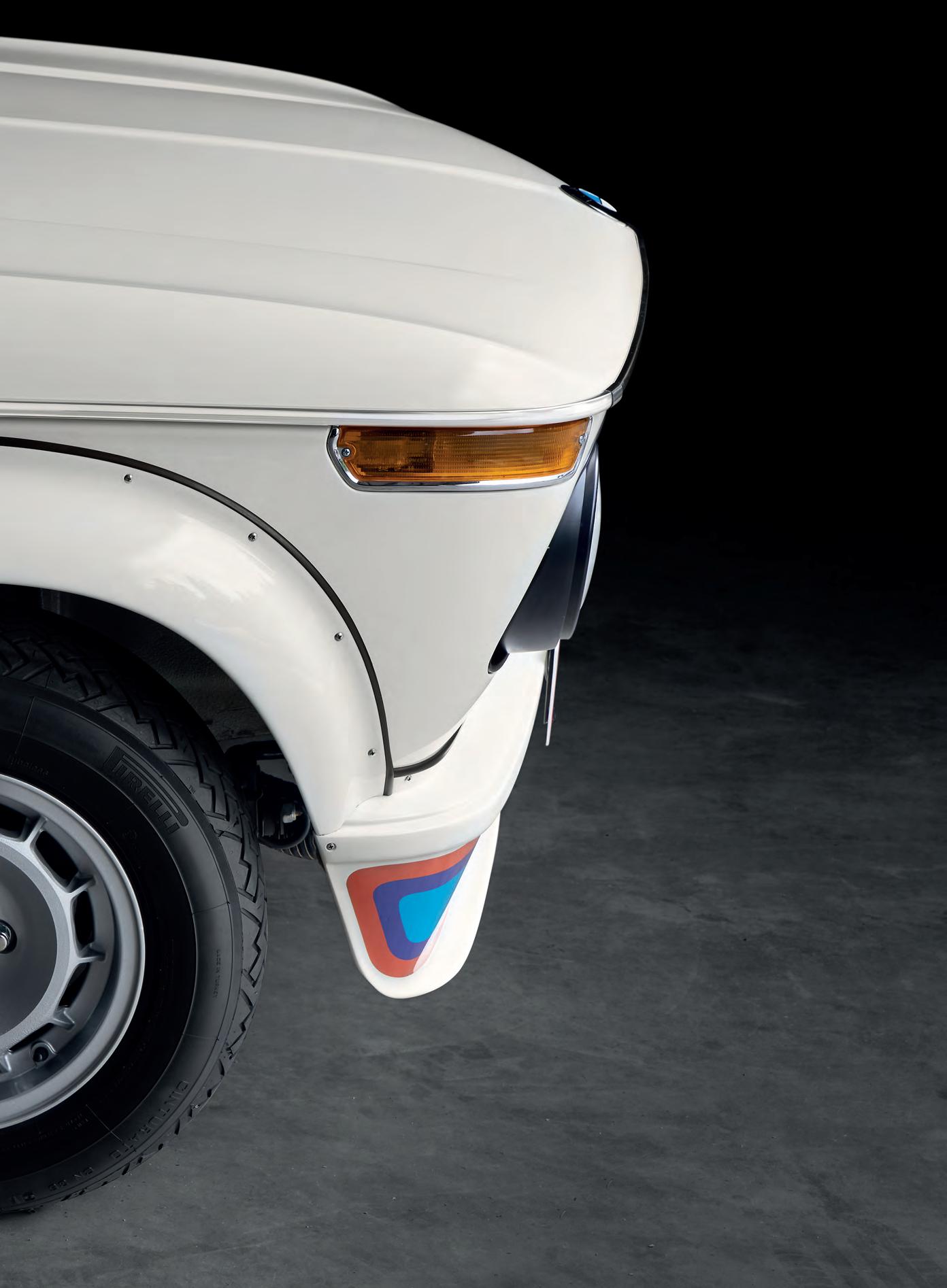











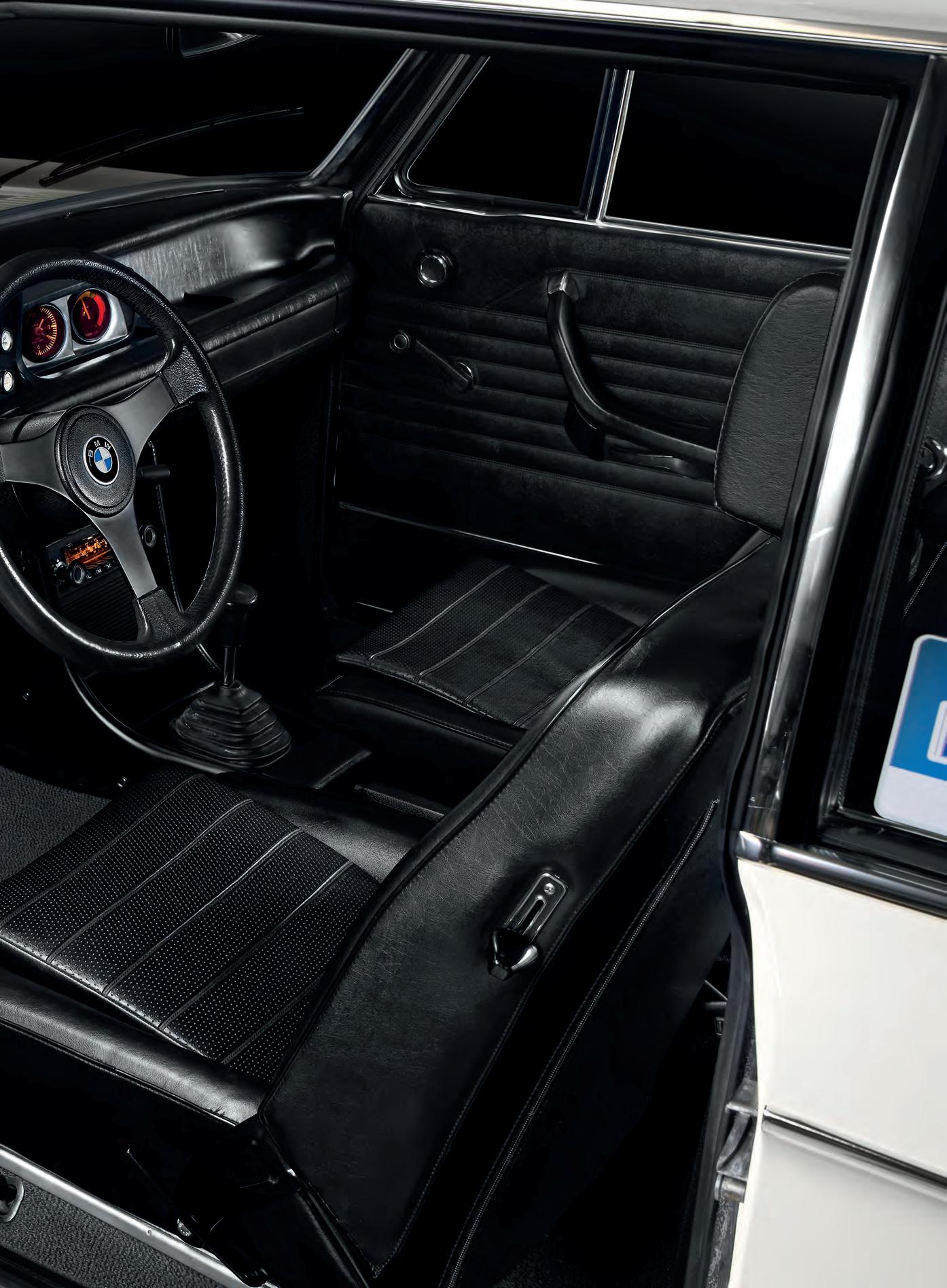





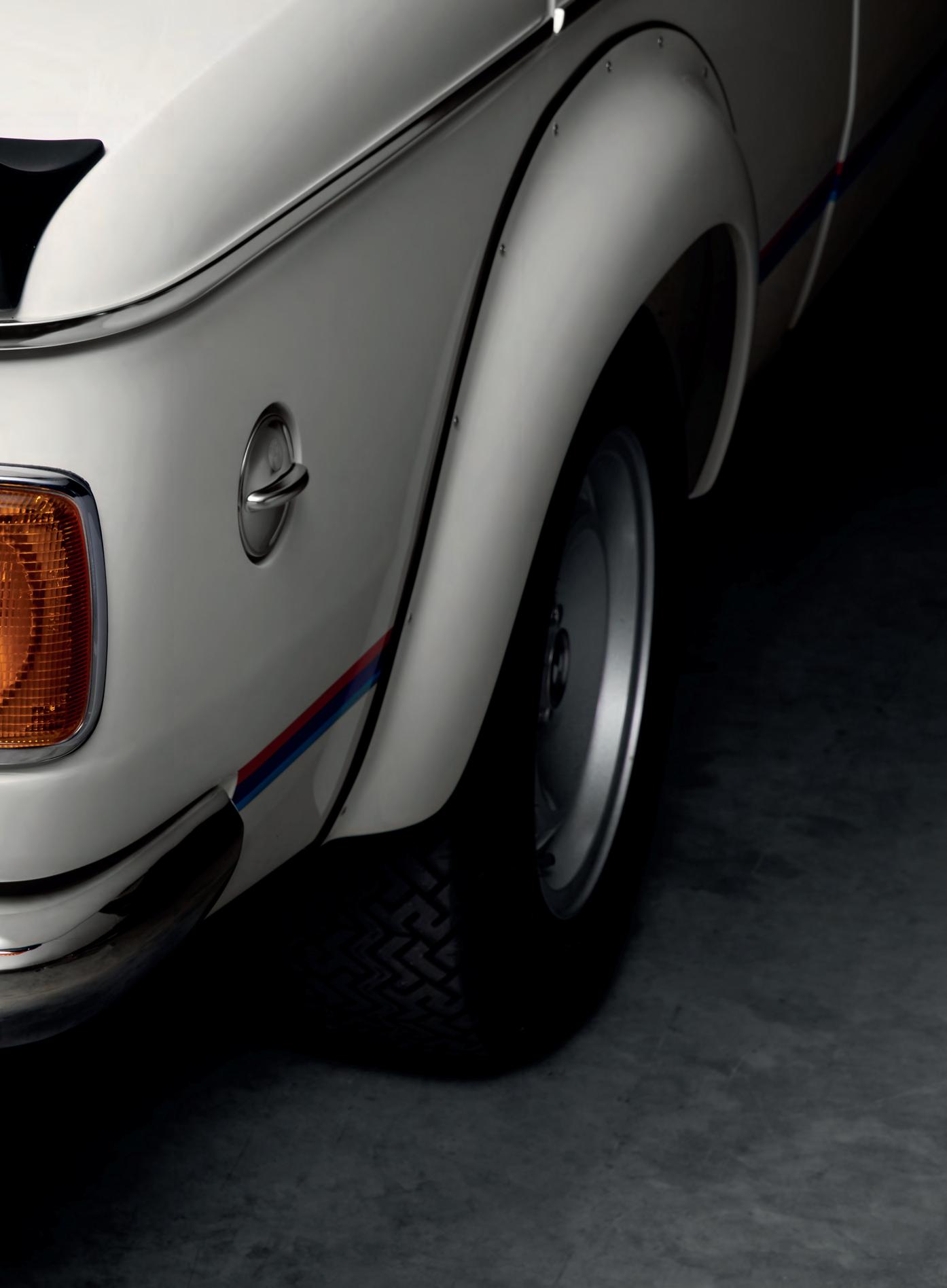










This car spent 30 years in a garage
If BMW needed anything in the 1960s, it was a new car model. The condition of the Bavarian brand was far from perfect. A completely new model was necessary to again show the world that the Munich engineers could achieve remarkable things and, of course, to attract buyers.
The launch of the car they associated their lofty expectations with took place in the year 1961, during the Frankfurt Motor

Show. They gave the vehicle an agnomen ‘Neue Klasse’, which was true and sounded good from a marketing perspective.
The ‘New Class’ appeared in showrooms at the beginning of 1962. One did not have to wait long to hear the popping of champagne corks at the BMW headquarters… sales statistics clearly indicated success.
You cannot offer a sought-after car in just one variant. So, in 1963 they developed a 90-horsepower 1800 and 1800ti models. The latter resulted from co-operation with Alpina,
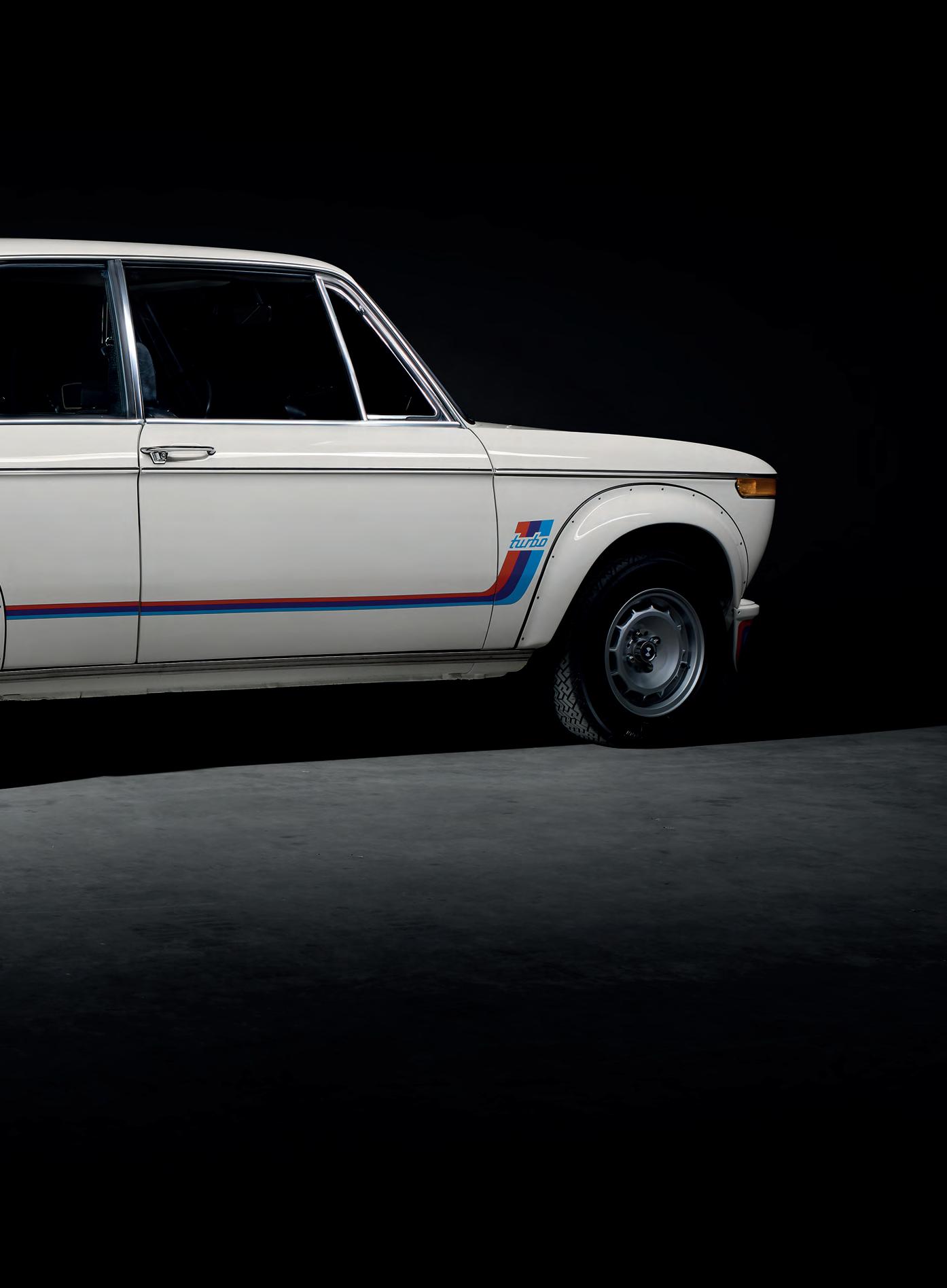
and its existence stemmed from the BMW’s keen sporting ambitions. The fact that sport is one of the most effective means of advertisement was an additional benefit. For homologation purposes they made two hundred copies of the 130-hp BMW 1800 TISA, which delivered a better than decent performance.
When talking about 2002 Turbo, it is worth mentioning the version with a two-door body marked with the index 02. When developing this version, experienced designers decided to change the axle and wheel spacing. They shortened the wheelbase by approximately 5-cm and narrowed the rear wheel track, making it the same as on the front axle. A 1600 cc unit was the basic engine. The two-door BMW debuted in early spring 1966. Both drivers and journalists believed a vehicle had just appeared with the potential to cause a stir on racetracks. We all know that appetite increases with eating. It was clear that it was still possible to achieve more, to make it better and faster. Subsequent tests gradually brought the engineers closer to the peak of possibilities, which turned out to be the creation of the hero of this chapter - the 2002 Turbo model.




BMW presented its 2002 Turbo in the fall of 1973 in Frankfurt. The enthusiastic reactions of potential buyers allowed us to assume that the Germans had created another sports bestseller. This would certainly have been the case had it not been for something that nobody could have predicted. In October, the Yom Kippur War broke out in the Middle East and although it only lasted for a brief time, it managed to cause quite a stir. After it ended, OPEC raised the price per barrel of oil from $3 USD to almost $12. Such an increase had drastic consequences: fuel prices skyrocketed, in several countries the authorities introduced rationing and there was even a ban on using cars on weekends. These were not favourable circumstances for a car that was not only called Turbo, but also looked like a turbo and drove like a turbo. It was really turbo.
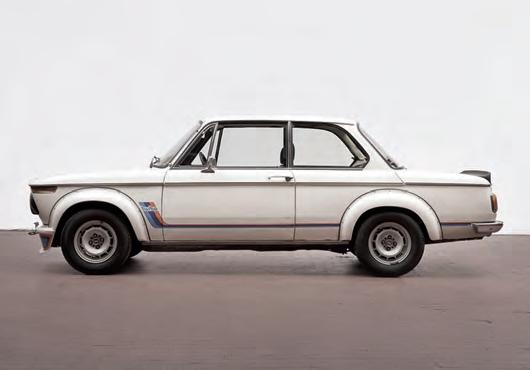
One could say that the start was bad, especially for a sports car. Fortunately, the poor beginning did not discourage the company’s management. Production of the BMW 2002 Turbo started at the turn of 1973 and 1974. Apart from the lack of inscriptions, the cars that finally went to the drivers did not differ from the pre-production models. Anyway, if the lack of stickers bothered someone, there was always the option of using those prepared by BMW Motorsport.
The circumstances were not favourable, even more so because the sporting 2002 vehicle was ostentatiously pugnacious. The twelve pre-production specimens made in 1973 had nicely stylised ‘turbo’ lettering. The letters - in the form of a mirror image - were on the front bumper spoilers, so that the driver in front only needed one glance in their mirror to have no doubts about giving way. This exertion brought publicity, but not of the sort that they had expected. BMW became the subject of political discussions at a prominent level. A debate in the Bundestag, the German parliament, is not a minor issue. They decided that, in the face of the fuel crisis, displaying this type of inscription was inappropriate. But, although it didn’t fit with political correctness, it had a strong appeal to the drivers. As a result, the company stopped placing the ‘turbo’ lettering on the bumpers of mass production cars, but many owners have added such inscriptions on their own.
The BMW 2002 Turbo was the first turbocharged car in Europe. We may only guess how its fate would have turned out if it had made its debut in milder circumstances. In the face of the increasingly widespread crisis, in July 1975 the BMW management decided to say goodbye to the 2002 Turbo. They made 1672 copies, including 12 pieces of the signalling series. After years, the car benefited from modest production output since such limitations made it one of the most unique and sought-after BMW models, the ones that suit the Bonaventura Classic Collection extremely well.

The search for the car which you see in the photographs lasted two years. It ended up in Berlin, where the heirs of the first owner put it up at auction.
Its history began on the 14th January 1974 when it left the production line. According to documents, the vehicle did not have to wait long for the purchaser; a gynaecologist from Zurich bought it in January. The production date and the number (4290050) indicate that we are dealing with a specimen from the first batch of the mass manufactured series. Let us add that, within the fifty cars of the first batch, there are the twelve from the pre-production number.
There are indicators showing that the doctor was using the car for recreational excursions and did not drive it extensively. At the time the present owner purchased the car, its odometer showed 48000 km of mileage. The Swiss owner died in 1985, but his wife decided not to sell his car. She did not change her mind until her death. So, due to that, the BMW spent as long as 30 years in a garage.
Only in June 2015, thanks to the couple’s children, was the car sent to an auction house in Berlin. The heirs were aware that the vehicle, kept hidden for years, was not an ordinary antique item. They realised that the best way to determine its value would be to put it up for auction.
The first owner, the low mileage, the low VIN, authenticity confirmed by the DEKRA experts - all this was sufficient evidence to let the unique BMW car join the collection.
The situation was not so good because of the inaccuracy of the descriptions of the German auction. The description from the Berlin auction house showed that although the BMW had been standing for a long time, it was functional and had only isolated spots of corrosion. The low mileage was a fact, as was the fact that the car unfortunately needed a complete rebuild.
The conditions in the garage must have been bad. Three decades is a long time for the interior to become covered with mould and for body elements to rust through. The car disassembly revealed the awful condition of the sheet metal. Extensive pitting hid beneath individual corrosion points. Rust deposits were also on parts of the engine not started for years. One of the cylinders was damaged and the turbocharger was faulty. The renovation conducted using original parts, lasted five years. The interior renovation, conducted in Łódź, Poland, was difficult, but the result is excellent. They dismantled the seats, sandblasted the metal structure, painted, and re-upholstered them with the original upholstery. It took sacrifice to successfully restore the original rug. BMW Classic offers a new one, but unlike the original, it does not consist of one embossed element, but of six.


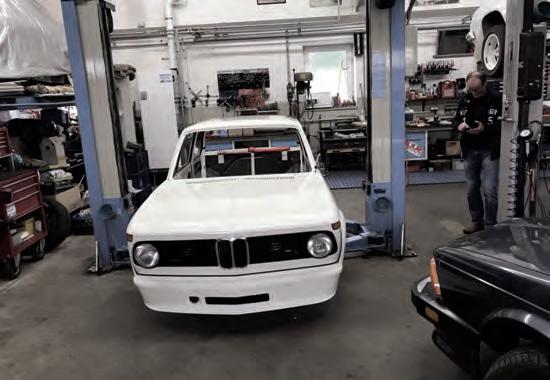
The overall renovation took time, but looking at the result, it was time well spent. Suffice it to say that the completed car easily passed TÜV certification. It received a counter reset to zero, which, considering the renovation standards, one should consider a great achievement. After so many years of oblivion in the garage, nowadays this BMW 2002 Turbo takes part in prestigious European events, winning numerous trophies such as victory in its class at the Sinai Concours d’Elegance in 2023.
If the Bonaventura Classic Collection did not have this item, it would have to purchase it immediately.

















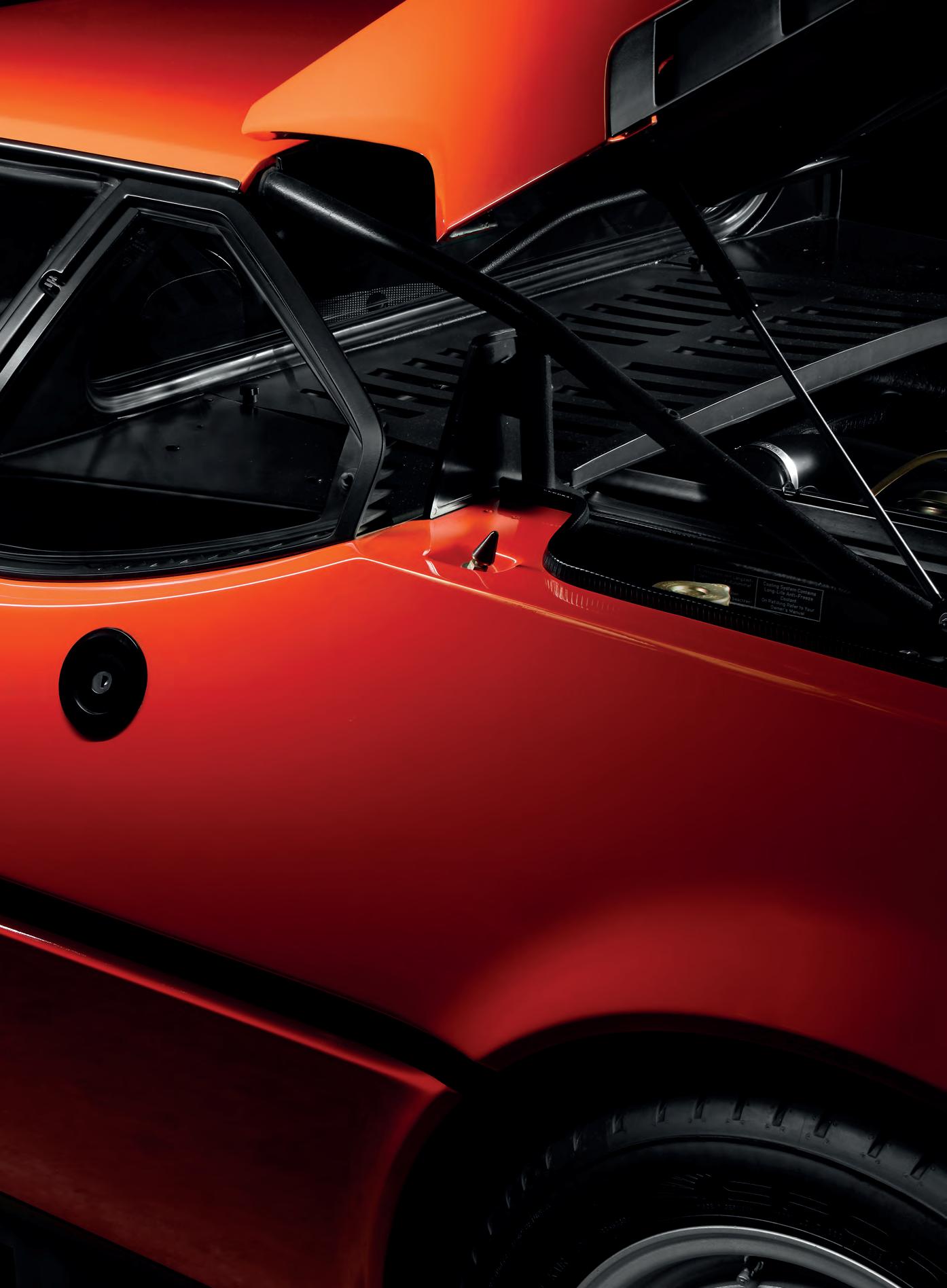




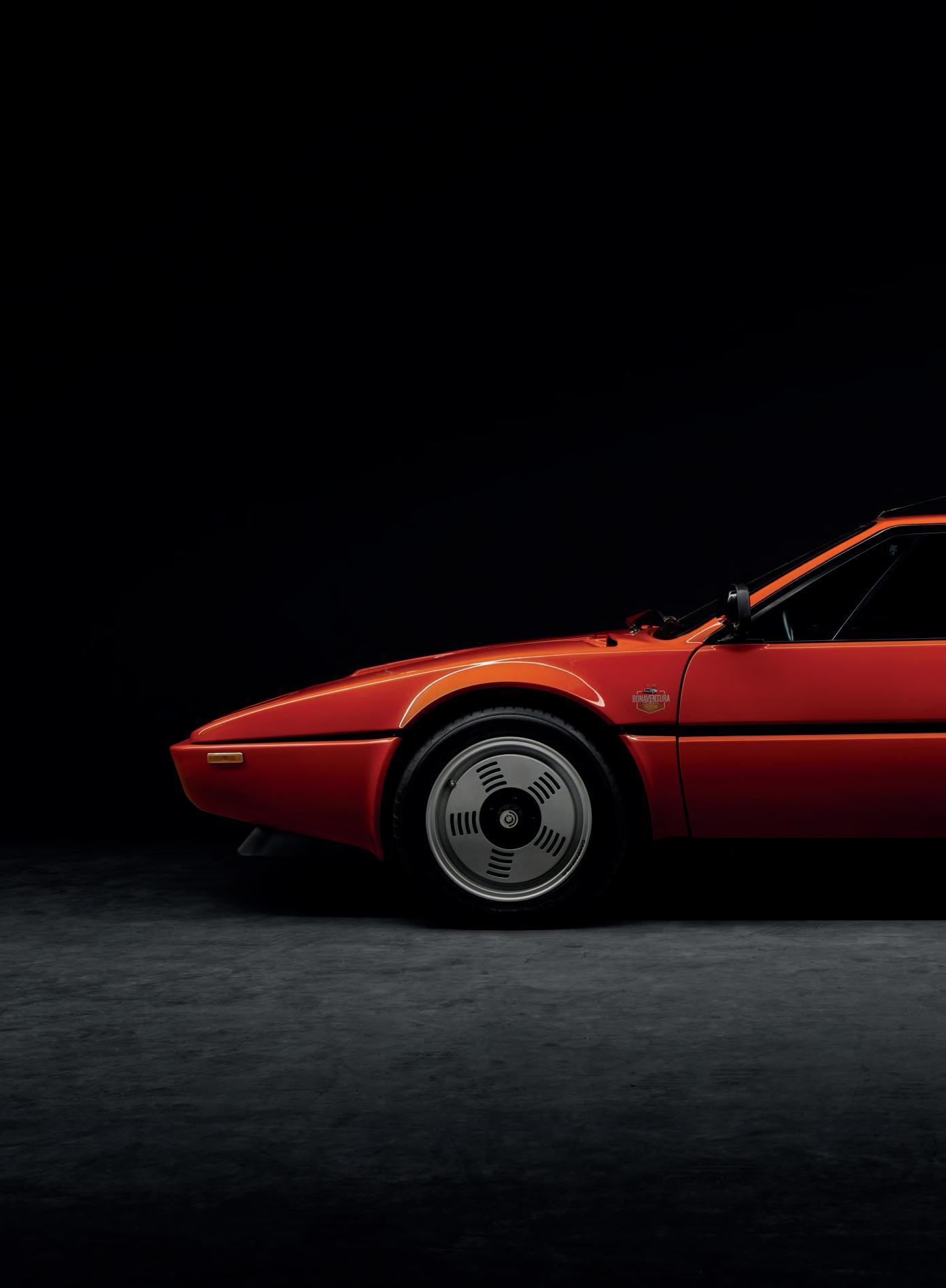






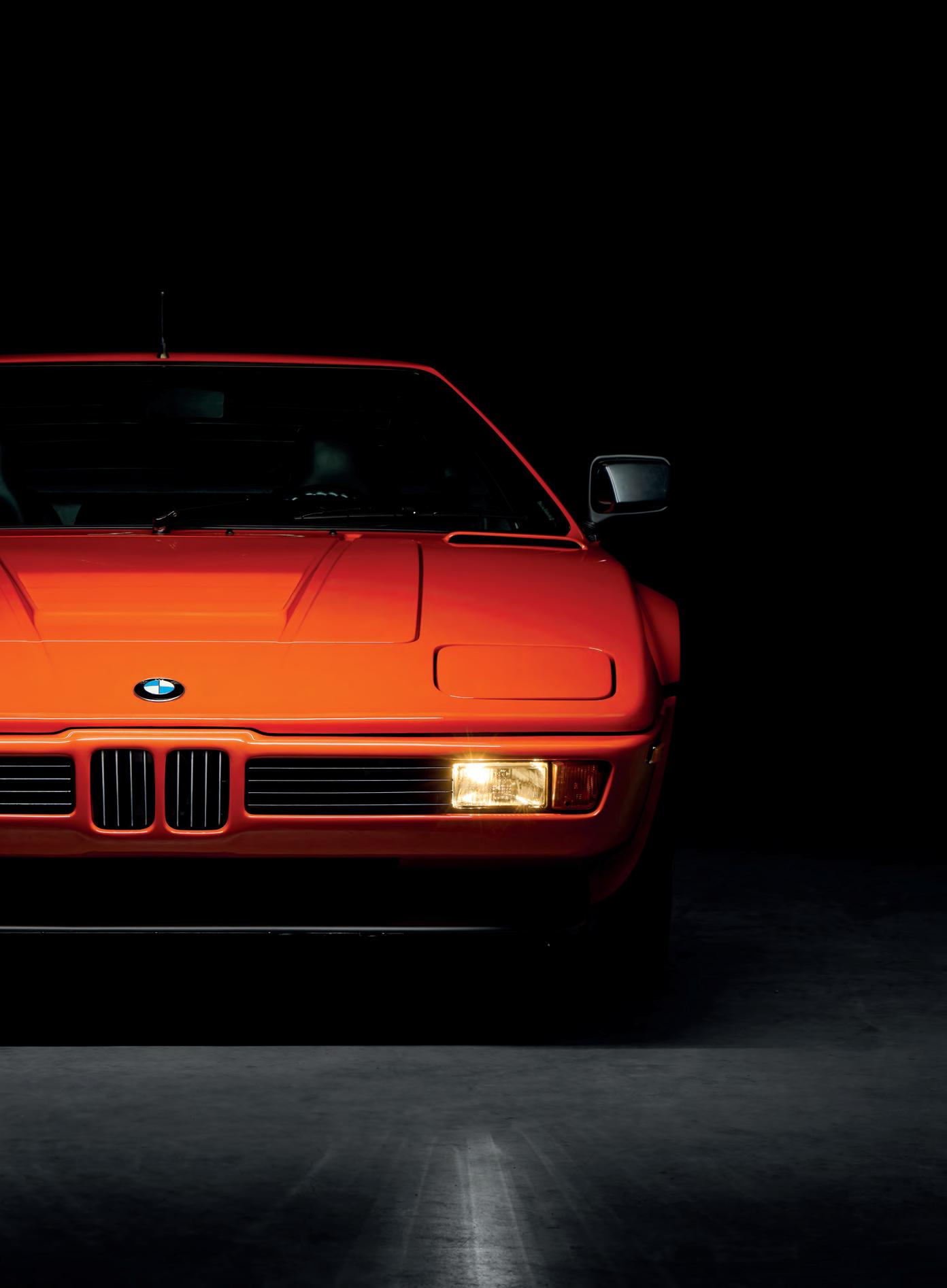




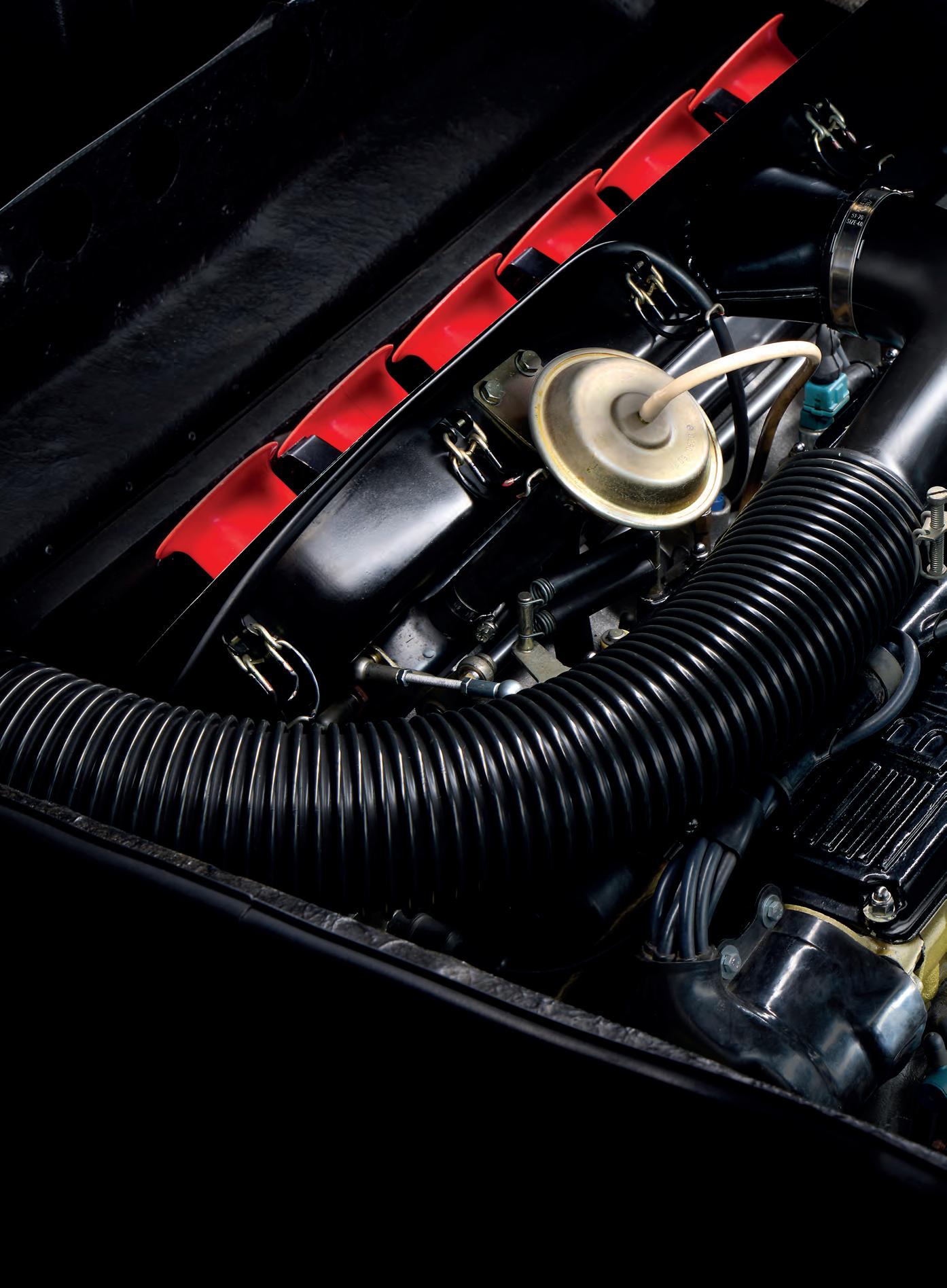





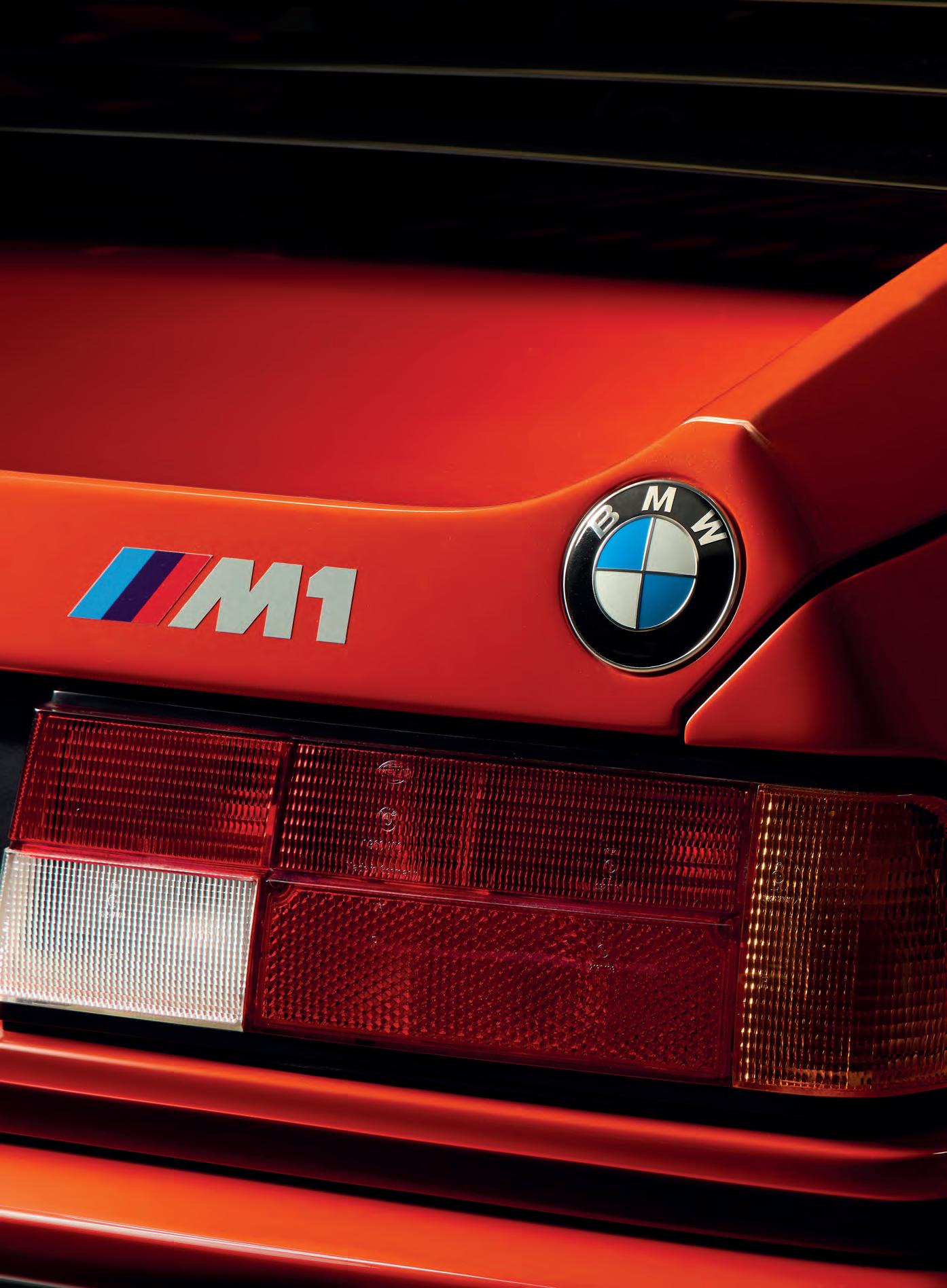





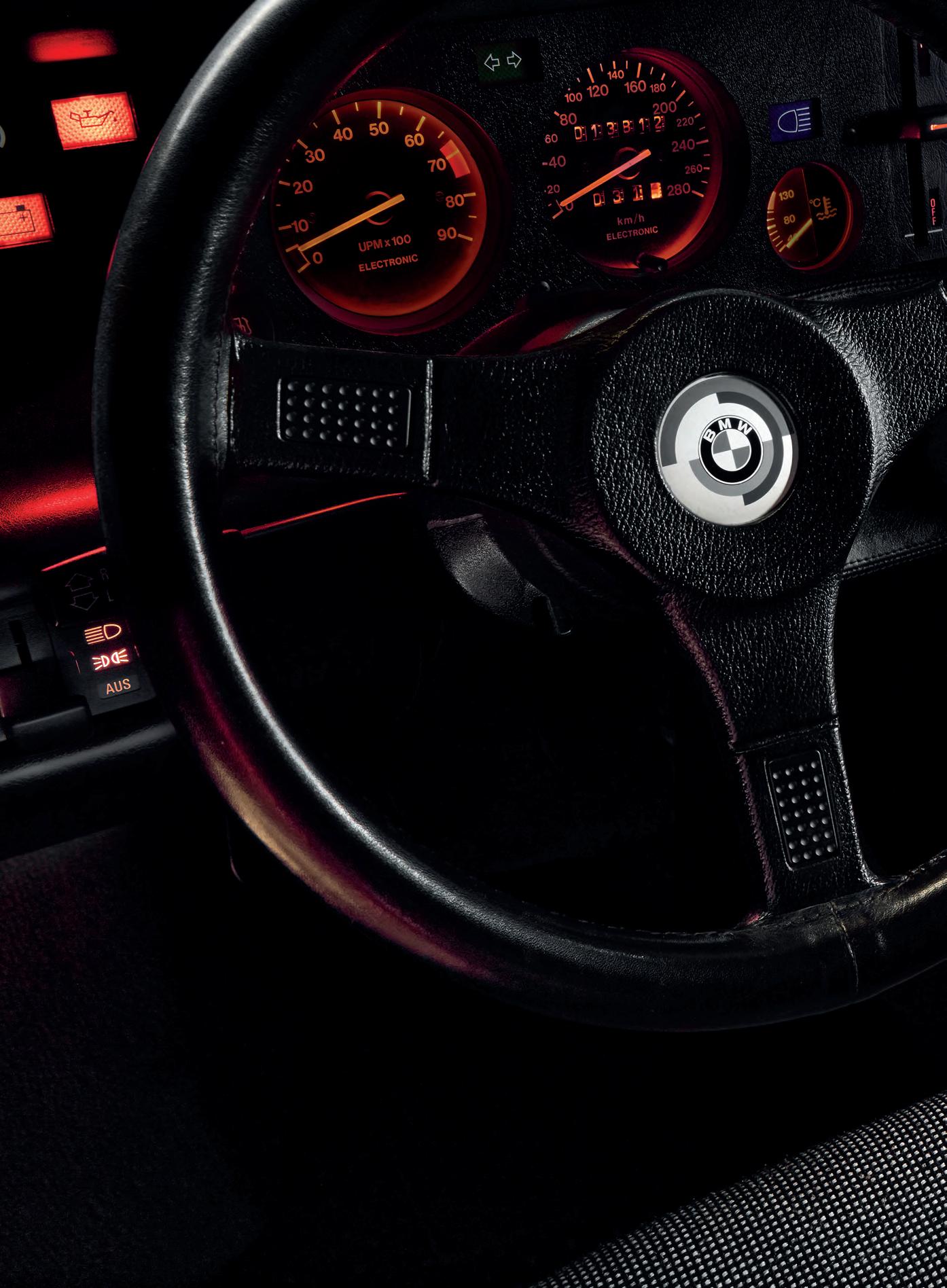






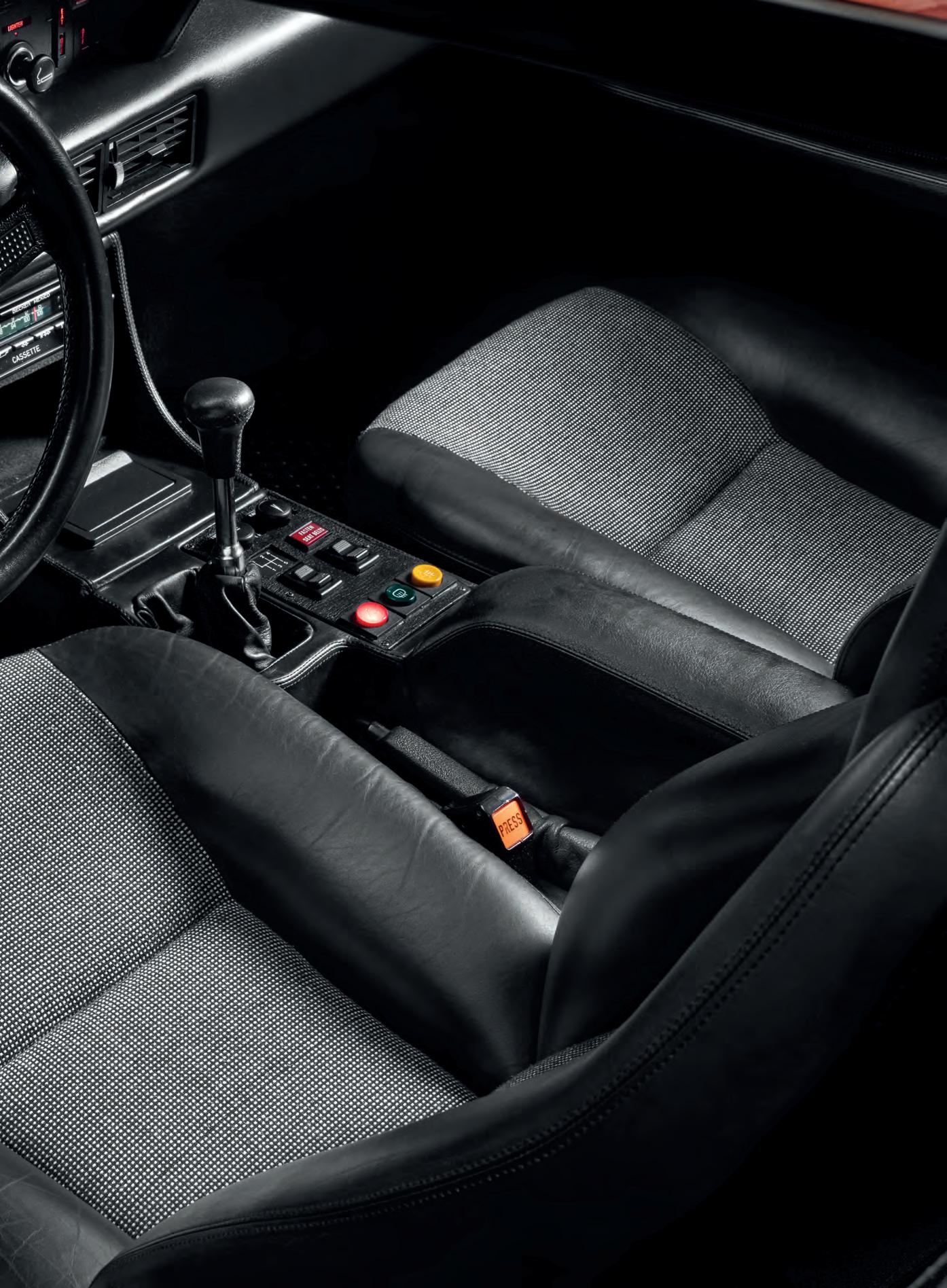




Created as 179 out of 399 and a pleasure to drive

Companies do not build cars like this as a mere joke or for fun. BMW created the M1 to prove that it could also be the world’s best at building sports cars. Its story is a movie script. I cannot believe one hasn’t been made yet!
The M1 is the sportiest of all BMW sports cars. The story of this remarkable vehicle begins in the 1970s, when the International Automobile Federation (FIA) divided racing cars into six groups. BMW had an appetite for Group 5 and a rivalry with the Porsche 935. The racing 935 originated from the well-known 911, which was in line with FIA rules. These rules proclaimed that a Group 5 car had to be constructed based on a car homologated from any of the lower groups. This is where the problem began for BMW, as each
lower group was composed of civilian cars for sale. BMW did not have any cars on offer that it could adapt for racing. For the Bavarian engineers, however, this was no reason to give up on their dream, so they said they would create such a car. It made the most sense to focus on the least demanding Group 4, which involved the production of four hundred vehicles. BMW could have built a series of cars giving rise to a Group 4 racer and only from this could they have derived a car to meet the requirements of Group 5.





But BMW did things differently. First, they created a Group 4 racing car. Based on this, they prepared a road car, and it was from this that the Group 5 vehicle originated. They offered participation in the project of creating the supercar to the best and most talented people. As a result, there is something of Lamborghini in every M1, you can feel Giorgetto Giugiaro’s flair and Paul Rosche’s precision. They instructed Giugiaro to draw handfuls from the styling of the prototype BMW E25 Turbo. The assumption was that the car would have the same type of engine. Its power was to vary depending on the vehicle’s intended use. They assumed that a modest 277 hp would suffice in the road-going version, 470 hp in the Group 4 racer and as much as 850 hp in the Group 5! Superb collaborators, excellent engineering and the most state-ofthe-art technological advances ensured success. The first prototypes produced in Italy had already started to arrive at BMW for testing. Could anything have gone wrong?
As it turned out - it could. In early 1978, it became clear that Lamborghini was not playing fair. It used the money invested by BMW and by the state to build... a military offroader! The vehicle turned out to be a fiasco because, funding issues aside, it was based on one of the American prototypes. The Americans sued Lamborghini, which consequently lost them money and they were bankrupted. The Germans had no choice but to break their cooperation with the Italians. They exported seven prototype M1s, parts and components from the Italian factory to Germany. As the Italians did not want to give them up, they had to take the assets by force.
Work was due to continue in Germany, but BMW Motorsport had nowhere to squeeze in another project. It was fortunate that the engineers who knew the M1 inside out and who became redundant due to the bankruptcy situation set up Ital Engineering. BMW signed a contract with them to complete the work. The entire facilities were moved again to Italy. Each subcontractor was assigned specific tasks: Ital Engineering
- assembling the cars, coordinating the work. Ital Design - designing and glazing the bodies, developing the interior and electrical system, and machining the fiberglass and plastic bodies. Baur - preparing the fuel and brake system, lighting, assembling the suspension and steering, and pairing the BMW engine with a ZF manual transmission. Finally, the finished cars were sent to Stuttgart for testing.
Coordinating the activities of the various parties, road tests, inspections all took time. Meanwhile, time was not working in favour of BMW and the supercar project. The FIA guidelines were clear: there are 24 months to build four hundred road cars. Until then, no M1 could appear on the track. So how do you promote and sell a car prepared on the basis of a race car if racing is not an option? How could they promote such a vehicle?
Sporting under the FIA banner was out of the question, but the world of motorsport does not end with the FIA. And even if it did, you could always set up your own races. This is how the BMW M1 Procar Championship came about.
Created by BMW, the competition was open to private M1 owners and the elite of motorsport, including the Formula drivers. They all raced for cash prizes. This mix proved to be a hit. The spectacle lasted two seasons. Nikki Lauda won in 1979 and Nelson Piquet the following year. The incredible success emboldened BMW to try its luck in other competitions. An M1 painted by Andy Warhol competed at Le Mans. Another example, converted into a Group B rally car, won the Rally La Baule and the Rally Lorraine.
The road-going BMW M1 produced with great care had an ideal weight distribution, an excellent engine, and drove fabulously. Sounds like a recipe for a dream car and the M1 was, indeed, a dream car. The trouble was that there seemed to be few drivers with a burning ambition to make their dreams come true. Demand was poor, which certainly stemmed
from the outrageous price. This was originally supposed to be DM 100000 but the confusion surrounding the project effectively raised the cost of production and pushed the price up to DM 113000. Sports enthusiasts preferred to buy a Ferrari, which firstly had a much stronger association with sport and secondly was half the price. BMW, looking at the sales columns, lowered the price of the wagon to DM 90000, but even this did not bring about the desired effect. According to official figures, there were only 399 takers for the extravagant BMW. According to unofficial ones - even fewer. In the meantime, the FIA changed its regulations. At the end of the day, the M1 never took part in the races BMW designed it for.
The inclusion of the M1 in the Bonaventura Classic Collection concluded a four-year search to get an M1. They found and bought a noteworthy piece in 2018. At this point, one cannot help asking the question: where to look for such cars? You will not find them on popular classifieds websites. Car dealerships - even the best ones – do not offer such cars. The current owner of the car lets us in on the secret, saying: - Looking for such a car involves patiently perusing a dozen different websites with classic for sale every day, preferably in the morning hours. In the end, it worked out. Someone in the US was putting a good-looking specimen up for sale.
The investment was too serious to make a blind purchase. The option was to seek help from BMW Classic, which sent an expert to the States. It turned out that Bruce Canepa was selling the car. Bruce Canepa is an American race car driver and car dealer. He has competed in IMSA GT, sprint car racing and the Trans Am Series. He finished third in the 1979, 24 Hours Daytona. Canepa, apart his racing successes, is a producer of the most known M1 modificationsknown as M1 PR Car Canepa.
enabled them to buy the M1 at a less crazy price. The expert assessment conducted in California gave a rating of 1.2 (where 1.0 is factory condition or better) and 960 out of a possible 1,000 points. Since the car’s condition was flawless, where did the missing points go? They deducted the points because of, amongst other things, the headlights - Bruce had fitted symmetrical headlights after taking the car to the USA. These, although original, were originally not from this car, so this counts as a defect. Getting European headlights was a challenge, but the buyer managed to overcome it.
It took four years to refresh the car. It needed a special wax to preserve the frame, which peeled off after years. Since they had to disassemble the car, it was natural to dismantle the engine, take it apart and replace the gaskets. The same happened with

SOURCE: WWW.CANEPA.COM
We will not be giving away any secrets when we say that the drivers exercised their right to a special discount, which
the rubber parts of the suspension and gearbox. It was possible to rectify all the faults. The car’s condition today, with 13800 km of mileage, is ‘factory condition’. It is one of those cars that you both want to drive and dread to drive. The powerful urge to step on the gas competes with the thought that simple bad luck will suffice, and so, prudency prevails. A small stone hitting the windscreen or plastic bodywork will do damage that no owner of a unique car wants to think about. For this reason, since the M1 came to the Bonaventura Classic Collection, it has covered only about 100 km.






















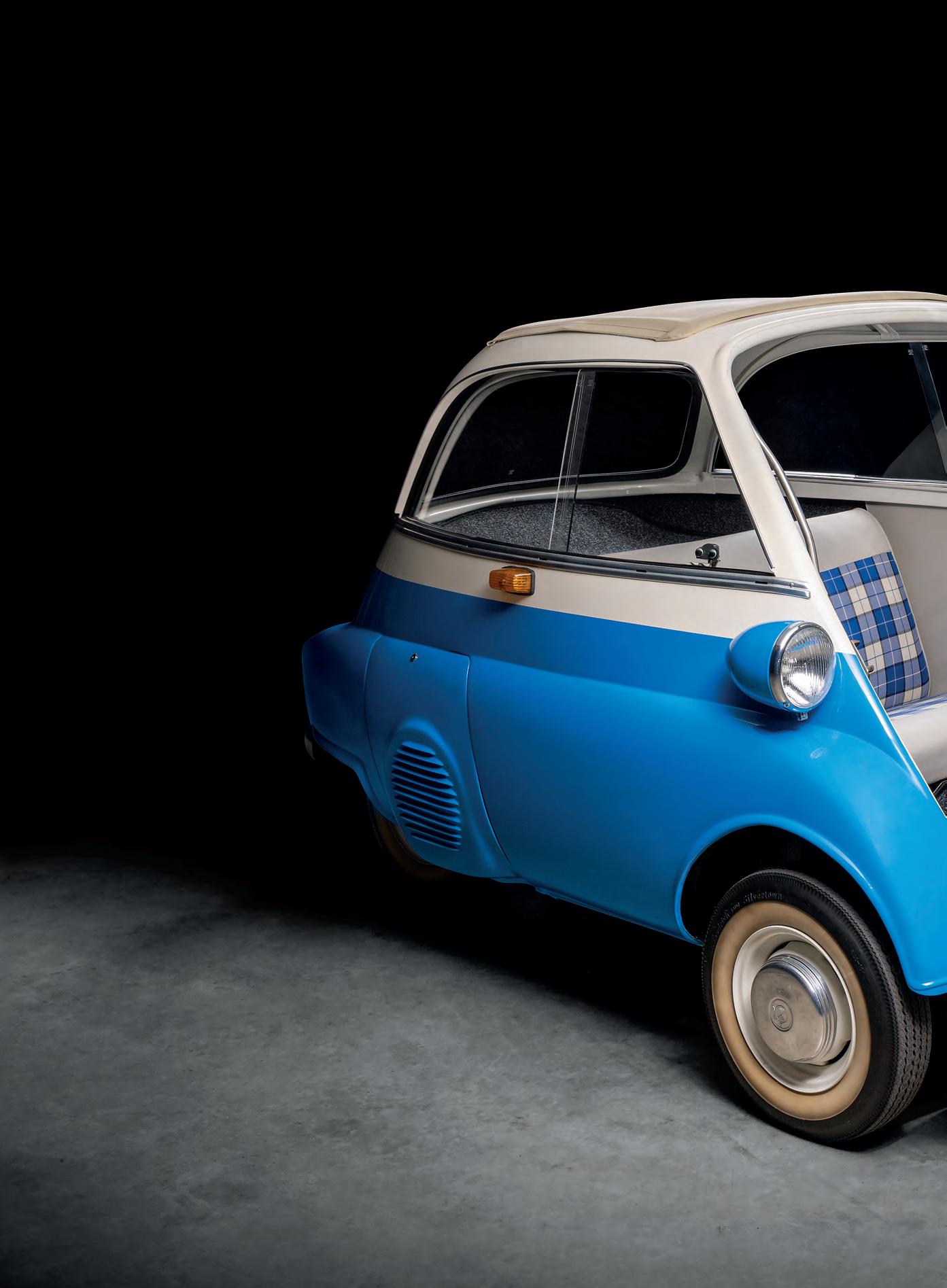











- This is my younger daughter’s favourite car.
Not everybody in the world knows that BMWs are stately, spacious, and sometimes predatory vehicles. The history of the manufacturer, which has been in operation since 1916, is full of glory, but also of worse moments filled with anxiety. One of the relics of challenging times is the BMW Isetta. What a pity that tough times do not leave such a beautiful imprint on everyone!
In the 1950s, Europe cleaning up the post-war rubble became an ideal market for microcars. Pragmatic and financial issues were at the root of their popularity. Here, for truly little money, it was possible to acquire one’s own means of transport that was more than a motorbike. Tiny cars started mushrooming. One of the most phenomenal of these ‘micro-brushes’ was the Italian ISO Isetta, launched in November 1953. The car did not have a stunning career in Italy, but BMW decided to buy the licence. The Germans adapted the car to their needs and started production in 1955. The little ‘motorbike with a roof’ sold very well and BMW, uncertain of its future, could take a breather.
the seven woes, its overall condition gave him hope that the vehicle could still be revived. Interestingly, the vintage BMW had only one owner in all that time. Becoming the second owner of an Isetta is no small matter. So, the collector decided to buy it.
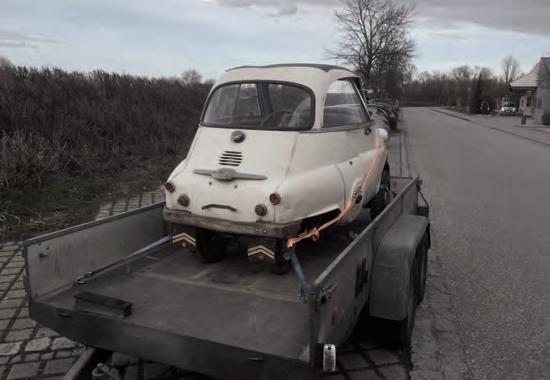
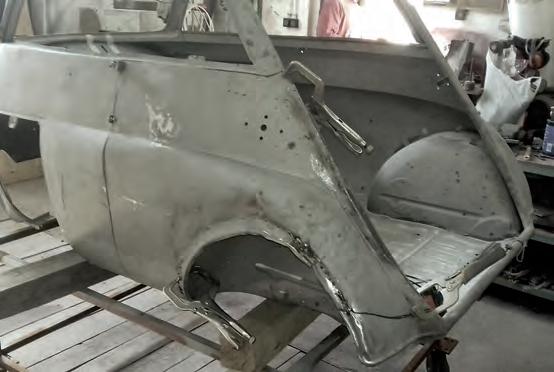
The Collection would never have been enriched with the Isetta had it not been for Helmut Bannert. One day, at the home of one of his customers, he spotted an Isetta standing in a barn. The car was wrecked, and a grimy pastel colour looked out from under a layer of dust. Helmut assessed it, and although the car looked like
- It turned out that the Isetta we had just found was manufactured in May 1962, i.e. in the last month of the car’s production. You cannot get a newer one! The first owner bought it at a substantial discount and used it as a daily driver until 1971. Where did he drive it to? We do not know exactly, but he certainly did not avoid... beer bars. On one occasion, returning from a nearby tavern, he hit a tree. Huddled against the boot, the car made it effectively impossible to leave the interior through the door. The large roof opening came in handy. The driver walked the rest of his way home and returned for the car the next day. Using a tractor, he towed the Isetta to the yard and locked it in the barn. Assumingly, he had a plan to repair the car in his own time, but as is common, ‘his time’ never came. The car spent the next decades in oblivion, with the mileage stopped at 22000 km.
Bringing the bodywork up to scratch started with the purchase of the right-wing doors. Helmut took the engine apart, but ruled that, apart from oil changes and minor things, there was not much to do. Once the doors had been replaced and the engine assembled, it was possible to get behind the wheel and finally drive at least a few


dozen metres. The car was unsuitable for driving on a public road, if only because of the muffler, which made a merciless noise, but anyway, covering even such a symbolic distance was a landmark event. Like anything happening for the first time in half a century.
The meticulous restoration of the bodywork was conducted in Poland, while the fitting and assembly, which took two years, happened place in Germany at Helmut’s workshop. During the restoration, new parts were used and those with which the car left the factory were reconditioned. Although the Isetta was originally painted beige, it now pleases the eye with a blue and white paint job. Why did Bonaventura decide to deviate from the car’s previous look?

- It is such a beautiful car that it was a shame to leave it in a mousey colour with a brown interior. When choosing the paintwork and upholstery pattern, I modelled it on the car I used to drive, which was in the showroom opposite the BMW Museum in Munich. This is the original combination taken from the Isetta catalogue. Specimens with exactly this look went for export sales.

The Isetta is powered by a 12-hp, 250 ccm unit based on the engine from the BMW R25 motorbike. Contrary to appearances, driving the tiny car is not easy. In the hands of a persistent driver, who does not mind the noise of a small engine, it is able to accelerate up to 85 km/h. The only thing to remember is that this is one of the few BMWs that is either fast or pleasant to drive.




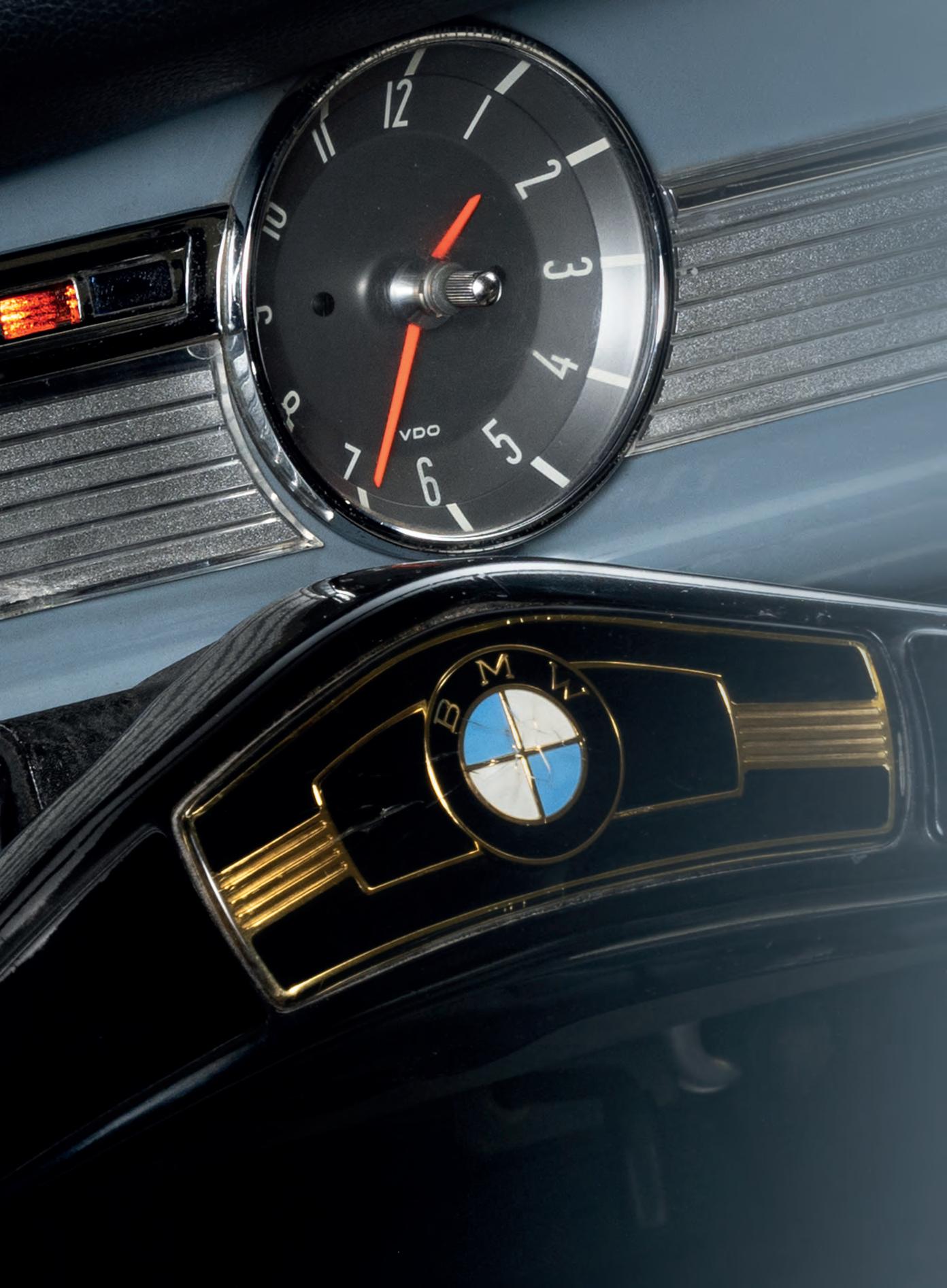











Its condition may not be exceptional, but its history is.
Is it possible to buy a new car and drive it little? Of course, such cases are known. And can the rides be so symbolic that you can always see the roof of your own house from the car window? It turns out that, yes they can.
In 1964, a woman from Passau, Germany bought a small, charming BMW. She wanted a new car, even though she had no intention of going on long journeys. Stories like this take on an extraordinary flavour after years. Add to this the fact that the woman’s choice was a BMW 700 and you have an incredible opportunity to tell the unusual story of a car almost forgotten by everybody.
At the end of the 1950s, BMW’s condition was far from phenomenal. The company’s management realised that

the brand’s continued existence was only possible with the creation of a new mid-range car. It could not be ‘some’ middle-class car. One had to offer customers something affordable, something that would have a real chance of storming the sales charts. The snag is that it takes time and costs a lot of money to prepare such a car. BMW may not have lacked enthusiasm, but it did lack money. As befits a story with a happy conclusion, a racing driver and designer - Wolfgang Denzel, BMW’s general importer in Austria - came to the Bavarians’ aid. Denzel had an idea!
How about reusing the components of the 600 model, whose manufacturing brought a very moderate success from business perspective? Of course, parts would have to be set in a completely different package. Danzel presented the completed designs quickly and his ideas were appealing. The BMW management instructed him to develop a prototype.
Giovanni Michelotti, a great Italian designer himself, helped with the work.
This is how the BMW 700 was born: a German car breathing Italian freshness. Technology enthusiasts will have nothing to sigh over here. The car is powered by a motorcycle-derived, two cylinders 32-hp, seven hundred cc boxer engine. The LS symbol tells us that we are dealing with a two-door sedan from the last years of production (1962-1965). The market still offered a cabriolet version and a coupe with a distinctively shorter cab. The number of 188,121 pieces produced is not impressive today, but in the mid-1960s it was a sizeable quantity. Considerable enough to help BMW recover from the crisis and survive. At least until a completely new model came along. The new model turned out to be the Neue Klasse, and then - after that, things only got better.
How did this unassuming car end up in the 2019 collection?
Let us tell the story in the words of the owner:
- When I was at a BMW convention in Bremerhaven, Helmut called me. He said he had come across an interesting model and

was just talking to the son of the 94-year-old owner. It turned out that Helmut’s caller had received the BMW 700 from his mother in 1998.
The car had a broken engine that no one had ever repaired. The man limited taking care of it to just painting the bodywork with a clear coat. Then he put the car in his paint and varnish shop as a decoration. Years later, when the interior of the shop needed renovation, the car simply started to get in the way, so he took it out and never brought back to its previous place.
The engine was indeed faulty. Helmut and his workshop repaired it, although not perfectly. Should it break down again, this time for good, there is a second unit, brand new, never assembled, waiting in the Collection’s storage.
The car is in a state of preservation. The upholstery, the rubbing on the seats, the flaws, and imperfections due to use are all marks that one would not like to disappear. All you need to do is put the luckily preserved first number plates in their positions and jump back to the year 1964 again.





























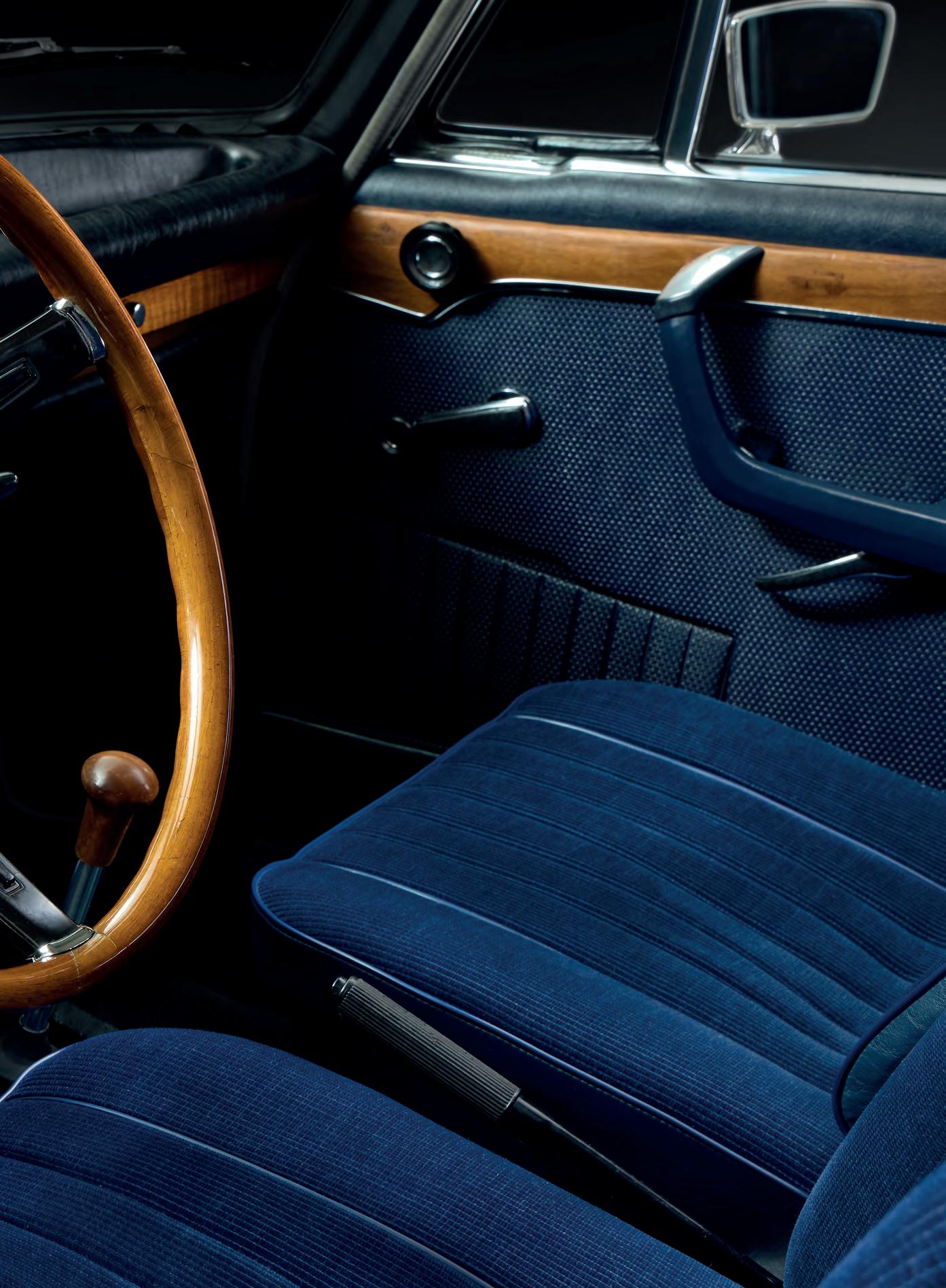






















- I love driving it. It reminds me of my childhood.
There are times when collection owners find an element that, theoretically, does not fit into the whole. However, it may turn out that after learning about the history of an exhibit, or the full collection, we can no longer imagine its existence without what we originally took to be the cuckoo’s egg. This is precisely the case here.
De gustibus non est disputandum – in matters of taste, there can be no disputes, as the ancient proverb teaches us. However, one cannot help feeling that there are cars sketched with a line so refined that their beauty is second to none. Such is the BMW 2000.
The car appeared in showrooms at the end of January 1966. It was a comfortable sedan offered in a 100- or 120-hp version. The more powerful variant was distinguished by the 2000 ti designation. Although the 2000 model was launched with the fashionable rectangular headlights, the 2000 ti retained the look of the 1800 version. Customers, however, found the round headlights less suitable than the rectangular ones, so the BMW 2000 tilux opted for rectangular lights. At the end of 1969, the Bavarian manufacturer completed the range with the BMW 2000 tii.
Unfortunately, due to its high price, this model did not break into the top of the sales charts. However, BMW management had no reason to worry, as the basic BMW 2000 variant remained quite popular and highly regarded until the end. Drivers remarked on its compact dimensions, which made the car manoeuvrable and handy. The main qualities, however, included excellent road behaviour, good brakes, equipment,
and a distinctive silhouette. Production of the BMW 2000 and BMW 2000 tii ended in June 1972.
In the BMW M Series collection, the presence of this particular vehicle may come as a surprise. Reading the following paragraphs is enough to understand that - in the Bonaventura Classic Collection - it is this car that enjoys a special position. Who knows if it is not the most important. Let us give the floor to the owner:
- I bought it because I associate it with my grandfather’s BMW 2000. His was 1969, this one is 1971, and I love driving it and photographing it because it reminds me of my childhood. The previous owner (in France) used it for daily driving. After I bought it, I also used it as such for four months.
The car was bought in France and then underwent a comprehensive four-year restoration after dismantling. The bodywork was cleaned down to bare sheet metal, but tin was used instead of putty during the work. When renovating the interior, the upholstery fabric was replaced with a new one, but in keeping with the original. All the leatherette elements were preserved. The original radio was also taken care of.

The discerning eye may have noticed that some parts do not look perfect. This is due to the patina that has accumulated over the years, which bears witness to history and adds authenticity to the restored car.
- This car has a distinctive gearbox action that I remember from my childhood. I remember myself as a four-year-old asking my grandfather, ‘And why does it sing like that?’ To which Grandpa
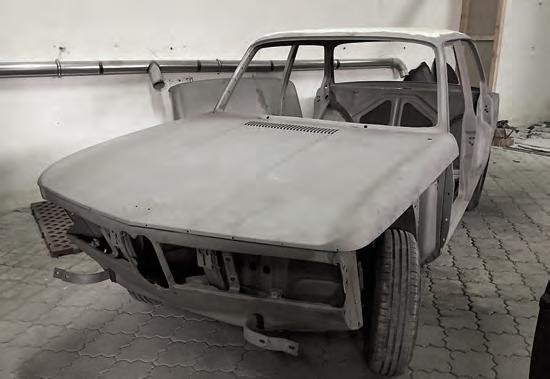
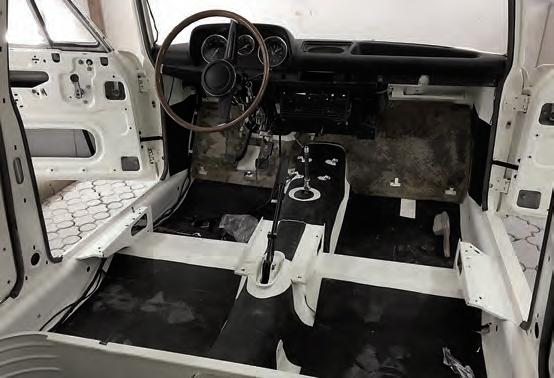
replied: ‘She sings songs when she is happy’. Those words stayed with me. Later, I would tell my children that if the car sounds nice, she sings songs.
Another behaviour I have taken over from my grandfather is to honk at round mileage occasions.
As the owner says, the BMW 2000 is wonderfully comfortable. It behaves and rides like a dinghy. It weighs 1150kg, so with a 130hp engine it can drive very dynamically. There is no power steering, but the large steering wheel makes manoeuvring quite easy. The opportunity to evaluate the car happened almost immediately after leaving the workshop.
- As soon as I picked it up, I went to the international convention in Pforzheim. It was the first time I had participated in an international event of this kind and with a regularity racing.

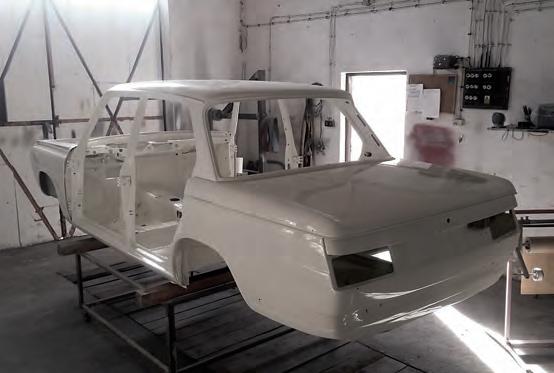
The car in the photos is one of the 1952s with a 130-hp engine with Kugelfischer mechanical injection. Finding a specialist who can manage and set it up properly is quite a problem. Fortunately, there is Helmut, who does it in his workshop in 40 minutes. As a result, the Kugelfischer works flawlessly in this piece.
The 2000 tii was the richest ancestor of the ‘Five’ available at the time. The market also offered a version with two carburettors, called ti, and with the rich equipment additions ‘tilux’. The designation tii reads as tilux + injection.
1952 pieces produced are few enough to consider the car rare. However, since it is a simple inconspicuous sedan and not a representative of the M series, or at least a coupe variant, demand for it remains moderate. Nevertheless, whomever comes into possession of a BMW 2000 tii will become the owner of a sedan that is as much ordinary as it is fun and rewarding. Is it possible to strike a better bargain?




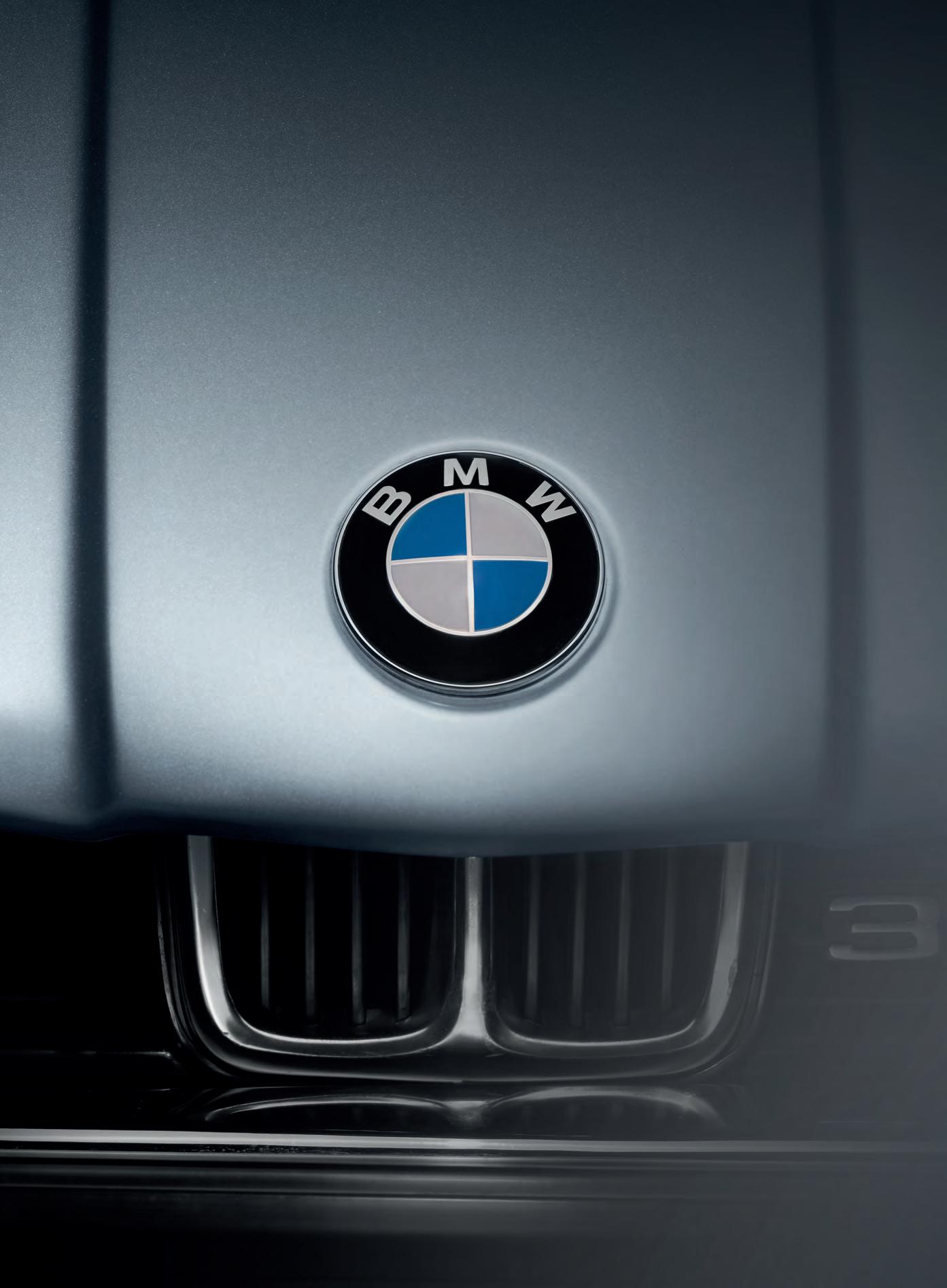





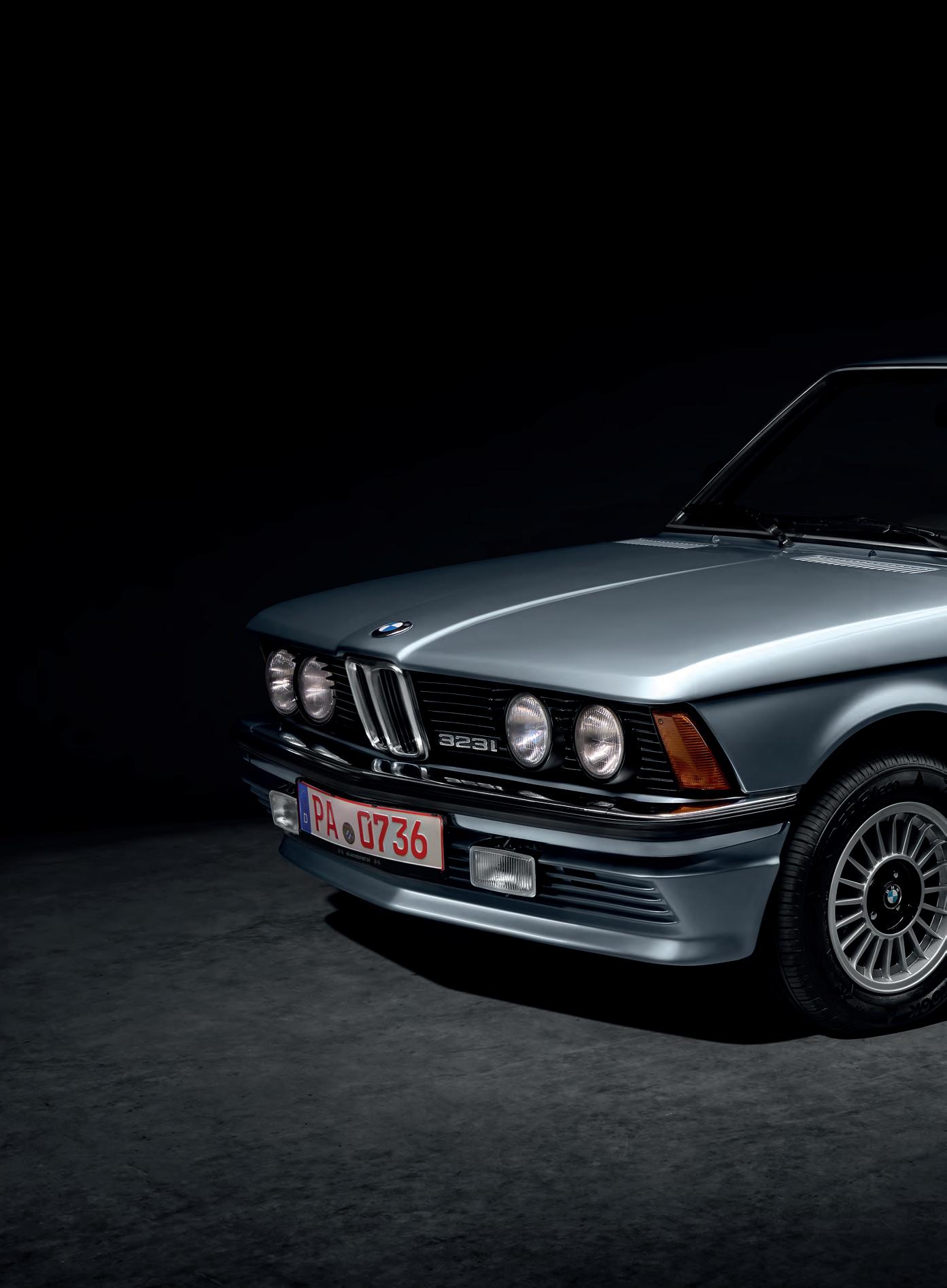












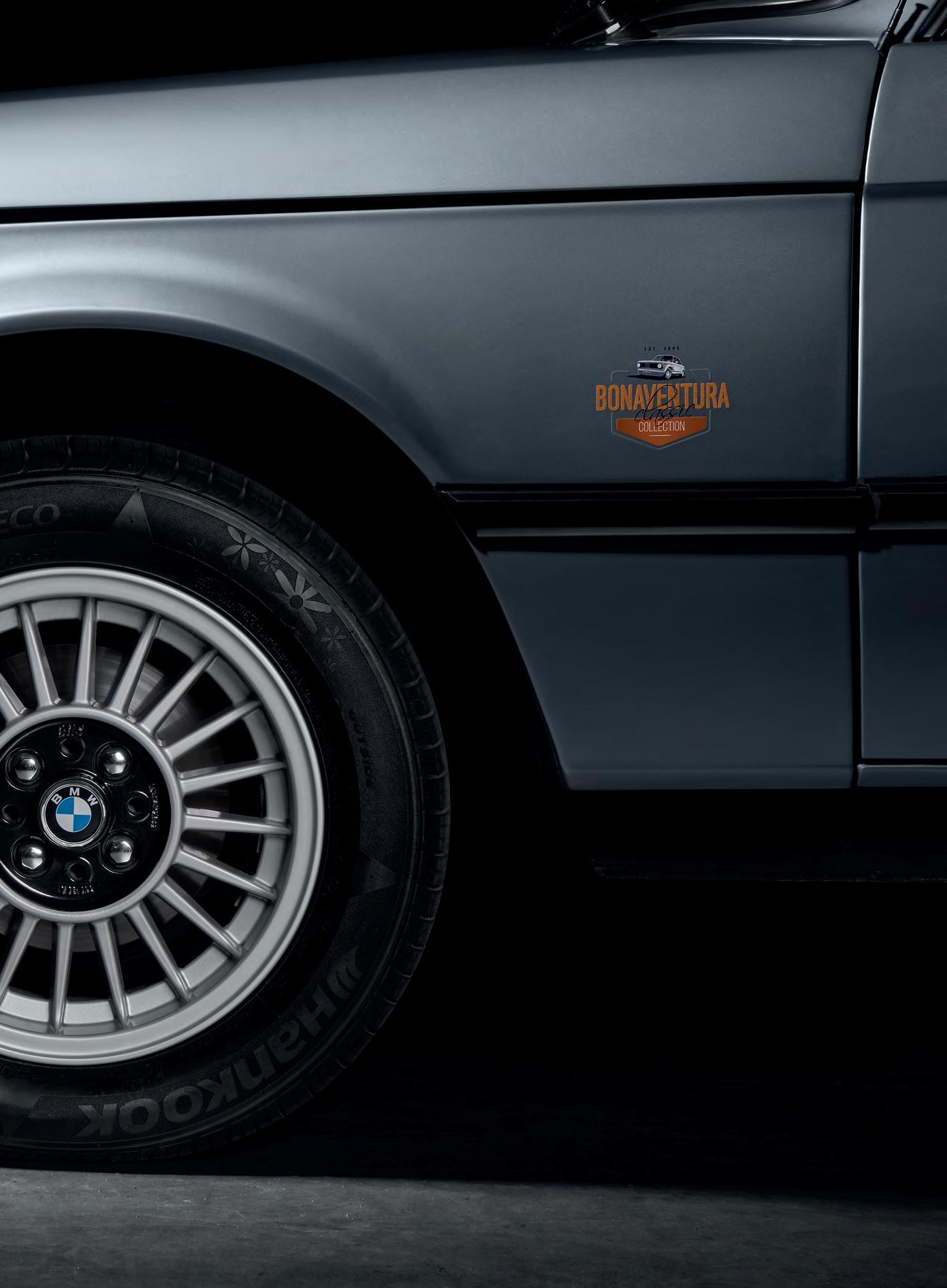




- Before it came to me, it had been in the hands of one family since its launch.
Today, it is difficult to imagine a BMW without the 3 Series. If one assumes that every success story has its origins somewhere, then it is this model that is at the root of the success of the ‘Three’. When developing the E21, BMW had to take its time. The 1602 and 2002 models on offer in dealerships were highly appreciated and eagerly bought, but it was more and more difficult to hide the roots of the model dating back to the early 1960s. Besides, it was clear that the competition was not sleeping, with Ford and Opel regularly snatching up BMW customers. Immediate action was necessary.
Preparing a completely new car takes time and costs money. Fortunately, taking shortcuts does not always mean being lazy,
and if the results look promising, why not try it? In preparing the E21, components from the 5 Series and engines that BMW had for years proved useful and, thanks to that, the new model was created without spending vast amounts of money.
Production of the first generation of the 3 Series, designated E21, started on the 2nd May 1975, with the first units going on sale in July. What attracted the eye was the elegant two-door body, more modern than that of the 02 predecessor. Drivers wishing to enjoy the spacious interior and good dynamics of the new model had to swallow the bitter pill of price. The cheapest variety, designated the 316 cost 13980 marks, which at the time was a considerable amount for a car in this class. Time has shown that having to put a lot of cash on the table did not deter potential customers. Thus began the story of the 3 Series, which successfully continues to this day.
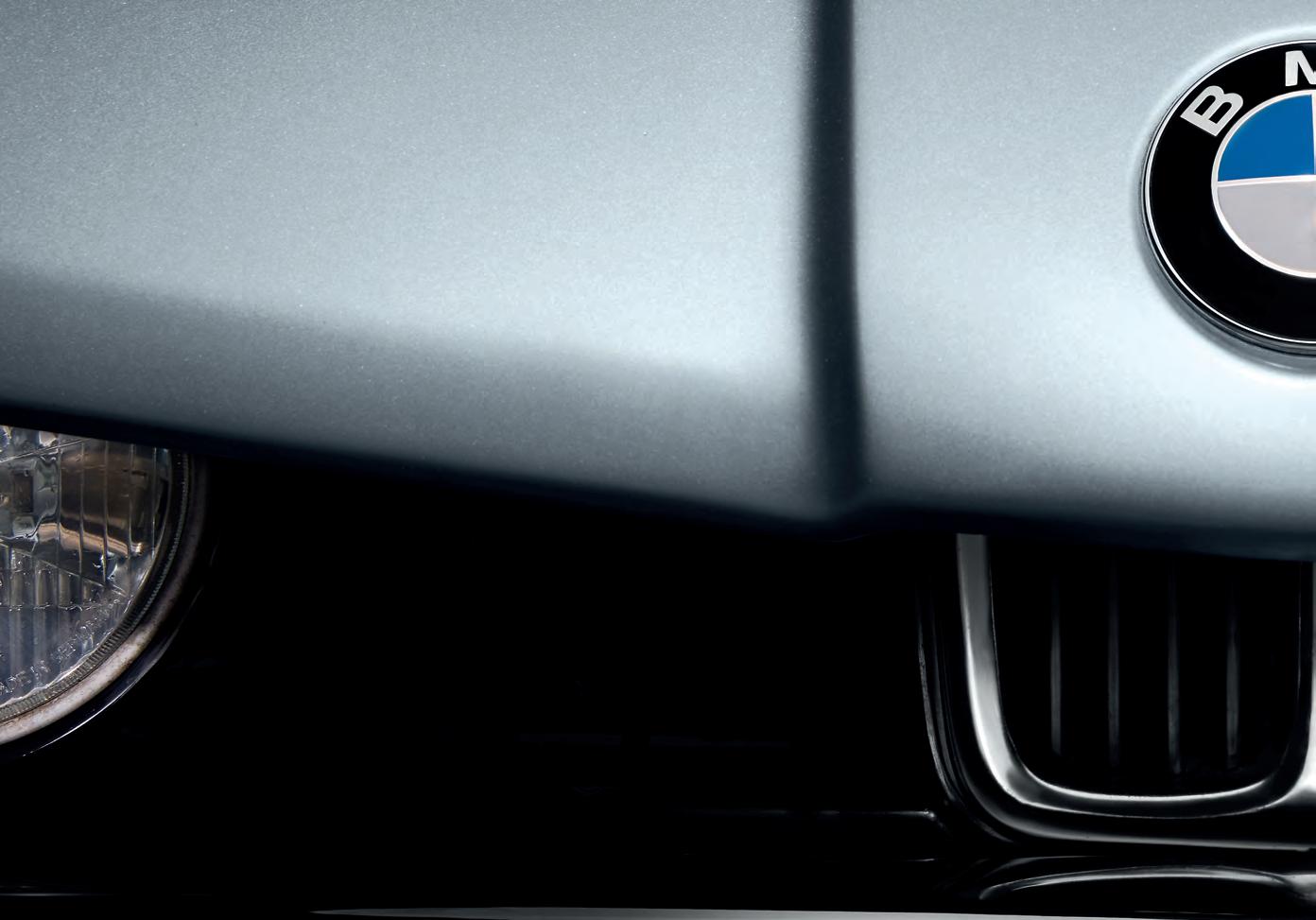
In this case, we are dealing with the BMW 323i. The designation reveals to us that this is a ‚Three’ with a 2,3-litre engine. The letter ‘i’ stands for the fuel-injected unit. This model went on sale in September 1977. Production of the E21 ended in 1982.
The story of the presented car takes us to sunny Italy, where one family drove it all the time. The father originally owned it, then the mother, and eventually the car passed successively through the hands of the three daughters. At the time of purchase in July 2017, the odometer showed 178,000 km. The car was kept in its original and (despite the dings) particularly good condition. When it came to the Bonaventura Collection, the decision was taken to retrofit it with the accessories it may have come with from the factory. It was completed according to the company brochure, so now it looks as it might have looked in its richest version in 1980, with Alpina look wheels,
Recaro seats and Hella halogens. The spoiler did not appeal to the current owner, so it was not fitted in the end.
- It is not just a collector’s car; it is my childhood dream. In those years in my home country only the richest people had such a car. When I hear one of the songs from my childhood mentioning a golden BMW, this is the model that my imagination brings to my mind.
This BMW may not be golden or unique. However, it evokes the golden days of childhood and that makes everything else recede into the background. Such a car could not be missing here, because a BMW collection illustrating the rich heritage of M Motorsport would be incomplete without the most powerful version of the E21. After all, had it not been for its success, there would have been no M3 E30, let alone the DTM. But that is a story for another chapter in this album.


















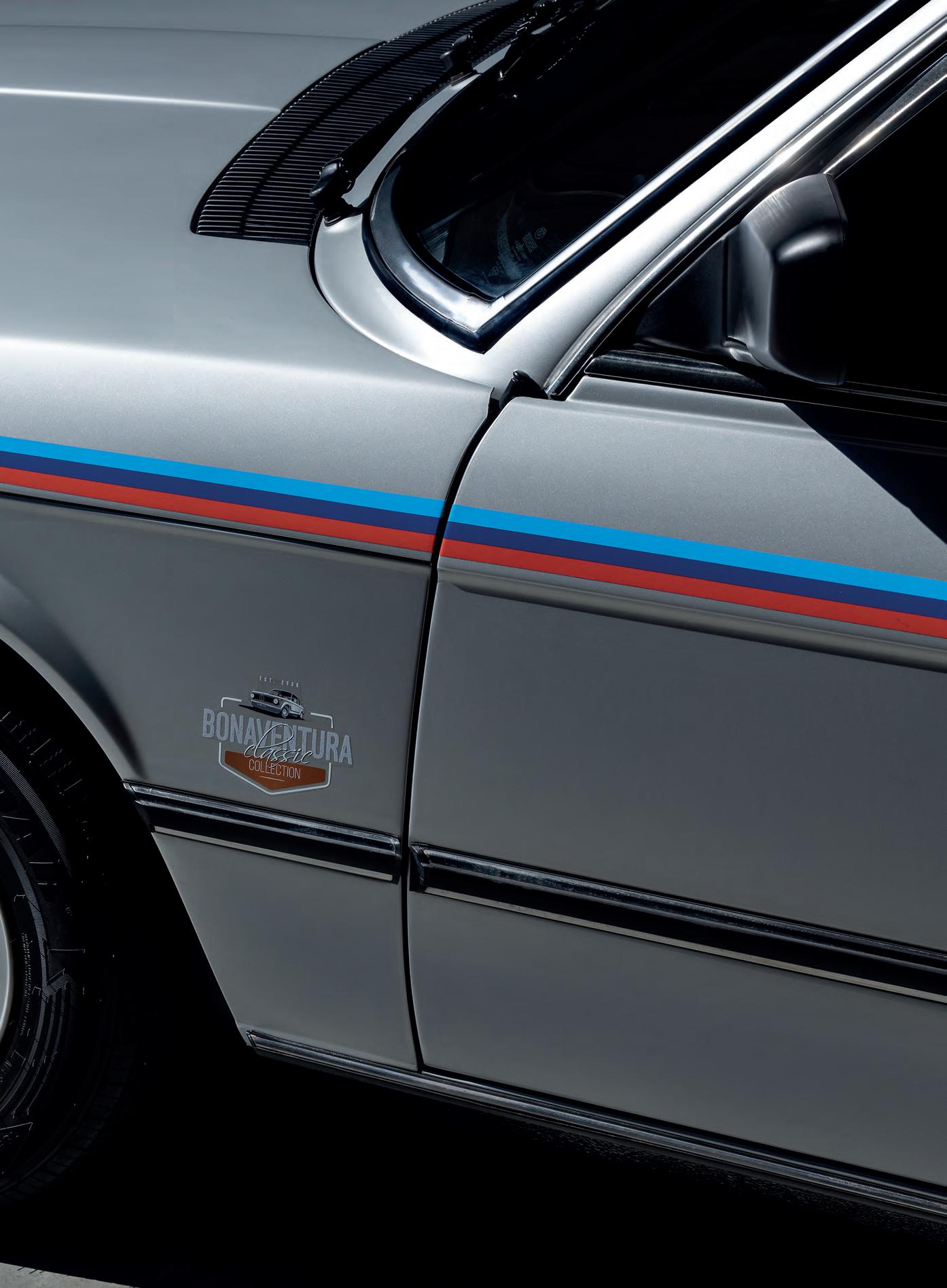





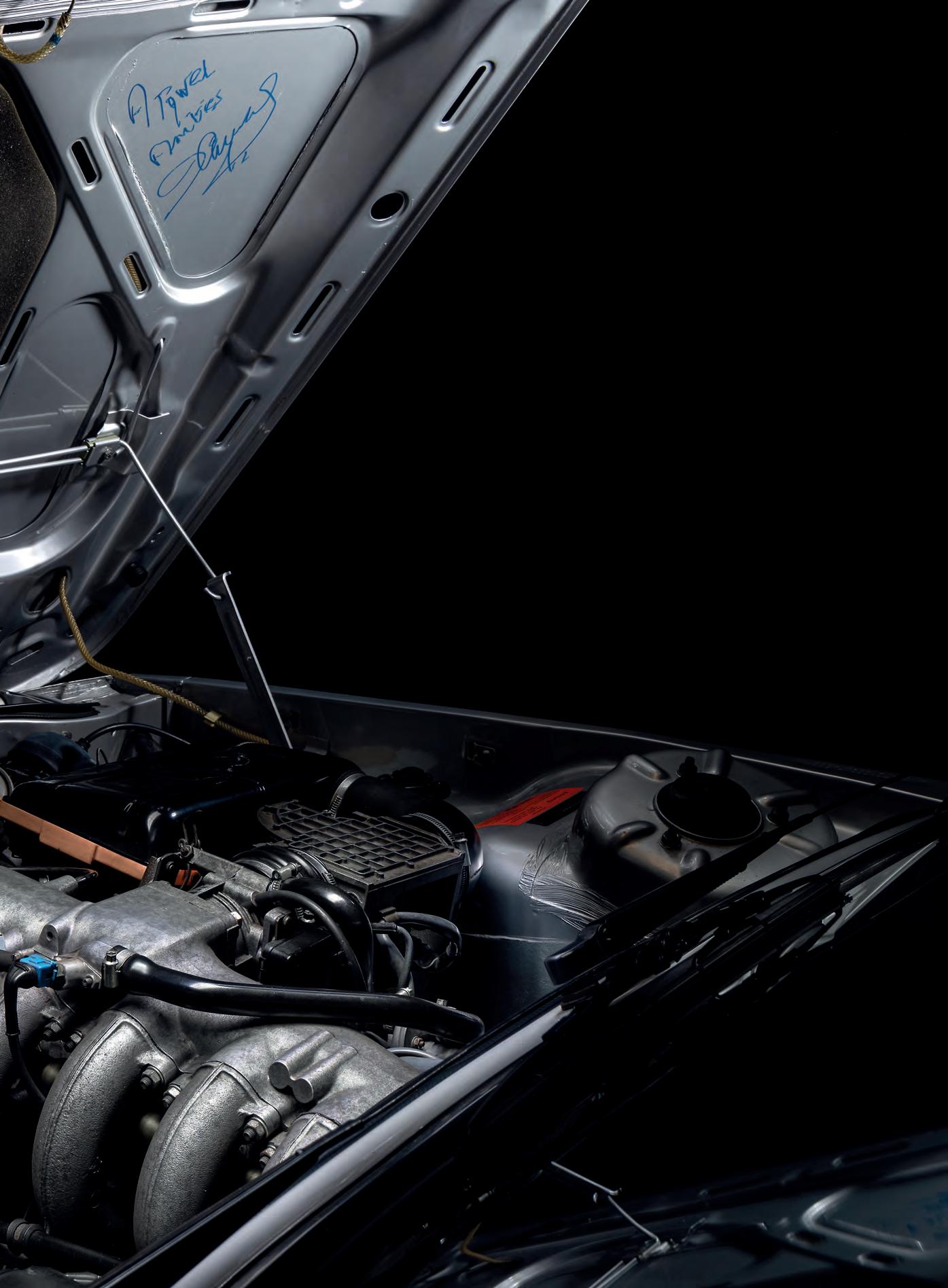




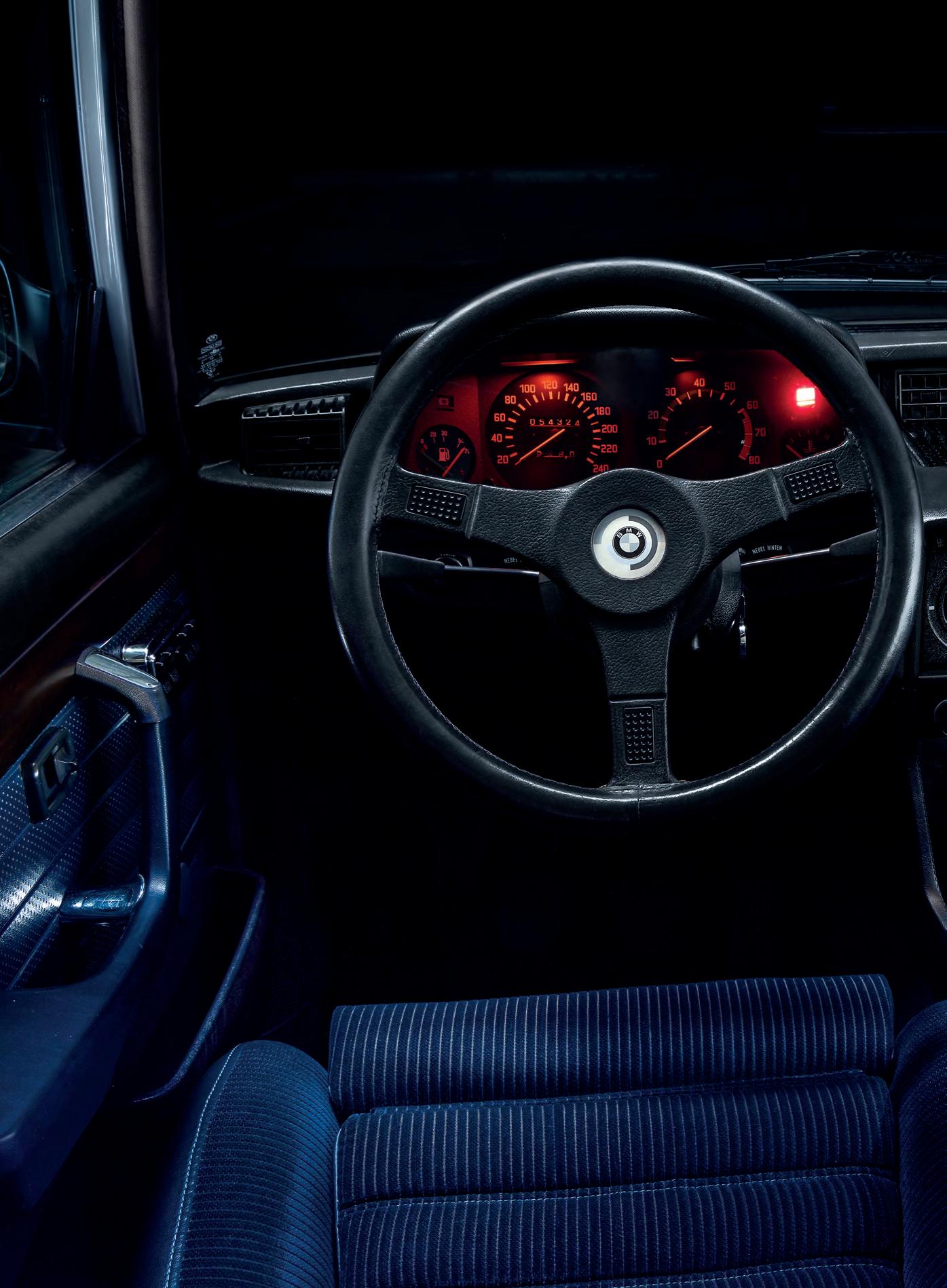






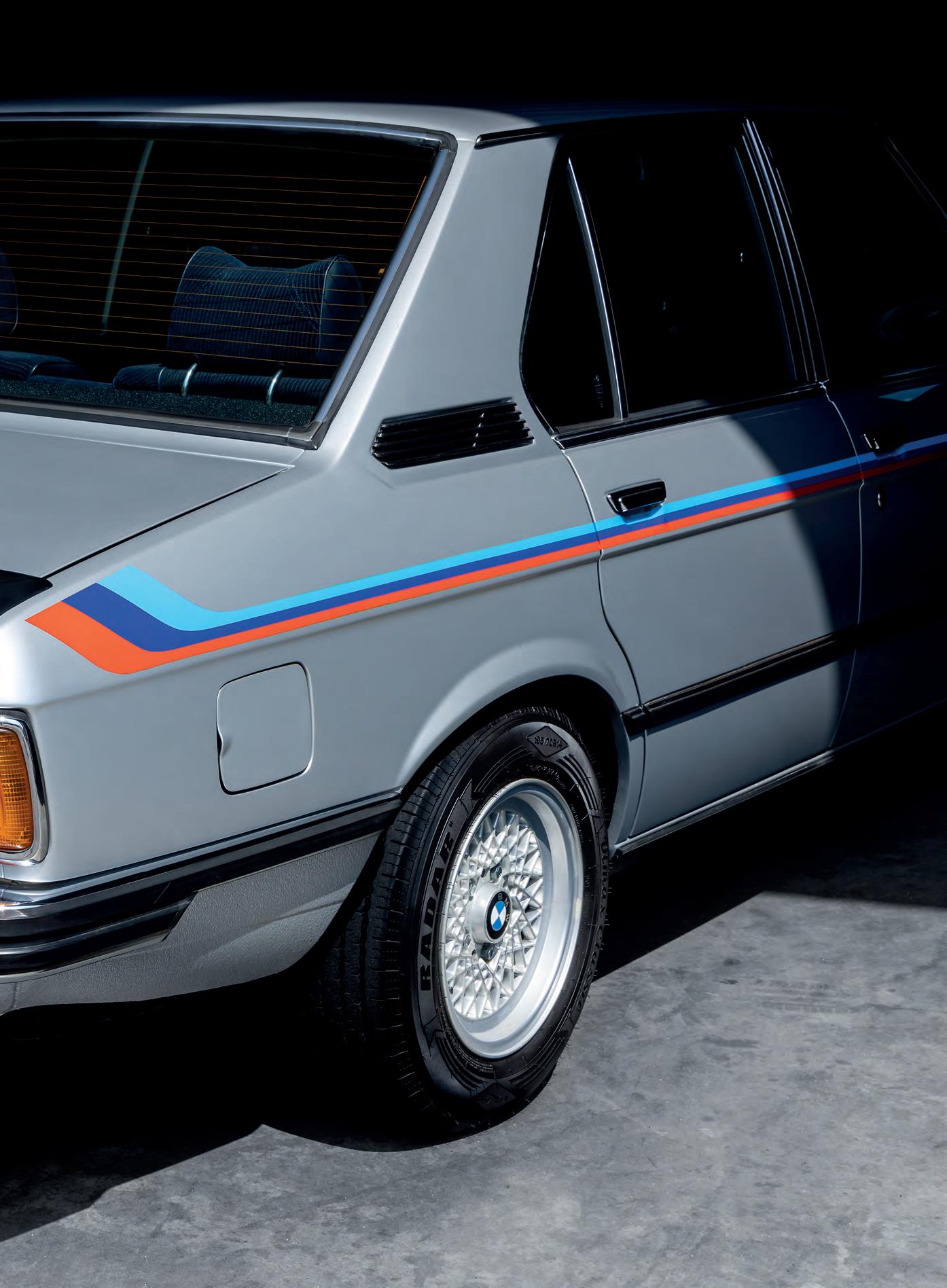




- This is my only BMW bought in Poland.
Not everybody knows this, but among the sporty BMWs there is a model that would not exist if it were not for Africa. What do you mean? Germany, the United States, Italy…sure, but Africa? To tell the story of the BMW E12’s sporting prowess, we need to move to South Africa for a moment.
The BMW E12 was the first generation of the 5 Series. It appeared in September 1972 and remained in production until 1981. One of the factories from which the ‘Five’ cars left was the Rosslyn assembly plant on the outskirts of Pretoria.

BMW had pragmatic motivation: importing a finished E12 from Germany would involve prohibitive customs duties. It was cheaper to assemble copies for the local market locally.
At a similar time, in Germany the work continued with the goal of developing better E12s. Thus, the idea was born to produce a special, faster version in South Africa for promotional and experimental purposes. They sent the first BMW 530 MLE (that was the designation used) to the Schnitzer plant in Germany. There, they inserted the safety cage, modified the brakes and the exhaust system. Then they transported the finished prototype by plane to South Africa, where preparations for the start of production were in full swing. Modifications in relation to the serial ‘Five’ were profoundly serious. They slimmed the car down by about 170 kg, made it sportier and installed a 3-litre engine from the BMW E9 under the bonnet.

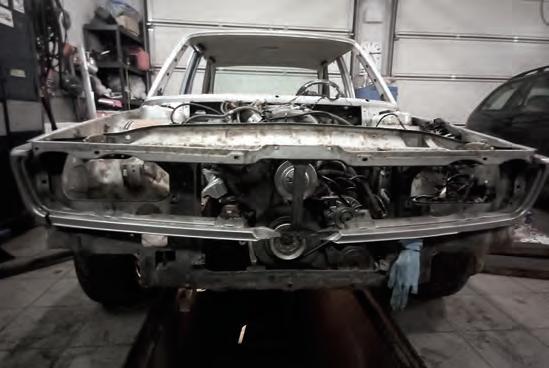

Configured in this way, the car was a remarkable success. In 1975, 100 units were produced, as this was the homologation minimum, but this batch sold out immediately. A year later it was 110 units, which, despite the high price, the market absorbed just as readily. The 530 MLE competed in various
races in South Africa and won in grand style. Could you want a better advertisement?
From there it was only a step to the next idea, offering customers who were not entirely satisfied with the power of their BMW 525 or 528 the possibility to send their units to Motorsport. There, they could have the engine replaced to a 218-hp 3.5-litre unit. Following this, 960 cars were prepared with the series bodies, but originally armed with sports components. These cars have a VIN which, once decoded, clearly indicates the car’s origin from BMW Motorsport GmbH and its 3.5-litre engine capacity. The M535 in the photos is just one of the 960 units mentioned.
This is a car that has gone unnoticed by collectors for a long time. The Bonaventura Classic Collection had been considering the idea of including such a configured E12 in their assemblage. The search went on for an exceedingly long time, and finally they found a promising specimen in Poland, having come from Italy. Unfortunately, in Italy, the vehicle stood under the open sky unused for a couple of years.
the speedometer showed signs of life, and that is only because it is mechanical. Fortunately, restoring the clocks to working order required only easy maintenance - cleaning the contacts. The cure for the rest of the inadequacies turned out to be a comprehensive overhaul. During disassembly, it became obvious that the low mileage was pure truth, evidenced by the negligible state of wear and tear on the car and its individual components.

In 2017, the president of the Polish BMW E12 club found out about it and decided to buy it. He was convinced that he had just acquired an excellent parts donor. However, when he took a closer look at the car back in Poland and discovered that the 50000 km mileage on the odometer was true, he decided that it was a bad idea to take such a car apart. He did not want to do any restoration work on it, so he sold the car. This is how this particular BMW ended up in the Bonaventura Classic Collection.
At the time of purchase, the E12 was tired but drivable. The comfort of a working engine was only temporary, as it turned out that - apart from the engine - almost nothing else in the car worked. Neither the lights nor the windscreen wipers operated due to electrical damage. Of the gauges, only
- The characteristic element here is the steering wheel - the same as in the M1 but with a different diameter. It is very pleasant to drive, which is why I participated in the international events organised by BMW clubs from Germany, Belgium, and the Netherlands.
Modern motoring gives us products without a clear affiliation. Identifying new cars with a particular country can be difficult. In our garage, there may be a French car made in the Czech Republic by a manufacturer belonging to a multinational concern. A concern where identity does not play a role. This BMW is also an international story. Here is a German car with an African thread in the background, purchased in Poland after years spent in Italy. The BMW E12 M535i shows that, like its contemporary counterparts, it too can be a citizen of the world. But it does so in a very sophisticated way.
















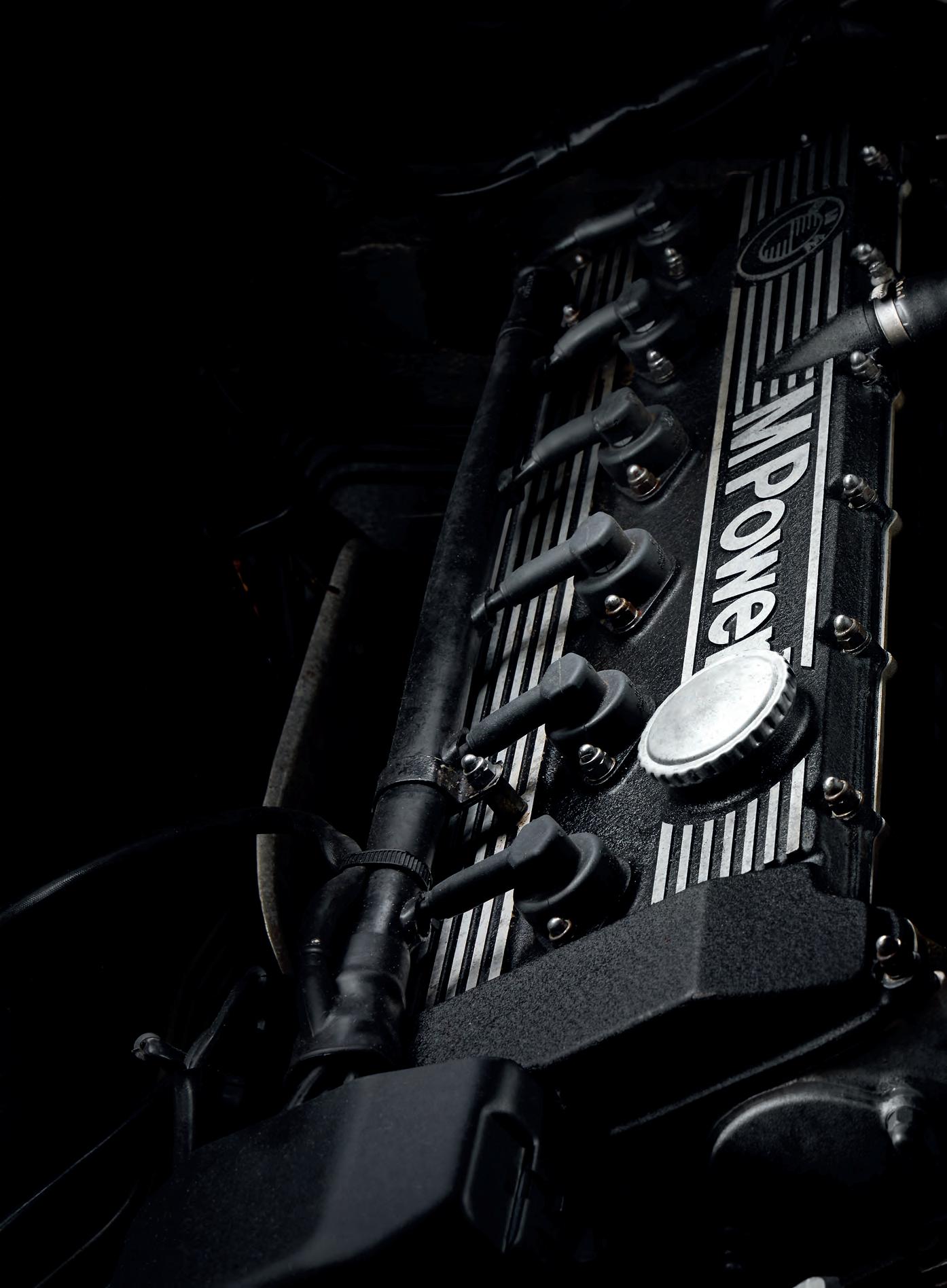





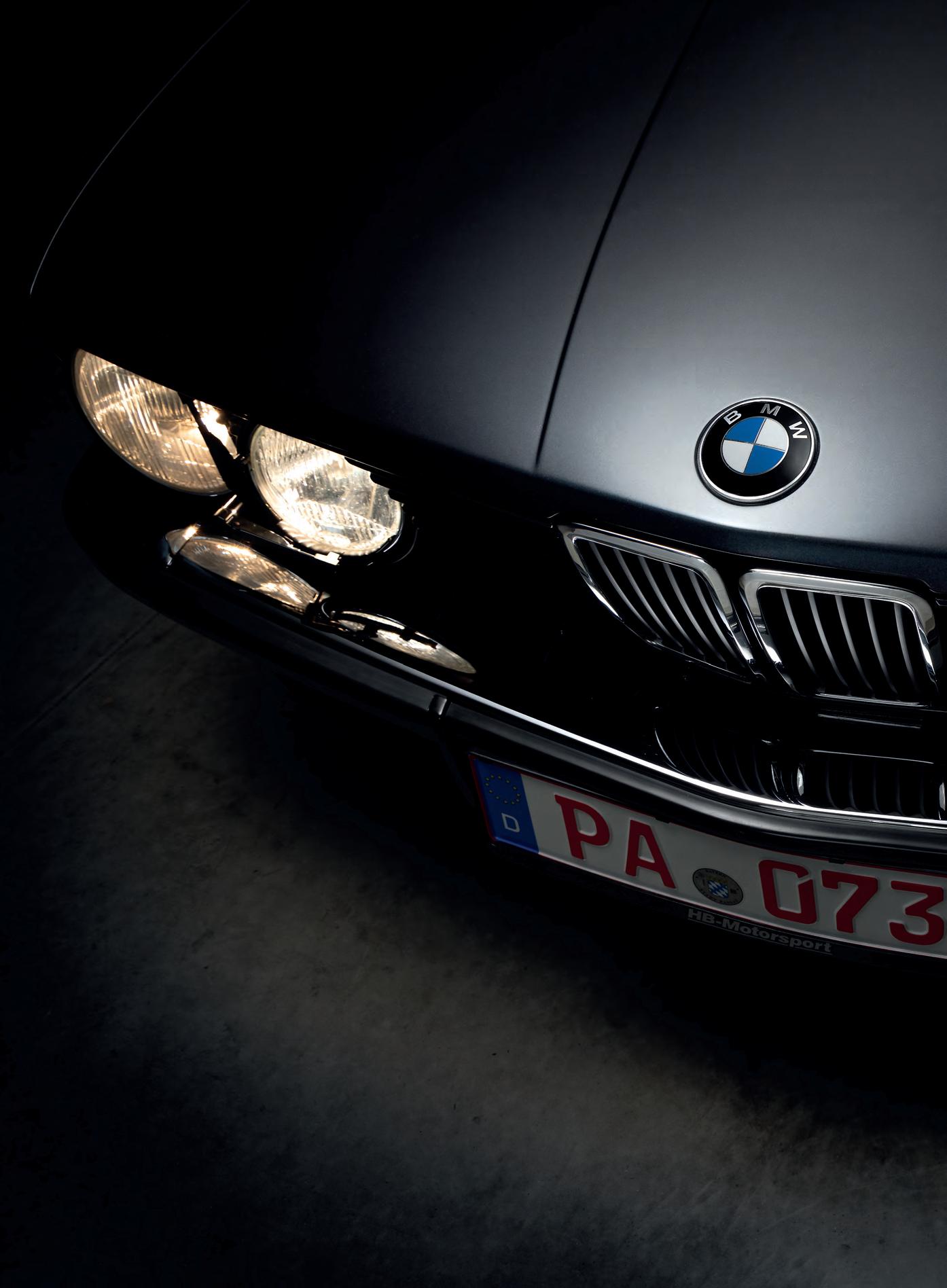
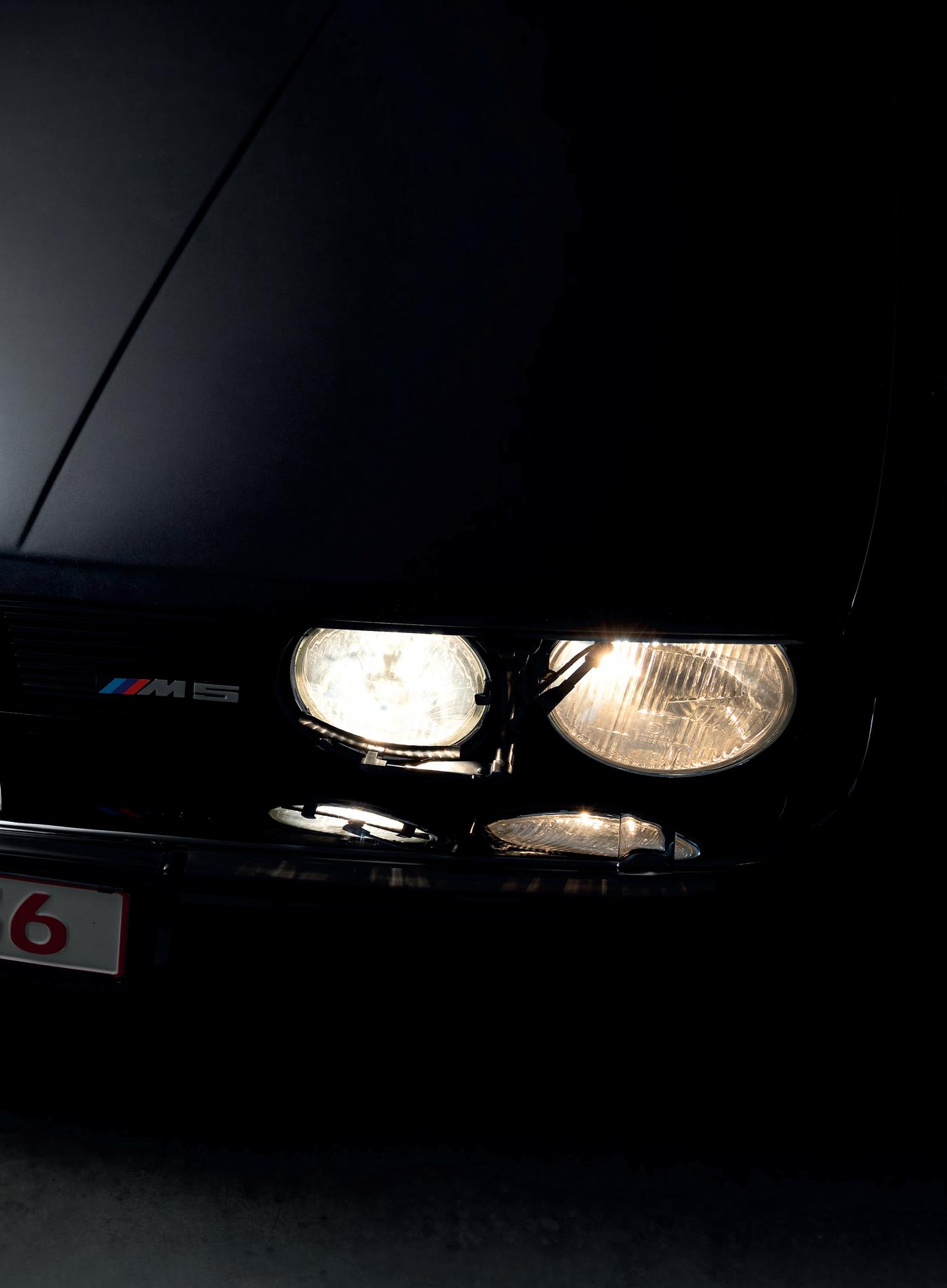










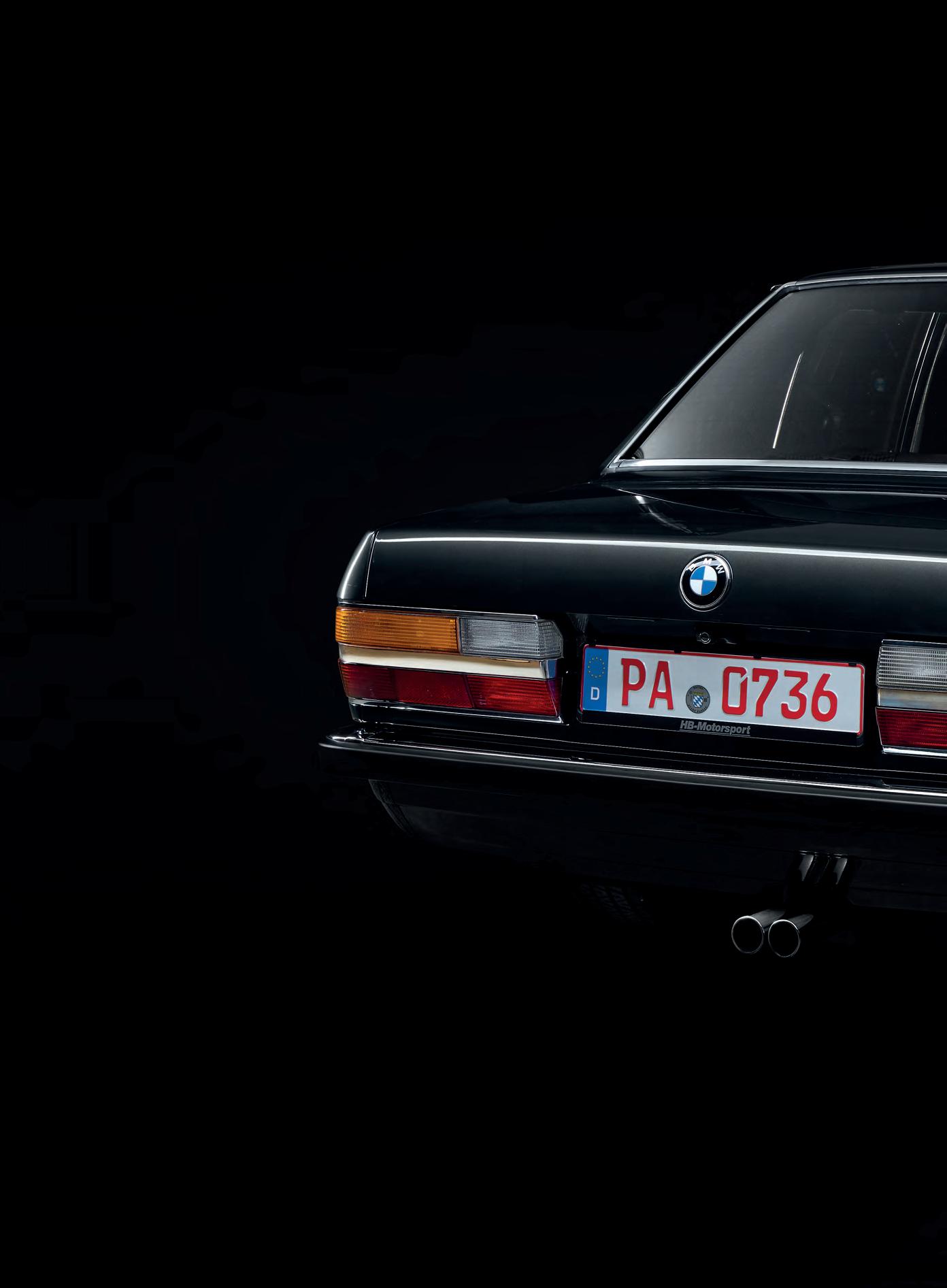
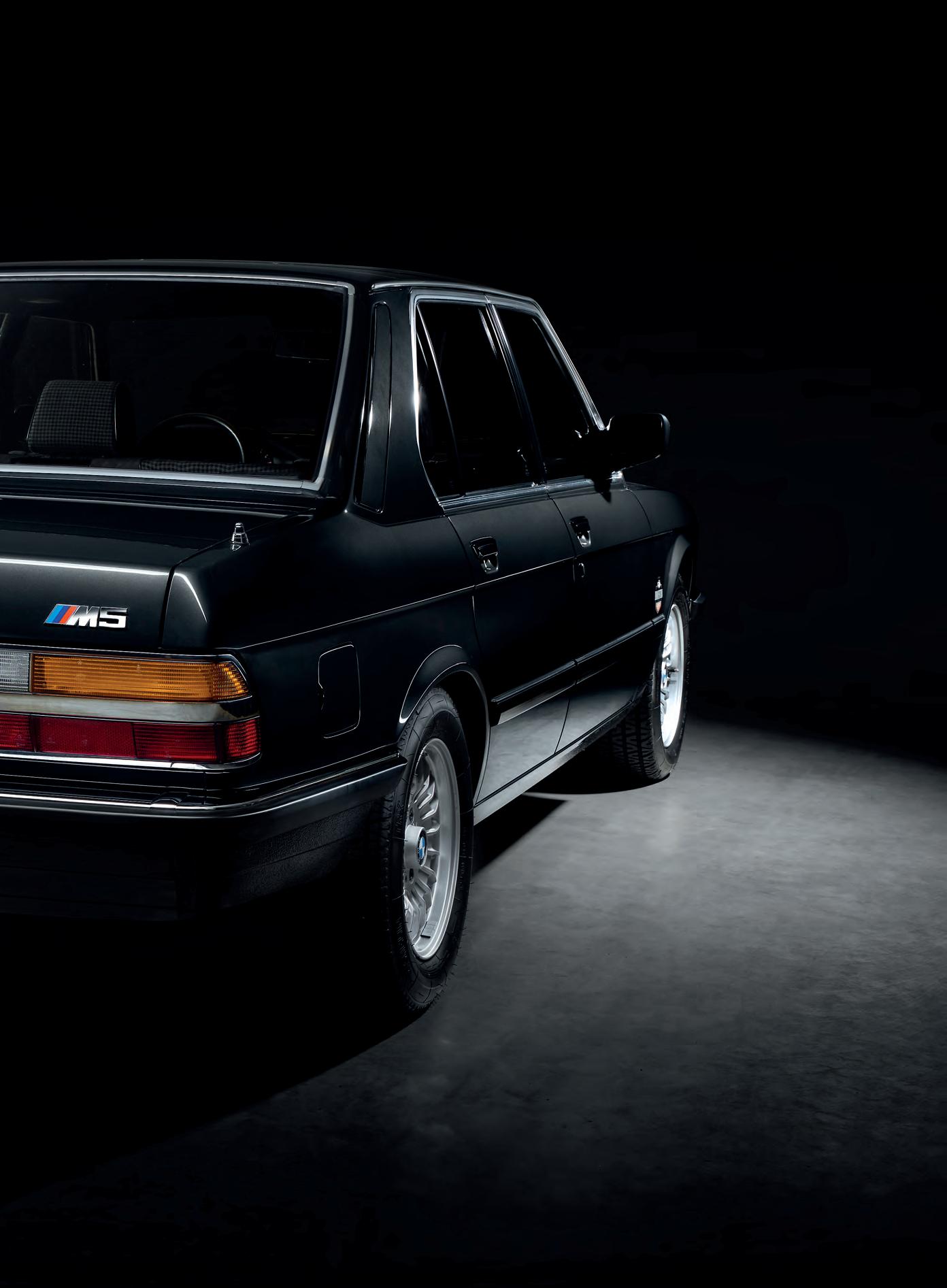




- I thought I had nothing further to look for as I am unlikely to find a better one. The paintwork, the interior - everything here is original. Its charm is that it gives the impression of a regular car.
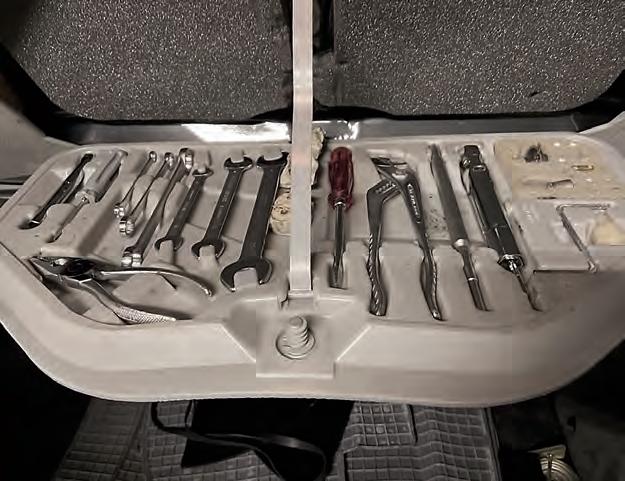
It is 1985 and the E28 - marked with the letter M - makes its debut at the Amsterdam International Motor Show. It is hailed as the fastest series-produced sedan in the world and will not let anyone take that title away for a long time to come. Probably no one realises that this is only the first instalment of a success story that would stretch over decades. But where did the M5 actually come from?
There are all sorts of anecdotes associated with the launch of new cars. It is no different in this case but, as the accounts assure us, life - not the company chronicler - wrote this anecdote.
In the early 1980s, BMW CEO Eberhard von Kuenheim drove a BMW 745i with turbo. His bodyguards drove the BMW 5 Series vehicles, which meant that the men were rarely able to keep pace with their own boss. They informed Paul Rosche of the problem. The engineer admitted that this should not be the case and undertook a redesign of the bodyguards’ Fives. The secret was in the subtlety with which Rosche approached the subject. He left the cars
untouched on the outside, but put suitably powerful engines, almost the same as powered BMW M1 supercar, under the bonnets. There was a buzz around the sports sedans… for the time being, only at BMW. It turned out that bodyguards are among those who dream to see themselves behind the wheel of civilian racers.
So, they took a decision in the boardroom: the BMW M5 makes sense and gets the green light. Thus, the second full-fledged ’M’ in BMW’s history was born.
The M5 seen in the photos is in its original condition, with no upgrades. The cassette radio, the wheels, the fabric upholstery - everything is in place and looks as it did the day it left the factory. The car came into the collection in 2020, by which time a Porsche collector had been using it for everyday driving around Augsburg. When he finally decided to part with it, the odometer showed 114000 km of mileage. One could not miss such an opportunity, especially when the search had been going on for a long time.

- When I was looking for this model, I set my sights on copies in their original state of preservation and with a mileage of up to 100000 km. It turned out that the E28 cars had disappeared from the face of the earth, especially the ones in the original condition, and there was nothing to choose from.
After three or even four years of search efforts, it was possible to acquire a BMW M5 E28 not only in exceptionally good
condition, but with full documentation and a completely transparent history. An additional highlight of this M5 is the checkered upholstery. The long-disliked pattern is nowadays more sought after than leather upholstery. This is one of 580 units produced for the European market. The car required no overhaul after purchase, all that it needed was simply a good maintenance treatment.
If we say ‘lucky’ here, this is no exaggeration. E28s have not had an easy life. Modified, tormented, pushed to the limits of technical feasibility, they became almost extinct. As time passed and prices fell, the E28 proved to be a favourite of juvenile drifters. The festival of lowering suspensions, replacing rims, exhausts and pushing the gas to the limit began. The M5 - clad in a whole host of extras - might have commanded respect at the evening school, but from a collector’s point of view it was finished. Add the fact that hardly anyone took care of add-ons of decent quality and
beauty and you get a complete picture of the E28’s ‘second youth’. It is a bleak picture, with an epilogue usually written in junkyards
The nail in the coffin turned out to be the appearance of the car. Or to be more precise, the lack of distinctive features (apart from the ‚M’ badge on the boot lid and another on the air intake). In the eyes of potentially interested parties, it was an ordinary sedan, looking like a 524-td model, which certainly did not add prestige.
Unjustly underrated, it became appreciated years later. People remembered that it was the M5 E28 that was the first BMW (next to the E24) to fit the 286-horsepower, 3.5-litre M88 engine from the M1. The unit had, admittedly, undergone modifications since the M1, but these were useful changes.
Production of the E28 ended in 1988, proudly replaced by the E34.
























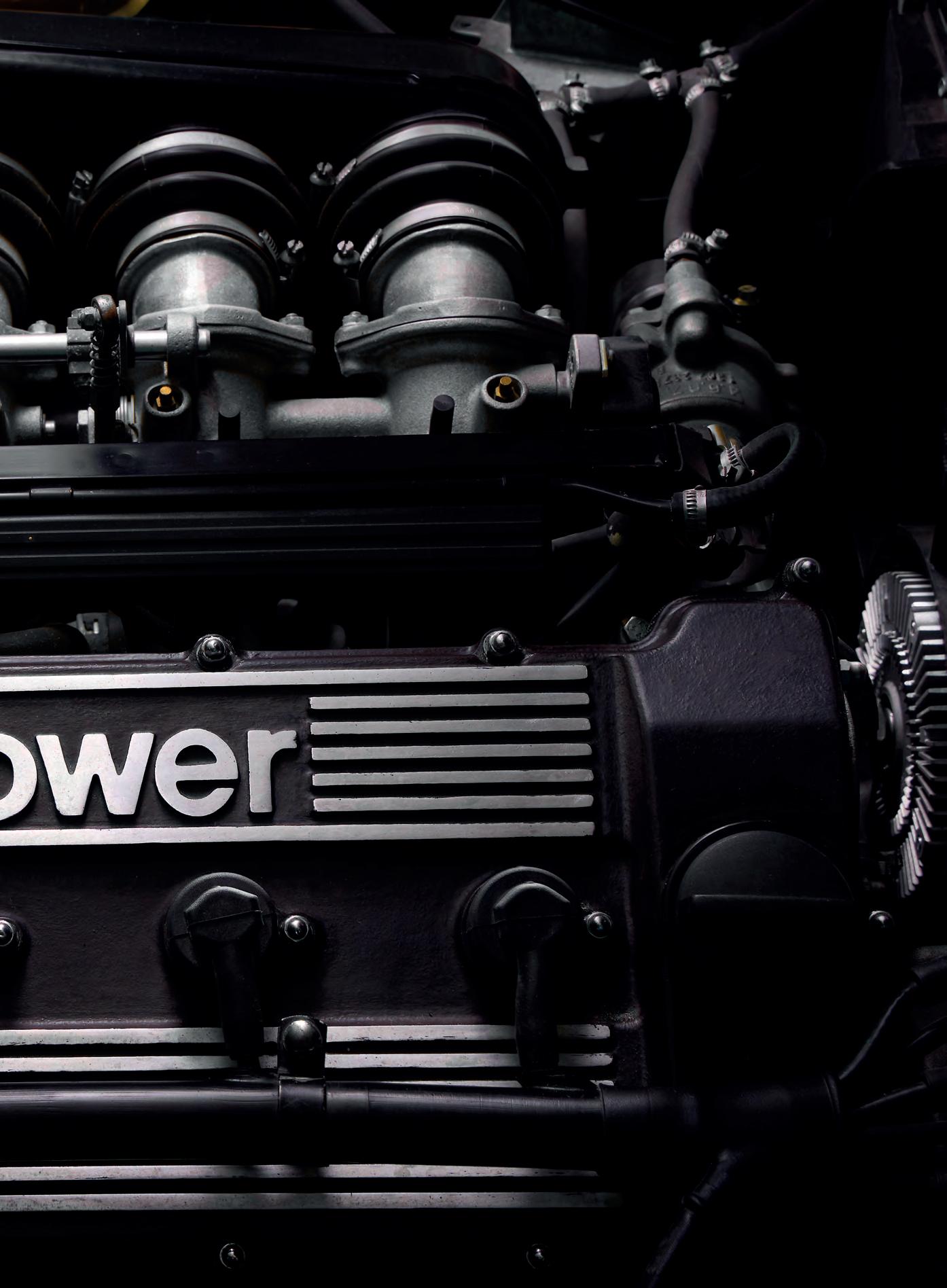




Amazingly fast and truly luxurious. In Germany it is known as the ‘Bavarian Express’ and that is the term that best captures its nature.
The M6 designation intended for use in the USA, Japan, and Canada appeared in the summer of 1983. In the European market, the fastest BMW at the time was the M635 CSi. Each year brought a mass of modifications, although the changes were symbolic and superficial. Over time, new engine versions appeared, power and equipment options changed. Unfortunately, this was not enough to maintain customer interest. By the end of the 1980s, demand for fast coupes was steadily declining. With a successor to the 850i already looming on the horizon, the management decided to discontinue production of the E24. On 6 April 1989, the last, 86,219th car left the production line. In 2002, the ‘Six’ reappeared in the BMW range. We are talking about the 6 Series coupe with the designation E63, but that is a story for a completely different occasion.
Pictured here is the car that started it all. The announcement of its sale appeared online in 2008. The vehicle was in the USA and, in the photos taken in California, it looked at least inviting.
It left the factory in November 1987. Its first and the only owner in America was a manager working for Metro Goldwyn Mayer. The BMW was sold by a Bulgarian broker, but its past, appearance and general condition were beyond doubt, and all that led to the decision to buy. Now the only thing to do was to wait excitedly for the day when the ship with the car would arrive in the port of Hamburg.
The longed-for takeover turned into having to swallow a bitter pill. Without a doubt, it was the same car as in the pictures on the internet, but in a condition that had nothing to do with the declared one. The man putting the car up for sale had used photographs taken much earlier. The only current photograph was the one showing the odometer, and had been taken in such a way that nothing else was in the frame apart from the numbers. The mileage of 166000 miles, the lack of modifications and the full documentation were the only components of the ad’s content where the broker did not misrepresent the truth.
Despite the obvious fraud, it was clear that the pursuit of justice would consume time and a huge amount of money. Since the car had already arrived in Europe, the best option was to simply put it in the workshop. This is how the repair marathon began. Unfortunately, one had the impression that after each visit to the mechanic, the car was in an even worse state. Enough to mention that the mechanics unfortunately wasted two engine blocks, which broke every time. The poor-quality repair work lasted for two years. In the meantime, the bodywork was repainted, although.... nobody had asked for that. There was a suspicion that the mechanics had simply wrecked the M6 and wanted to avoid responsibility. However, subsequent dismantling of the car and cleaning of the bodywork down to the bare sheet metal ruled out this possibility. It remains a mystery to this day why the workshop allowed itself such arbitrariness.
Time passed and the BMW was still not ready. Finally, in 2010, patience ran out. The owner contacted the BMW E24 club and found out when a meeting of owners’ club for the model was taking place. He went to the event to meet people from the BMW community, and this was an incredibly good decision. It is how he first met a mechanic and former rally driver who became the face of the Bonaventura Classic Collection for years to come. That mechanic was Helmut Bannert.
The biography of Helmut Bannert is a subject worthy of a separate publication. BMW commissioned him to make the cardan shafts for F1 cars himself in his workshop. At one stage in his life, he worked as a sports tester for ZF, a manufacturer of gearboxes and
differential shafts. As part of his duties, he evaluated cars with a new model of gearbox. Helmut would try out the new component and then report back on what needed improvements. His task did not end there. In the next stage, he and his partners implemented the changes using computer-controlled machine tools. It was only then that the checked and modified box went into production. BMW replaces its tooling set every few years. Helmut took advantage of this fact and bought machines that were going out of use. As a result, he now has equipment that, although not state-of-the-art, is top-of-the-range and ensures that nothing is impossible for the Bannert workshop, especially when it comes to classic BMWs.
- Helmut is unique. He is the one who brought the car to me in a good technical condition. Today Helmut specialises in my collection and is a part of the Bonaventura Classic Collection Family. I know that I can always rely on him.
This time it was no different. The M6 finally got into the right hands. One of the tests conducted was a dynamometer check. The result? 160 hp, a power output that has nothing to do with the BMW M6. Looking into all the nooks and crannies, Helmut caught himself every now and then. There was giant work ahead of him, but it was clear that this was a car that would repay him for his time.
Helmut Bannert decided to bring the American car up to European standards. He replaced the catalytic converter with a jet and spliced the head to a compression ratio equal to that of a European engine. A European computer (EQ) also appeared in the car. As a result, the dynamometer test showed not 261 (factory value), but 289 hp. This is even more than in exemplars with a European pedigree where 286 hp is the factory standard. Free of foul play, the BMW was finally able to show what it was capable of.
Today, the black M6 accelerates over 250 km/h with ease. It can go much faster and is a pleasure to drive. The car is not in original condition and the Collection owner uses it for driving during his pleasure trips around Europe. It has just small, not very visible, modifications like 6 -gearbox (from M5E34), stronger brakes (also from M5E34), shorter differential. With six gears the car is still faster than ordinary M635E24 - but can also accelerate to 100km/h in about five seconds. It is appreciated not only by its owner, but also by the motoring press. In 2010, you could encounter this vehicle at newsstands, on the cover of the Polish monthly ‘Automobilista’. Eight years later it appeared on the cover of another magazine in Germany.
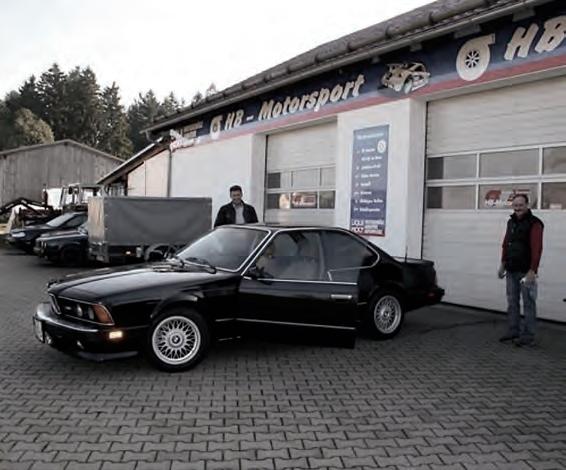





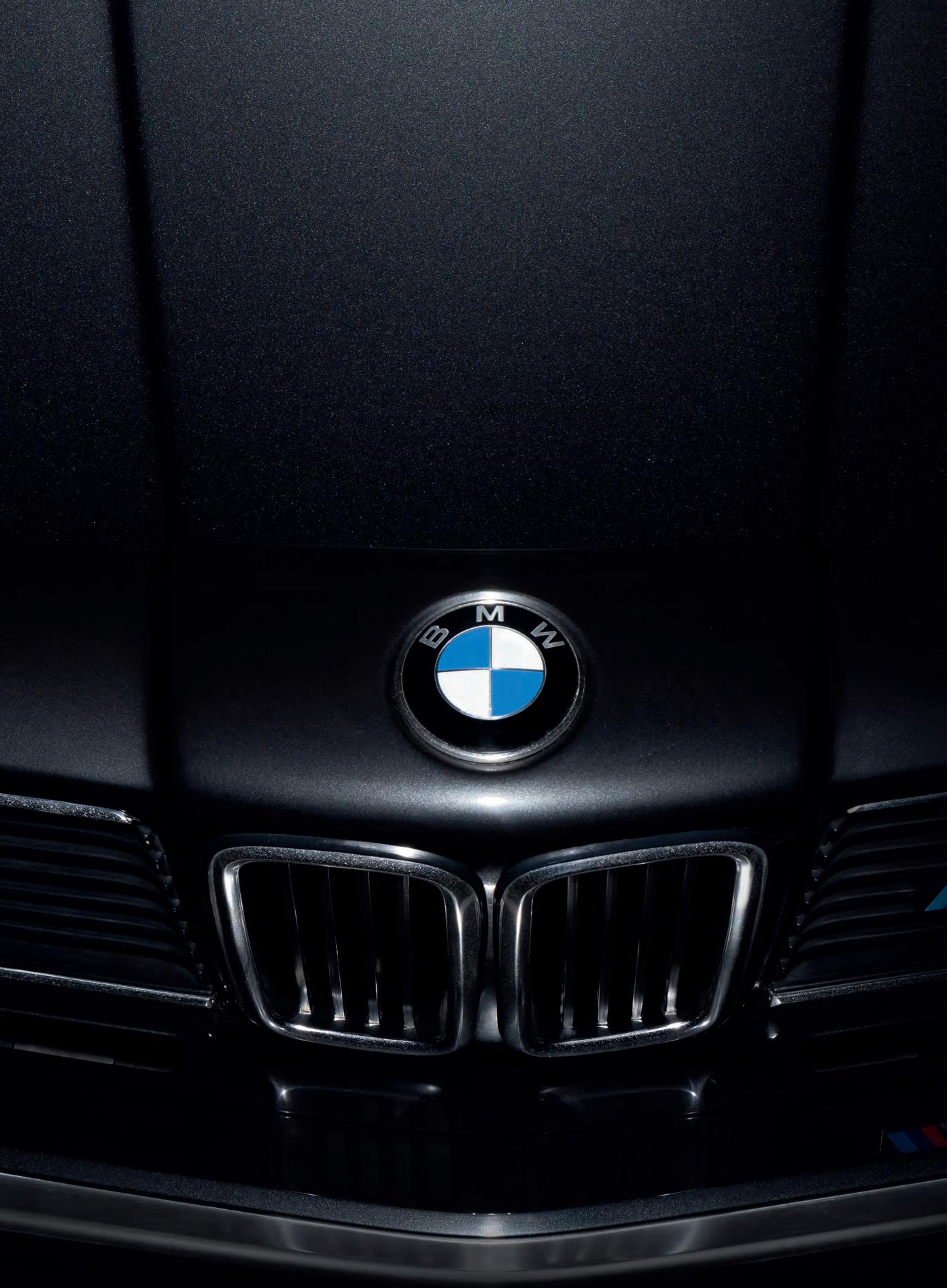





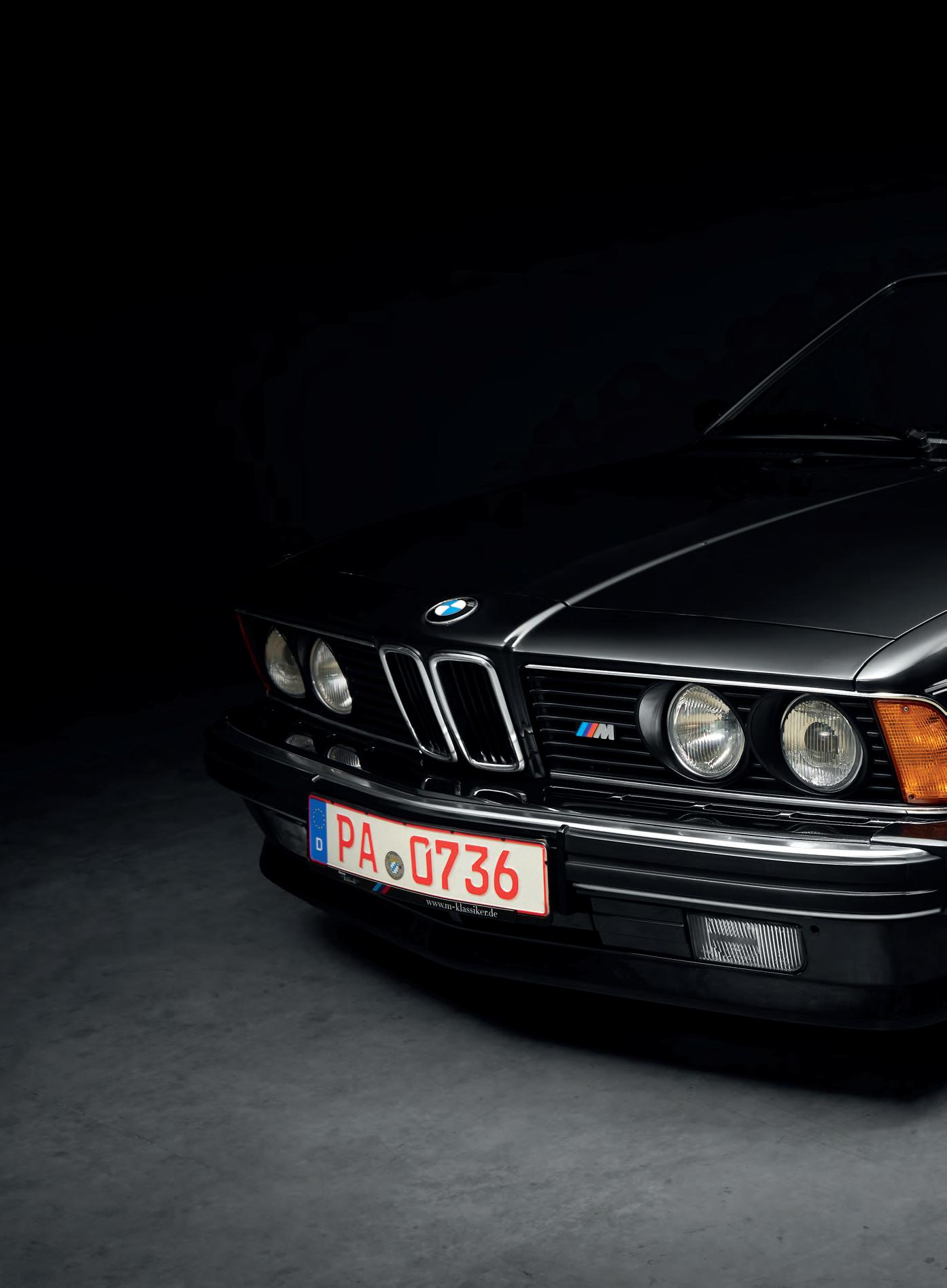





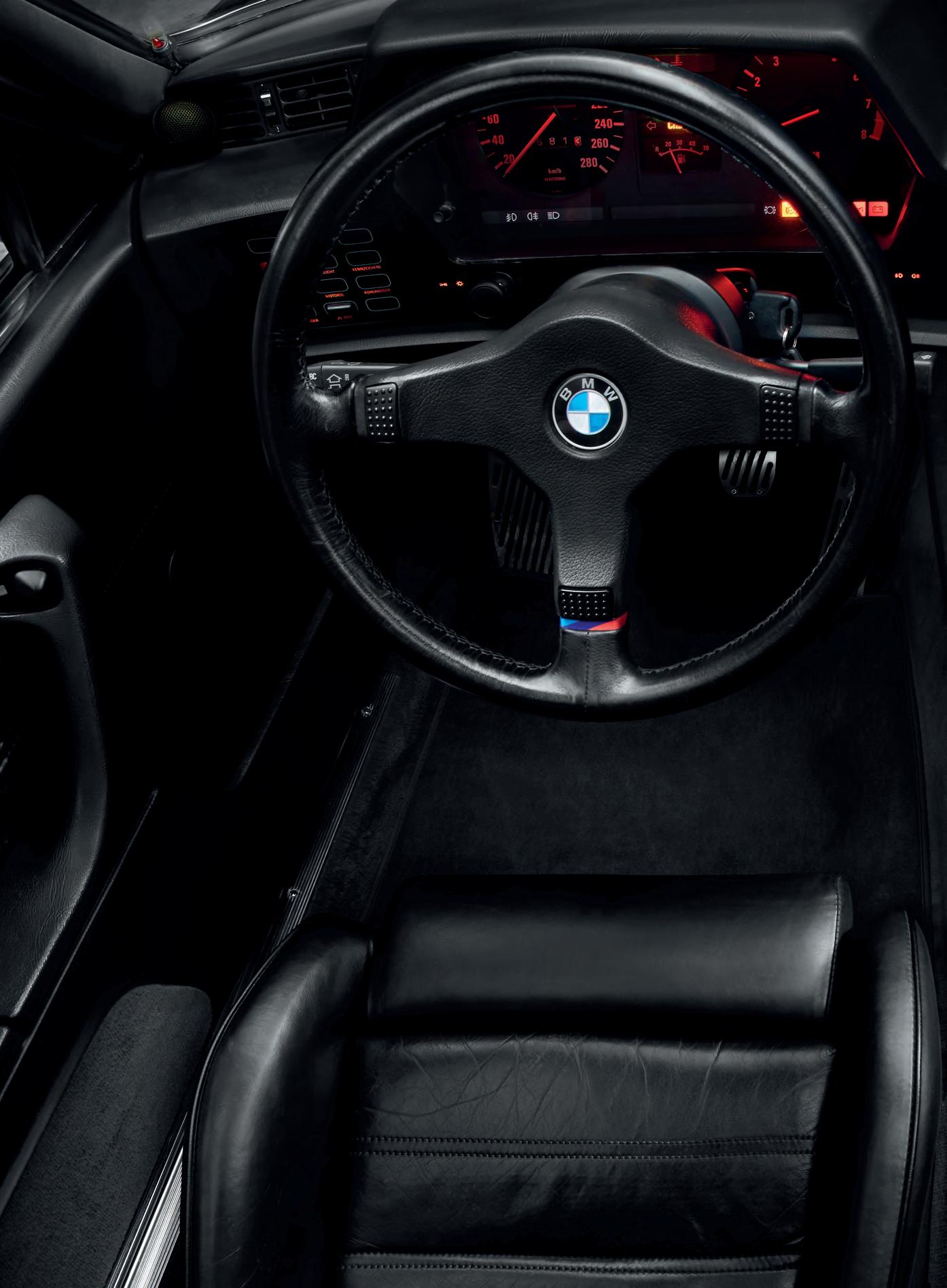






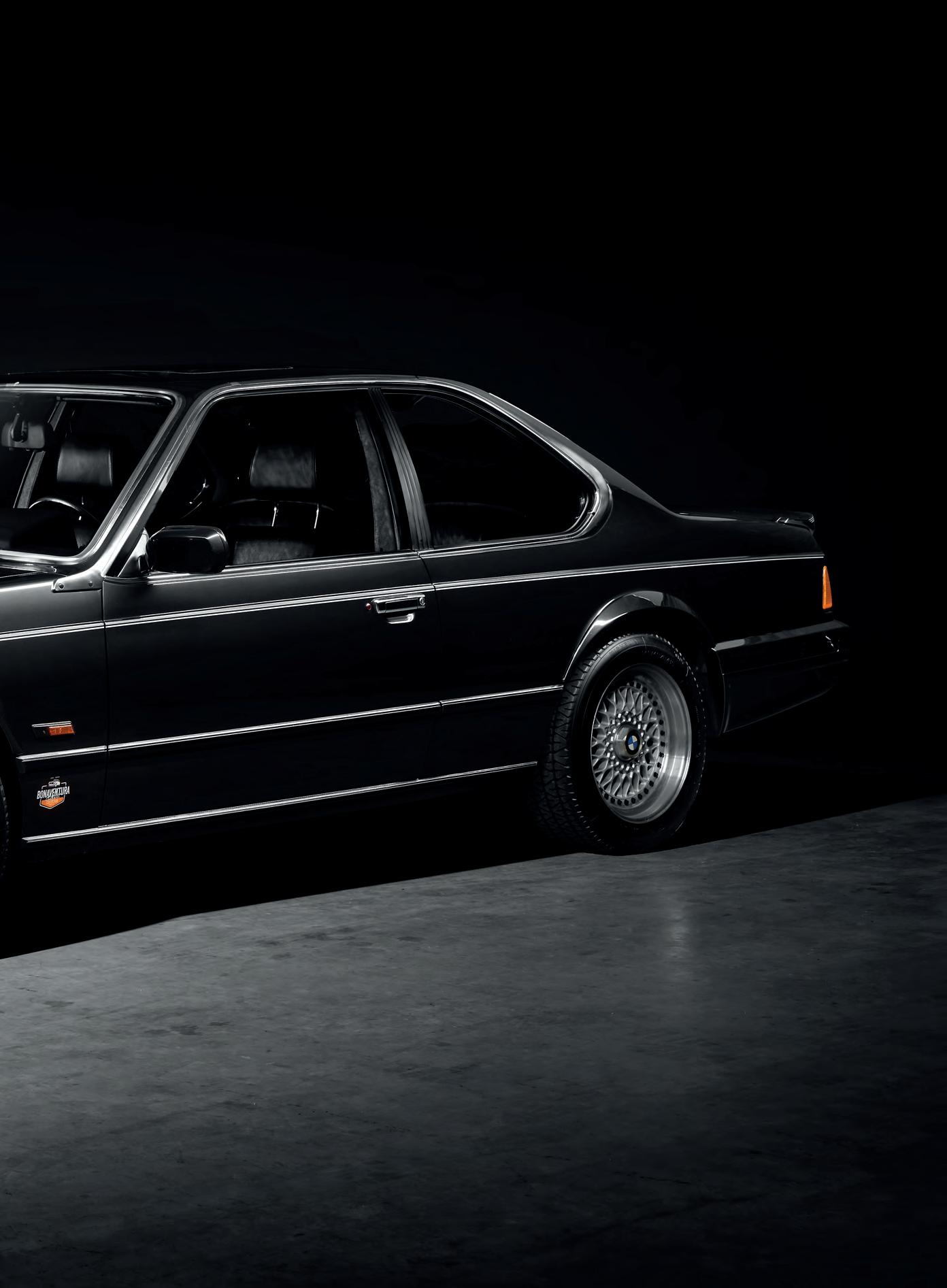




- I was looking for it for 10 years. It is one of my favourite cars.
It is usually worth knowing ‘someone who knows somebody’. The story of this car and the way it got to the Bonaventura Classic Collection is a perfect illustration of truthfulness of this saying.
- My uncle, a former car service technician, received a message from a mechanic known to him who had been working in Norway. It so happened that the BMW E24 arrived at the car service centre there. Since I was interested in the matter, I started exploring the news. It proved that the car came from Spain, where the ambassador of the Kingdom of Spain in Norway had purchased it from the most recent and most valued production series.
The diplomat took the BMW with him on his foreign mission, but then decided that the car was too unique to use it for everyday driving. He drove the shining E24 on the road on warm, sunny days only. One may tell nice stories about Edward Munch’s country but cannot say that such weather configuration occurs there very often. So, instead of being on the road, the car mostly stood in his garage.
When, after the years of his diplomatic mission, the ambassador knew that the time to return to the fatherland was near, he took a decision not to take his car with him and sell it. The BMW ended up in the hands of a Porsche collector, who had no far-reaching plans associated with the comfortable ‘Bavarian’, but rather considered it a sound investment opportunity and hoped to cash it in soon. The car’s mileage proved the lowintensity use; the odometer showed 52000 km. So, they did not stop to think about it for too long at the Bonaventura Classic Collection.
Although everything pointed to its history’s authenticity, they checked the vehicle very carefully, scrutinising its history to date,
its mechanics, the credibility of its visual condition. In a word, they screened it thoroughly. The verdict was unambiguous: we were dealing with a car that was extremely hard to find, and moreover, it was maintained perfectly well and with proven past, free of any awkward surprises. After the purchase decision in the year 2023, the new exhibit enriched the Collection. The only work they needed to do having acquired the car was just detailing, installing the original metric wheels and repairing minor things.
The car in the collection comes from 1988, but the BMW E24’s history starts much earlier. Its debut took place in March 1976. The beginnings were difficult. The car was expensive, which is not reprehensible per se, but the fact that clients - having paid so much money - kept complaining about shortcomings and manufacturing defects was inacceptable. The BMW management could not and wished not to sweep it under the carpet. They terminated their cooperation with the Karmann company responsible for manufacturing the defected units and moved the production to the BMW plant in Dingolfing. However, the word ‘termination’ is not adequate here, because Karmann continued to participate in the creation of the fast coupe, but its contribution then consisted of the delivery of ready-made car bodies.
In hindsight, one can clearly see that the very moment of debut of such an expensive and fuel-hungry car was unfortunate. The economic crisis had just engulfed the world, raw materials were getting increasingly expensive, which translated into product prices, including cars. Obviously, the work on the E24 car started long before the economic collapse, and luckily so! The risk undertaken by BMW management turned out to be worthwhile - thanks to the loyal customers of their brand for whom sky-rocketing fuel prices could not spoil their mood to the extent of making them give up the desire to buy this stunning (though not cheap to run) car model. Well, it has long been known that you must pay for style and sportiness.
How much? In the mid-1980s one E24 M635 CSi used to cost the price of six comfortable, spacious and dignified Fiat Argenta vehicles.
As of today, is it possible to find another E24 in such a good condition? Of course, you may try, but not with a high probability of success. The ‘original in every detail’ E24 in its European version with a mileage around 50000 km is a white raven. We are talking about the model that, for years, people considered useful and perfect for everyday driving. After the lapse of time, when its price fell, it became one of the youth’s favourite cars. Extensive use - with driving styles not always consistent with common sense - after years led to the technical death of these vehicles. The ones that
survived bear traces of the years of intensive exploitation, and fidelity to factory specifications leaves much to be desired.
The owner admits that during the years he devoted to his search he had seen perfectly maintained BMW E24s, but they were vehicles belonging to various collections. Not one of them had a mileage lower than 80000 km.
Today the BMW E24 is an appreciated classic. Nobody would consider a BMW rally complete without this car, but if you want to see a specimen in factory condition, leave the rallies alone. You will find one among the exhibits of the Bonaventura Classic Collection, and here, at your fingertips – in this album.






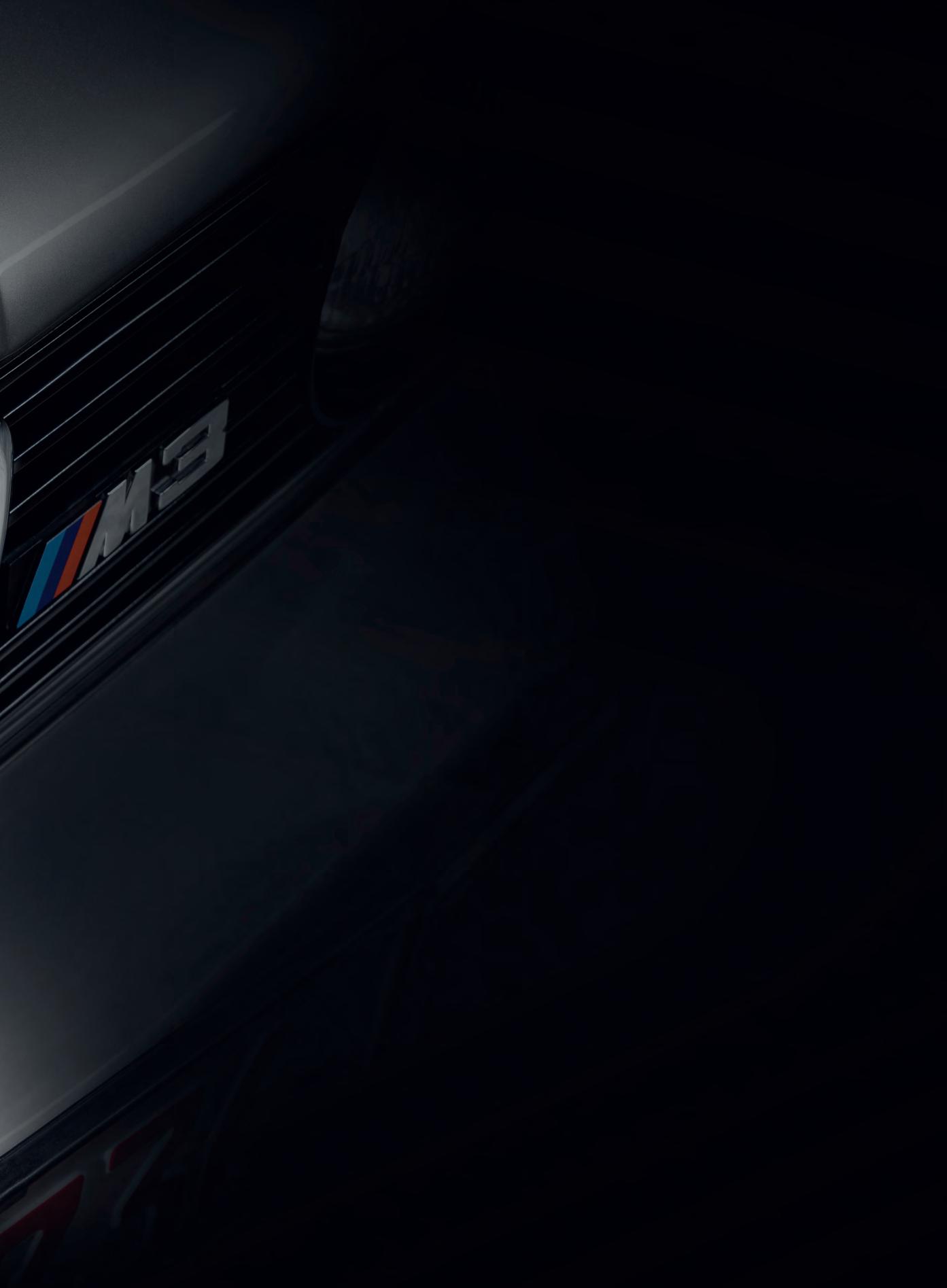





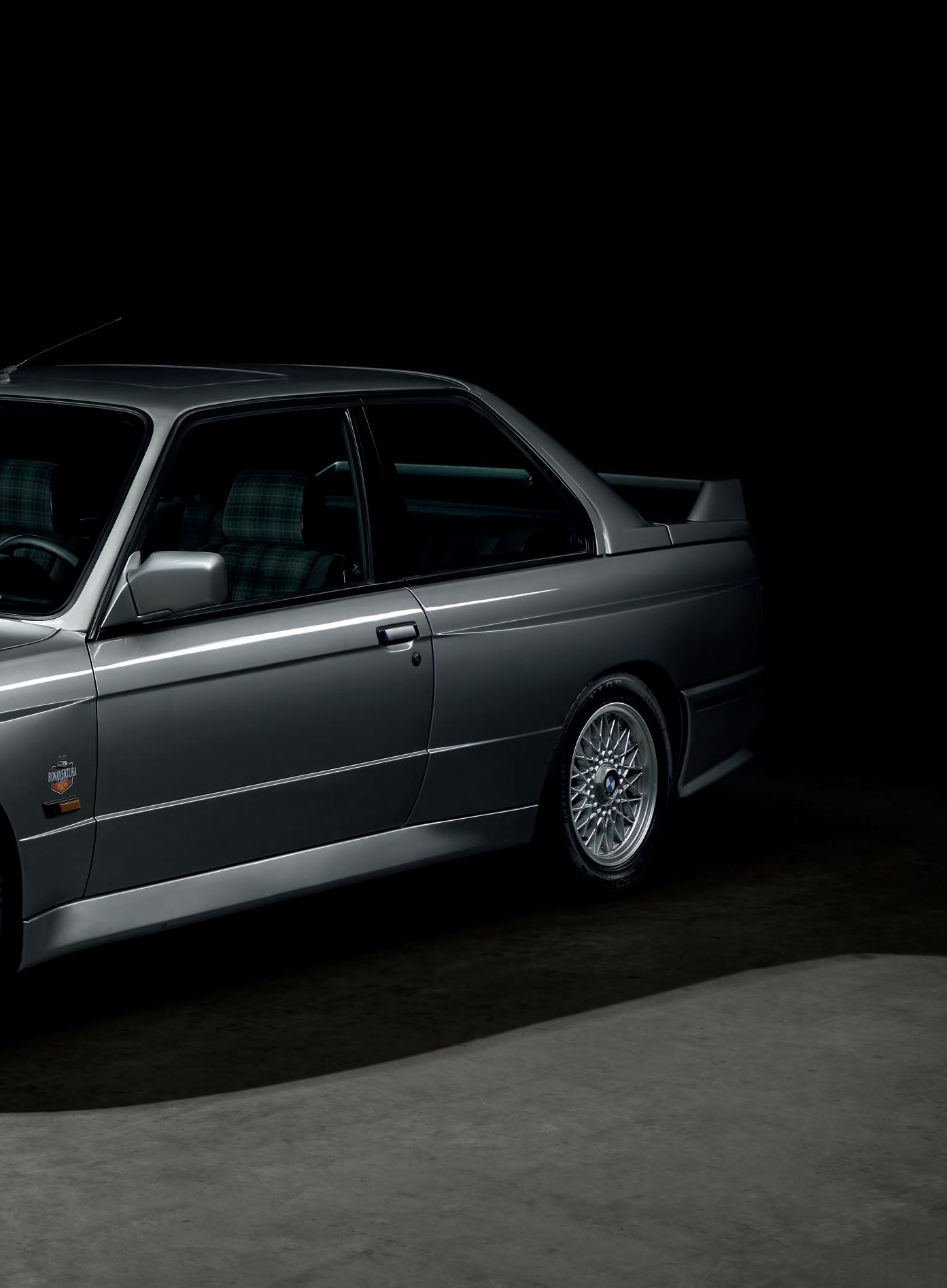




























- I got it from Belgium, where a rally driver - Wim Decock - had owned it.
Production of the E30 Series began in October 1983, but you had to wait until November to buy the first examples. Looking at the car’s tidy, thoughtful shape begs the question: how was the E30 perceived in the early 1980s? BMW did not want to reinvent the new ‘Three’. You can hear echoes of its predecessor in the body and proportions of the E30, but you cannot say that the engineers working on it took the effortless way out. They created a completely new, modern design, which became the basis for the first ‘M’ 3 Series. Years later, we may call the first M3 a legendary, even a cult car, without a guilty conscience. There are many cars with cult status, but it is extremely difficult to find a car with both a true cult status and a legendary spirit. This time they succeeded. If you do not believe it, just read on.
to ensure that the eyes of the motorsport world were once again on Munich rather than Stuttgart. The result? The M3 E30 is the most successful BMW racing car in history and is also the most ‘winning’ car in the history of the DTM. Do we need to add anything else?

The car in the photos arrived at the Bonaventura Classic Collection in 2015. Manufactured in Japan, it spent a large part of its life in Belgium. There, a racing driver was its user and he, as you can see, not only knew his car perfectly well, but also took great care it.
The BMW M3 is a two-door coupe directly derived from the E30 Series. It debuted in the autumn of 1986 and its creation resulted from a homologation requirement. If BMW wanted to enter the E30 into touring car racing, it had to produce at least 5000 homologated units with precise specifications. BMW produced the required number of vehicles, but the enthusiasm they generated exceeded expectations. In the end, the output reached 17970 units in all variants. How many of them were lucky enough to survive to this day?
It is no secret that BMW wanted to rub it into the face of Mercedes with its 190E 2.3-16, which was winning everything it could in the DTM. It was a matter of honour, for we are talking about a time when BMW was more associated with racing. The Bavarian manufacturer gritted its teeth and did everything it could
The condition of the silver BMW is simply excellent. This naturally adds to its attractiveness and makes it more interesting than the Evo Sport model, of which they manufactured only a limited number of pieces. For the uninitiated, it is worth mentioning that this is a car in which, for better aerodynamics, a special seal fills the gaps between the bonnet and the mudguard. Another visual difference was the air intakes fitted in place of the halogens, but otherwise the car looked almost identical to the M3. An interesting phenomenon was the M3 in a... convertible. Depriving a sports car of its roof is a peculiar idea, but in this case it was more about winning the favour of American customers than to enhance racing features. From the performance perspective, a heavier, less rigid convertible with inferior aerodynamics made no sense. However, the marketing point of view has its own rules.
Magnificent, high-performance, truly sporty - all this is true, but is there anything at all left of the E30 in the M3? As it turns out, apart from the overall shape, not much. Bonnet, doors, roof, part of the rear suspension - that is it. The BMW M3 is a car conceived from the outset - right from the start - with sport, performance, and performance in mind. Massive wheel arches,
spoilers, a plastic boot lid and a different slope of the rear window are just a handful of M3 attributes that one would look in vain for in its regular counterpart. Of course, the thing that had the least in common with the polite ‘civilian’ version was what hid under the bonnet. Depending on the version, this could be a 2.3 or 2.5-litre engine with power ranging from 200 (194 with catalytic converter) to even 238 hp in the most powerful and exceedingly rare Sport Evolution/EVO3 variant.
One should note that we are talking about a unit developed at the BMW Motorsport specifically for the M3. So, based on all this, we can clearly see that that we are dealing with a racing car adapted to street traffic.
One can, of course, turn up one’s nose and say ‘what kind of a racer is this’, when every successive generation of the M-Type has been incomparably faster, more powerful,
and better. Why insist on something which, in retrospect, is not the only one, but simply the first one of excellent cars in this class from BMW? The point is not to be stubborn, but to appreciate what this generation of M3 is all about. Here is a car that required a great deal of effort from both engineers and stylists, right through to marketing. The technology of the mid1980s allowed for great achievements, but not as much as even a decade later. Viewed from this perspective, the M3 E30 is like a glass of juice squeezed to the last drop.
The M3 E30 is the ultimate proof that cars can inspire the truest desire. This inconspicuous vehicle provides such a merry-goround of sensations - it is a good thing that, for many of us, it will remain a sigh from the realm of dreams. It frequently happens to people who have their dreams come true to go mad. But what if the madness originates from happiness?
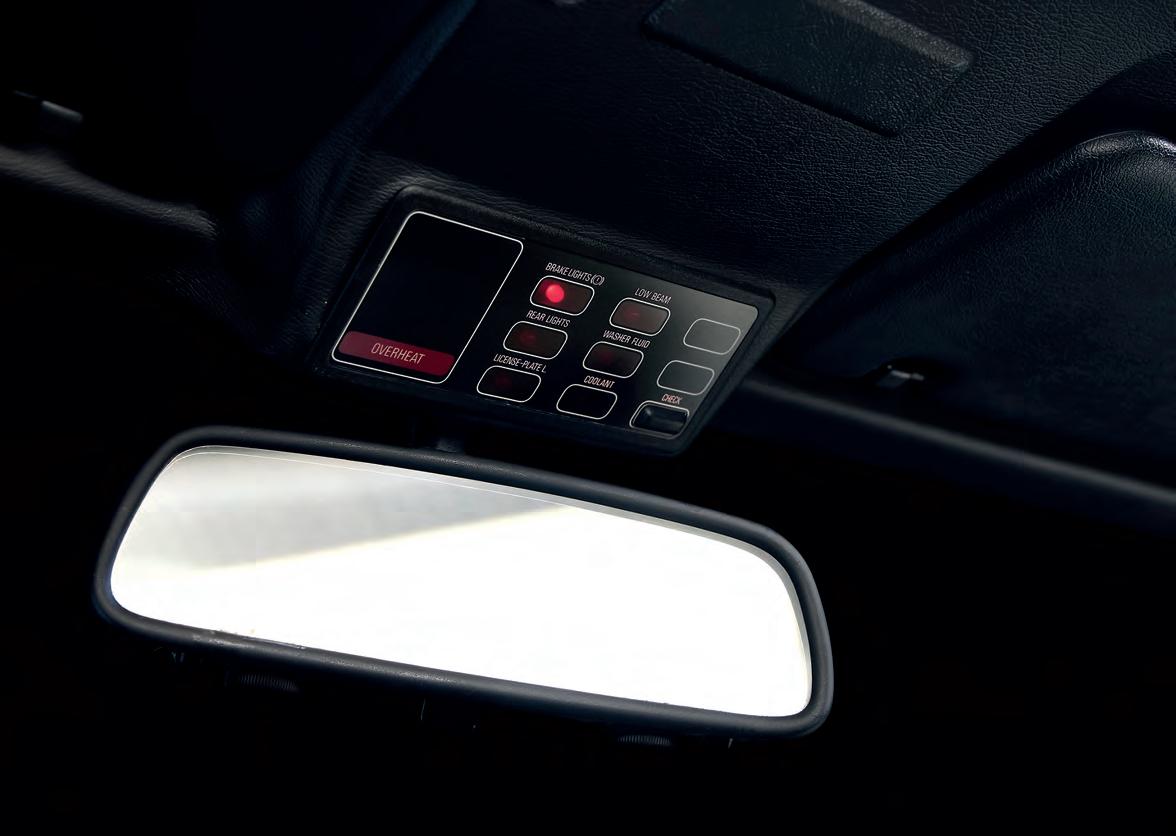











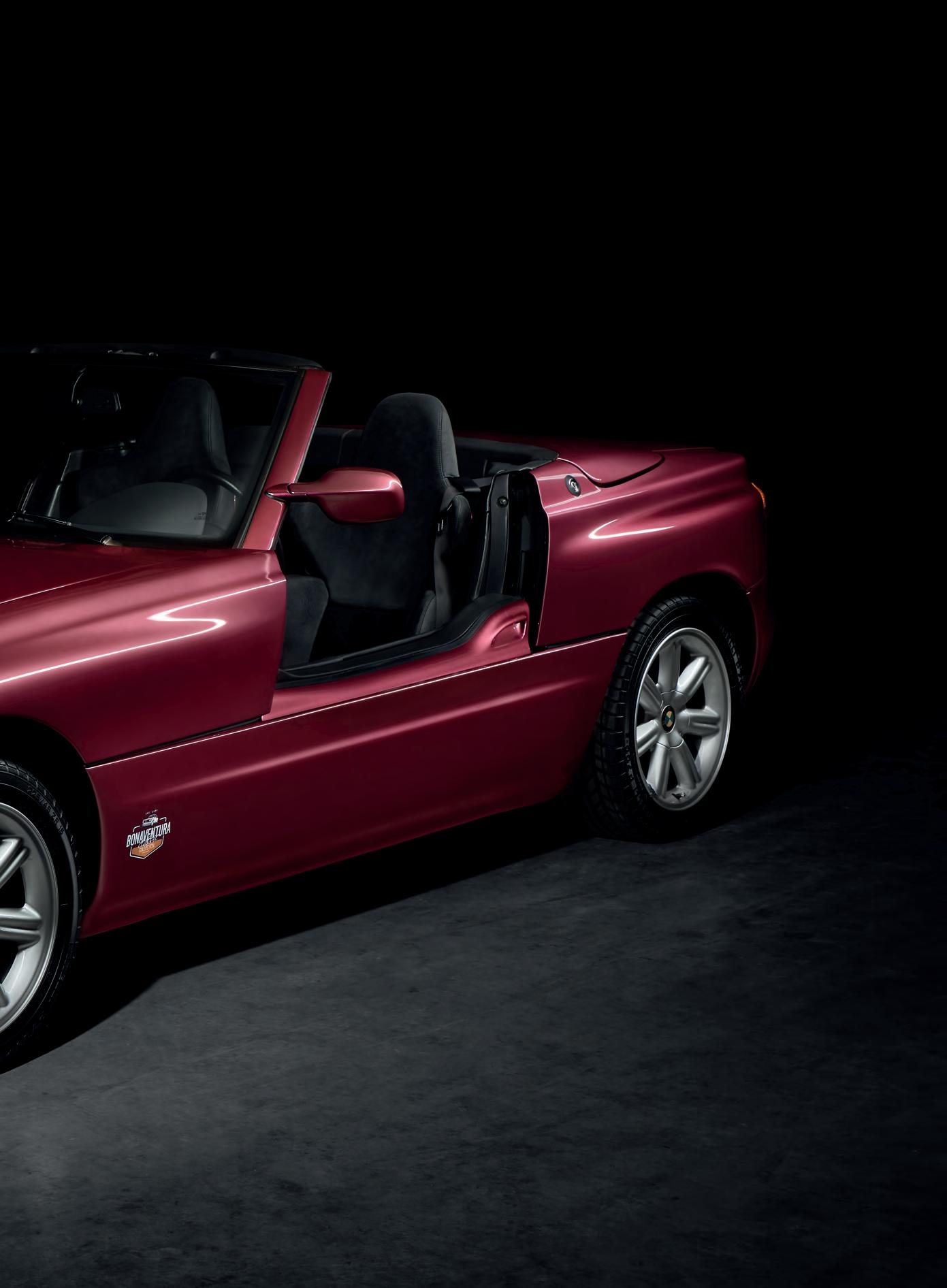





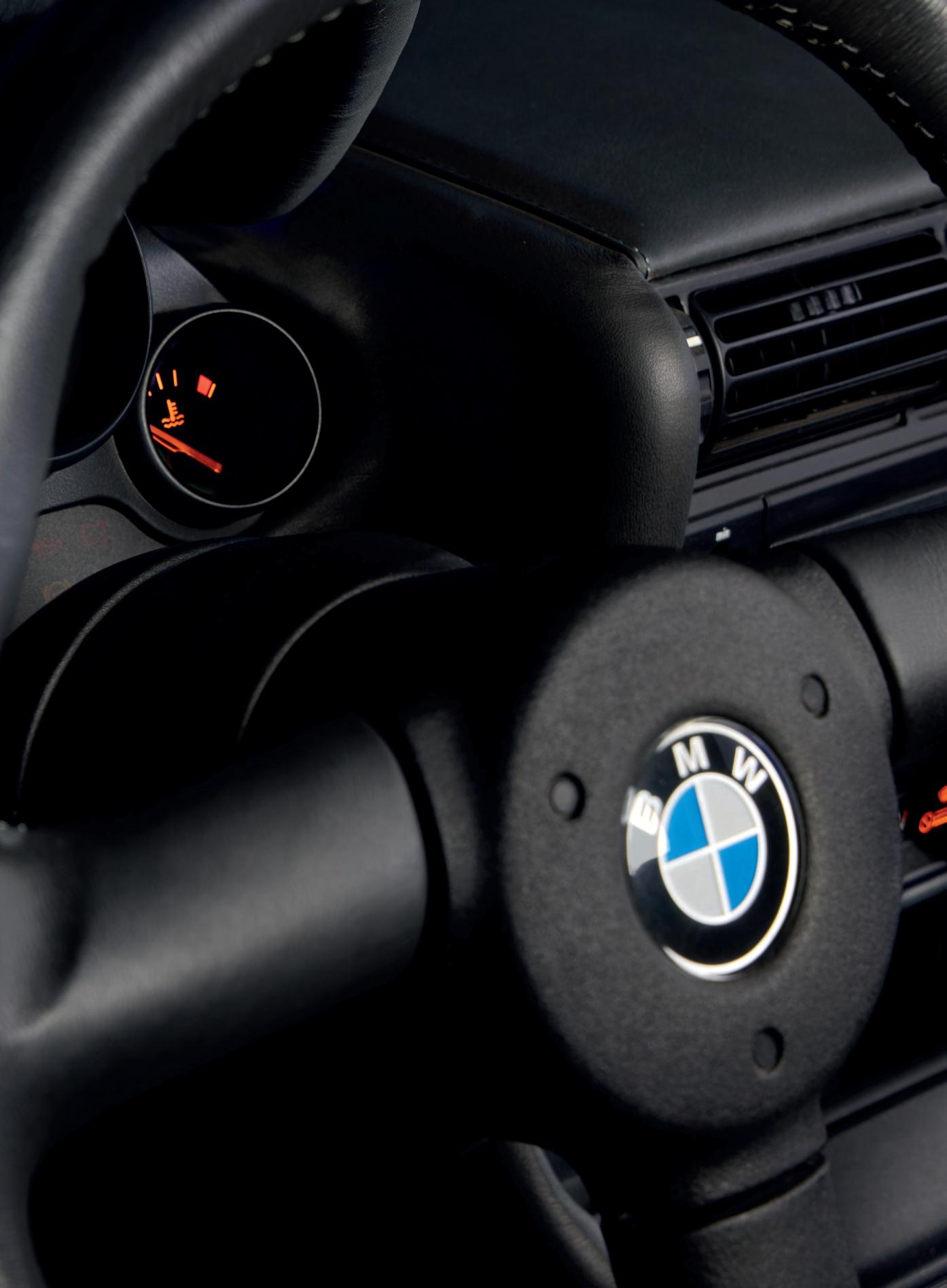











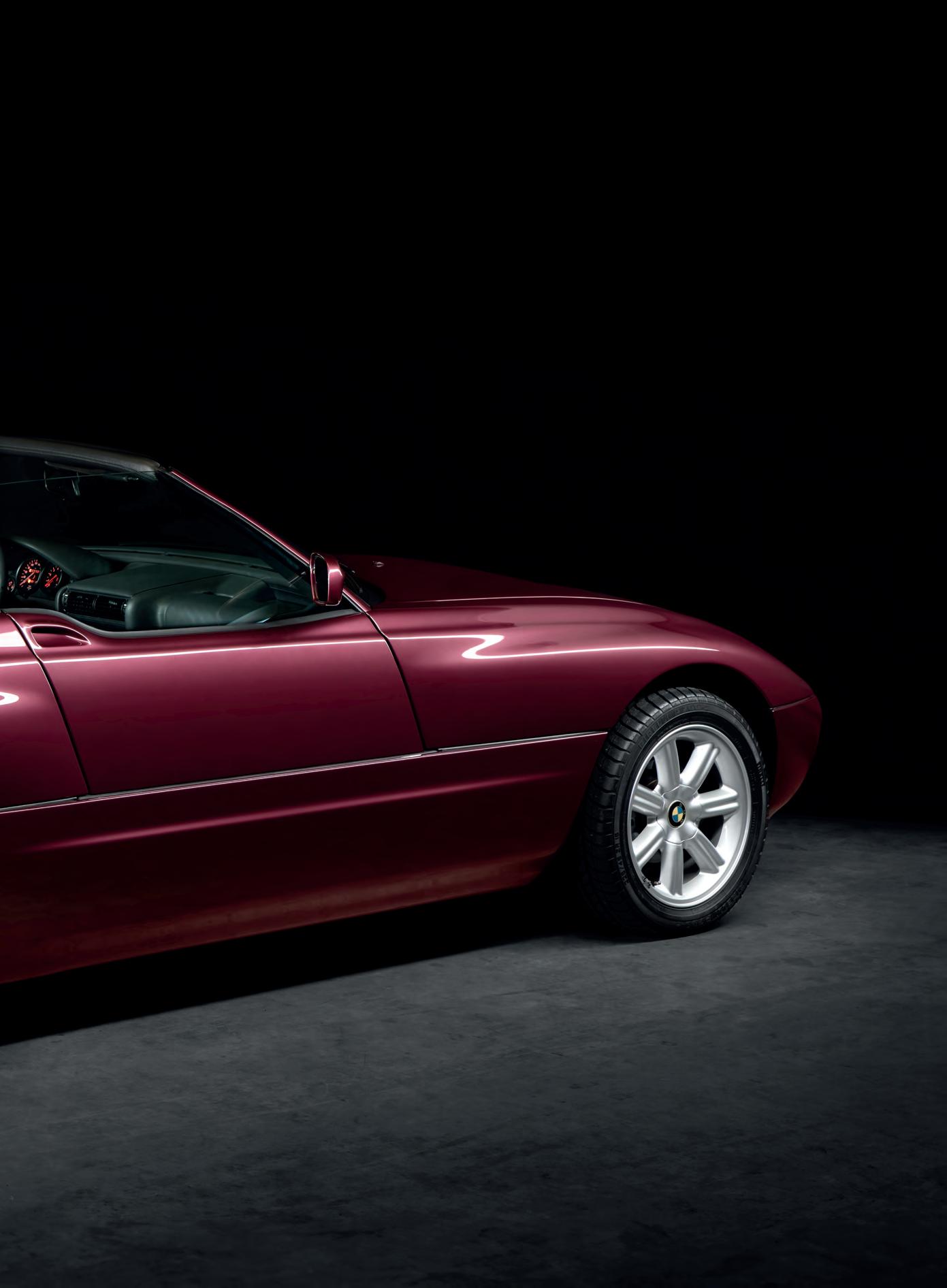




- This car has never been sold. When I bought it, it had 380 km mileage. Today it has 426 km.
Every now and then we hear about discovery of a car that for some reason, never hit the streets. Such finds are an absolute rarity and models preserved in this way are absolute rarities years later. The only owner of this specimen was a BMW dealer from Bremerhaven. Instead of selling it, he decided to keep it and treat it as a showroom ornament. Although nobody drove the vehicle, and the tyres from 1991 can still be seen on the wheels, there is a set of printouts confirming regular servicing and oil changes. From the documents, we learn that even the timing belt was replaced in 2016.
One piece of equipment is a radio that does not pick up. This is probably the only case where such a situation can be taken as a positive! To get the receiver to work, one would have to enter a code hidden in the factory envelope. By entering the code, we would gain the possibility to listen to music, but we would lose the privilege of having an envelope that has never been unsealed, maybe the only one of its kind in the world.
The largest number (more than 6,000) of Z1s left BMW’s works in red paint. The Magic Violet paintwork seen in the photos was applied to only 207 units. This is not many, but not the least. A search for the rarest colour version leads us to a yellow unit. The only one that was produced. One of the purple Z1s that the Collection owns was used by television during the 1992 European Football Championship, played in Sweden.
The condition of the car can be described as new, because if we ignore the metric, it is indeed a new car. Driving it, or even sitting in the seat, gives us the impression of dealing with a vehicle that has just been bought from the showroom. Starting the engine, you must remember that - despite its age - it is still underpowered. You can feel the characteristic rough texture on the steering wheel and buttons. Every item added by BMW, such as the company’s cushion and service
book are factory foiled. Luckily, it never even crossed anyone’s mind to tear the foil coating. Even the inspections, although conducted regularly, were documented on separate cards so as not to disturb the ever-closed service book.
The car is equipped with a 175-hp, 2.5-litre engine. If we take the risk of going for a drive and irreversibly racking up the kilometres, we can enjoy a ride similar to a go-kart track. Even more so as the doors can be opened, or rather tucked into the sills, during the ride, in accordance with the regulations and homologation. The only condition is that seat belts must be fastened.
Two-seater BMWs with a sporty flair appeared as early as the 1930s. After the war, the brand forgot about cars of this kind for many years, their real return came in the mid-1980s with the appearance of the prototype Z1.
The Z1 was the first result of work on a newly established unit, BMW Technik GmbH. This technological division’s task was developing and proposing new models, preferably full of innovative ideas.
Production of the Z1 started at the end of 1988. Did such a car make your heart beat faster? Yes, and even before it could fully demonstrate its capabilities. The first twitch of the pulse came from just looking at it. The electrically retractable doors in the door sill, the easily removable plastic body parts - such details are impressive even today. For the second time, the pulse quickened because of the price. The Z1 was priced at 83,000 marks. Suffice it to say, it was enough to give 60,000 for a well-equipped 535i.
The surviving models still hold their value today. How much are they worth? You may find the answer by browsing the annual price lists, but a voice in the back of your head tells you that in this condition and with this history, this car is priceless.











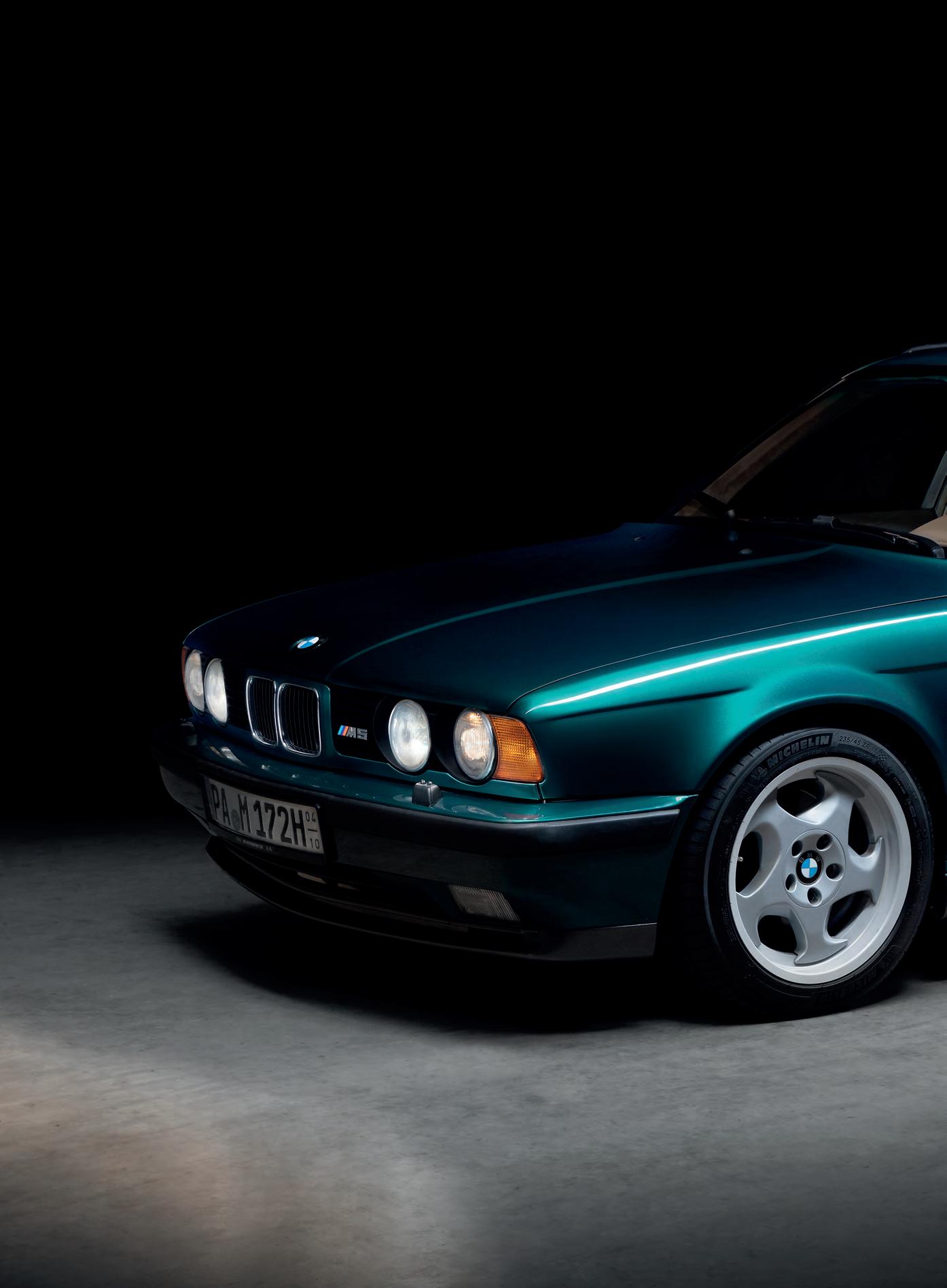
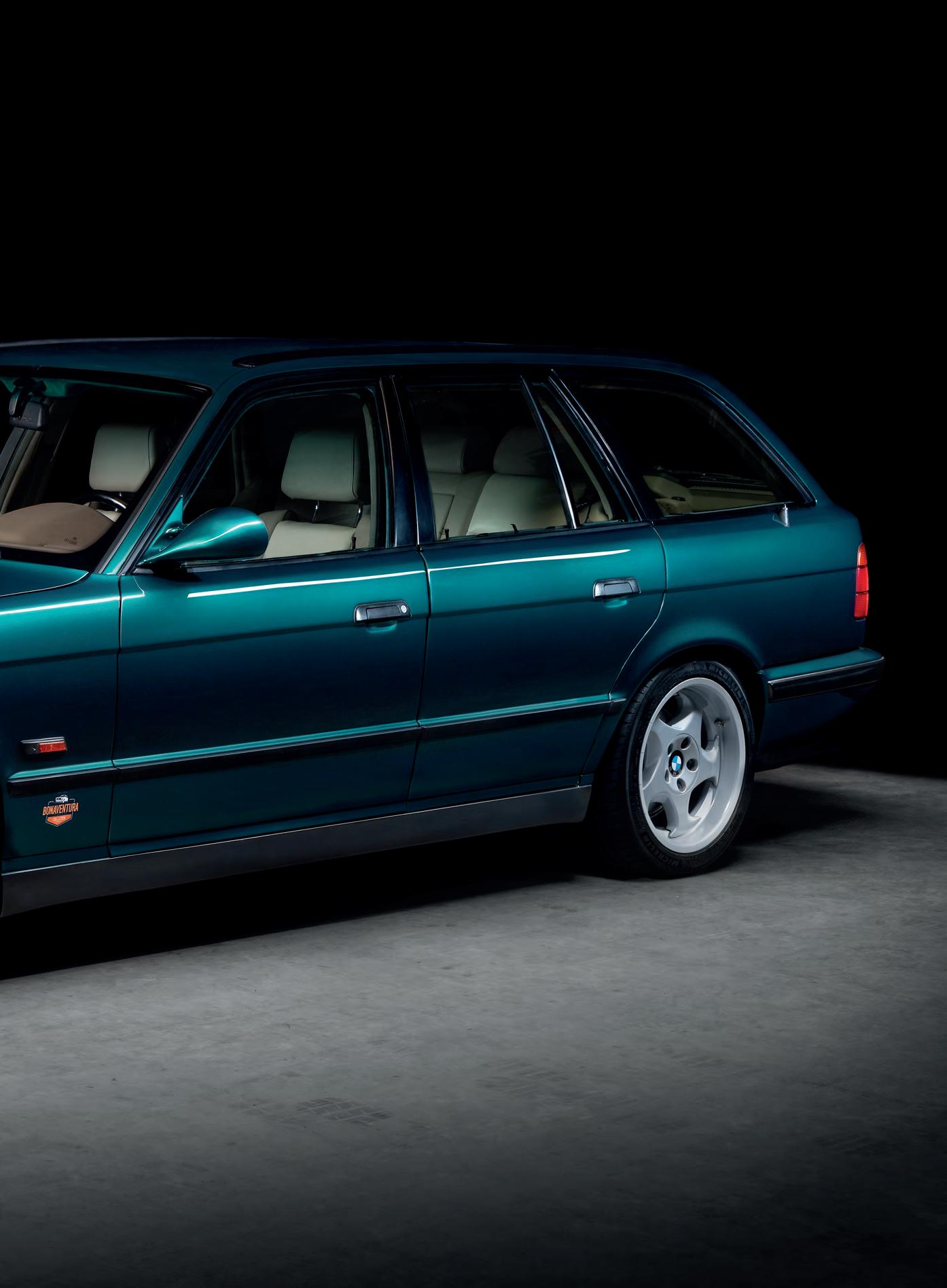




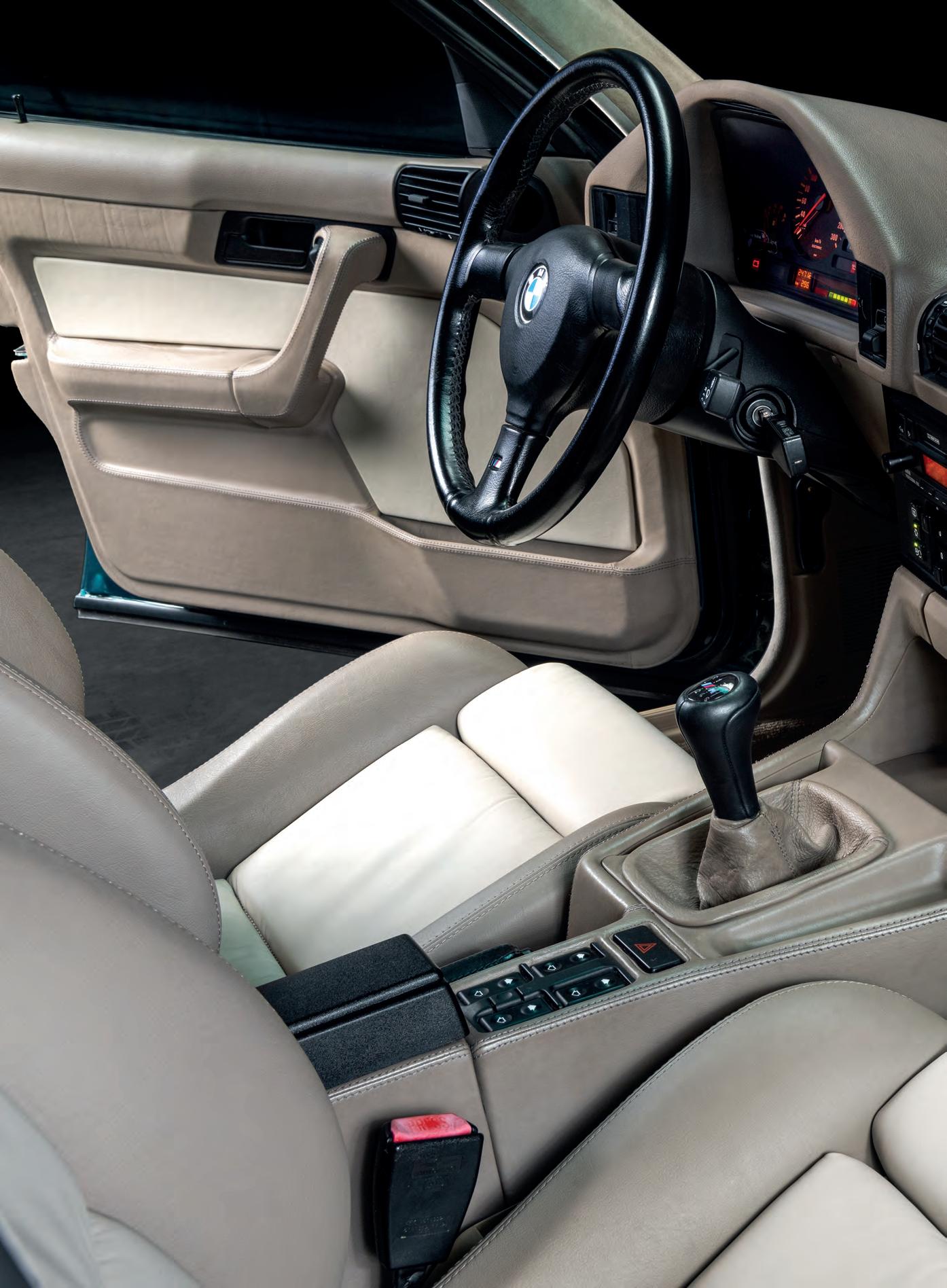





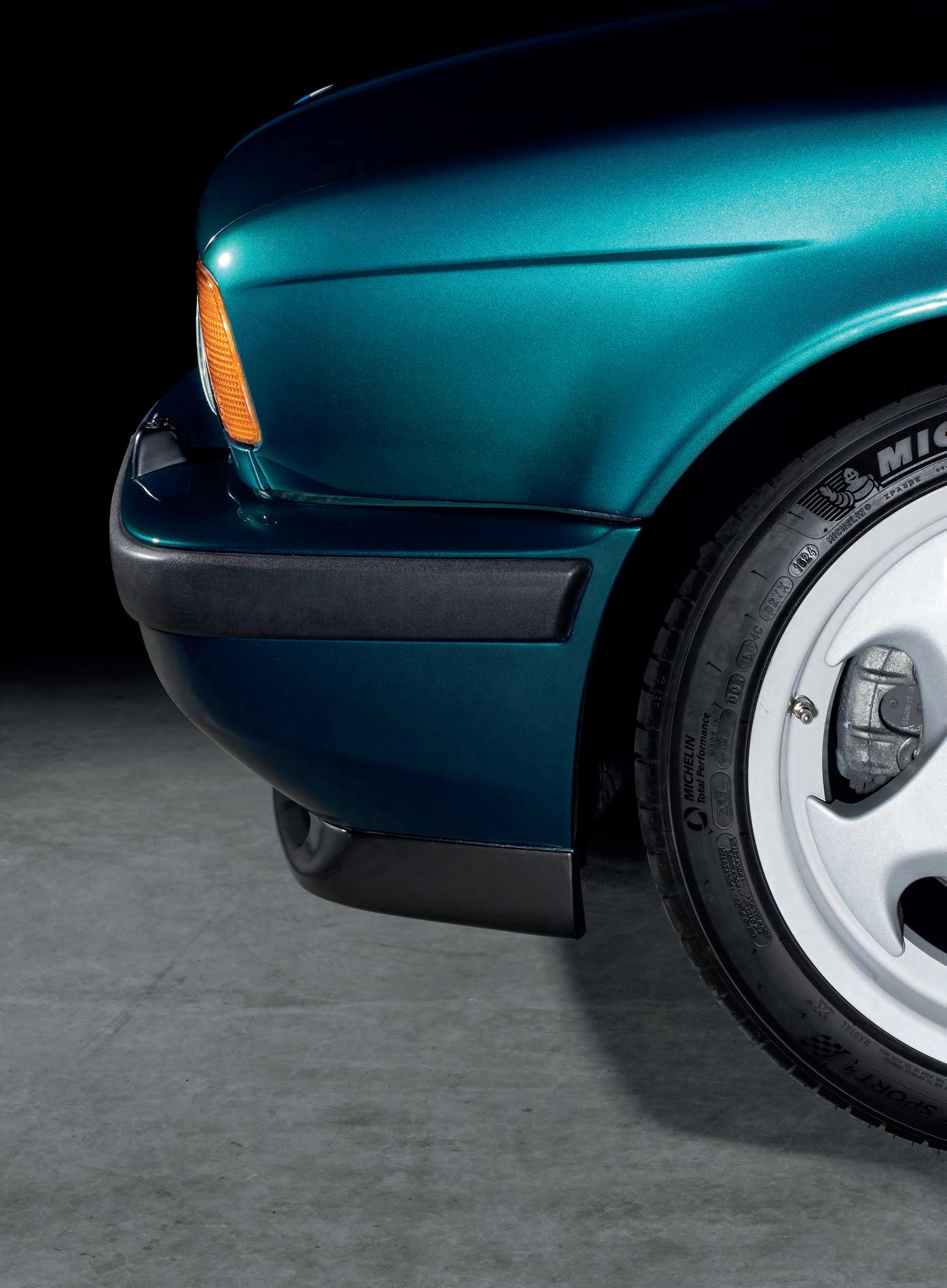
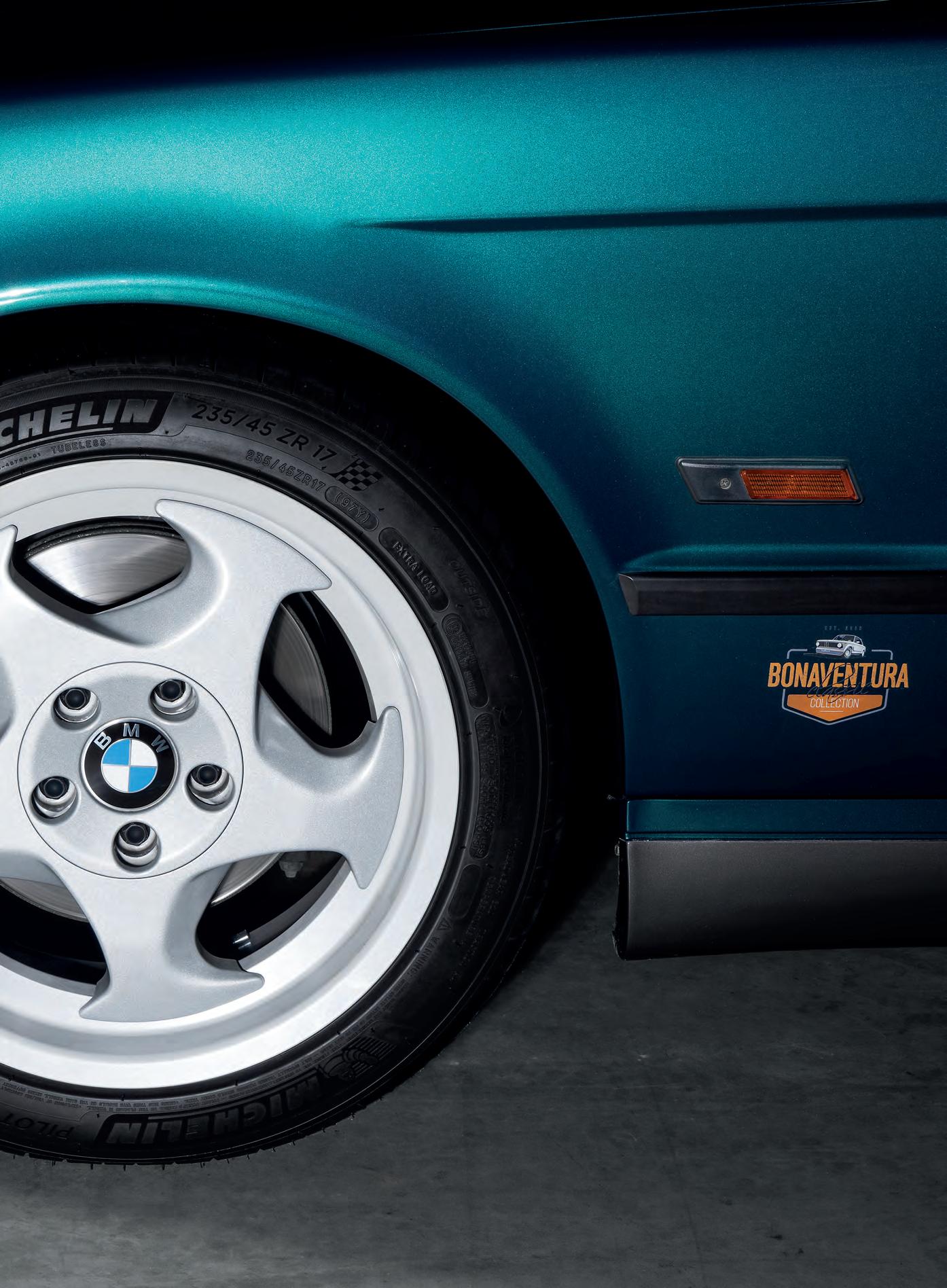










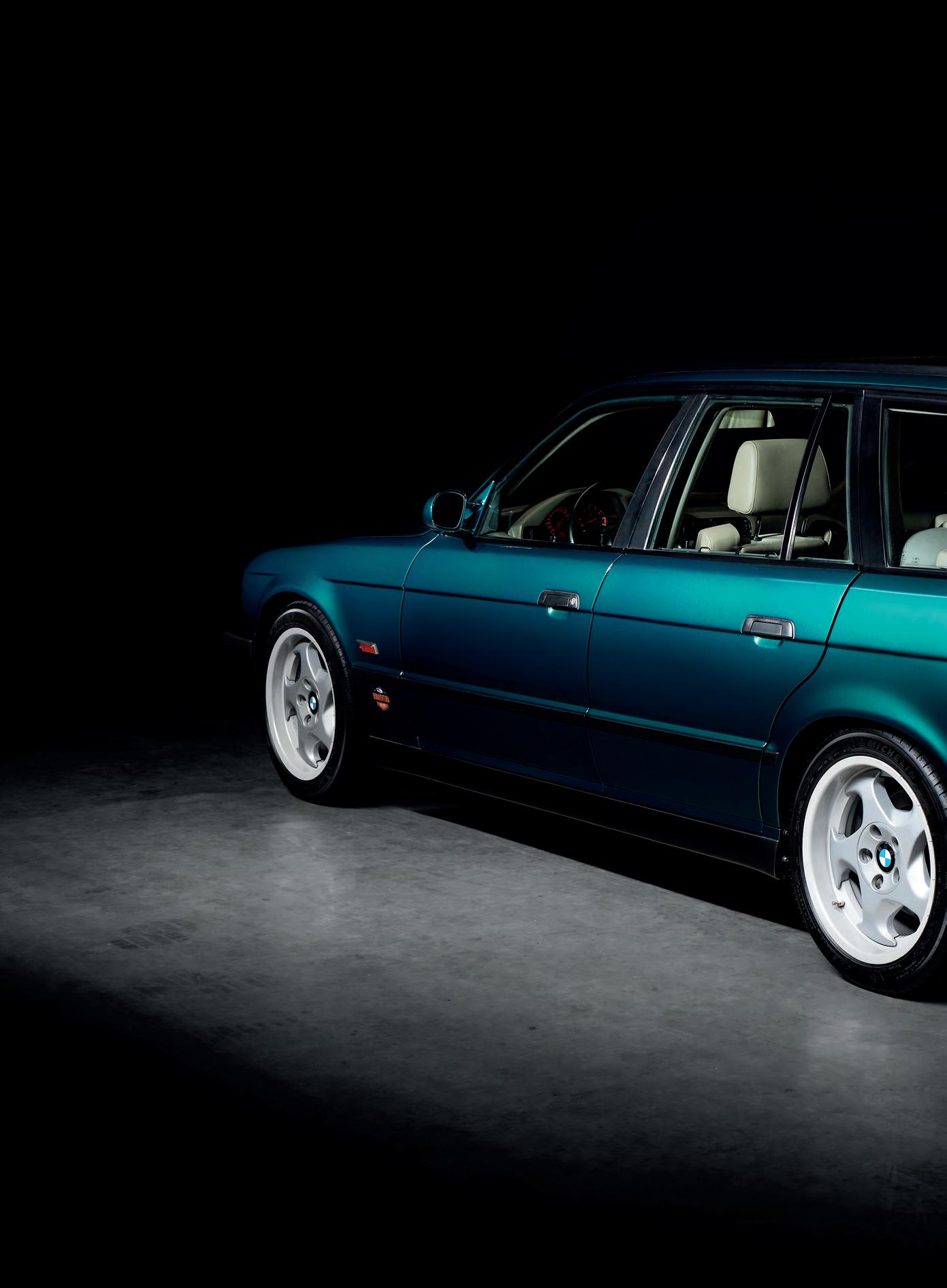





- This is the very first M5 E34 Touring that has ever been produced, however some say it was number two. What I can be sure of is it is the oldest VIN number M Touring in the world.
If you have a car that others are fighting for, you can be sure that you own something special. If you have a car whose historical precedence provokes disputes, you can be sure that the matter is even more serious.
The 5 E34 Series was presented in the fall of 1987. The first pieces left the showrooms in January 1988. The new sedan bore strong resemblance to its larger sibling – the 7 E32 Series that was recently made available. The dynamic M5 emerged in August. Under the hood there was a powerful 6-cylinder engine derived from the legendary M1. Engineers took care of ideal proportions of comfort and sportive temperament. Seen from the outside, the M5 was not so much different from its standard ancestor. Of course, a trained eye will notice the flavours typical only for this version.
One should start telling the story of this car with its first owner - BMW Motorsport GmbH. It does not happen frequently that the manufacturer registers the car. It happens in case of prototypes, the cars initiating a new production line.
Manufacturers must do it due to the necessity of conducting tests including the road tests that would not be possible without the car registration. So, it was the case with this BMW.
As the first manufactured ‘M’ with the Touring body – it was initiating the whole production and so they had to check it properly and thoroughly to the minor detail. Such cars, tested by producers at the very beginning of the manufacturing process, are highly valued by the collectors’ community. But, in this case, on the top of all that, Kai Jakobsen proved to be one of the subsequent former owners of this car. He is the man who knows everything about the history of the post-war automotive industry. And he knows even more about BMW’s history. There is nothing strange about it since he is the chief historian and head of the BMW AG archive. Afterwards there were another four changes of subsequent owners of this car, and each time it went to trusted and reliable hands.
The station wagon with M package - the very beginning of production – should be immortalised. So, one of the former photographers from the US branch of BMW undertook the task. On his web site he inserted a photo of another early produced piece (with the VIN number ending with 001) with the following caption: ‘This is the first M5 E34 Touring ever produced‘. Well, it does happen - mistakes do occur.

The Bonaventura Classic Collection sent a message correcting this inaccuracy. They explained that - according to documents, including the VIN number - the car immortalised on the pages of this album is undoubtedly the first ever produced M5 E34 Touring. But neither the VIN number nor the relations of the current owner could convince the photographer. So, the owner asked Kai Jakobsen himself and did not need to wait long for the answer. The historian dispelled doubts saying that it would have been contradictory to any logic if the higher VIN were given to a car produced earlier. He added that he had never dealt with such a situation, because production cannot go against the order of the numbers stamped on the nameplates. Common sense tells us that one could hardly find a more binding opinion than the one given by the head of the BMW AG archive.

- I have not heard so far about a car with the number 000 produced after a one numbered 001. It is possible that they formally registered this vehicle as a second one, but its VIN is the evidence of the production sequence. I have not heard of any case when it was the opposite.
It is worth mentioning that Jacobsen used this station wagon for everyday driving. Having direct and immediate access to all stylistic innovations applied in ‘Fives’, he kept modernising his car continuously. As a result, the Bonaventura Classic Collection acquired the vehicle with, for example, a newer air intake and rims that were not available in 1992. Luckily, the original parts
did not end up on the secondary market but were retained, which made it possible to quickly restore its original appearance. On the other hand, an argument in favour of the fact that BL001 was the first is the production date decoded under vin:

March 4, 1992, while it belongs to the Collection of March 5. Perhaps the body was produced first, and then special equipment was added, and the production date was entered with a delay of one day. It is difficult to say today.
- This car has over 240000 kilometres on the clock, but that does not matter. For cars that are so rare and unique, the mileage is not as important as is the case of mass production ones. This car will always be the first VIN number, regardless of how many kilometres it travels and is second or first produced. The history of this specimen and its previous owners make it unique.
One can hardly disagree with the owner’s words. Unfortunately, it was also undisputable that a quarter of a million kilometres travelled has left its mark on the whole car. For the upholstery, it was enough to clean it thoroughly and replace the most wornout bits, but the car body required a more severe intervention, to prevent transformation of the traces of corrosion into rusty, eroded cavities. The bodywork renovation took a long time, but today the unique in its kind M5 E34 Touring delights anew.
The first made one, the extraordinary owners and almost a scandal – these are but a few of so many advantages of this car.




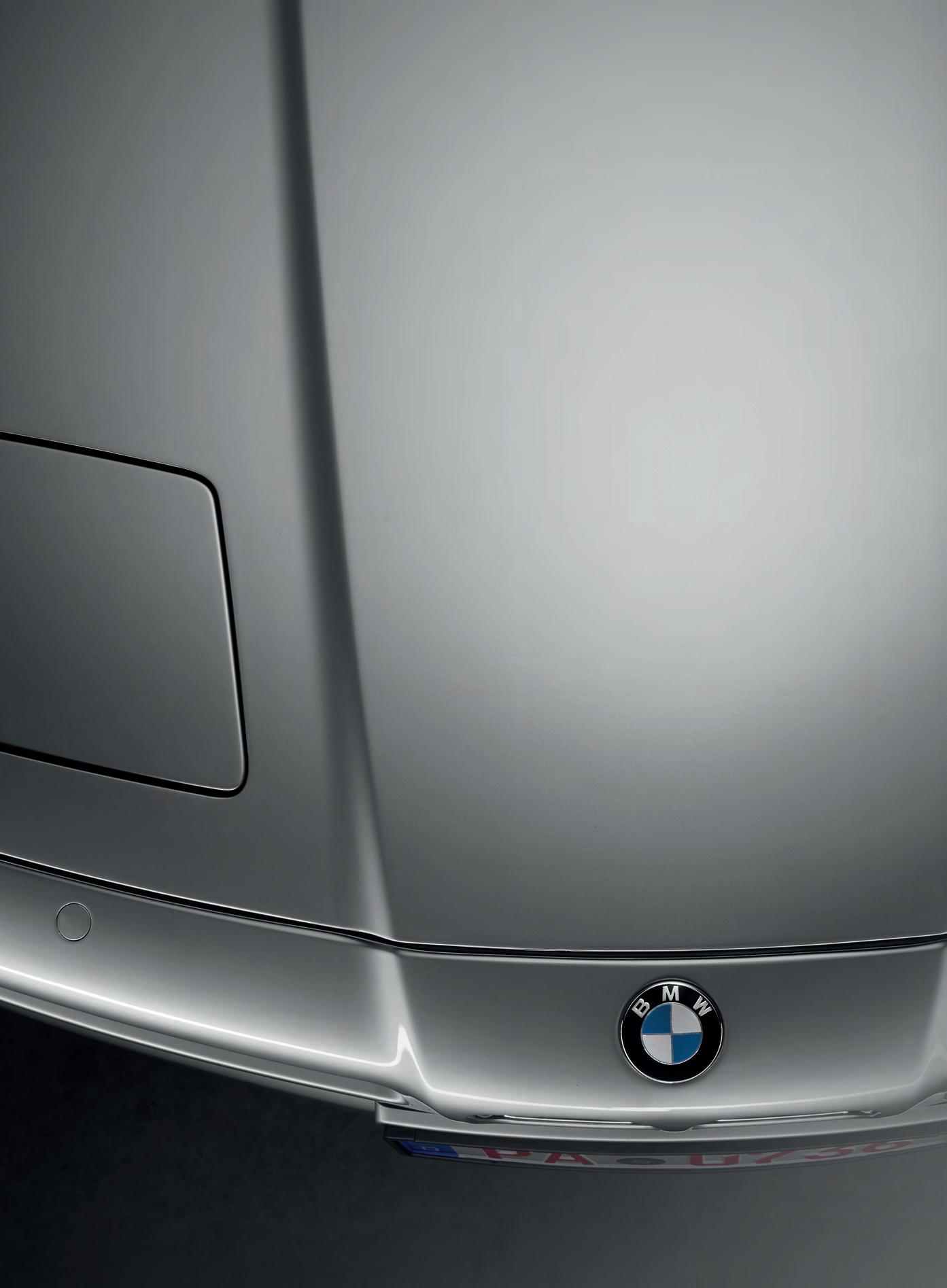
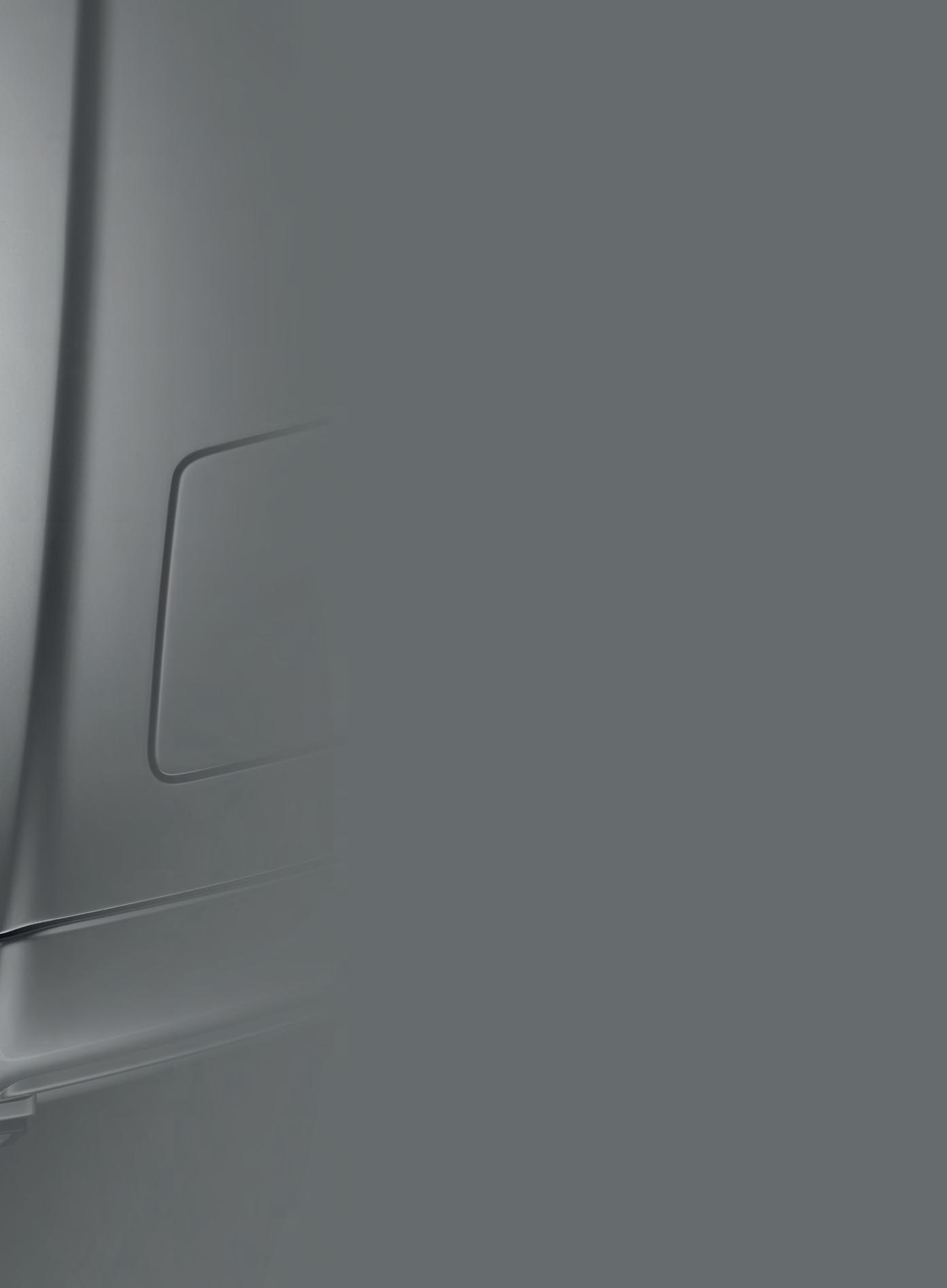











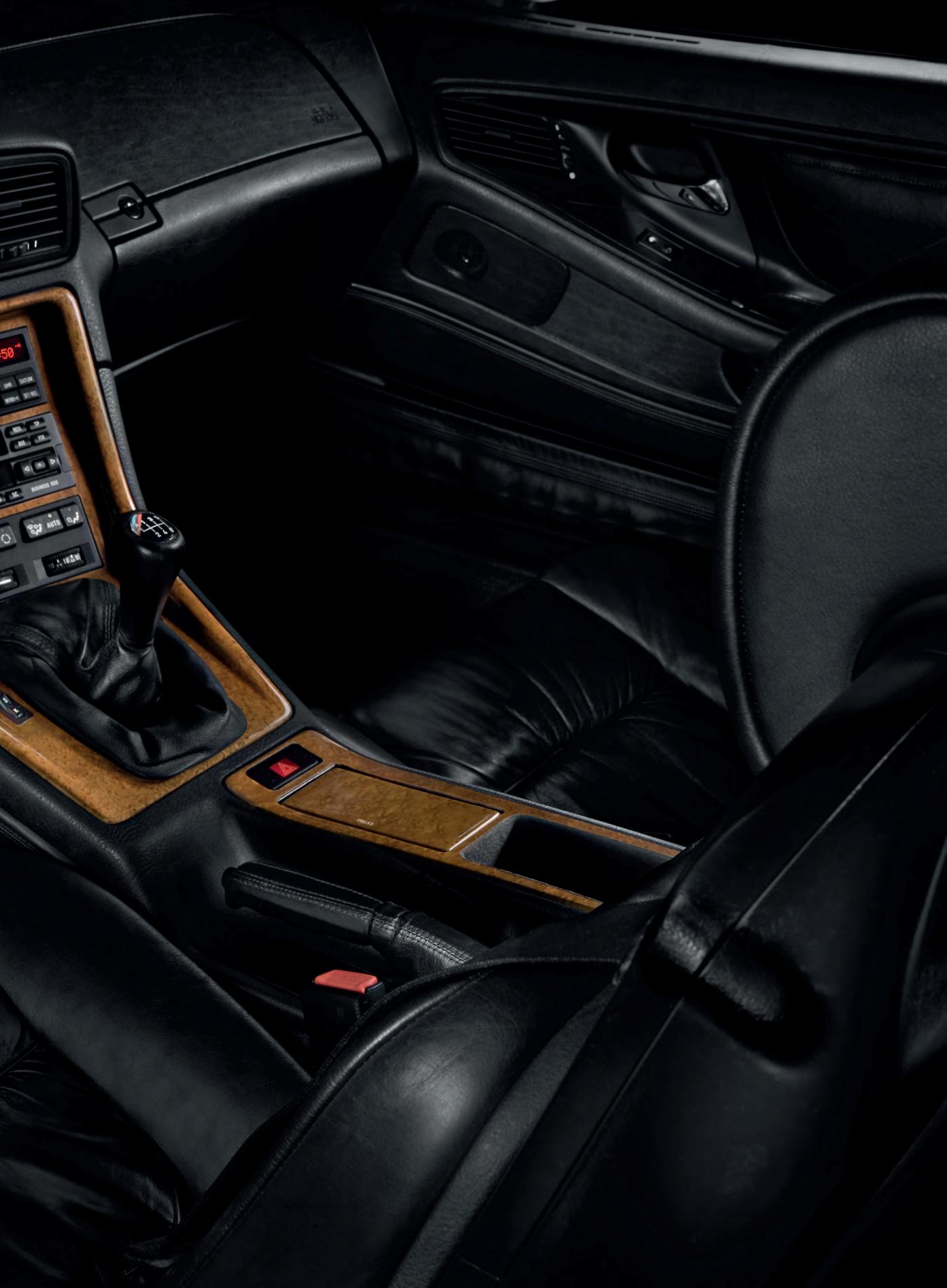











- When I bought it, I just could not get away from it!
It appeared in 1989 and became the most expensive BMW on offer at the time. It debuted at the same Frankfurt Motor Show as the no less dashing Opel Calibra. The glitch was that the Calibra was cheaper, more accessible and made a remarkable success that the BMW 850 never experienced. Great cars share something with talented artists - appreciation comes when they already belong to the past.
It promised to be quite a success. BMW representatives returned from Frankfurt with a list of around 5000 orders.
A particularly good result, especially for a car that is not yet available to buy. When production started, it turned out that the factory in Dingolfing devoted so much time to each unit that the waiting time for an ordered car is... three years. This effectively scared off less patient customers. And what about those who were not in a hurry? Some, after taking delivery of the car, concluded that the ‘Eight’ promises more than it can give. Sounds like a fiasco. A flop that BMW never expected even in its worst dreams. The failure was even more difficult to swallow as they spared no effort or money for developing the vehicle. They spent a billion marks over five years and more than 2000 people were involved, including the best engineers and designers. The German mark is a currency that does not exist today. So, is a billion marks a big sum? To answer in the shortest terms: yes. It was a gigantic amount of money that made it possible to create any car BMW could think of.
Work began in the early 1980s, with not only human resources, but also computers’ aid. In 1987, at a cost of two million marks, they built the first running prototype. Let us add that it was handmade. Later, about one hundred more prototypes were constructed. They were cheaper, but not by much. They tested them in the sweltering heat of America’s Death Valley, in the sweltering heat of crowded Los Angeles, in the Arctic Circle and even on a racetrack, where the task was to cover 8000 km with maximum load.
The 850 was equipped with everything that German technology of the time could offer. They assembled a multi-link torsion axle, developed from the scratch, at the rear. They used only the best materials for the car interior. Under the bonnet, they put the 5-litre, 300-hp M70 engine that had excelled in the BMW 7 E32. The prudent manufacturer electronically limited the top speed to 250 km/h, which in practice usually meant around 260 km/h.
In October 1992, at the Paris Salon, the sportiest variant was presented - the 850 CSI, in the technical documentation appearing under the M8/E index. The reliable BMW Motorsport managed its development and preparation. A 381-hp, 5.6 -litre V12 engine (with the code S70B56 - its development S70B56/3 powered the legendary McLaren F1 cars) enabled the 850 CSI to attain a staggering 300 km/h. It was the fastest massproduced car in the world at the time. For safety reasons, a speed limiter was fitted as standard to limit speeds to a maximum of 250 km/h, but the factory could remove it upon completion of special BMW M-certified driving courses. In addition, the CSI had other distinctive qualities: lowered suspension and more powerful brakes, although these were incredibly good even in the basic version. The engine was mated to a 6-speed gearbox, very capable and durable provided if managed skilfully. They produced only 1510 units of the 850CSI.
In the photos, we see a very well-equipped Swiss version. In the interior, the striking features are the comfort seats, which were a rare feature on the CSI.
- They are so comfortable that it had less than 70000 km when I bought it and now has 97000 km. I enjoyed driving it so much! I just could not get away from it. At the time, I drove a new BMW 7 (F01) daily, and it was the same in terms of comfort. The 850 drove very similarly, even though it is two decades older, and the 7 Series is the top model after all.
The car was bought in 2012 from a collector in Austria. It is accident-
free, but the Austrian owner rubbed its side while driving on the motorway. The damage was very minor, polishing the scratches and applying one coat of paint helped. The ownercollector said that since the BMW was no longer pristine, he wanted to sell it.
- In 2012, I was not yet as much of a purist as I am now. Today I might not have bought it, especially as I later came across a Polish ad with such a car in perfect condition and with only symbolic mileage. I even considered buying it but found that the one I have is so well cared for and nice that it is still an exceptional piece. It has wax on the engine, a set of tools and is as it came out of the factory. There is still a wrap on the first aid kit. Plus, full documentation!
The current owner stresses that the BMW 850 is a car with incredible tuning potential.
- Helmut pulled 950 hp out of such an engine. A conversion that does not affect the life of the unit is 600 hp. He offered to overclock my engine, but this is not necessary.
The BMW 850i cost 150000 marks. In the States, where it is the most desired, its price was $80000. The great appetite, moreover, remained unsatisfied. The huge US market absorbed only 6788 copies. In total, this car distribution amounted to 30621 units, which BMW considers a modest number. A huge outlay, a pile of money spent and all for nothing. Oh no, one should not say so. The work on the underpowered BMW helped to make a major technological leap that bore fruit in later years.
After production ceased in 1999, hardly anyone shed a single tear. It is reminiscent of the fate of the BMW 507 - a car that was beautiful, although from a commercial point of view, completely unsuccessful. Today, the exceptional beauty of the 507 has tightly covered up the former sales failure. Nobody remembers the flop. Instead, everyone admires it. It will be the same with the 850csi. If it is not already.





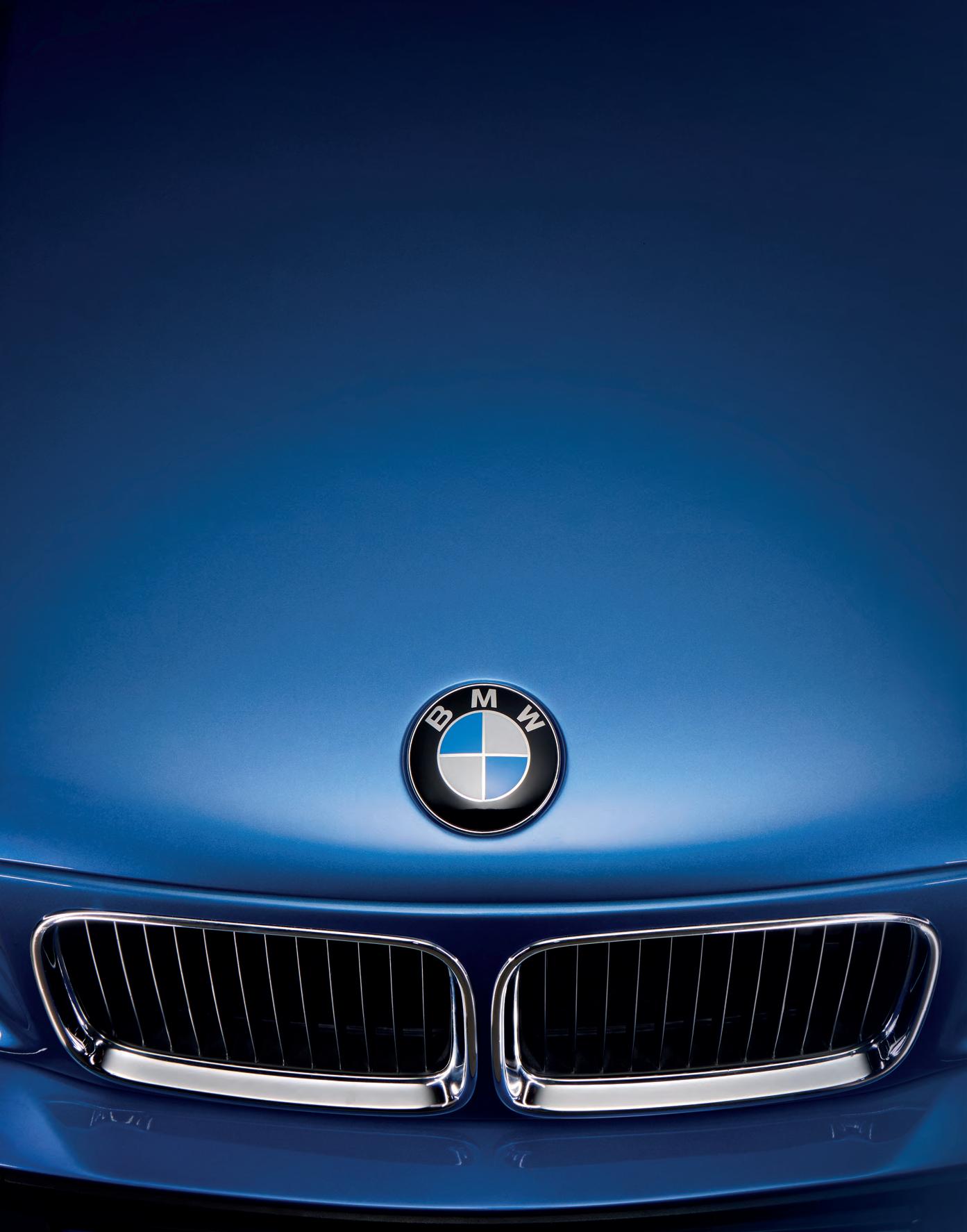











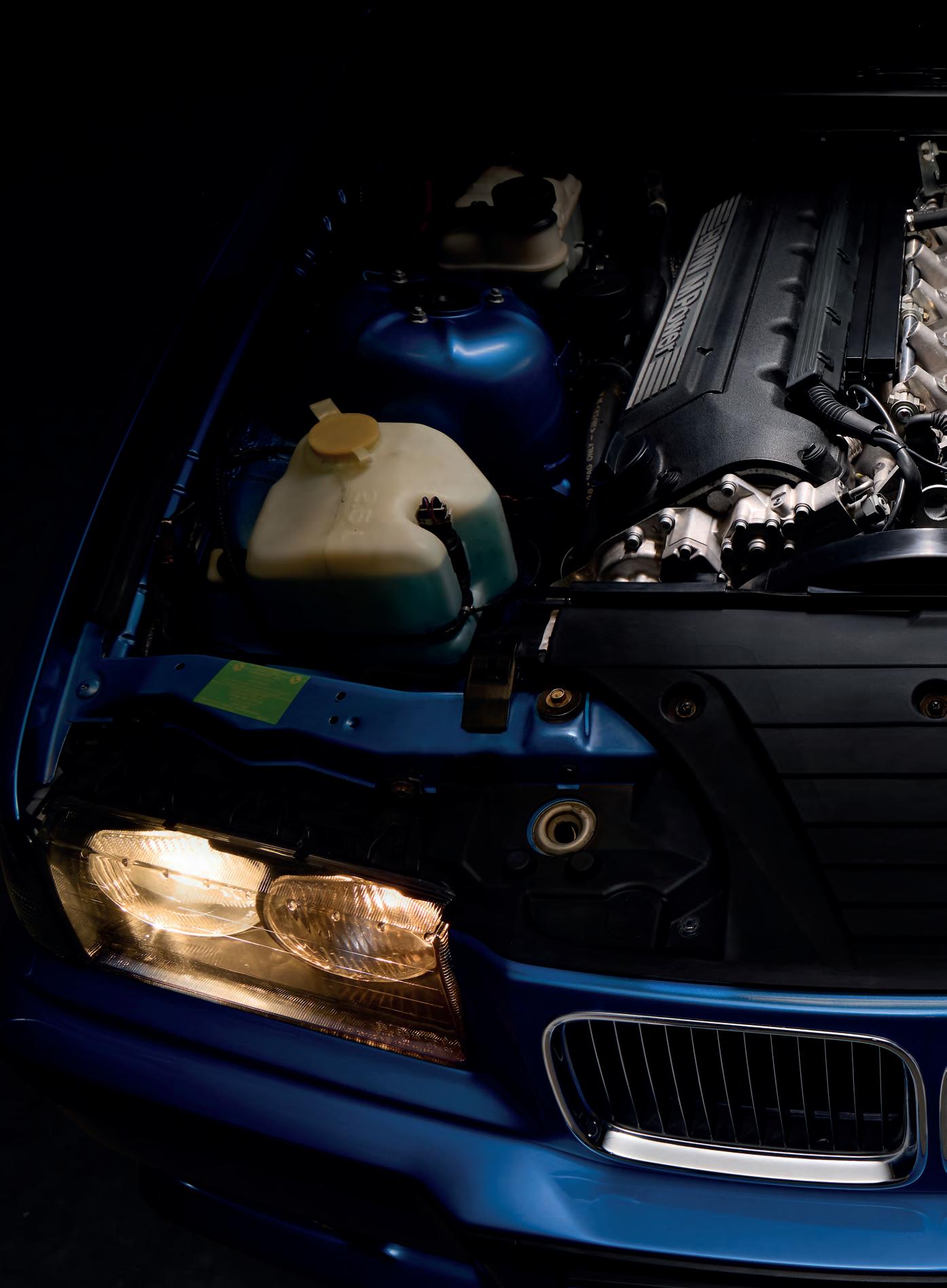





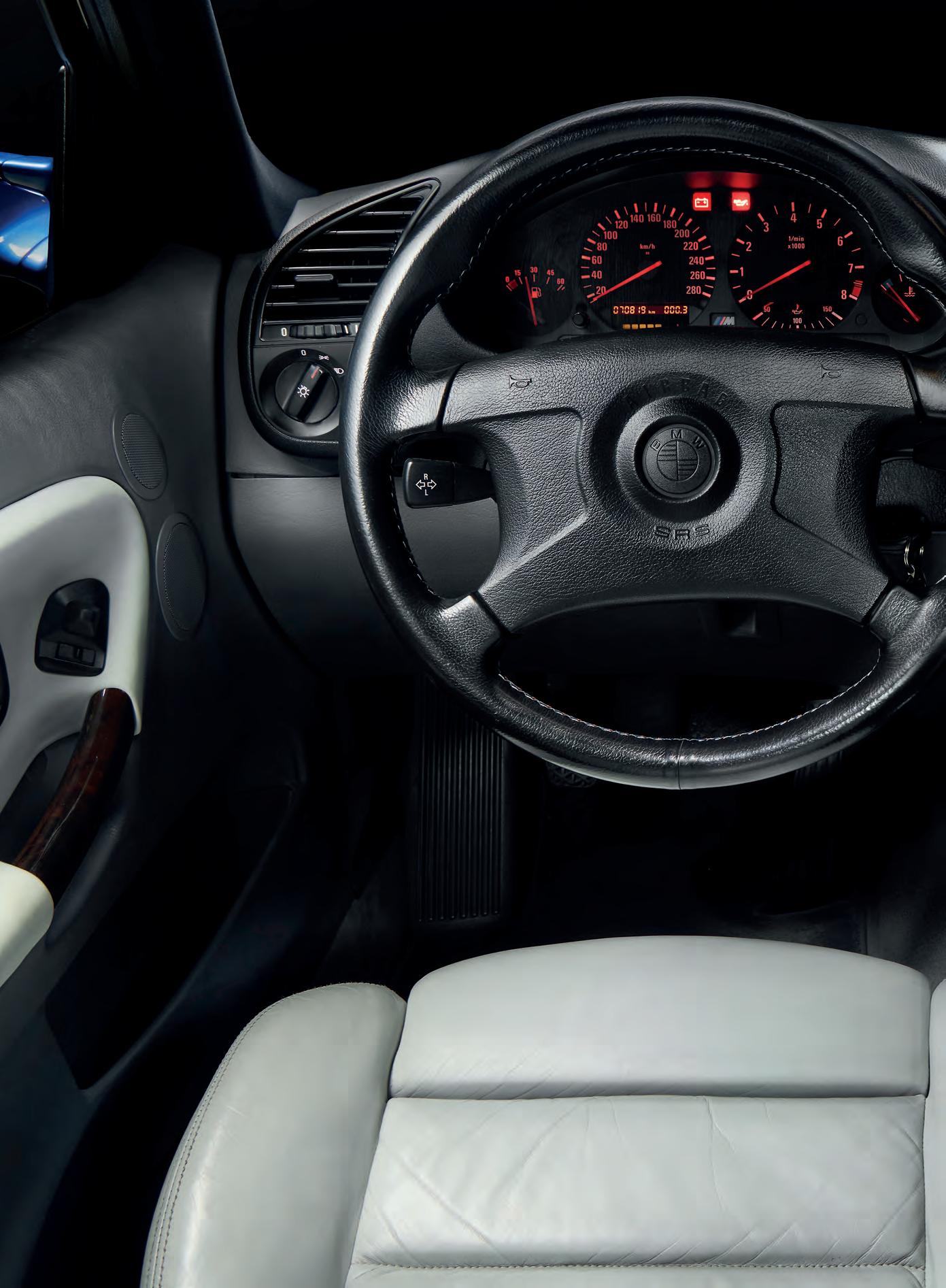
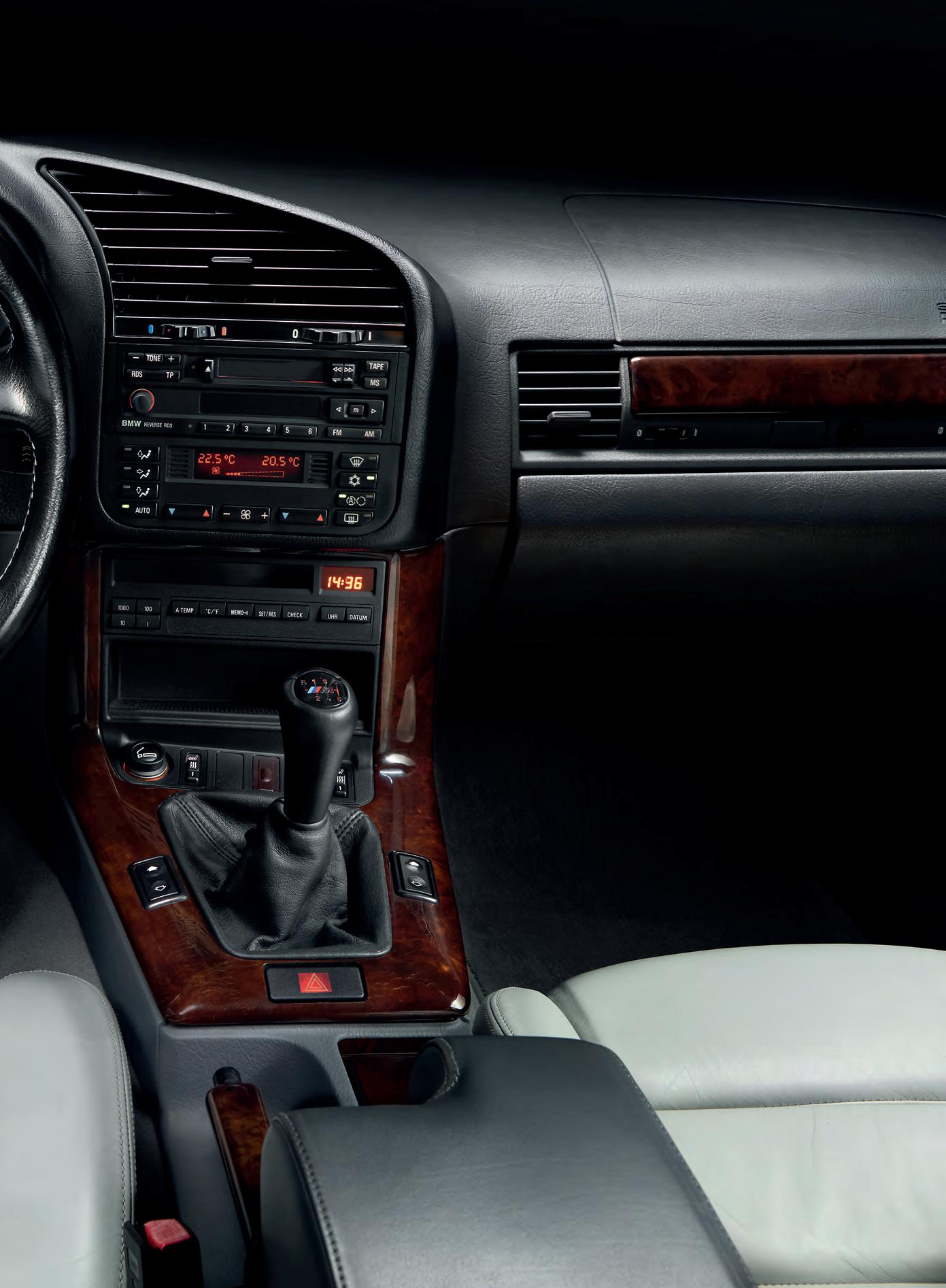





- I am not buying a bargain. The car must appeal to me. Just like this one.
Finding a well-preserved E36 is a breakneck task. This is one of those BMW models that one cannot take for granted. And yet the impossible turned out to be possible this time too, as it usually does in the Bonaventura Classic Collection.
The car we are looking at was bought in 2018 at the Essen trade fair. With 69000 km mileage and in original condition, Belgian collector and classic dealer Theo Waltop sold it. The car comes from an Irish classic collection. I do not think you could want for more.
- You may grimace because it is a sedan, not a coupe. However, the four-door E36 M Series is much more of a rarity than a coupe. Plus, it has a beautiful white interior with wooden inserts. Estoril Blau-metallic is the most sought-after colour version next to British Racing Green.
The third iteration of the 3 Series was officially exposed in October 1990. Compared to its predecessor, it was a car with a longer wheelbase. This translated into a more spacious interior that one can feel, especially when travelling in the front. From the outset, the E36 was available with a full range of enginesfrom the 316i, through the 320i to the 325i. The 325td followed a brief time later in 1991, and in January 1992 the coupe (E39-2) arrived on the market and was a real hit. Half a million units sold speaks for itself. Those who wanted to feel the wind
in their hair had to wait until November, when a convertible version made its debut. The longest wait, until 1995, was for a roomy estate car. Patience paid off - the popular opinion was that the Touring ‘Three’ was the prettiest variant of the entire series. 1992 also saw the debut of the E36 with the M package. In November, the M3 Coupe with a 6-cylinder engine appeared in showrooms. Its distinctive feature was its noisiness, which was not only unobtrusive in a car of this class but also fit for its place. The 4-door sedan bearing the letter ‘M’ was available from October 1994. Originally, the M3 had a 286-hp 3.0 litre engine. In the manufacturer’s opinion this did not suffice and so, in 1995, they gave it a new 321-hp 3.2 litre unit. This is the engine that powers the blue M3 in the collection. What is most striking is its extreme inconspicuousness.
BMW knew that power would stand up for itself, and that the most important thing - the heart – was hiding under the bonnet. In December 1997, the 50000th M3 E36 Series left the factory.
The third iteration of the BMW 3 Series came in every body style imaginable in the segment, and nothing was lacking in any of the variants. All of them stood out for their sporty, sharp lines, which we appreciate even now, years later. Admittedly, towards the end, people increasingly complained about its lack of freshness, but one could hardly expect freshness from a car developed a decade earlier. The sedan’s history ended in 1998 after more than 1.5 million were released from the factory line. The Touring and Coupe remained on offer until mid-1999. It took a while longer (until September) for the possibility of buying a factory-new convertible.
Today, you may only dream of getting a brand-new E36. But even though so much time has passed since its production ended, there are still places where beautifully preserved, superbly equipped cars are waiting. You just need to know where to look. And we know where to look.
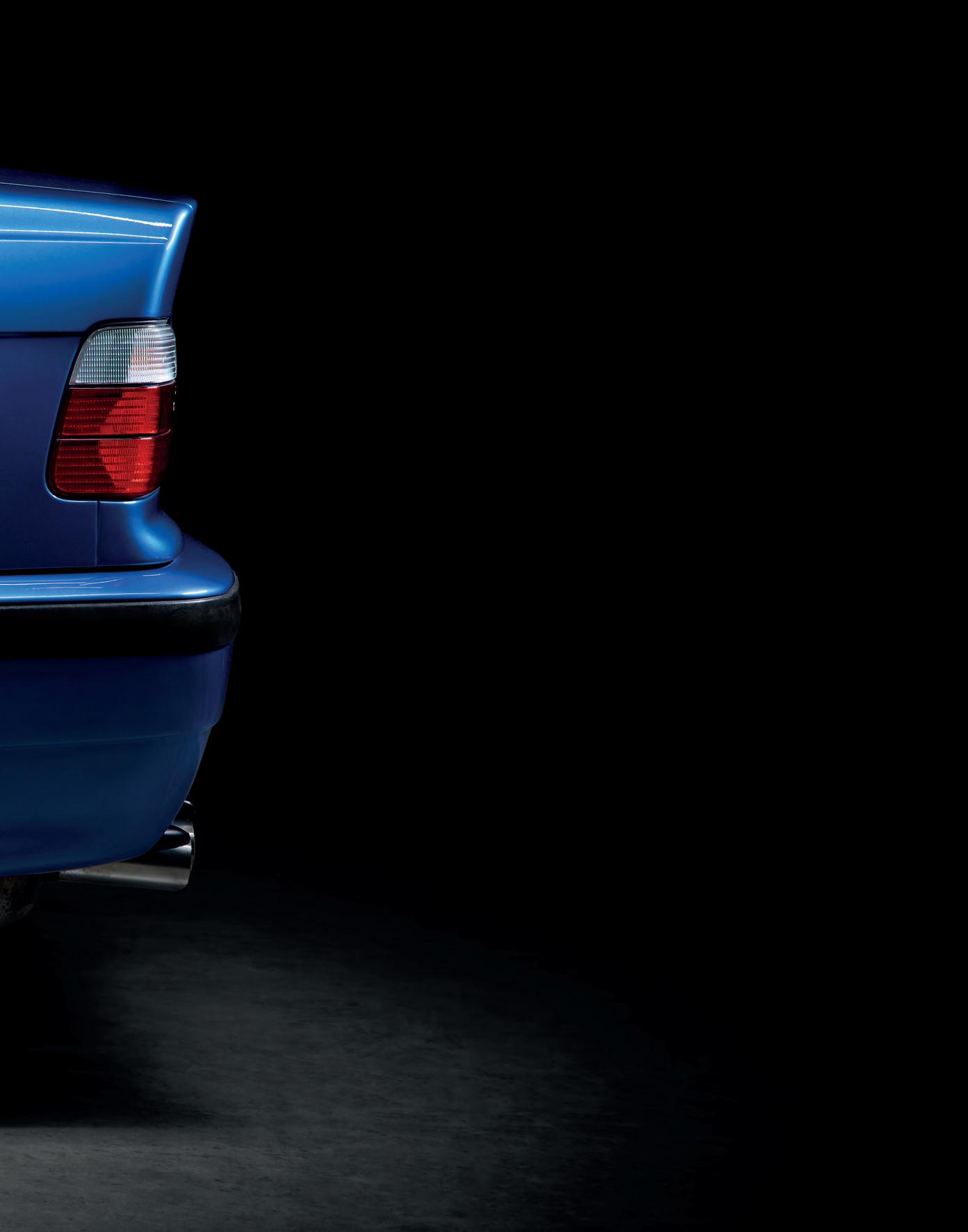




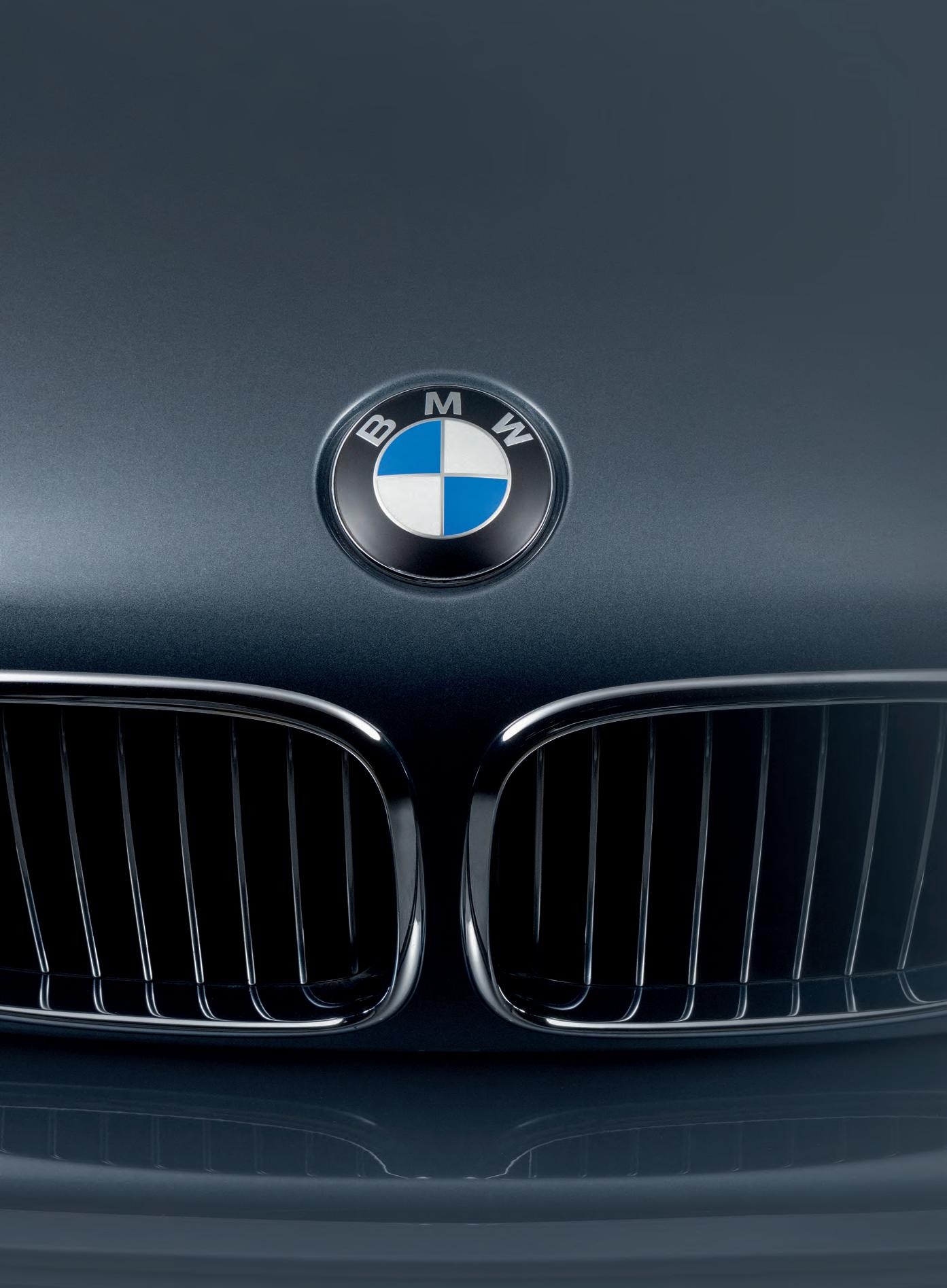





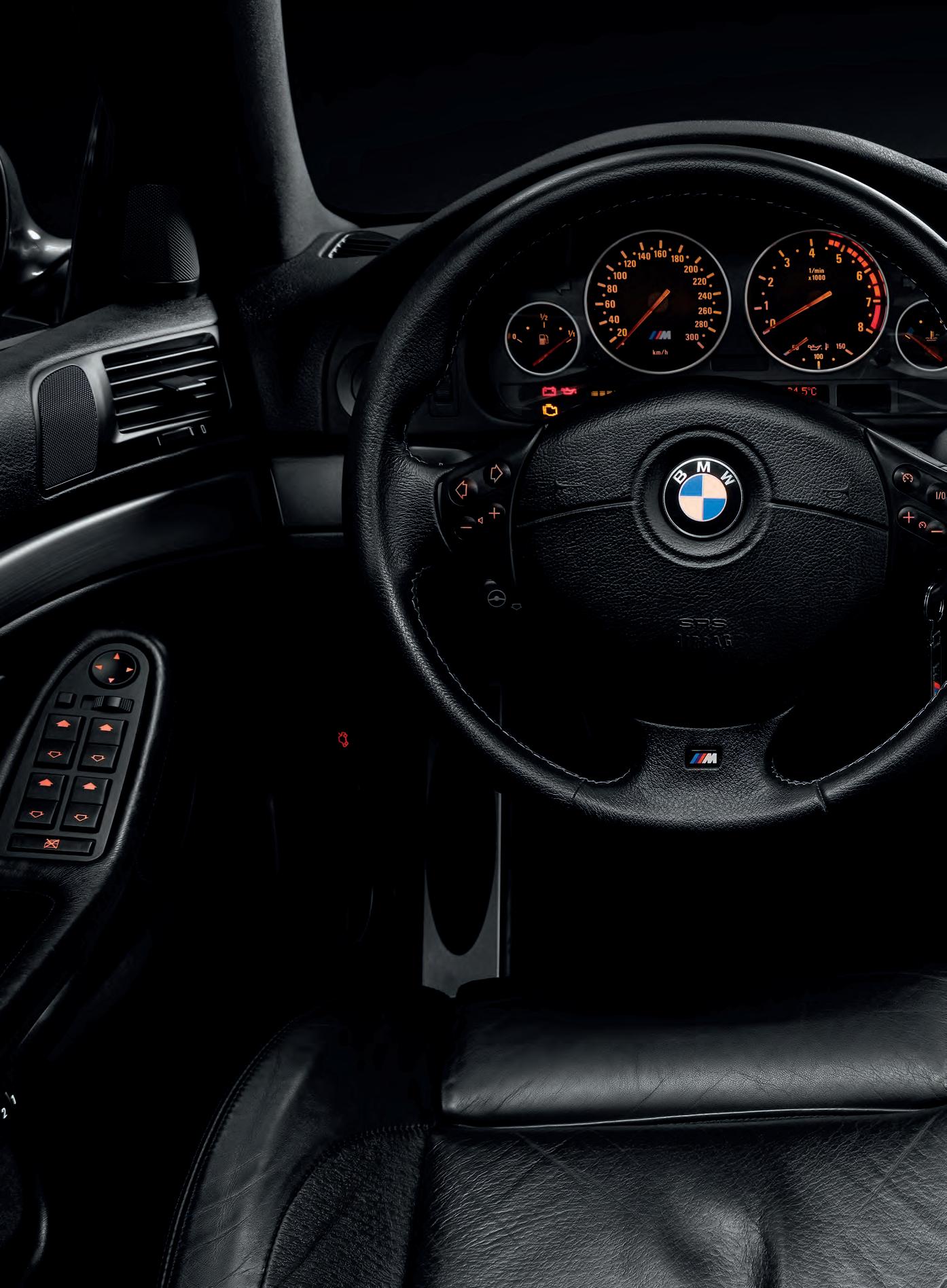





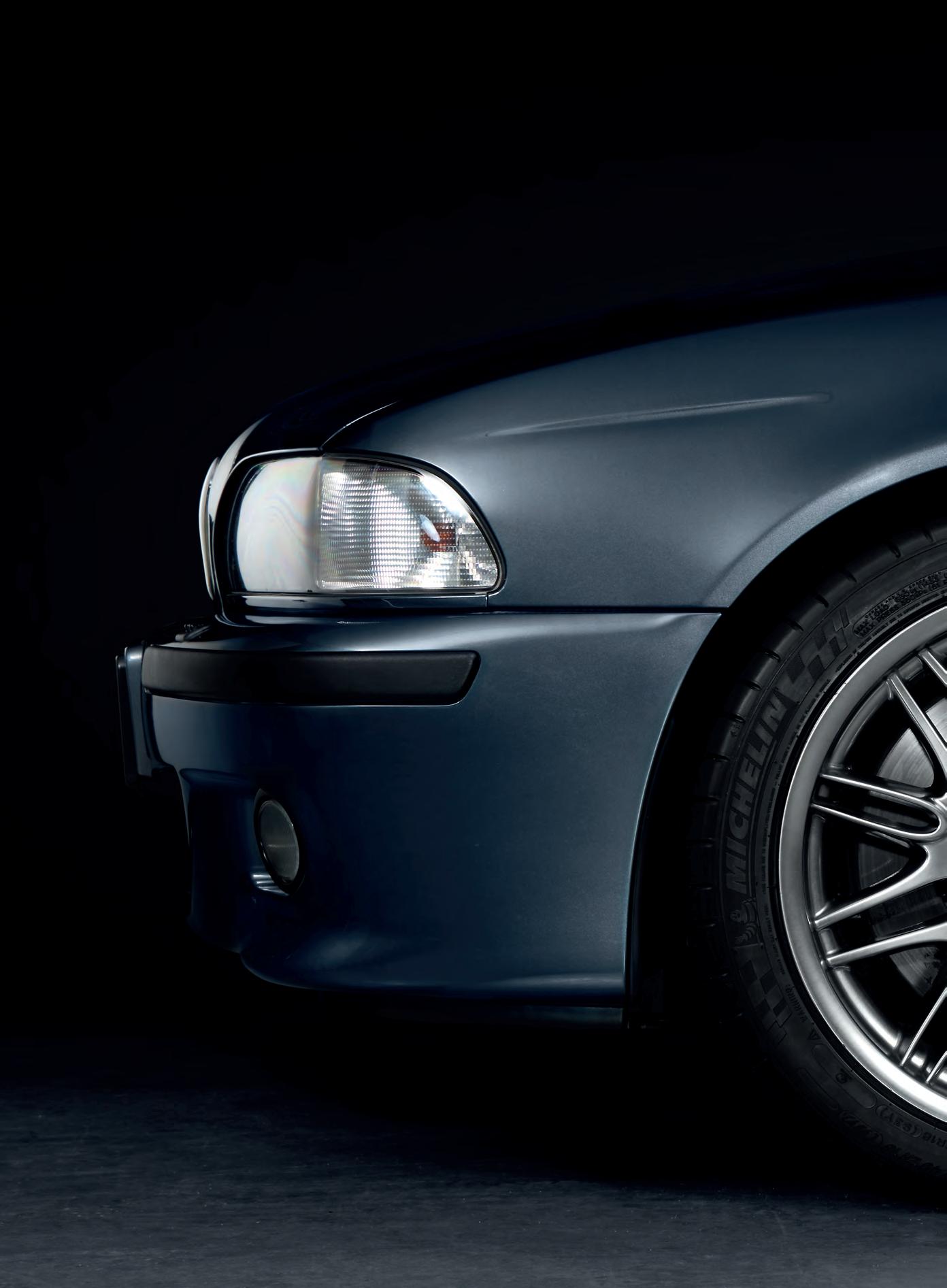






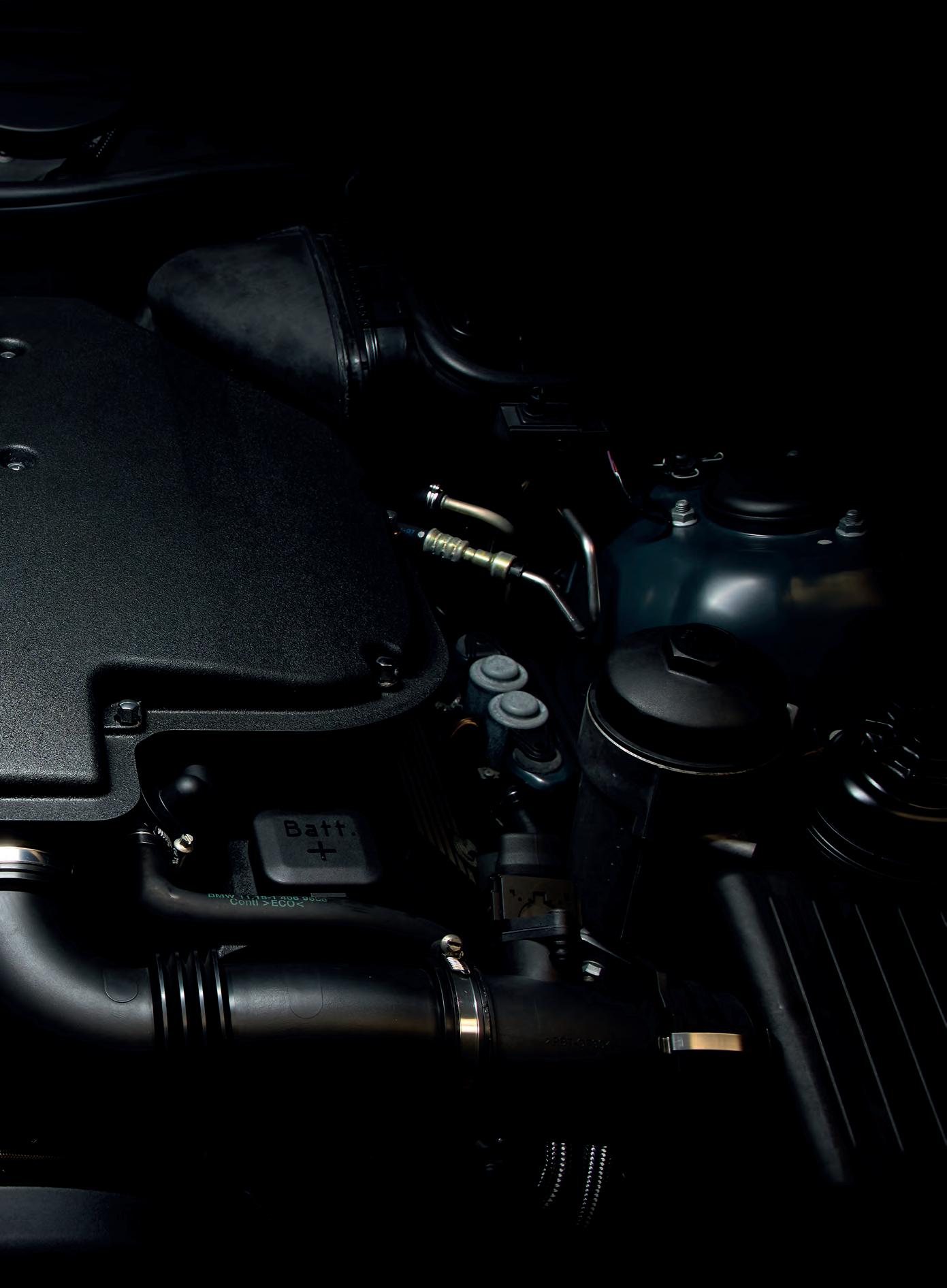




It has 54000 km on the odometer but looks like it has driven only 5000. Its condition is remarkable.
The owner says this BMW looks like a new car. Not true – there are new cars that can only dream of looking like this.
Before we talk about the specimen in the photos and its astonishing condition, let us go back to 1995. It was then that the all-new, fourth-generation BMW 5 Series made its debut in Geneva. We had to wait until 1998 for a variant with the ‘M’ on the tailgate. Upon exhibition, the press would not call the new M5 anything other than the world’s fastest limousine. There was something to it. The 400-hp V8 provided effortless

acceleration to 250 km/h. The ‘M-car’ would certainly have gone faster, but the manufacturer provided an electronic interlock to tame the temptations of drivers with a racer’s flair.
What equipment did the first owner choose? To say the least - extraordinarily rich. BMW’s equipment options are, incidentally, a topic for a separate discussion. They are so extensive, so full of nuances and minutiae that it is at the very least nonchalant to write about ‘full options’. However, the facts speak for themselves - this is an exceptionally well-equipped vehicle, which did not even lack analogue TV. Interestingly, the interior finish is not in wood, but in polished aluminium. This is typical of the ‘Sport’ option. Indeed, you could choose
the interior of the M5 in either comfort or sporty style. In both versions there were leather seats, but traditionalists looking for wooden accents had to opt for the comfort variant.
As already mentioned, the odometer shows 54000 kilometres driven. The car came to the Bonaventura Classic Collection in 2020, bought from a Dutch collector, who sold it only because of a scratch on the rear wing. The slight damage was immediately repaired, but there was no room in the collection for the copy after the ‘repair’. The fact that this was the only intervention of any kind in the structure of the car was not an argument. Thus, the collection from the Netherlands removed the car that no longer matched its requirements. And so, our
Collection, on the other hand, acquired a ‘Five’ in wonderful condition, which enriched it nicely. Exhaust, interior, engine compartment - everything here looks as if the car left the factory yesterday and not in 1999. The removal of a scratch from the bodywork is a fact that, in this case, affects the value as little as a slammed door.
The Dutch collector managed his cars extremely delicately. Gentle to the point that he drove his E39 with gloves on. Thanks to this treatment, one will not find even the smallest scuff on the upholstery or a tiny stain inside. Every element has retained its colour, softness, roughness or smoothness, smell, and everything else that elevates the value of a classic.
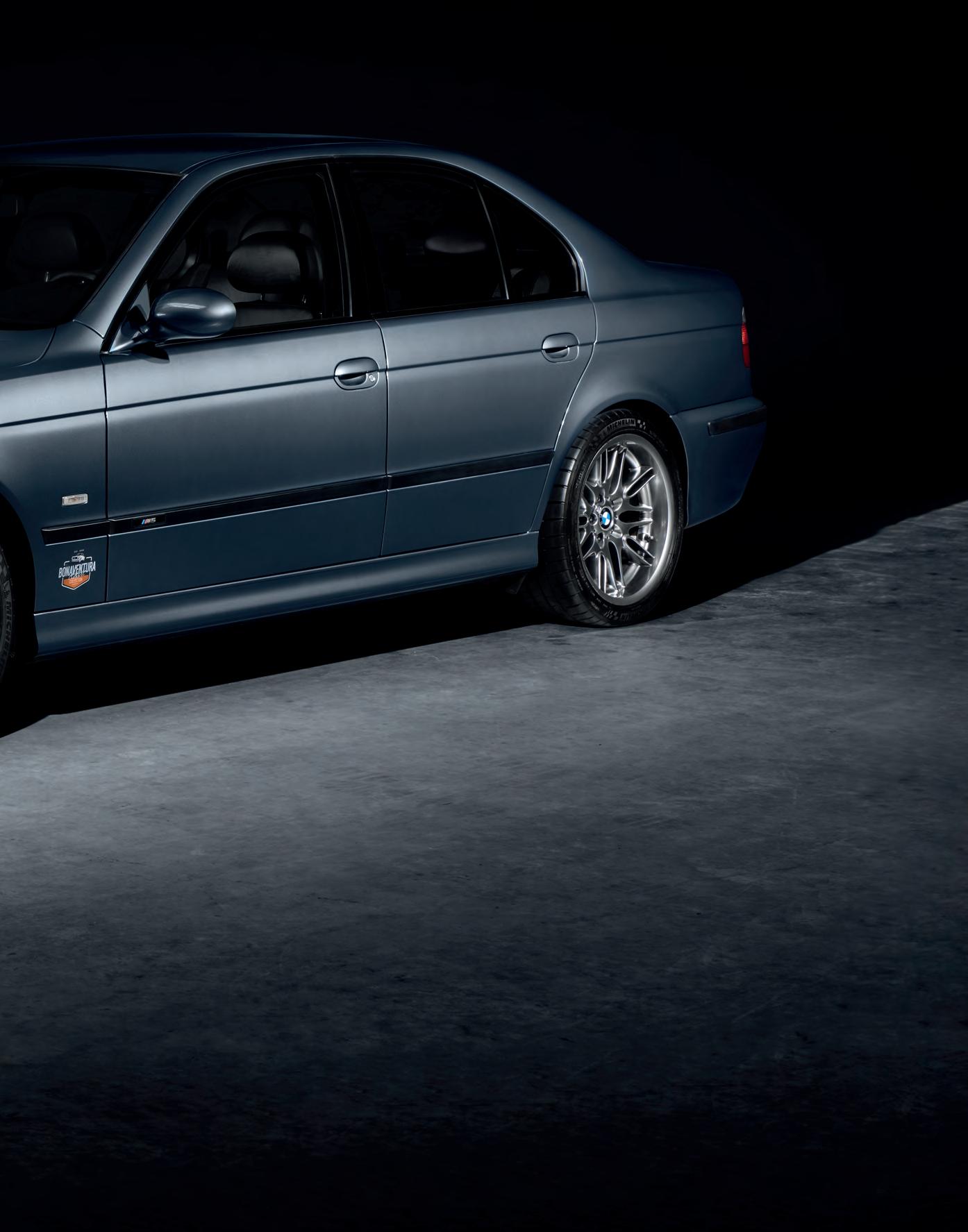










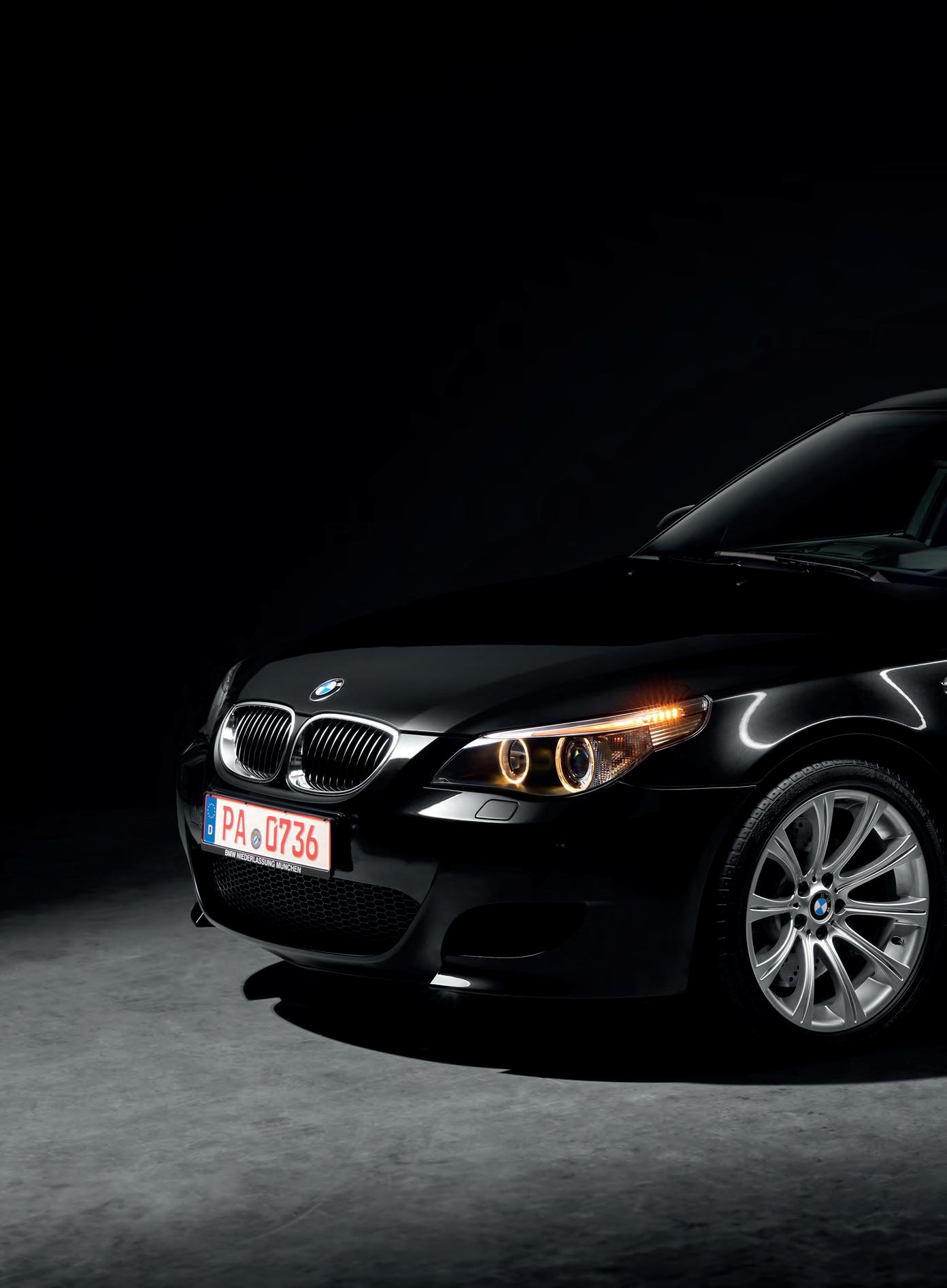
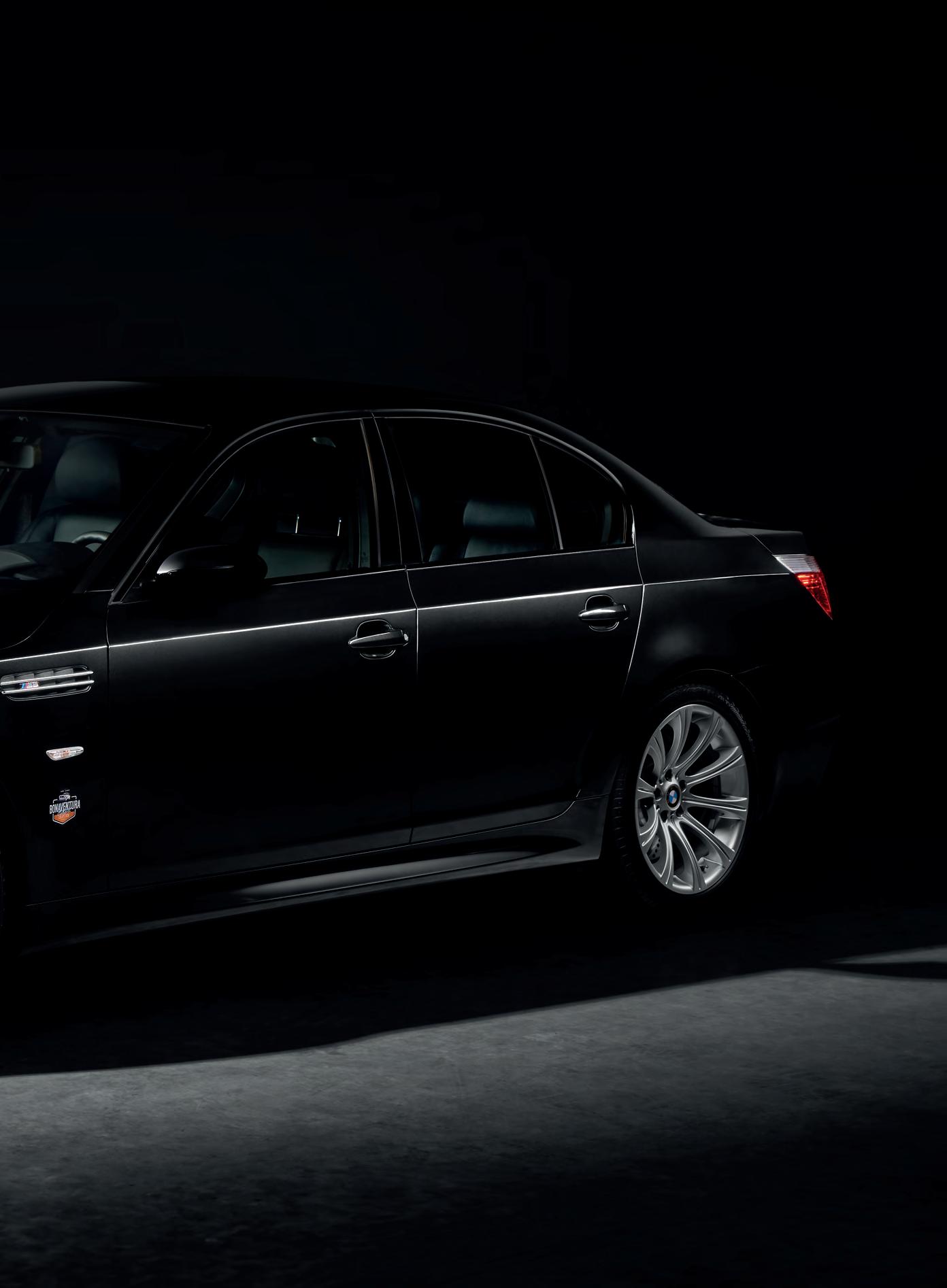




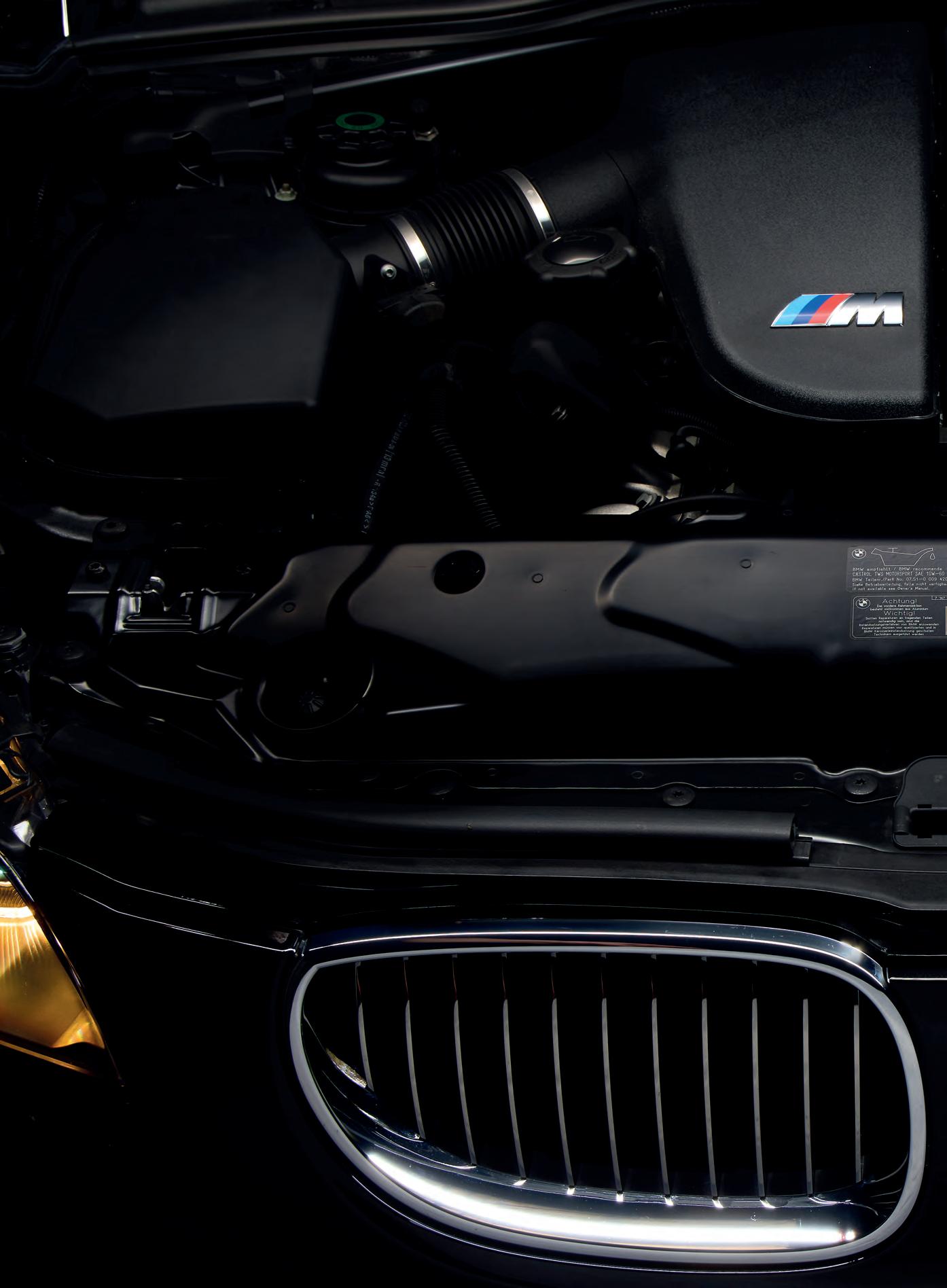

















- I wanted factory condition and here it is.
Usually, you have an alternative and must choose: a comfortable, modern sedan, or a race car. They say you cannot have it all, but that is not true. You can, you must just buy a fourth-generation BMW M5.
The fourth-generation M5 was unveiled in 2005, and it was not long before the first drivers were able to experience, firsthand, just how wild and unbridled this car is. With 507 hp, the M5, which weighs in at around two tonnes, it becomes a real sports car. Under the bonnet is a 10-cylinder forkcylinder engine, ready at any time to take you on a ride you will never forget.
The car takes 4.7 seconds to reach one hundred metres. The second hundred comes after 13.5 seconds. At 269 km/h we

feel the limit. You cannot go any faster. Or rather: you are not allowed to drive faster. The development of higher speeds has been electronically blocked. If it were not for the factory interlock, the BMW would easily break the 300 km/h barrier.
The M5 E60 is the perfect car for long drives. It is dynamic, grips the road perfectly, and - in a critical situation - the extremely effective brakes and various safety systems come to the rescue. This is where the similarities with its predecessor (E39) end. The E60 is more spacious, more complex and far more modern. What seemed to be the pinnacle of engineering at the time of the E39’s debut, in 2005 turned out to be just a pre-dinner snack.
The sedan version of the E60 appeared in March 2003. The station wagon (traditionally named Touring) became
available a year later. Regardless of the body and equipment version, the fifth generation ‘Five’ guaranteed almost cosmic comfort. The interior design, the materials used, the perfect ventilation system – one could enumerate the qualities of the E60 for an exceptionally long time. In addition, one of the car’s advantages on the second-hand market was its rapidly falling purchase price. The maintenance price, as befits a car of its kind, remained consistently high.
This unit, bought in Italy, came into the Collection in 2020, just after the E39 presented on other pages. Its 18000 km mileage and factory condition summed up to all that the buyer needed.
- I was looking for a specimen in its original condition, without any modifications. I wanted showroom condition and here it is. The wheels still have the factory tyres on. It drives and looks like a new car, but over the years I have only driven it once.
One wants to say: what a pity! The 507-hp, 10-cylinder engine invites you to get behind the wheel. But it is a wellknown fact that collector cars have their own rules.
The phenomenon of this E60 lies in its history. It is probably the only case where a comfortable sports sedan bought for a lot of money has stood in a garage instead of tearing up the tarmac of the roads. And if not the only one, then certainly one of the very few.












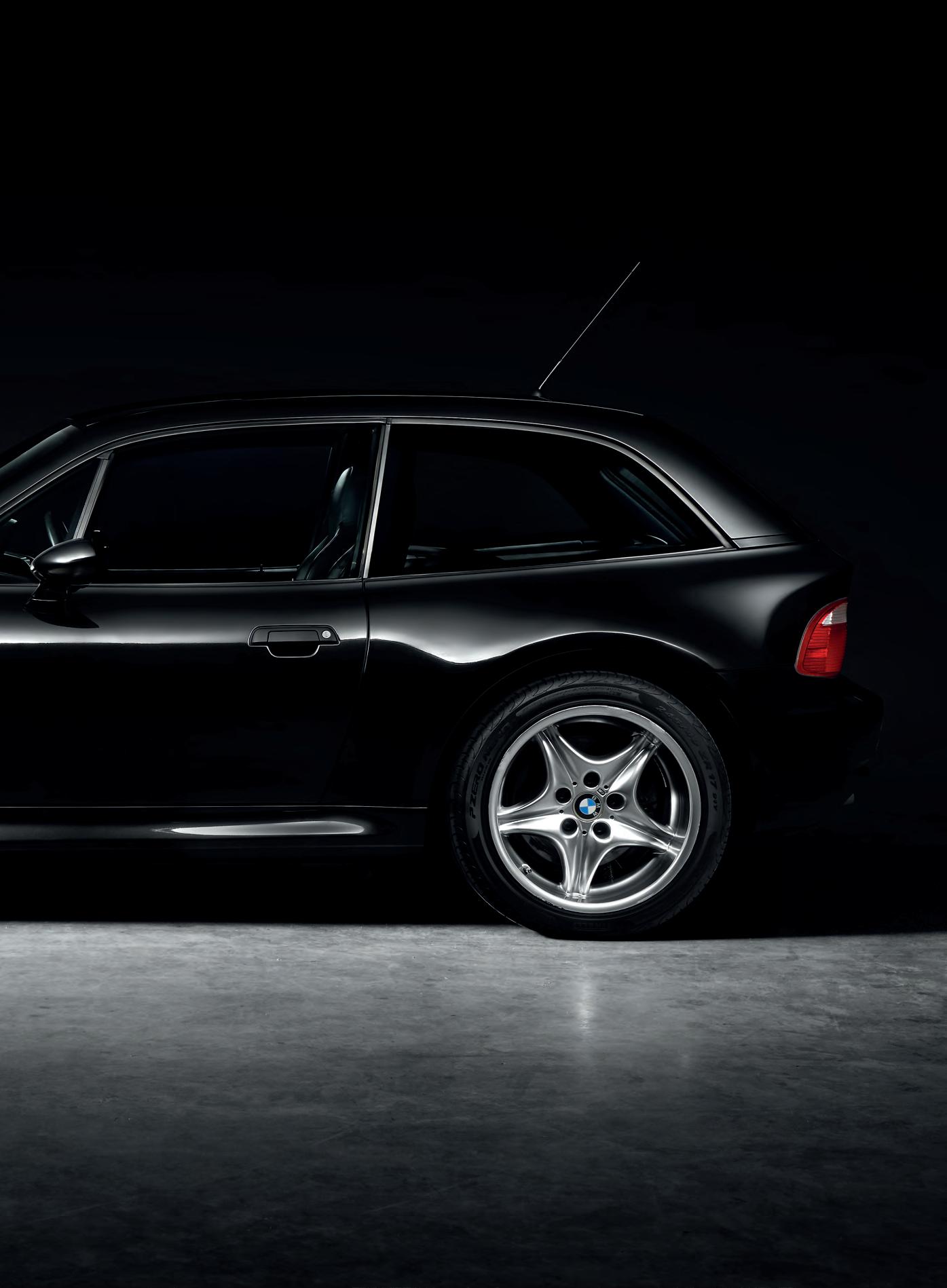




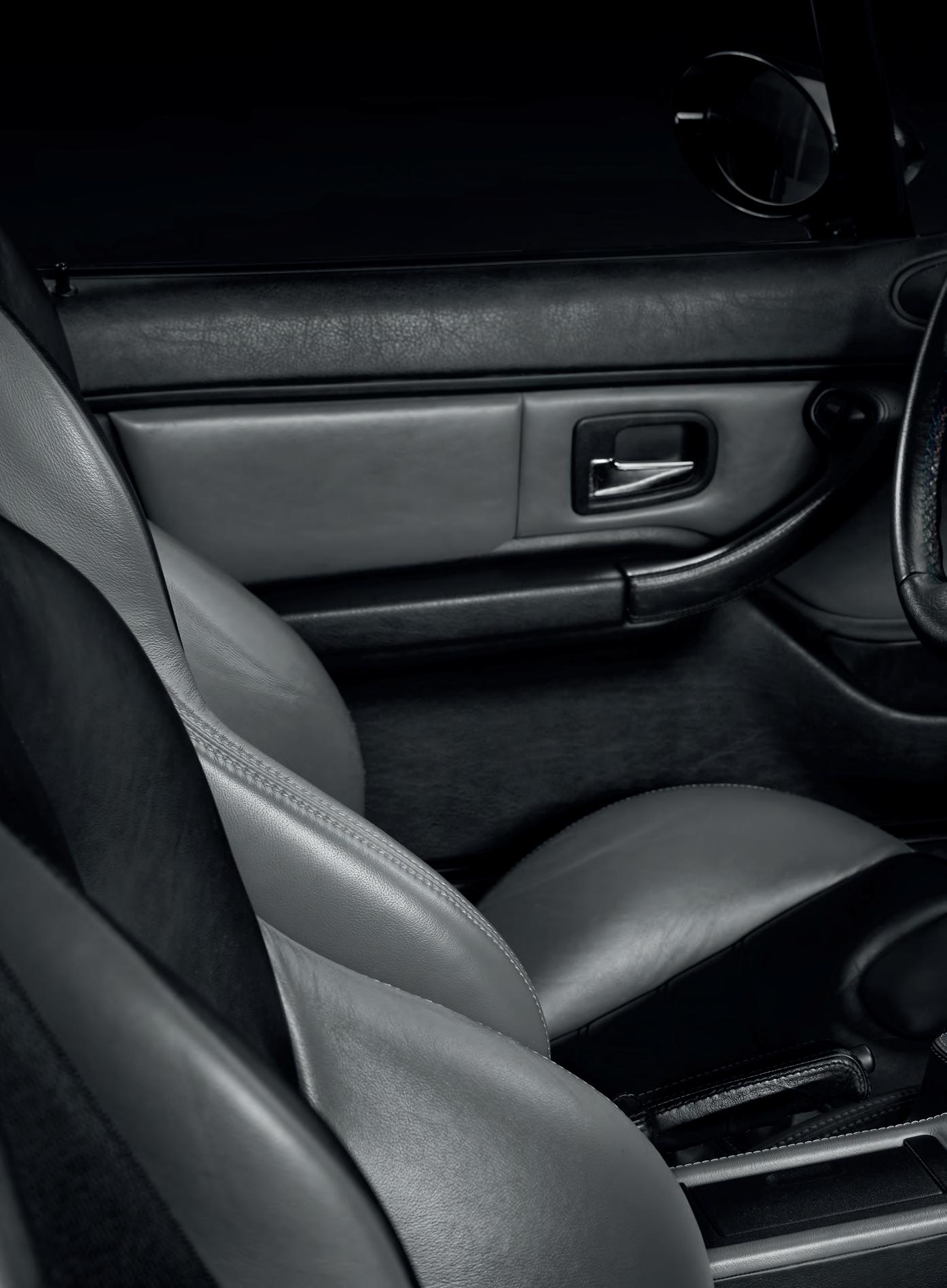











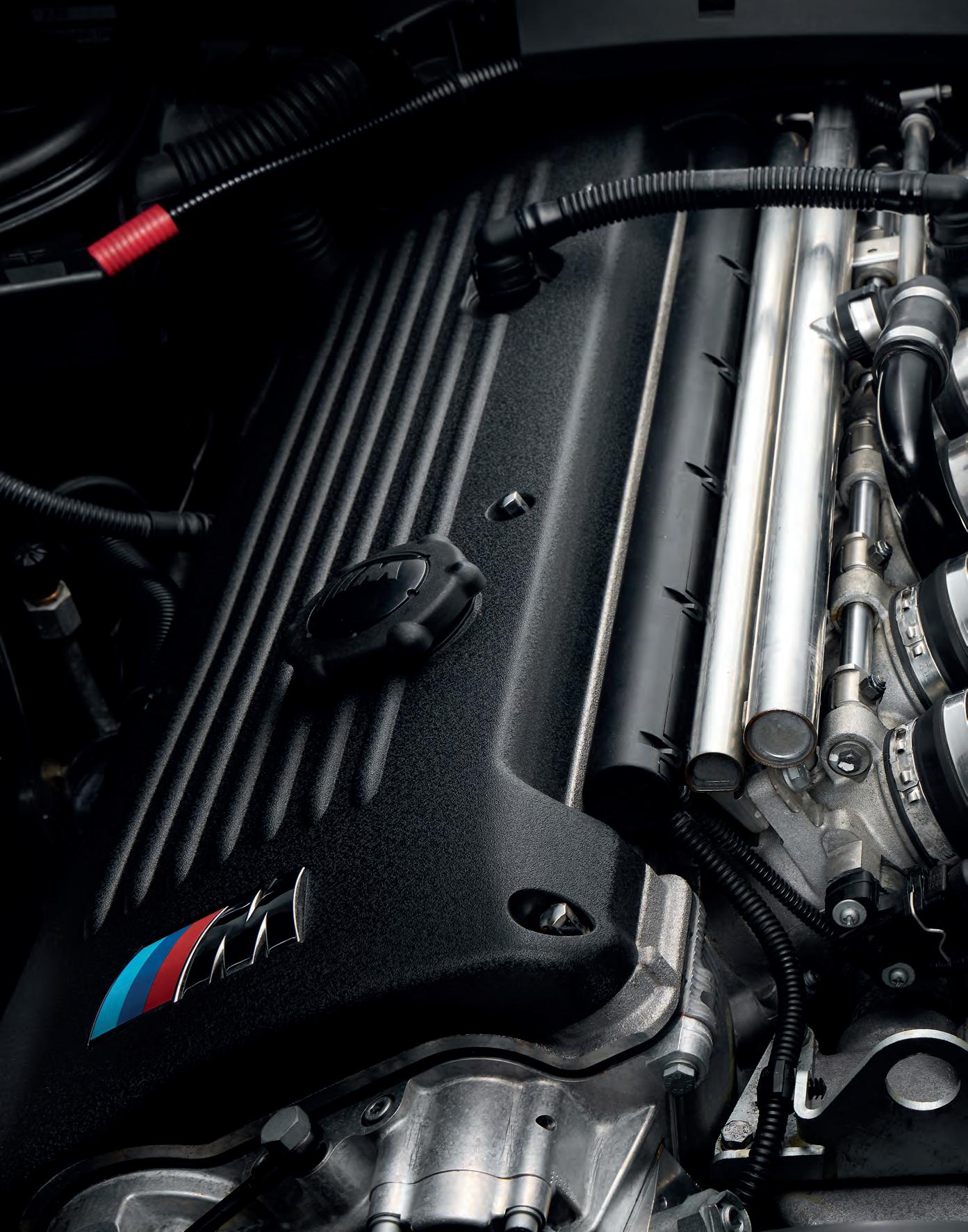
- I bought it in Germany, but it came from the Japanese market.
The Z3 roadster debuted in Geneva as a prototype considered a curiosity from which something suitable for mass production might - originate in the future. However, the reactions of visitors to the BMW stand were so enthusiastic that the decision was taken in Munich: the future is now and there is no need to wait for production. The first examples hit showrooms in 1995.
Production of the coupe based on the Z3 started in January 1998, but the first buyers had to wait until July. Mentions that BMW was planning to produce such a car appeared in the press as early as 1996. Pictures of a camouflaged prototype accompanied texts stating, for example: ‘It will be more than a coupe, however. The new car has a large third door and one may use it as a small estate car. It would be a car in the style of the Volvo P1800 ES, produced between 1971 and 1973.’
It is not sure whether the Germans really meant to create a car identified as a ‘small estate car’. Most probably, they wanted to expose the car’s sporting qualities. The utilitarian ones were at best only in second place. BMW made no secret of the fact that, in developing a roadster-based coupe, it was drawing on noble and proven models. The official interpretation was explicit: the Z3, with its closed body, was referring to the Triumph GT6. It is worth recalling that BMW already owned this British brand at the time. The silhouette and the major features of the car can also evoke associations with the Jaguar E-Type and the MG B GT. Wherever you look, the notable ‘ancestors’ themselves.
Manufacturing took place at the factory in Spartanburg, South Carolina. The feisty car just begged for the upgrade with the M package, which it received.
Under the bonnet of the M Series was a 6-cylinder, 321-hp engine, which must have commanded respect even from drivers of cars such as Porsche. It could not have been more different, since it only took 5.4 seconds for the massive BMW to reach one hundred. The top speed, according to the rules that are now familiar to us, was electronically limited to 250 km/h. The car was only available with a 5-speed manual transmission.
However, what we see in the pictures is not a regular Z3M (as far as Z3M can be regular). Under the bonnet is an engine from an M3 E46, making it one of only 269 such examples. The unit develops 325 hp, which means it has been weakened slightly. In the E46, it was 340 hp. The mileage display shows just over 50000 km. The authorised survey shows that this vehicle is in excellent condition. It came to Europe from Japan.
- From Japan, it was imported by a manager from BMW headquarters. The downside of collector cars imported from Japan is that their low mileage will be less valued than the same on an identical car from the European market. On top of this, even the best-documented car will have documents that only very few people outside Japan will read.
Although the owner is objectively right, this does not in any way detract from the uniqueness of the car shown in the photos. This is one of those vehicles that guarantee enjoyable driving and are fun to drive. In the case of the version bearing the coveted ‘M’ letter, the pleasure is wild.
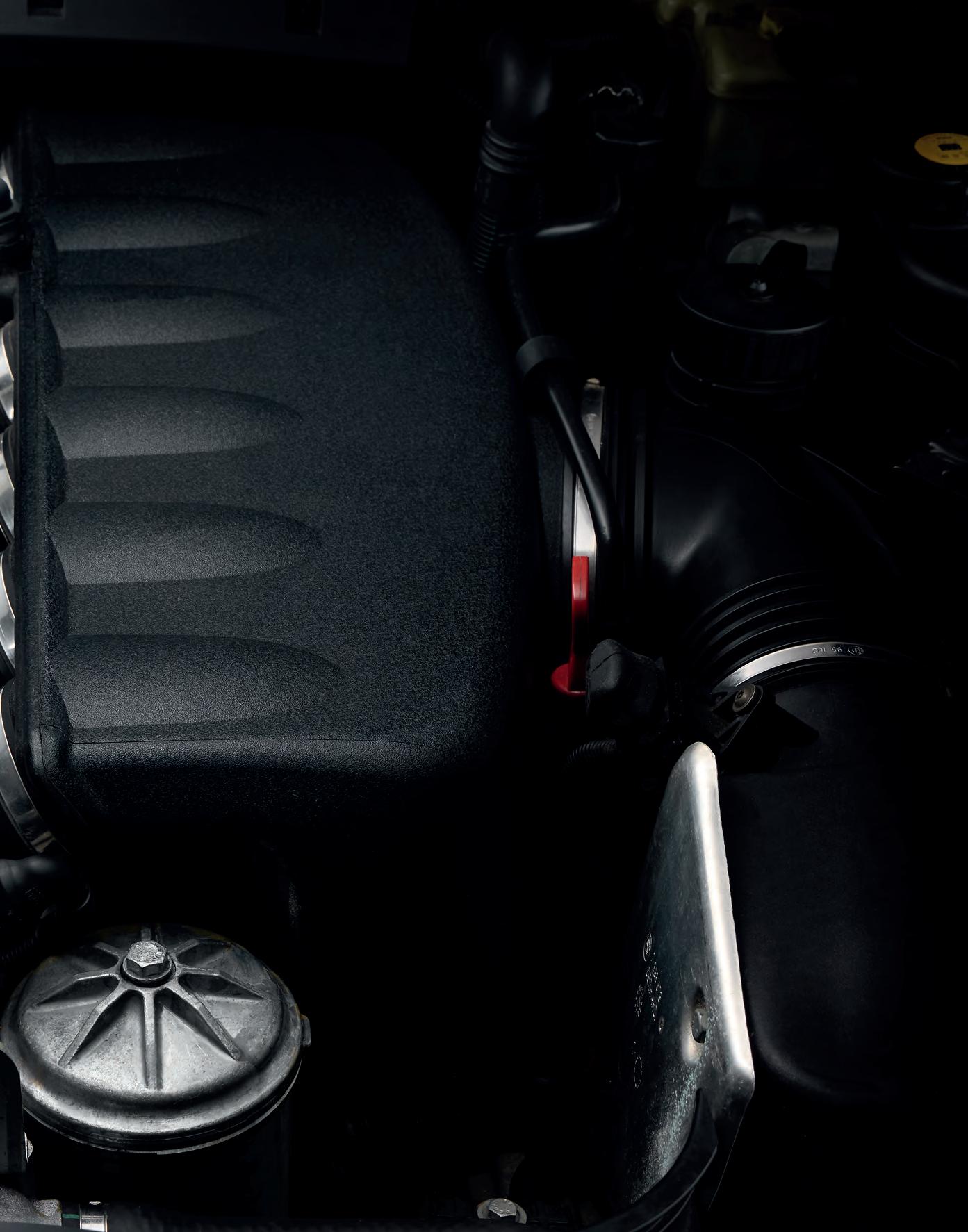




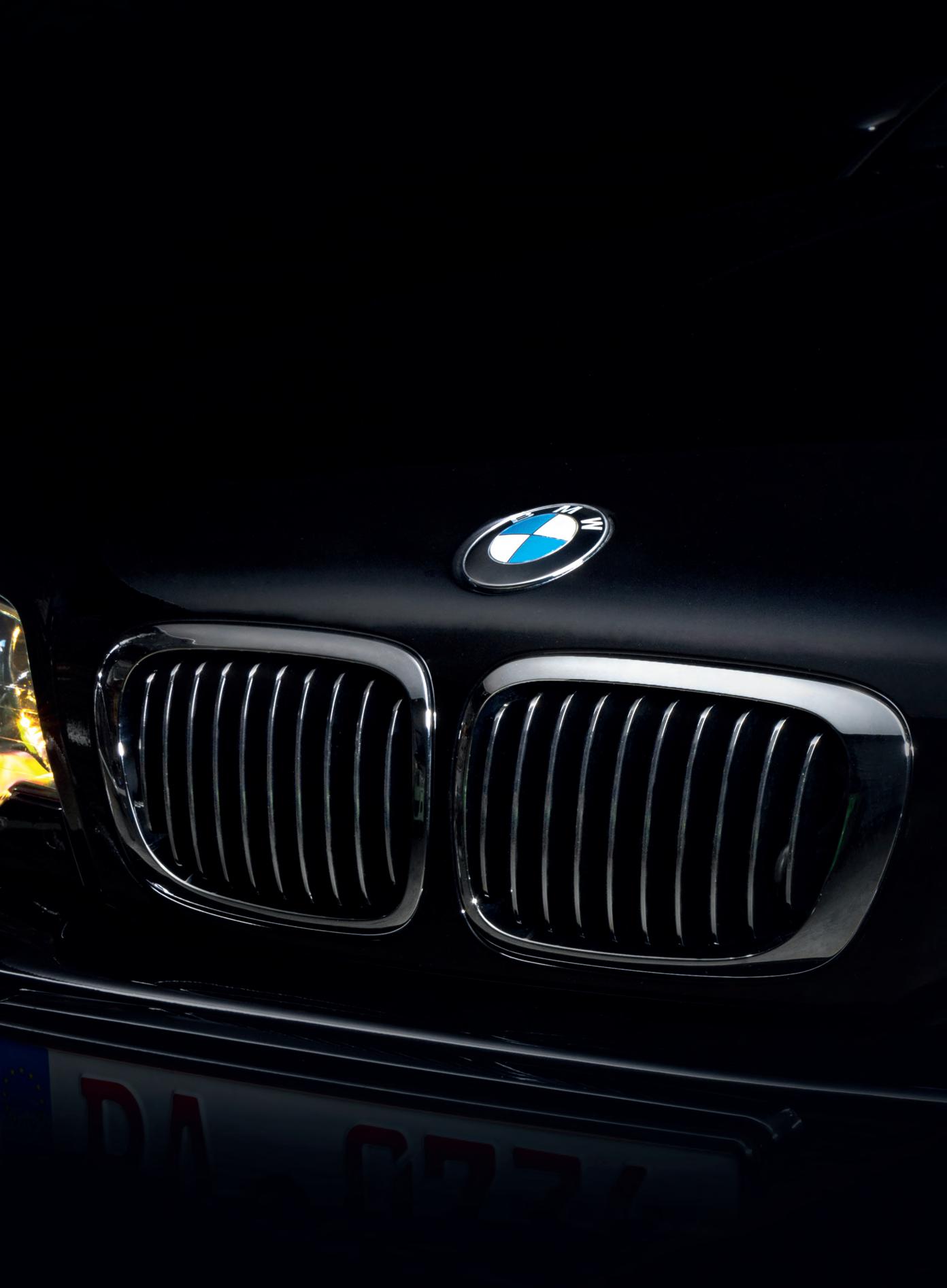











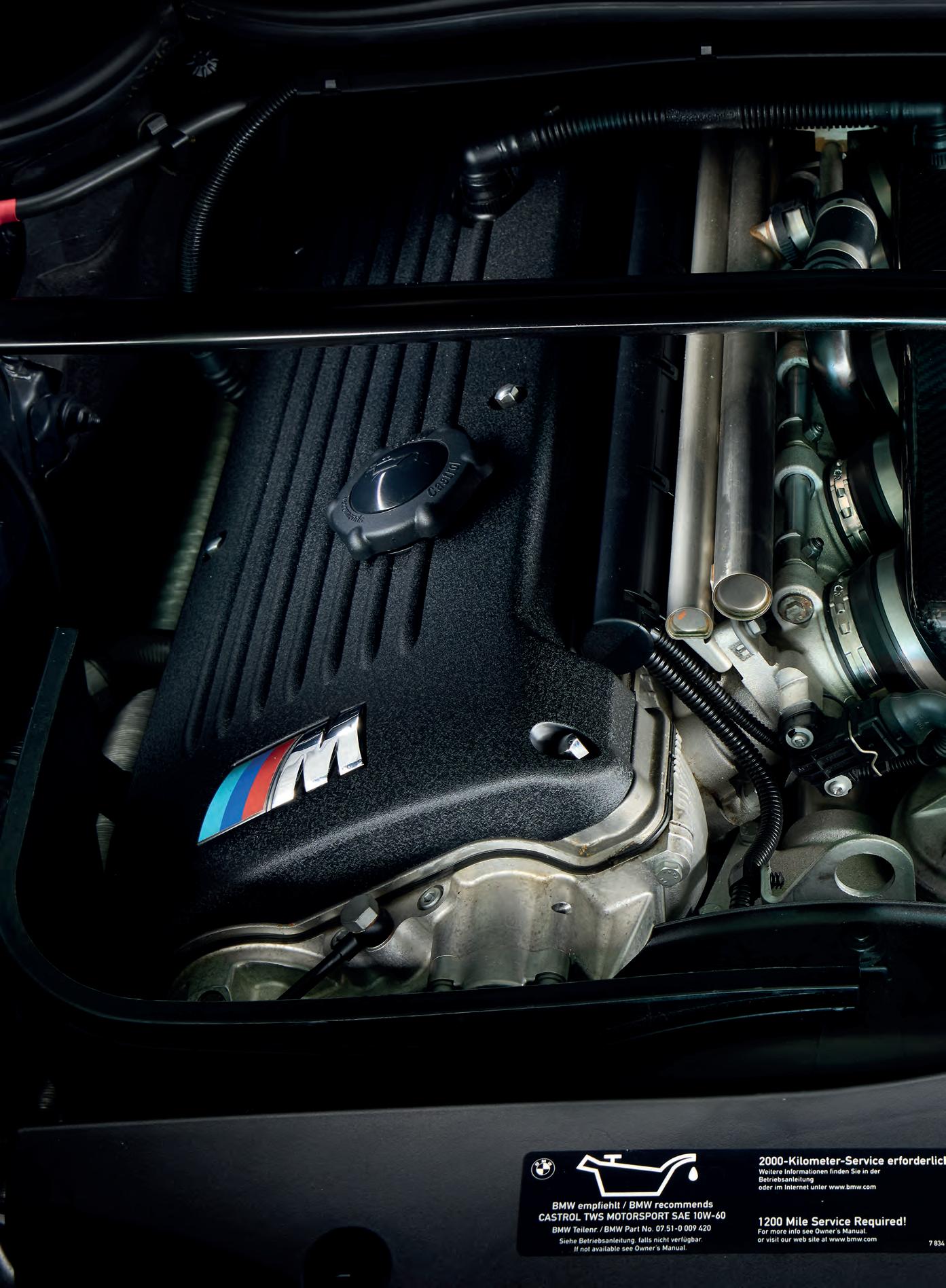
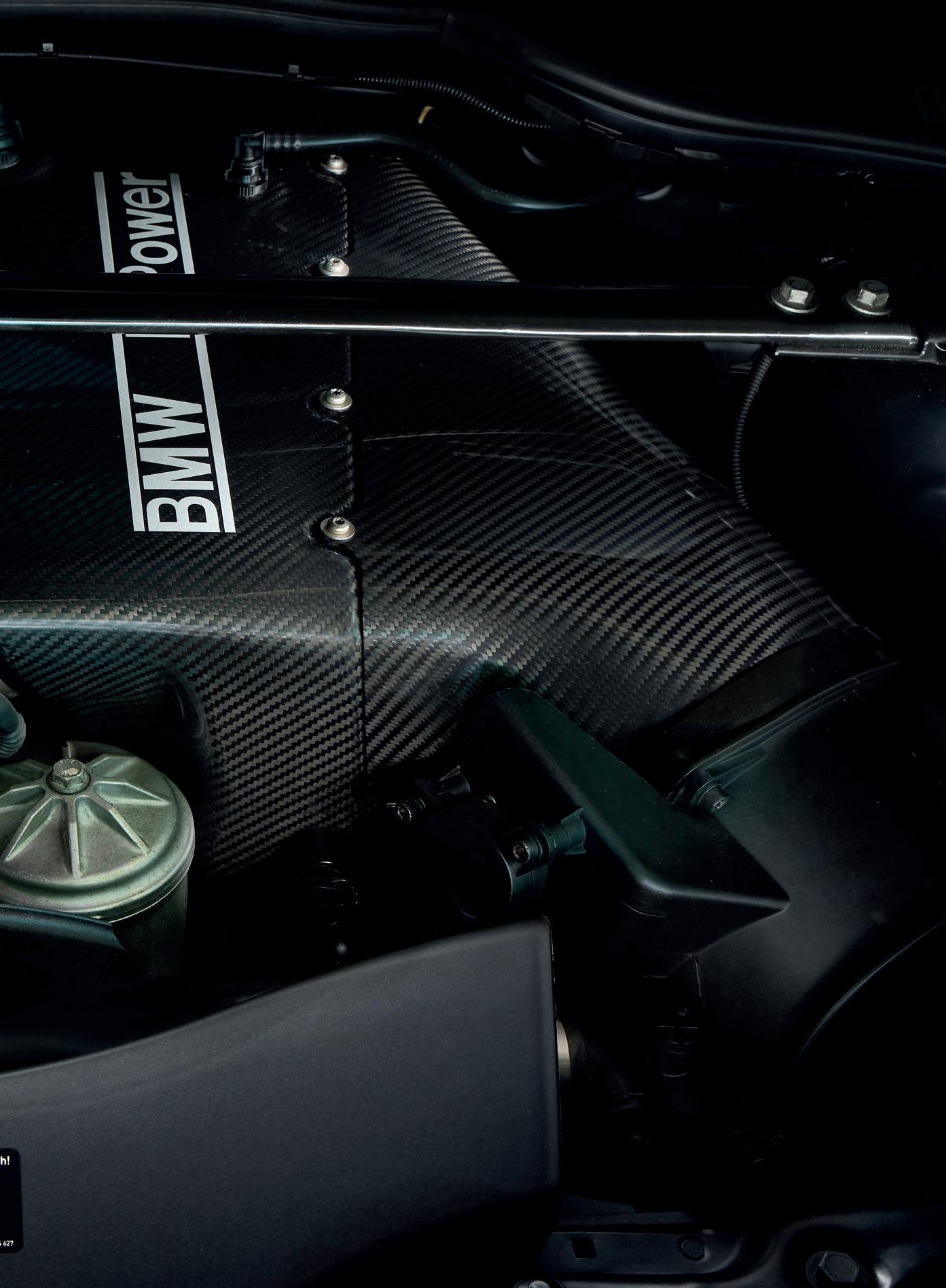





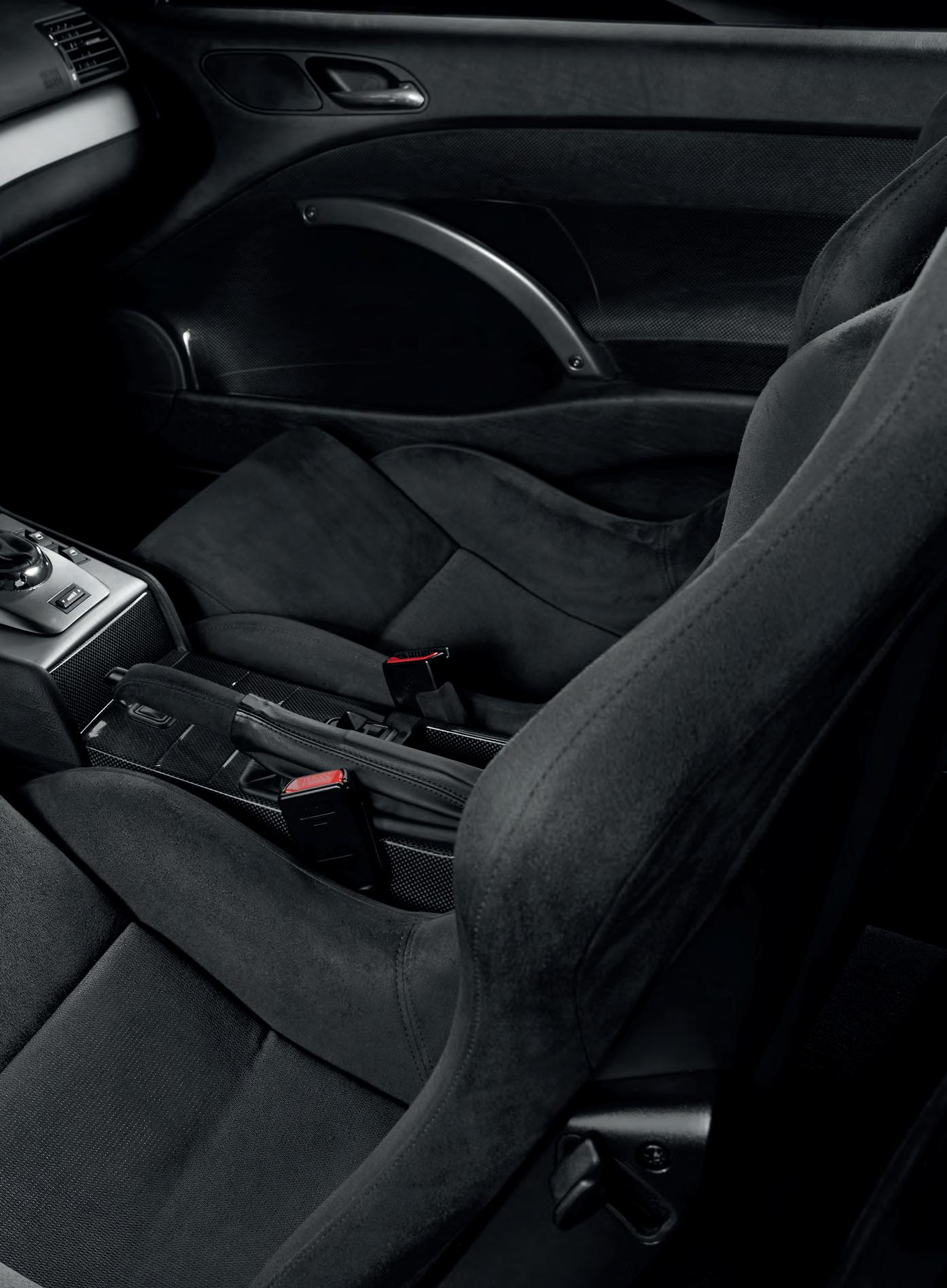











The word ‘amazing’ defines it just perfectly. BMW manufactured 841 of these with the steering wheel on the left (RHD 500 units have it on the right), and each one is almost priceless. The occasion for the 21st-century CSL was the 30th anniversary of its prototype. The circumstances of its creation were no small matter. The BMW designers wanted to build a car that anyone who had anything to do it with might remember forever. We hope that, upon completion, every designer on the team got a solid raise. Such exemplary performance of duty should be rewarded.
The M3 CSL E46 could not exist if it were not a regular E46. BMW showed the new ‘3’ at the Geneva Motor Show in March 1998. The Germans emphasised that, when creating the next 3 Series, they wanted it to be both familiar and completely new. They reconciled these apparent contradictions in a clever way. On the one hand, they designed something that continued the style of its predecessor in a modern way; on the other, they spared no expense in ensuring that the E46 met the demands of the market at the time, the binding safety standards and pleasing customers’ taste.
A new iteration of the coupe was also shown at Geneva only a year later. Although the car looks like an E46 sedan, with the only exception of the rear doors, it is a vehicle with a completely fresh design. If the coupe were to be damaged while we were driving it, we would soon realise that the parts from the sedan would be of no use to us, except for the emblems, door handles and lights. The windscreen is of a completely different size, the roof is shorter and the doors use frameless glass. A car that is seemingly similar, yet so different.
We are, of course, most interested in the ‘Three’ with the ‘M’ badge. The M3 was unveiled in Geneva in the spring of 2000. Compared to its brothers, it was 20 mm wider. Also, the engineers modified a few of its exterior components, especially those responsible for aerodynamics. A 6-cylinder, 343-hp, 3.2-litre engine was tucked under the bonnet. Speed was traditionally limited to 250 km/h. When you buy an M3, you can always be sure that you will have an unconventional car in your garage. But BMW would not be itself if it did not raise the bar even for a vehicle which, as common sense indicates, nobody could further improve.
The car you see in the photos was purchased in 2021 in Germany. It is a vehicle that is as unusual as it is rare. If you have already started tallying up your savings and getting down to
searching the classifieds, we need to cool your excitement. These cars are rarely offered for sale and even when they are, the price always knocks you off your feet. This is one of the few cars that does not come cheap. Of course, the amount of money you should expect to spend will not go up indefinitely. At some point the price skyrocketing will stop at a defined level, you can be sure of that. Just like the fact that it will still be at a level that is completely obscene.
Jeremy Clarkson called it the best BMW ever. So that the Top Gear cameras could record a test that best reflected the nature of the car, the team travelled to the Isle of Man in the Irish Sea. Why there? There was only one reason: on the Isle of Man there are no speed limits on roads outside built-up areas.
The BMW M3 CSL E46 is a firecracker. It will provide an adrenaline rush, but to the unskilful it can do severe harm.
The regular M3 is always fast, but who says it can’t be faster?
In the preparation of the new CSL, they decided to do away with everything that is not essential for driving and that, by its presence, adds even one kilo to the weight of the car. Jeremy Clarkson said the boot liner was made of cardboard, which is not true. What is true, however, is that the designers took all pains to keep the final weight of the M3 CSL E46 as low as possible. Thus, in the 21st century, in the middle of Europe, they created a car without any radio, air conditioning and electrically adjustable seats to slim this BMW car down wherever possible. As a result, one seat here weighs only eighteen kilograms – standard sport seats from M3 over thirty. The roof and door trims are made of carbon, and the boot lid of plastic. The bonnet (with its characteristic bulge) is aluminium, and the rear window is thinner than standard. These and other measures reduced the weight of the car by approximately 100 kg. Under the bonnet it still had the 3.2 litre engine, but this time they squeezed not 343 but 355 hp out of it.
How does the E46 M3 CSL drive? This is one of those questions that you cannot be answered in a single word. You can try, but with the fear, almost certainly, that you will say nothing that reflects its actual performance. All you must do is think: how can a car drive that tops 100 km/h in the blink of an eye and whose engine sounds like a thoroughbred rally car? Your imagination will produce the answers. We guarantee that each of them is as good as incomplete. To get into the driver’s seat, in this case, is to find oneself once again in a reality where motoring abhors neither petrol nor loud engine noise.
Is anyone not willing to take a ride?
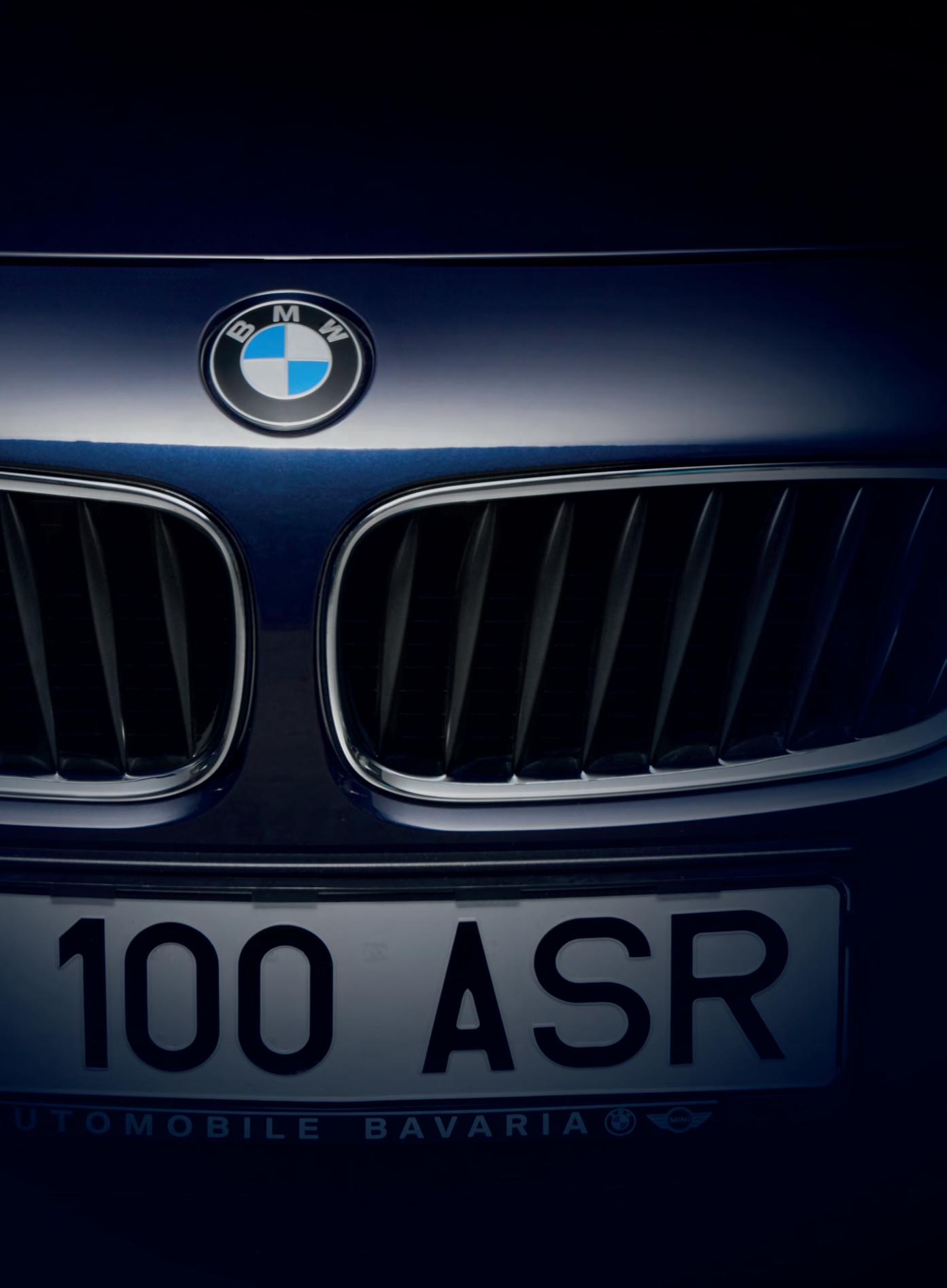






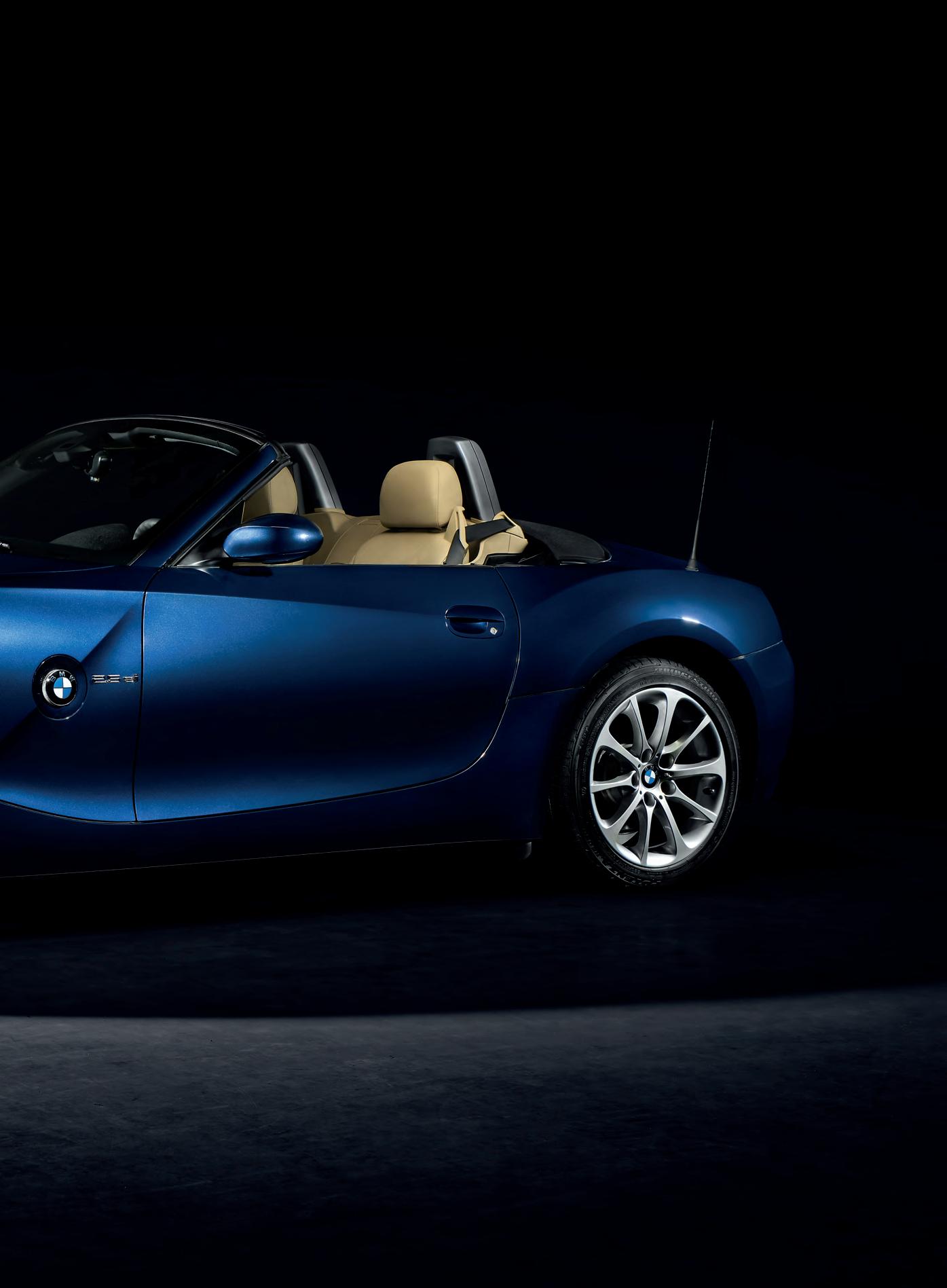
















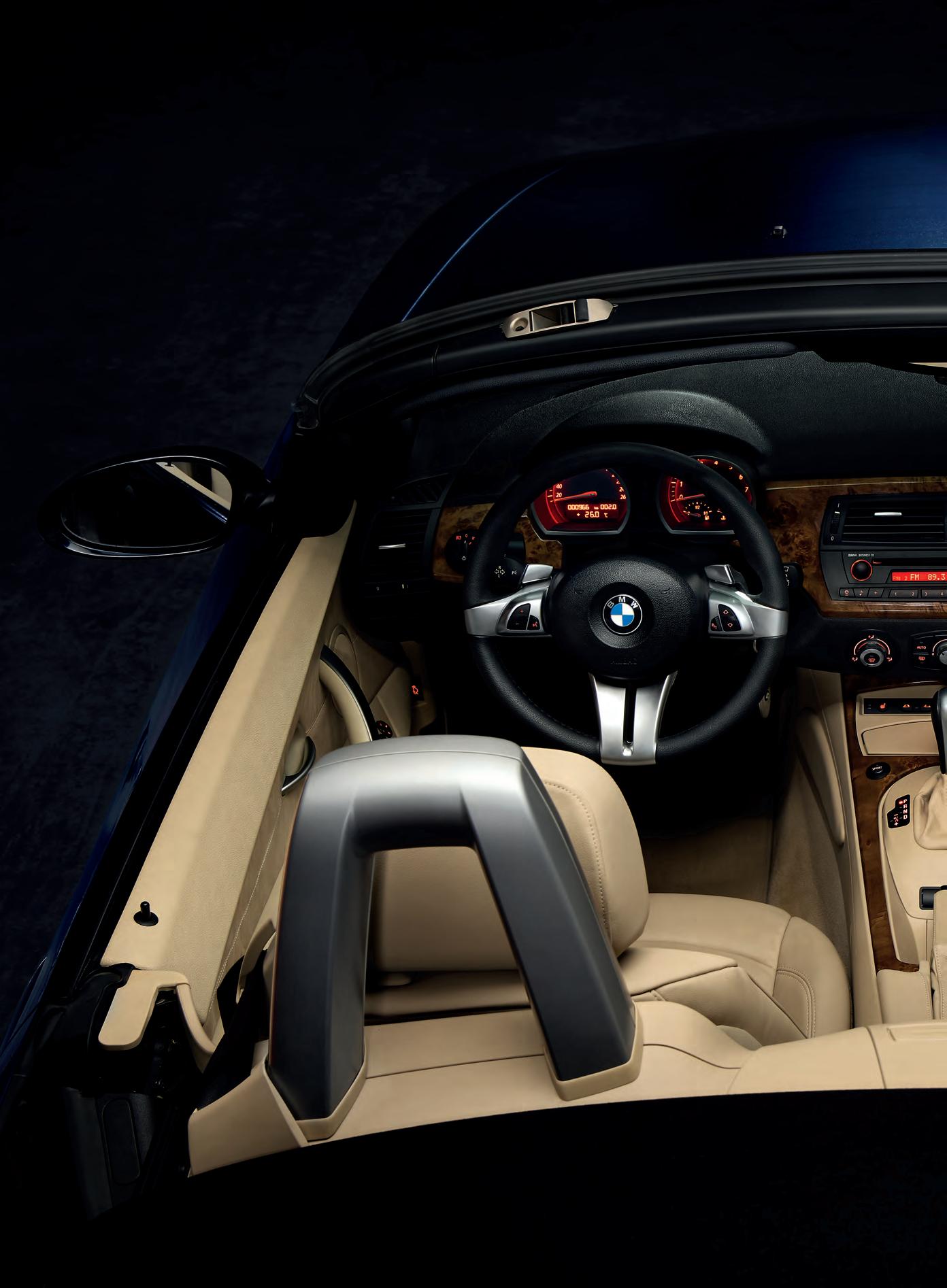






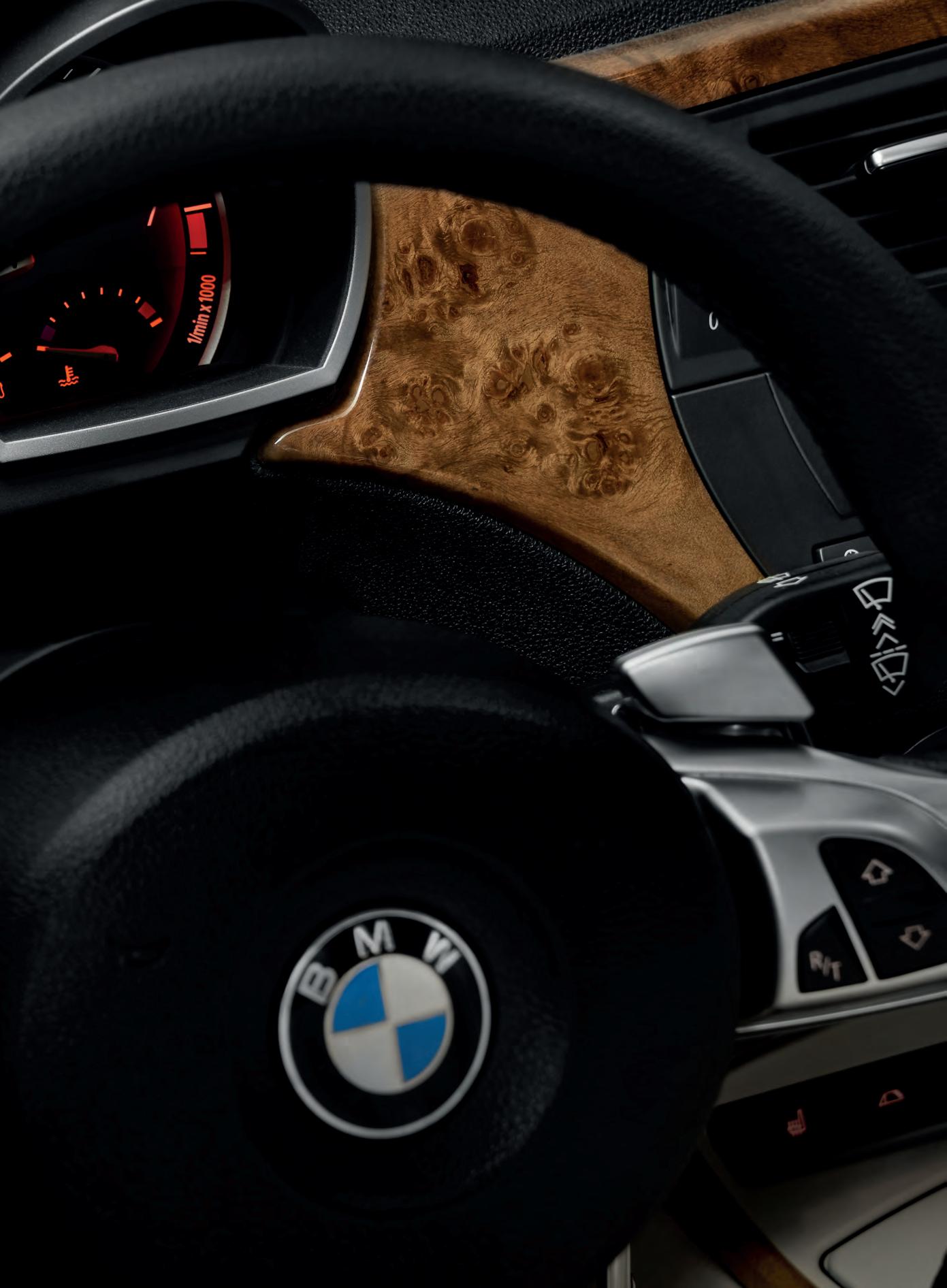










- I spotted this car and purchased it from Prince Radu, husband of Princess Margareta, Custodian of the Crown of Romania.
It is not too often that life offers the opportunity to visit a prince’s doorstep. However, if such an opportunity does arise, it is worth taking advantage of it. And you may return home in a car taken straight from the palace garage.
The story of how the Z4 ended up in Bonaventura Classic Collection’s garage is like something out of a dream. It is the fruit of a visit to Romania at the residence of Princess Margareta I of Romania. Let us hear it:

- The princess showed me around her summer estate in Săvârșin, including the buildings where the cars are kept. She saw my interest and offered to resell the Volkswagen Golf III GTI. A remarkably interesting specimen - it was the last car purchased by Her Highness’s father, the last King Michael I of Romania. King Michael was a car enthusiast and a collector of World War II-era Willis. However, another vehicle caught my attention. I pointed to this BMW.
It was a BMW Z4, which the German company sold to Prince Radu, the husband of Princess Margaret, in 2012. The only owner was Prince Radu, and it is his details that appear in the documents. For some reason, the prince did not use the Bavarian roadster. The car only made the 750-kilometre journey from Bucharest to Săvârșin and the 100-kilometre route to Timisoara airport and back throughout its life. All this
took place in 2012, and since then the car has not moved out of the garage even by bumper length. Its subsequent role was limited to decorating the princely collection with dignity.
- This is a car I have never driven. On a trailer it first arrived at my garage in Timisoara. I bought the battery there, but I waited till the car could be started by Helmut in Germany. I limited myself to putting the key in the ignition and turning it just enough for the lights to come on. Reviving a car like this, not touched for many years, triggers emotions and feelings I do not know how to name.
Anyone who appreciates interacting with cars knows what I am talking about. To say that seeing the clocks sink back into colour after so many years, seeing the lights come on and the indicators blink is a pleasant feeling is to say nothing at all. In this case, there was also the feeling of having a new-old car in which everything works and does not betray even the slightest sign of wear and tear.

A gentle turn of the key breathed new life into the BMW and triggered the electronic odometer with a mileage of just 953 kilometres. The 2.5-litre engine was (and is) completely serviceable, but the unit required a number of oil changes and flushing oil cleaning before we could allow it to start again.
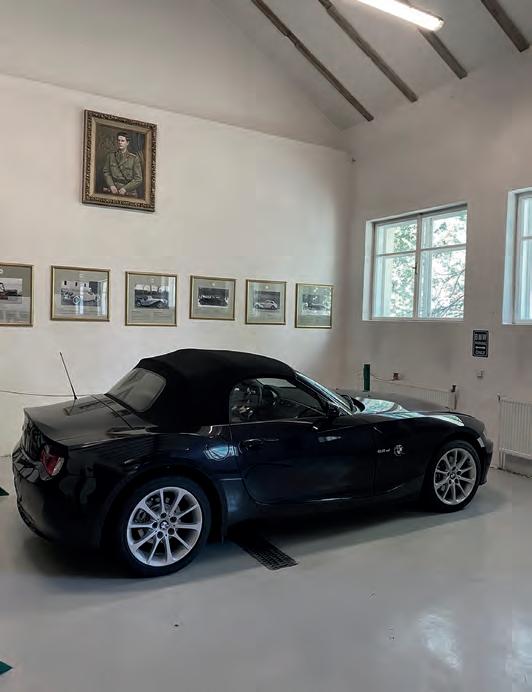
A cursory reading of the paperwork showed that the car was manufactured on 3rd May 2010. Wait a minute.... production in 2010? The last unit of this model left the production line in August 2008. In 2010, a successor, the second-generation Z4 model, was already available in showrooms. A quick check of the VIN helped to establish that the vehicle was indeed built on the 3rd May, but in 2008, which is two years earlier than the official document states. BMW handed the Romanian prince a brand-new car that had never been used - there is no doubt here. Most likely the BMW dealer, however, considered it a slight gaffe to sell such a person a four-year old vehicle. The easiest way to rejuvenate the Z4 was to enter the year 2010 instead of 2008. An unsold two-year old car looked better than a four-year old one.
A unique distinction of the car is the original Romanian number plates. They are unique because they have the ASR distinction reserved for royal and princely vehicles.
The Z4 model appeared in 2002 and was produced in South Carolina, USA. It was not a revolution, but rather a continuation
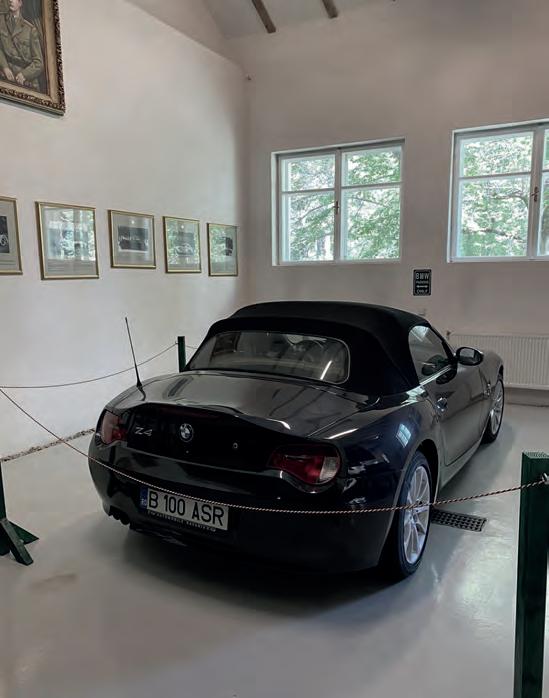
of the course taken by its predecessor, the Z3 model. Compared to the Z3, it was slightly larger and heavier. To help it remain agile, they produced a number of its components from lightweight materials. Even the spare wheel was dispensed with, but with run-flat tyres the lack of air is not such a worry.
Drivers eager for a sporty experience could buy a roadster (designated E85) or a coupe (E86). The Z4 drew praise for its excellent handling characteristics and for its engines. At the time of its debut, the manufacturer offered 6-cylinder units with 192 hp (2.5i) or 231 hp (3.0i). In the course of time, more engines appeared. In the car presented here under the bonnet is a 2.5-litre engine, which has not had the opportunity either to reach, let alone show, what it is capable of. However, this is no loss, since there is something much more valuable about it - the fact of owning a car which, although it has not even covered 1,000 kilometres, has earned a history it could share with several other vehicles.





























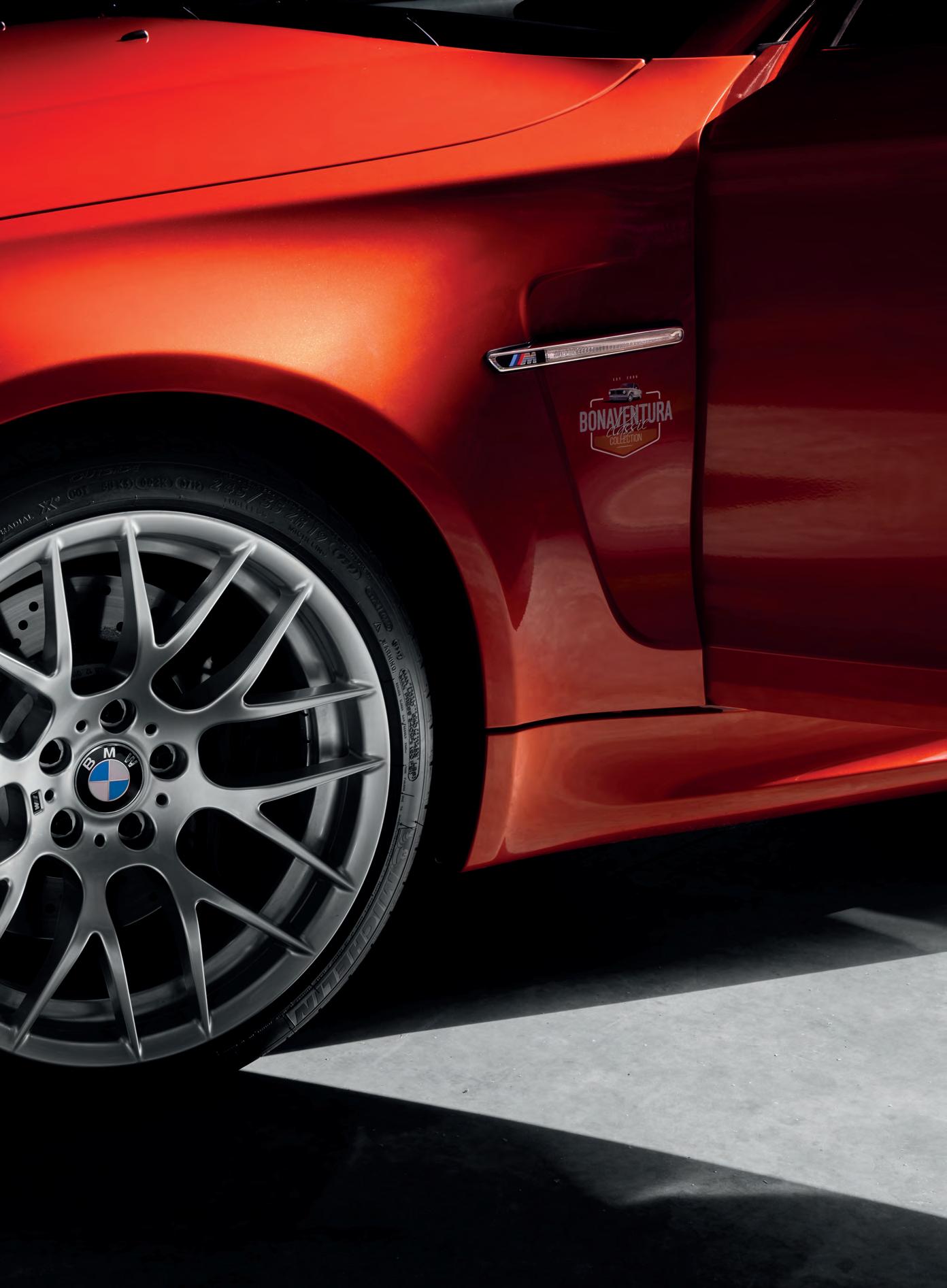




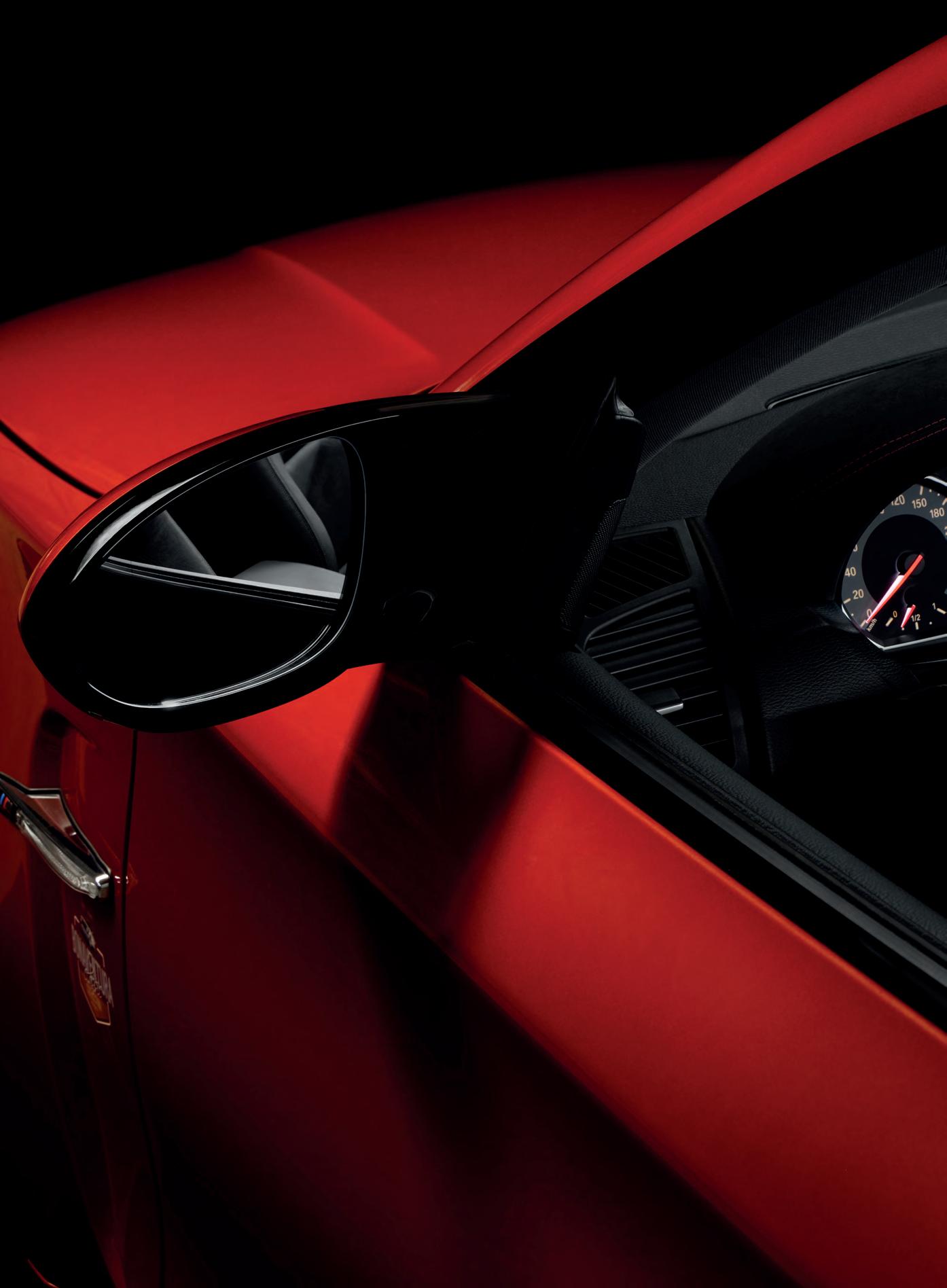
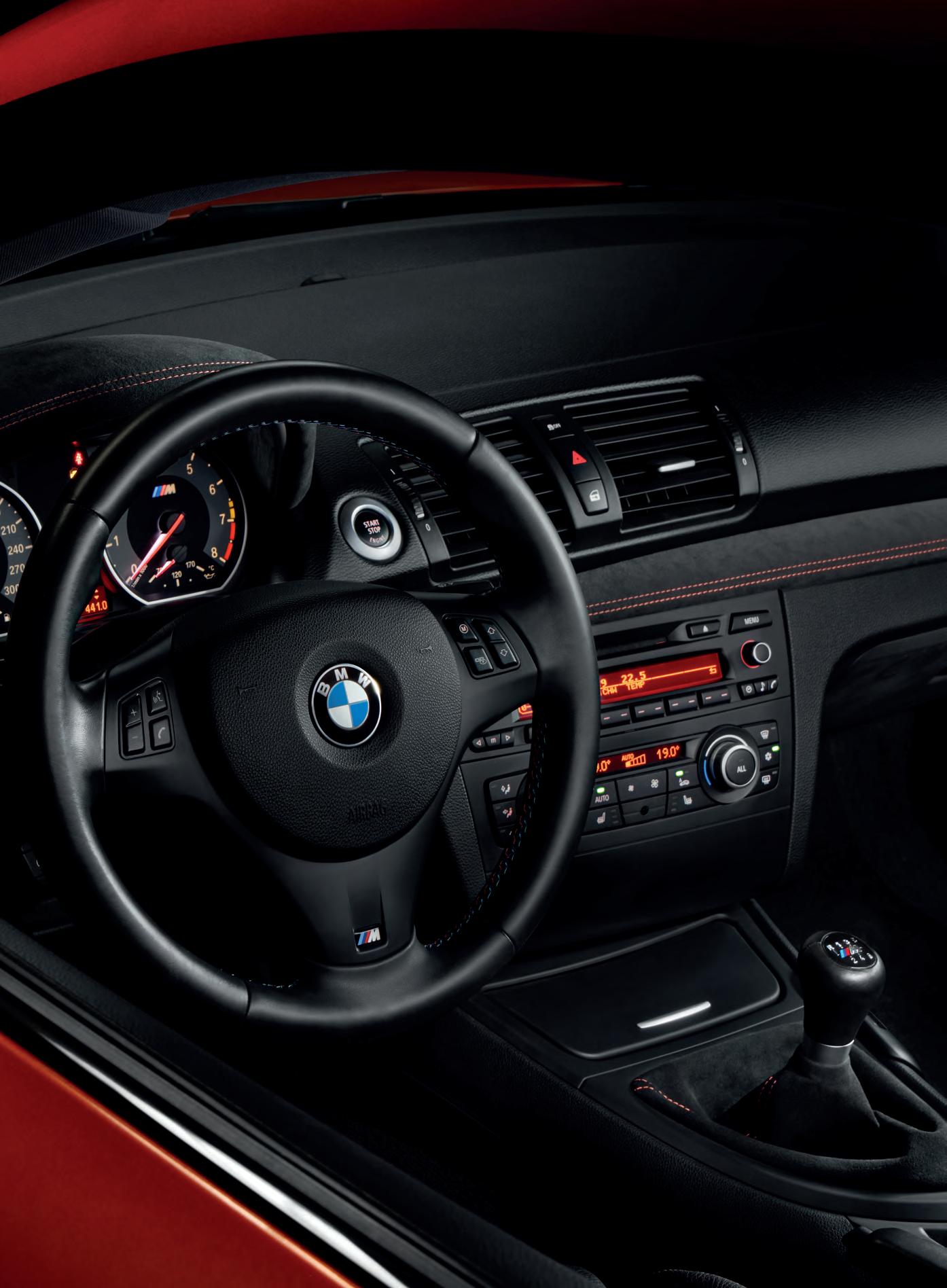





- I bought it because it has the pedigree of a small sports car.
The purpose of the creation of cars was to make people’s lives easier. The purpose of the creation of the BMW 1M was to give them pleasure.
The 1 Series was a complete novelty in the BMW range. The debut of the compact car took place in March 2004. Initially, only a 5-door hatchback was available for sale. In January 2007, a 3-door variant arrived in showrooms, followed in June by the coupe, which is of most interest to us.
With the unveiling of the coupe model in June and the convertible model in September, BMW wanted to offer something that was small, attractive, fast and at the same time delivered Bavarian quality. Looking at the result of the engineers’ work, one may say that they have done an exemplary job. The stylists have ensured that the car, which is over four metres long and has a wheelbase of over 2.5 metres, looks muscular and airy at the same time. Not too many people can boast of this! Someone said that the BMW 1 coupe version looks like a flea on the road. We would add that the BMW 1M resembles a flea not only in appearance, but also in movement.
In fact, it is not the look, but the powertrain and performance that are the biggest attraction of the 1M. Interestingly, under the bonnet you will not find a unit developed by the ‘M’ division, but the driver will certainly not feel disadvantaged. After all, what he has at his disposal is a 340-hp, 3 litre twin-turbo engine that allows the car to reach one hundred metres in less than five seconds. Acceleration is downright magical, and the car responds immediately to the accelerator pedal.
The copy in the photos is in factory condition. It came into the Collection in April 2021 from a Porsche collector who decided on owning the little BMW because of its mileage and condition. The odometer shows less than 8500 km, which effectively dampens the unusual desire to uncompromisingly check whether the two-door coupe on the road really does jump like a flea.
The owner admits that the 2011 BMW is a bit too young for him. However, he admits that because of the car’s DNA, typical of small, swoopy cars, he could not turn it down.
Anyone who says they are surprised is most likely lying.





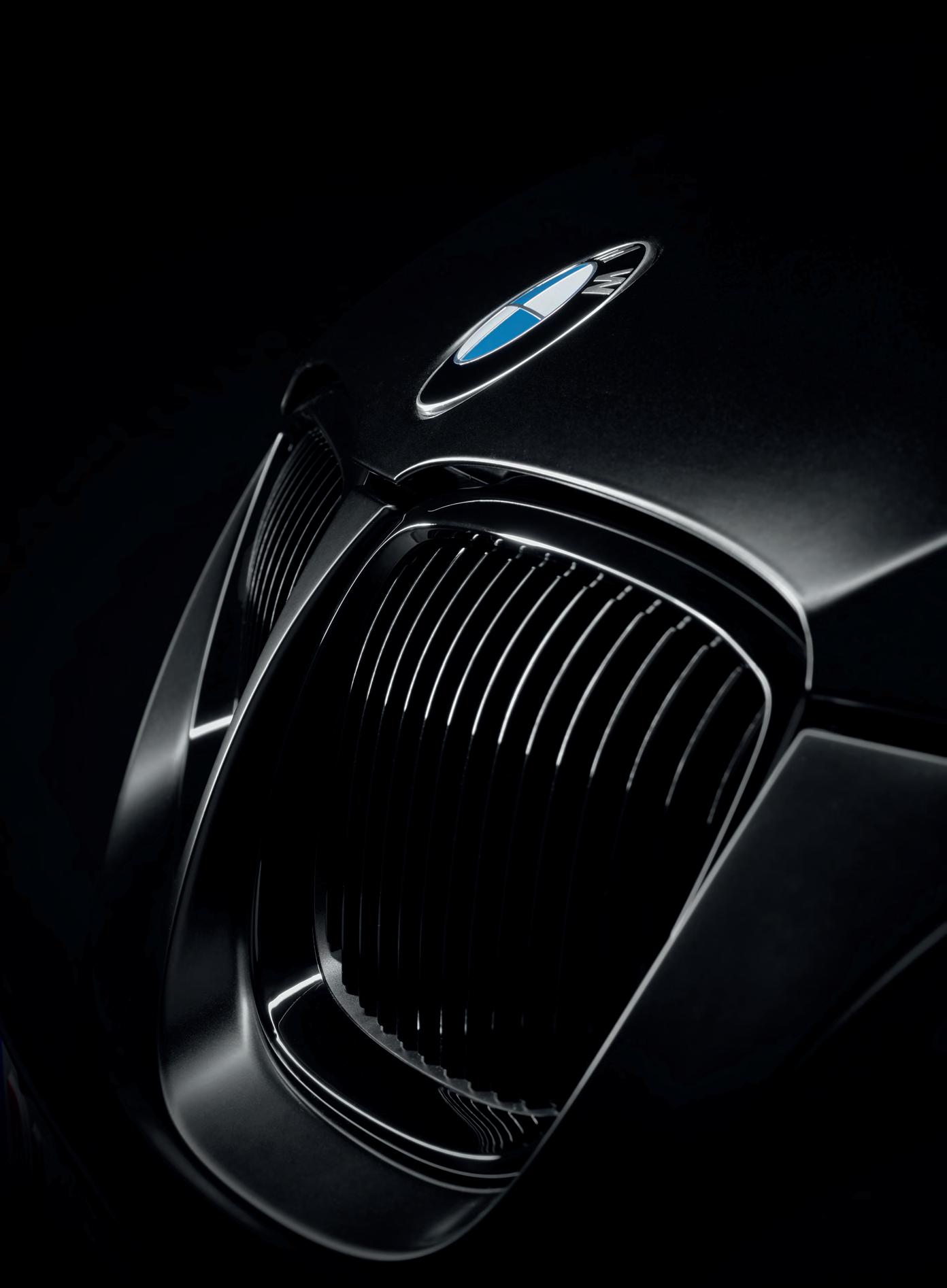





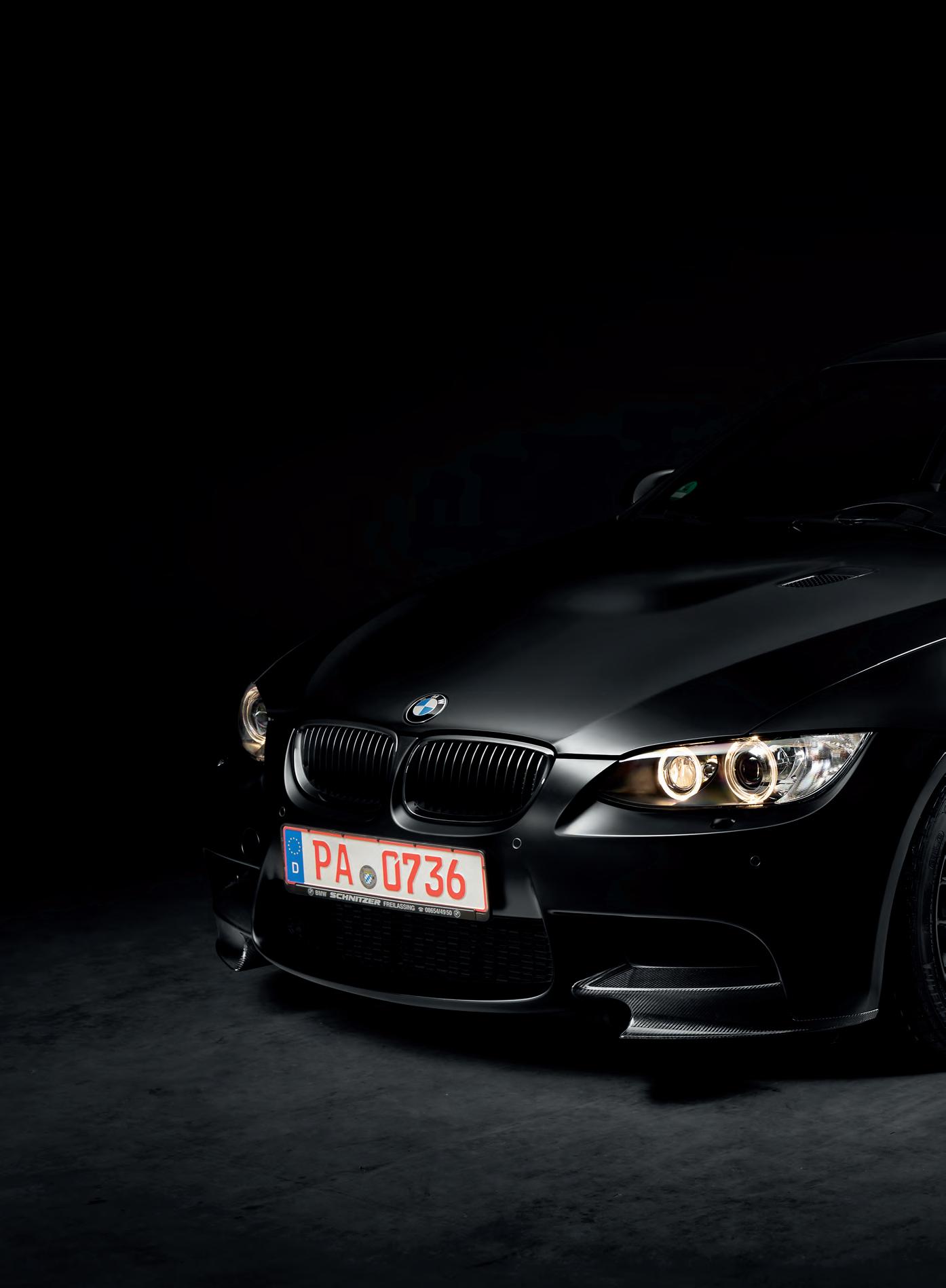
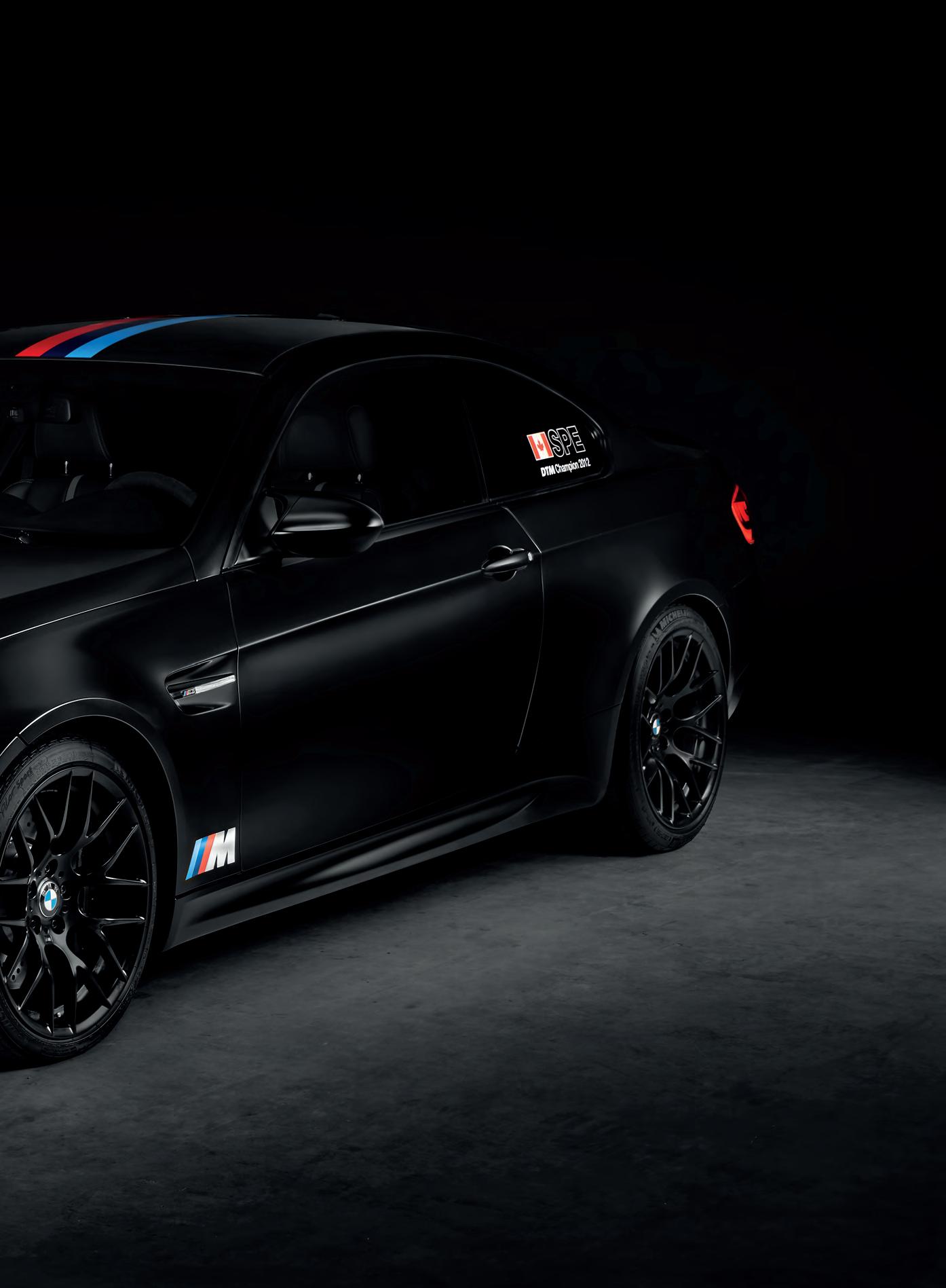




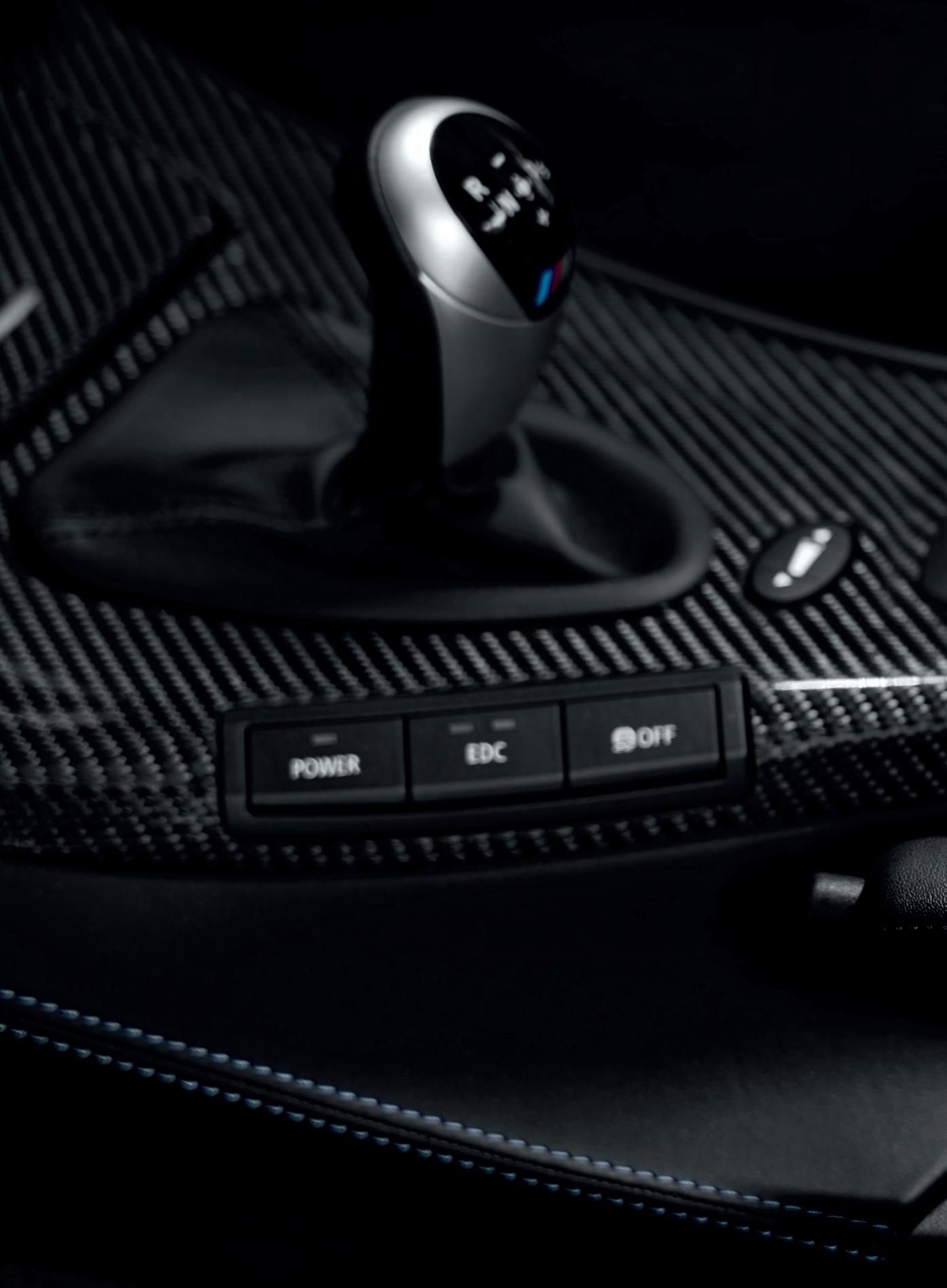























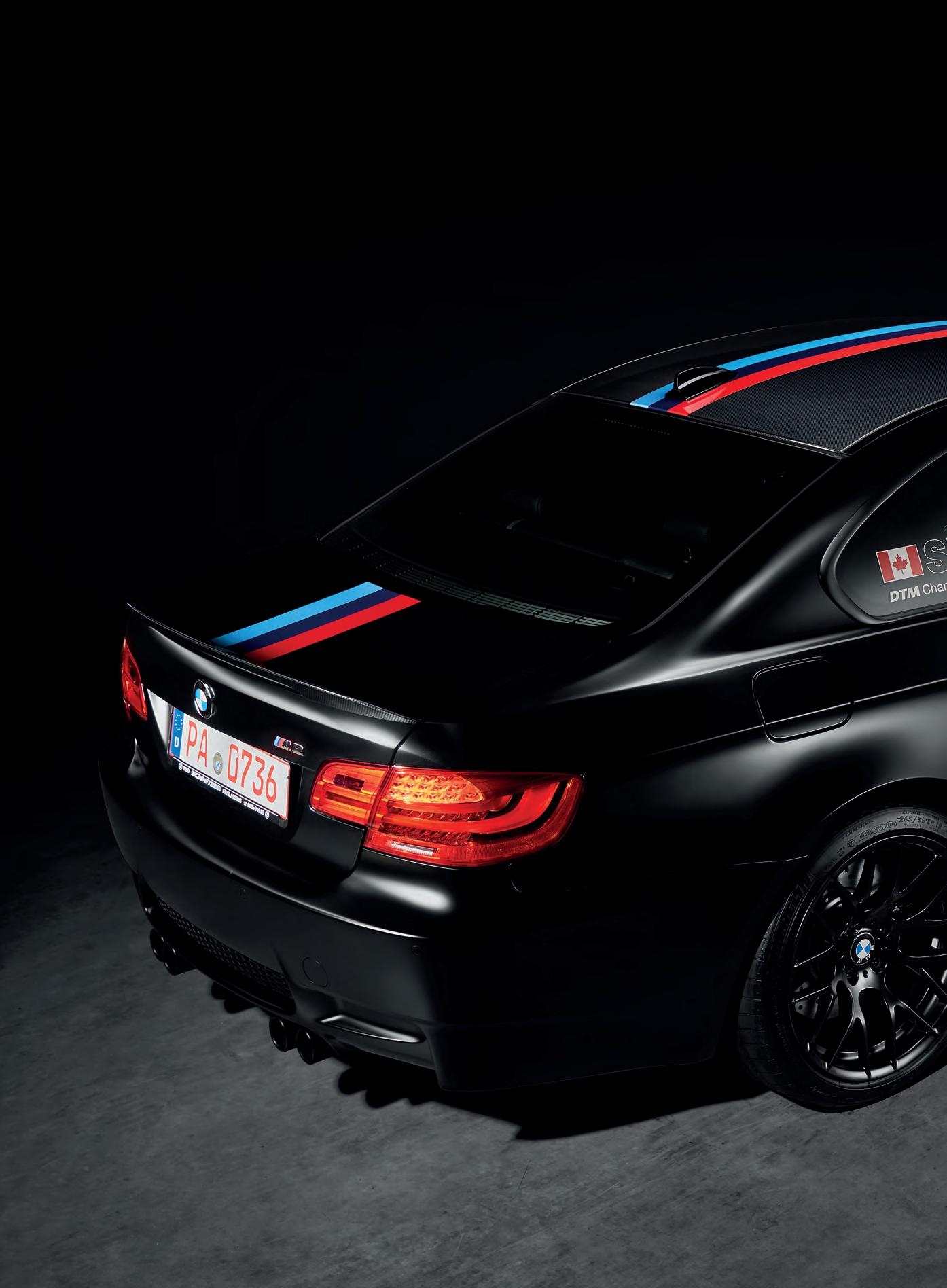





- When I found out about this sale from my friend Remy Halders, I said that this car had to go into the collection and that price was not an issue.
It usually starts with posters adorning the walls of a room. Although the pictures do not convey sounds or smells, one glance is enough to pick up a sports car captured in a rush with the whole palette of the senses. In our imagination, we take turns and experience emotions that are alien to everyday life. Unfortunately, with the time of our maturing, the sounds of an imagined track transform into the sound of a poster ripped off from the wall. We have grown up, we put off owning a sports car ‘until later‘, and we do not even think about a racing car anymore. Well, posters usually begin and end, but there are exceptions. The Bonaventura Classic Collection has no shortage of them.
for his return after almost two decades? It is difficult to know, although one can be certain that enthusiasm is the mildest word to describe the atmosphere that prevailed in Munich a bit later. One season was enough for BMW to win every trophy. We are talking about the manufacturers’ championship (BMW), the team championship (BMW Team Schnitzer) and the individual drivers’ championship (Bruno Spengler proved phenomenal). It really was a comeback!


The DTM (Deutsche Tourwagen Masters) is one of the world’s most important touring car races. It is hard to find a more prestigious event of its kind in Germany. It was in the DTM that the drivers who later became famous in Formula 1 - Ralf Schumacher, Mika Hakkinen or Robert Kubica - started their careers. The DTM racing series was initiated in 1984, with BMW as one of the six constructors involved in its first season. In 1995, the DTM ceased to exist for five years until the year 2000 when they announced its reactivation. BMW had to wait until the 2012 season for their return to this racing. But it was worth it, as they very soon realized. In the autumn of 2011, BMW announced that it was returning to the DTM, with Bruno Spengler, a Canadian racing driver of French descent, at the wheel. What hopes did the Bavarian company have
What to celebrate if not successes? Such a triumph needed a unique way of commemoration. At BMW, it was well known that sporting achievements are particularly good for the image of car brands. There was nothing better to do than creating a unique BMW model to highlight the victory achieved. So, they launched the BMW M3 DTM Champion Edition on the market. They decided to limit the production to just fifty-four units –the number alluding to the 54 BMW DTM victories to date. To make the strongest possible reference to Bruno Spengler’s winning car, they painted each one in Frozen Black matt colour. They also ensured quite a few individual features common to all fifty-four pieces. A tricolour stripe symbolising M Power run along the black bodywork, and a sticker with Spengler’s name adorned the side rear windows right next to the striking Canadian flag. Inside, the dashboard also features the winning driver’s signature and the number of the car, as befits a limited edition.
As part of the promotional campaign, Bruno Spengler travelled to many countries of the world accompanied by the M3 DTM with the number 1/54. If you did not have the chance to see
the vehicle then, you can look at the photos and see it now. It was the promotional copy, originally belonging to Schnitzer, that fed the Bonaventura Classic Collection. Let the owner tell us himself how it came about.
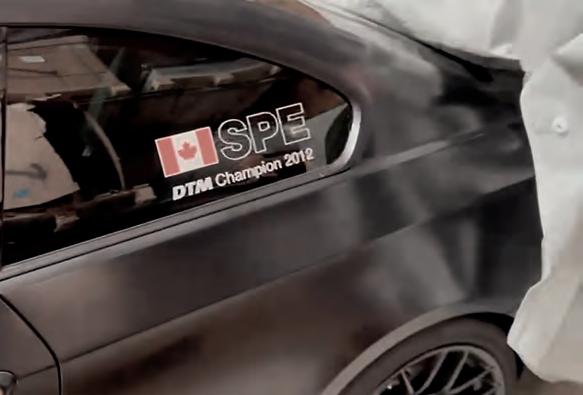
- I received information that Schnitzer was liquidating its collection. My BMW colleagues told me clearly: hurry up because there will be a queue for this car. However, by the time the gates opened in the morning, Helmut was already there. I told him that this car had to go into the collection and that price was not an issue. He bought it cheaper than I expected. The odometer read 4950 km. I drove it a little, enough to get to 5000.
Driving this car is like driving the M1. Excitement mixes with fear of even the slightest damage. No wonder, given that the M3 DTM is in perfect condition, treated with respect and properly serviced from the very beginning. Everything here looks as if the car were bought new just an hour ago. Inside, the carbon trim really shows the number 1/54 and Spengler’s signature. You can eat off the floor mats, seats, and dashboard. Or rather, you cannot, although the sterility of the interior in theory allows it. The car came with the ZCP Competition package, consisting of black wheels, gloss black
air intakes, a carbon spoiler at the rear and a carbon fairing under the front bumper. The 420-hp V8 engine allows the car to accelerate to one hundred in less than five seconds.
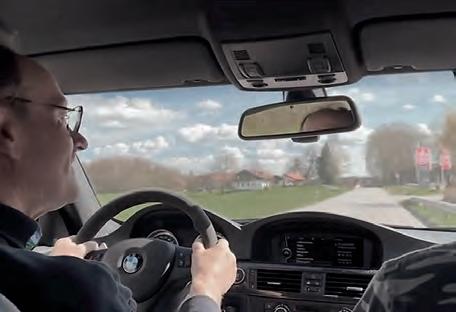
The official announcement of the M3 DTM Champion Edition came in 2012. At that time, the Company revealed that each car of this limited edition would cost €99000, or around $130000. The price included a BMW M Fascination Nordschleife course conducted by Bruno Spengler himself. If you think that the high purchase cost has scared off potential buyers, you are wrong Such cars find their owners in no time, both when they are new and when they come back on the market afterwards.

He who said: ‘Hurry up, because there will be a queue for this car’, knew exactly what he was talking about. Taking a seat, closing the door, turning the key brings all the childhood posters to life. The engine roars again and the tyres squeal. But this time it is reality, not the product of imagination. The paper car from the poster hanging on a wall has come to life and pushes us into the arms of emotions we could only dream of years ago.
It is moments like these that, as they say, are more precious than money.
















- I bought this car in 2006, and this was the start of my collection.
The creator of the Bonaventura Classic Collection bought this car in 2006, but the first time he sat in it was in 1994. A while before that, the BMW came from the United States to Poland thanks to a neighbour. To be more specific, the neighbour had brought two cars with him at the time: a BMW E23 733 that he used every day and a BMW 633i E24 that he used on holidays. What happened next? The best thing to do is to let the owner himself tell the story. And there is much to tell:
- I loved this car. I even had the opportunity to drive it already in 1994. This happened when my neighbour went to the States. He left in my care the car that I fell in love with. Years later I bought it
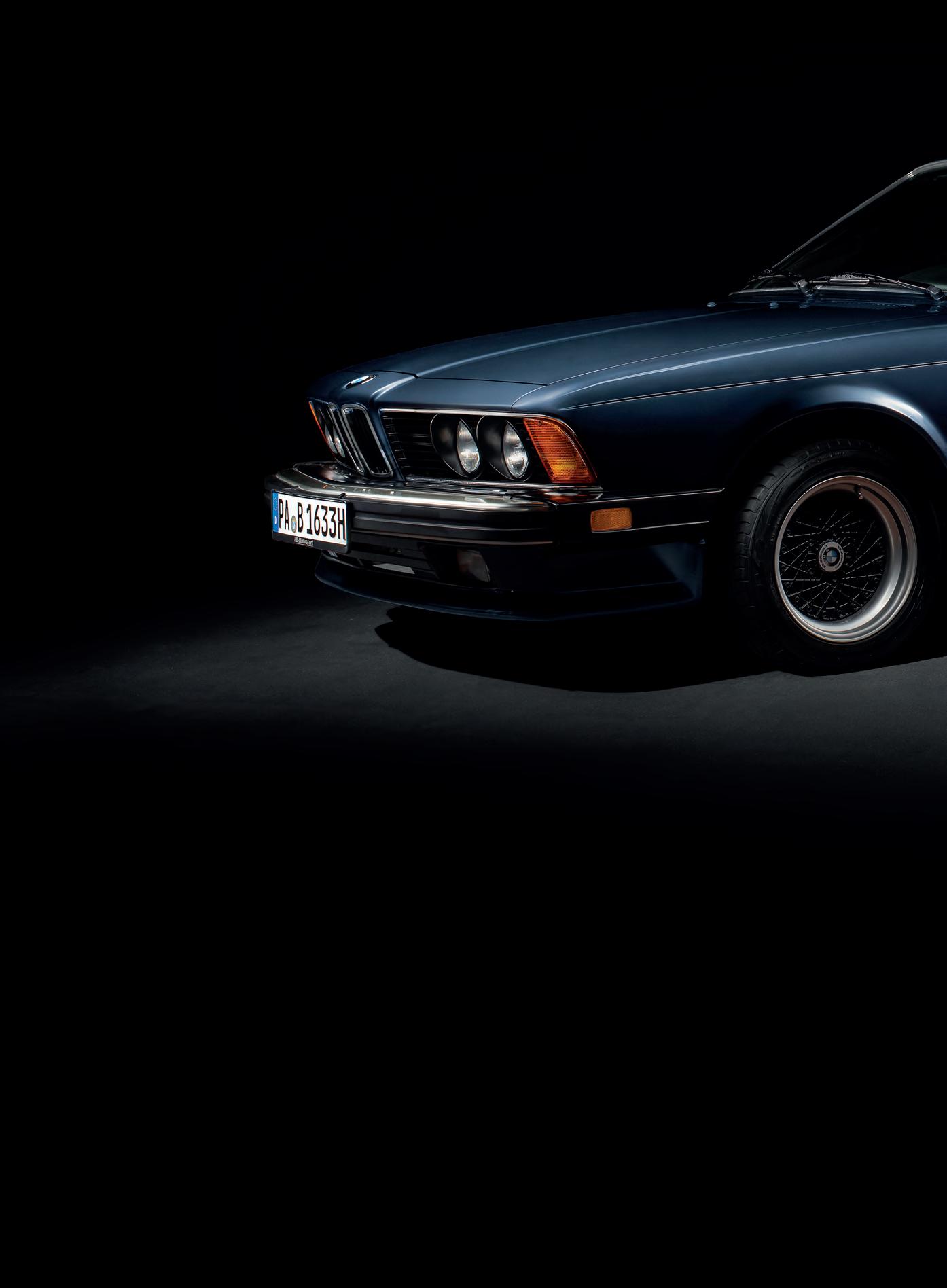
from him and still have it today. It came from Los Angeles, where a balcony fell on it during an earthquake. The damage was not extensive, but because the BMW was in bad shape when it came to me, I had it restored. It was originally silver with a red centre. Today neither the body colour nor the interior match. I have the factory made interior, I kept it, but it was so worn that I decided to replace it. I also kept the period BBS rims my neighbour used to drive the car - I liked them a lot at the time, but today I understand they are way too big for this car. I put them on for this album - they remind me of the beginnings of my collection. Today I would refurbish the car bringing it back to its original state, but at that time I did it myself as good as I could, so I liked it. Well, mistakes of the past.
I also have the original meter in the garage. Not everyone knows that there were two years in the US history when the speedometers of cars were scaled to the maximum speed valid in the fastest driving state, i.e. eighty-five mph. Helmut replaced the meter here with a standard one but did so without consulting me. The speedometer was admittedly broken and impractical, but I did not want to Europeanise this BMW. Such a detail was a curiosity, but it is enough to repair it and fit it back in.
I overhauled it in Poland with a good mechanic, but because he took care of it after his regular working hours, the overhaul took nine years. That does not change the fact that he did the job so well that even Helmut was impressed.
I did not foresee that the whole thing would take nine years. After only three years I was already looking forward to the end. I started looking around for an E24 but, unusually, I liked the American version better than the European one. The wide bumper did not suit me visually in the 5 Series, but in the 6 Series I liked it. It added

a bit of a gangster feel. This car brought to my mind Eddie Murphy, who had a ’Six’ like this. Such a car was popular with celebrities. Tina Turner, Mike Tyson and Jane Seymour each had an E24.
As for the gangster character, this is one of two cars in my collection with a criminal past. A Mexican gang used this BMW. Most probably, they were transporting drugs in it, as evidenced by a compartment hidden in the rear seat. My mechanic removed this stash, which I regret. Today I would have kept it because it testified to the past of this specific car copy. The neighbour who had this car before me had bought it at a police auction, but he did not know about the hidden locker. The car was auctioned after confiscation.
Gang wars, an earthquake, years of immobilisation, the inauguration of a fantastic collection - this BMW has survived it all. If Hollywood wanted to make a film starring the car, the finished script and dream candidate are already there. Today, the ’Six’ is used for everyday driving, but only on nice days. The excesses are enough for her, so let her stay that way. She drives fine.




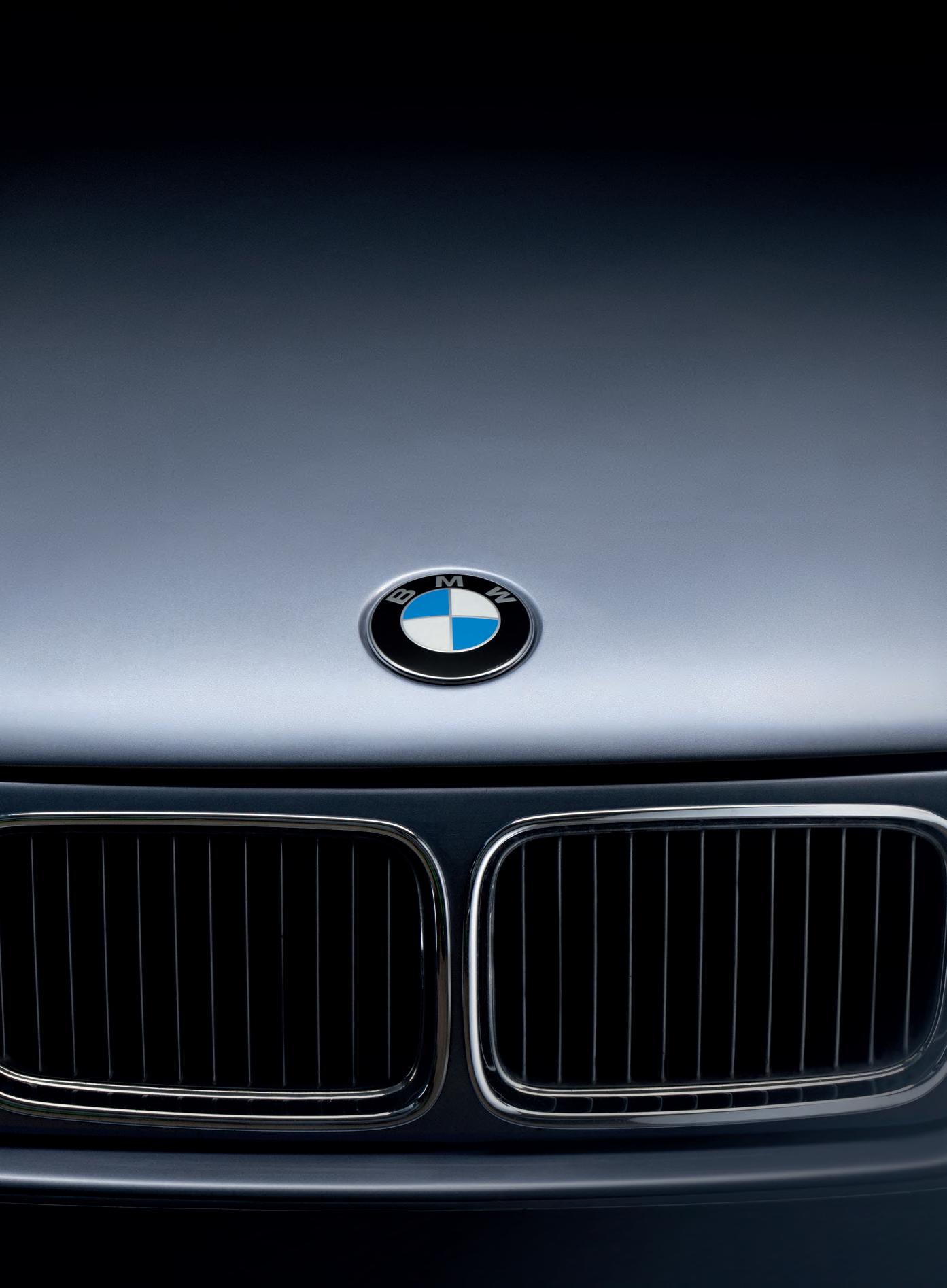
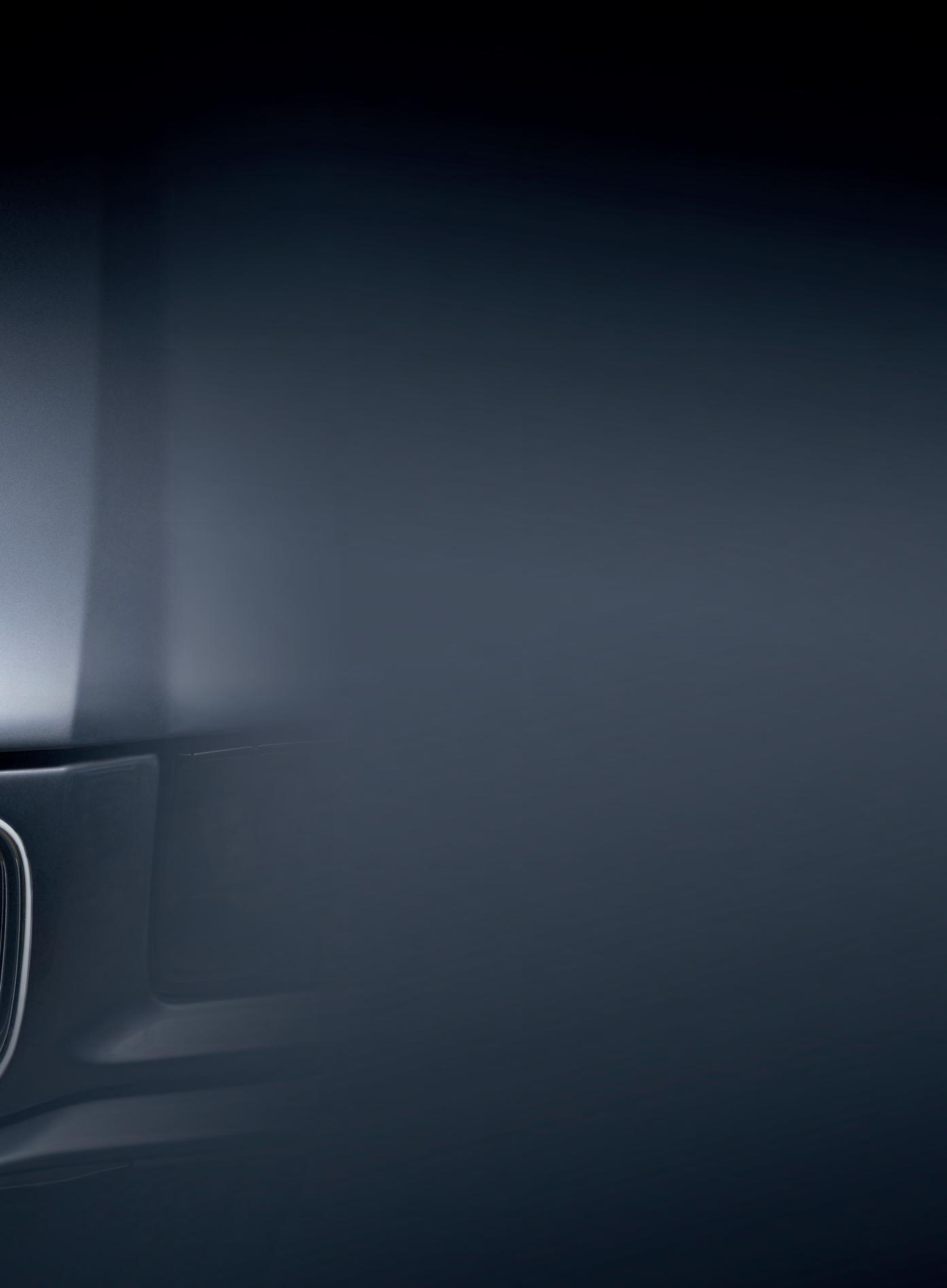





- This car has no collector’s value. I bought it for my children, technically it is perfect and up to date.
Passion is a beautiful thing. It is even more beautiful when the next generation takes it over from us. What is the easiest way to instil a love of BMW in your children? Just buy them a BMW. The rest will do itself.
The E36 is the third iteration of the 3 Series. It was launched in 1990 and its production continued for nine years. Customers could choose between sedan, station wagon, convertible, coupe and the hatchback known as the Compact. In this case, we are dealing with a coupe. The car was built in 1997 as one of 9971 units with the 318is signage. Under the bonnet there is a 140-hp engine capable
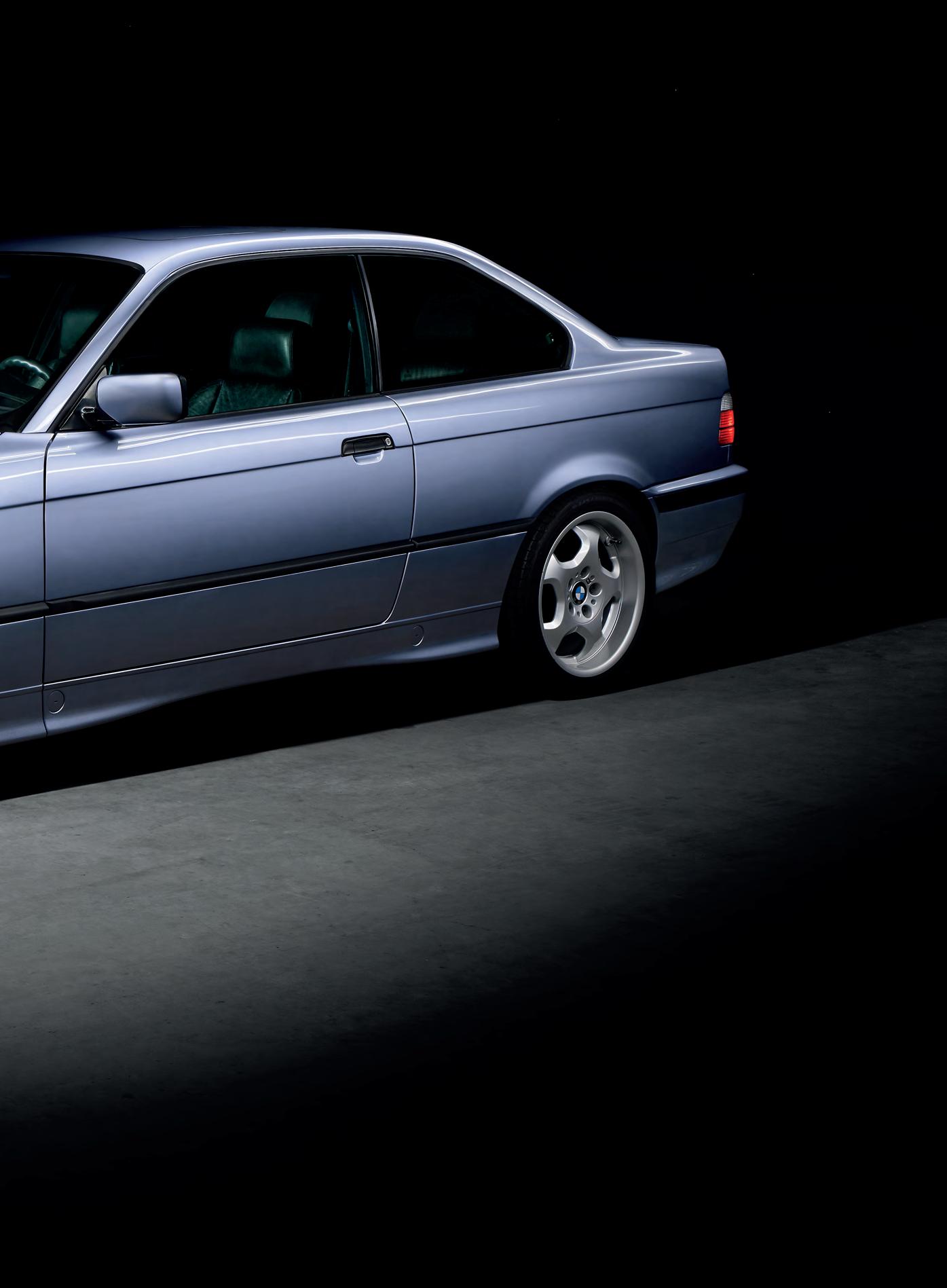
of reaching 100 km/h in 10 seconds and accelerating to 214 km/h. This was not the maximum BMW could afford, but it was enough to keep pace with the feisty versions of rival brands’ models.
The car seen in the photos was created based on the BMW 316 bodywork and equipment, along with the mechanics taken from a rusty BMW 318is. Although, as already stated, it has no value from a collector’s point of view, it has played a significant role in the lives of both the owner and his kids. Thanks to this car one can be sure that the family passion will continue.




DESIGN
PIOTR LECZKOWS KI
PHOTOS
ARTUR NYK ARTURNYK.PL PIOTR LECZKOWSKI LECZKOWSKI.ART
POSTPRODUCTION
GOSIA KLOSOWSKA ARTUR NYK PIOTR LECZKOWSKI
COPY KUBA PILCH
TRANSLATION dr ALEKSANDRA NIEMIRYCZ
PRODUCTION AND PRINTING WWW.F ORMACJA.PL







